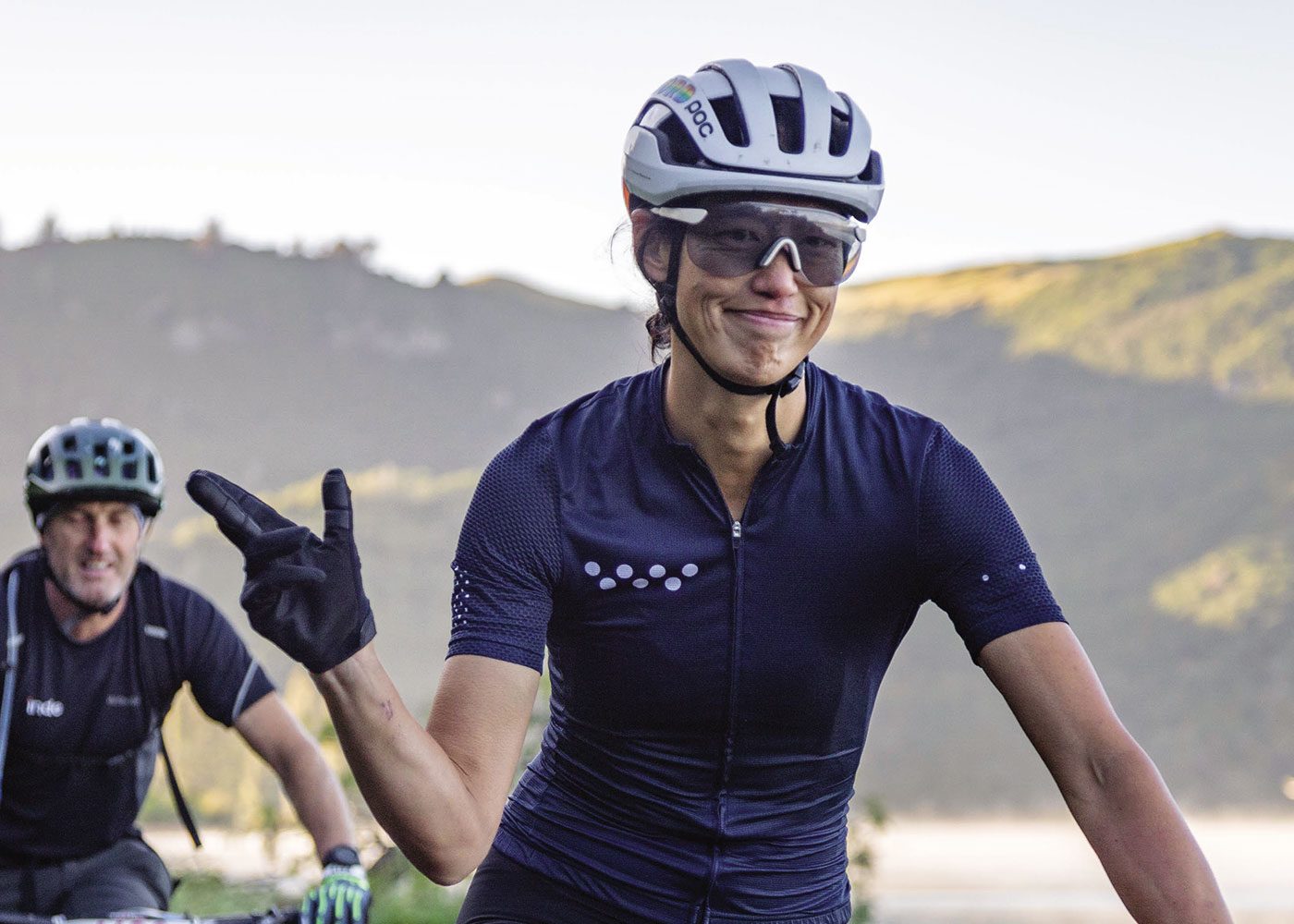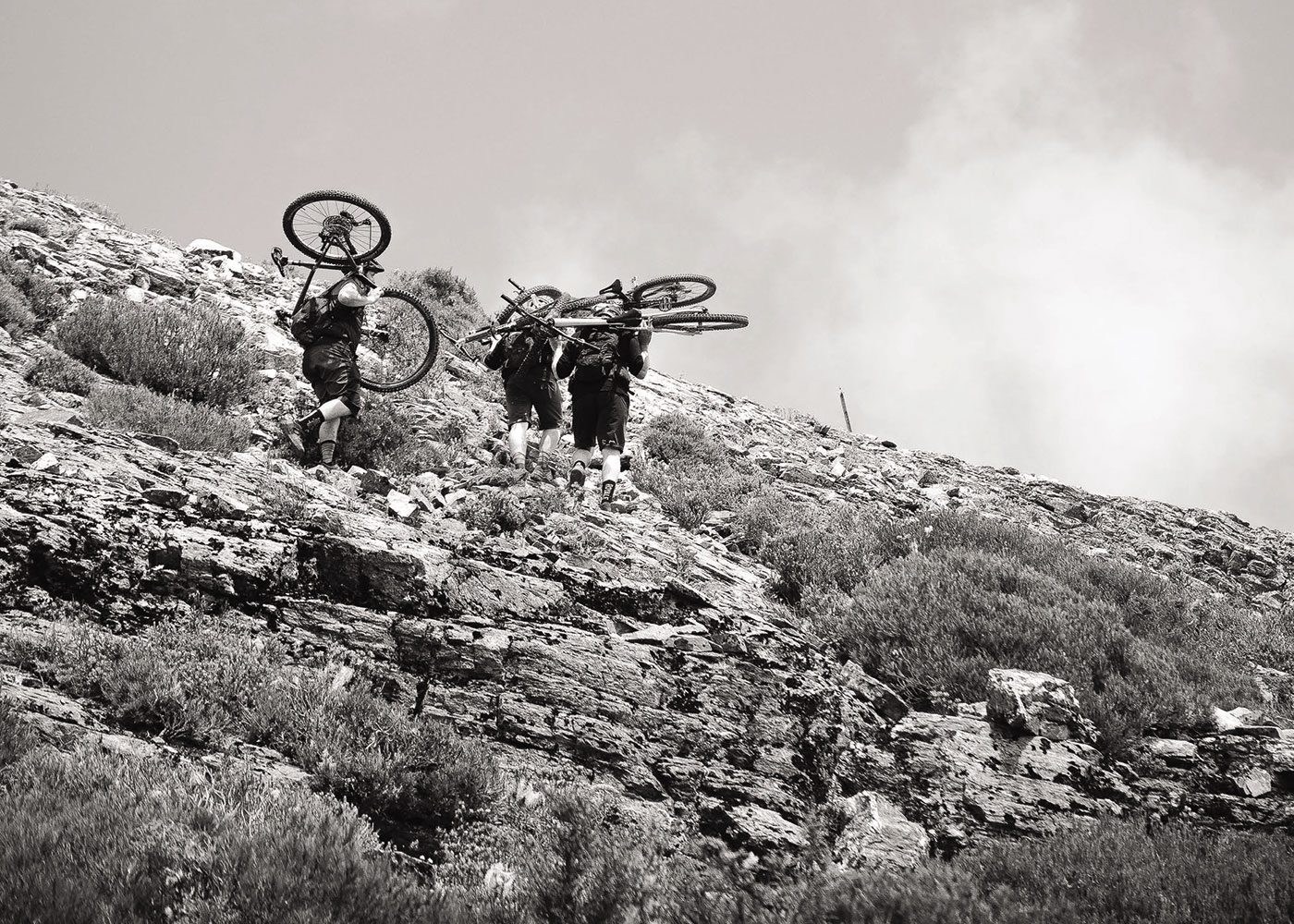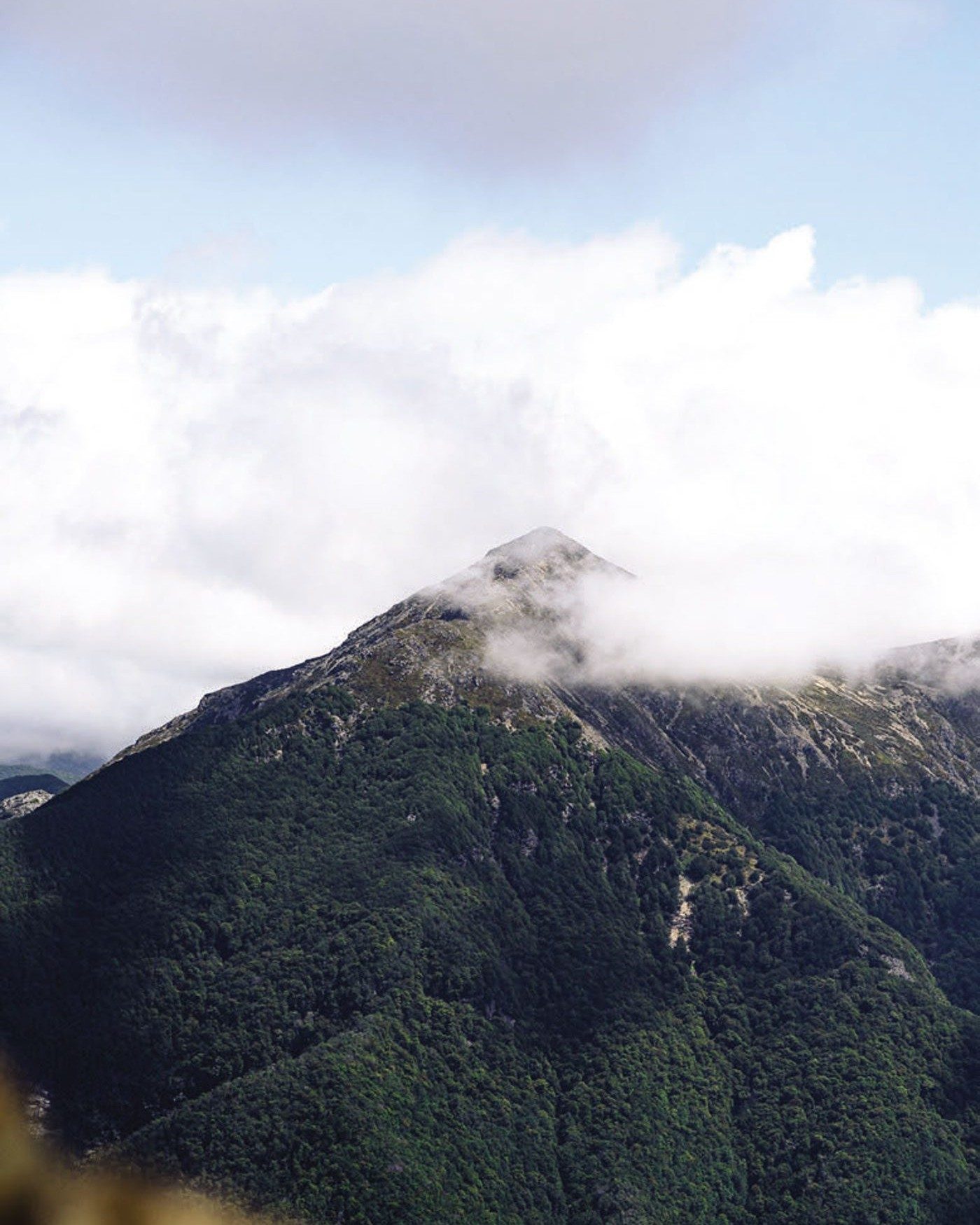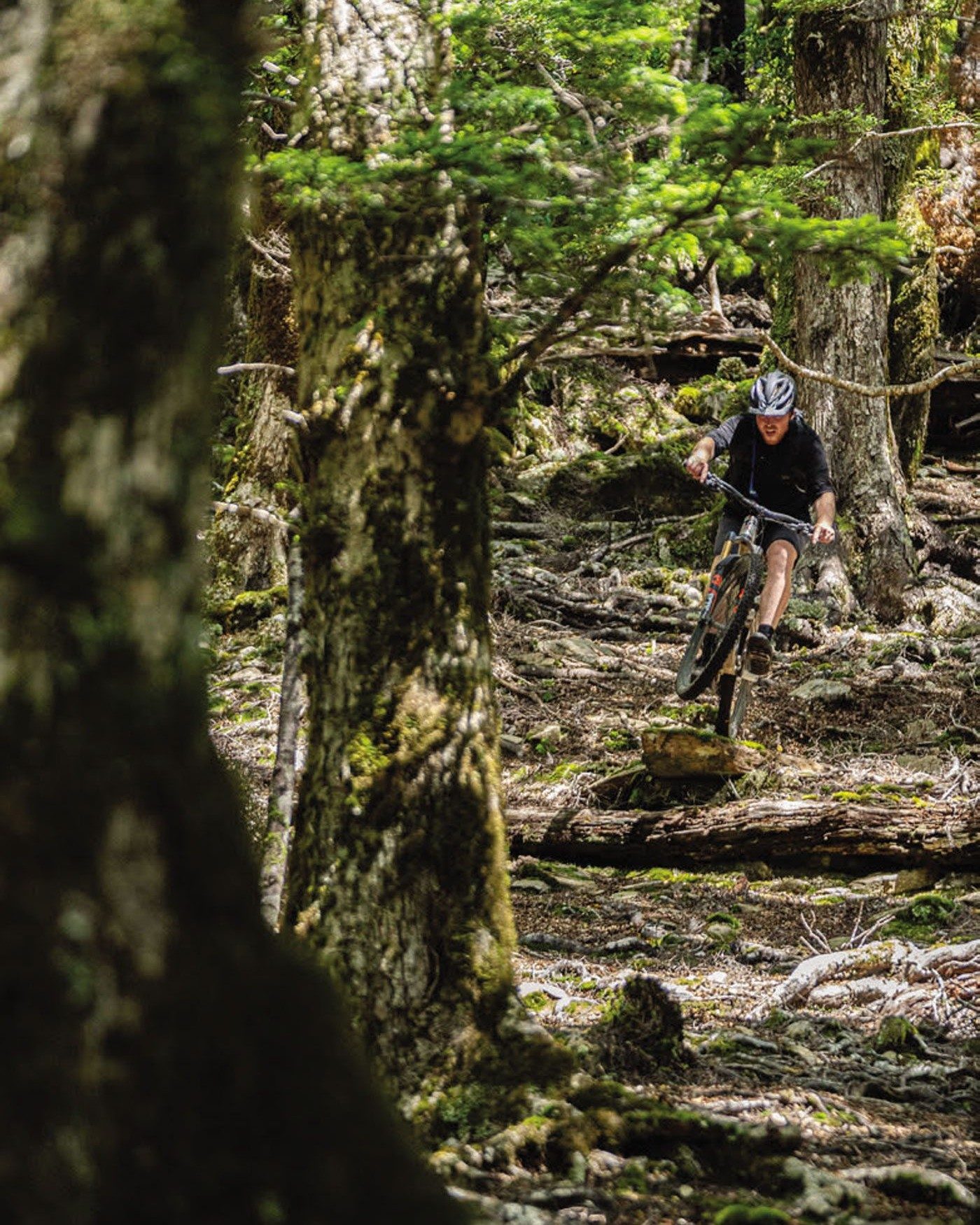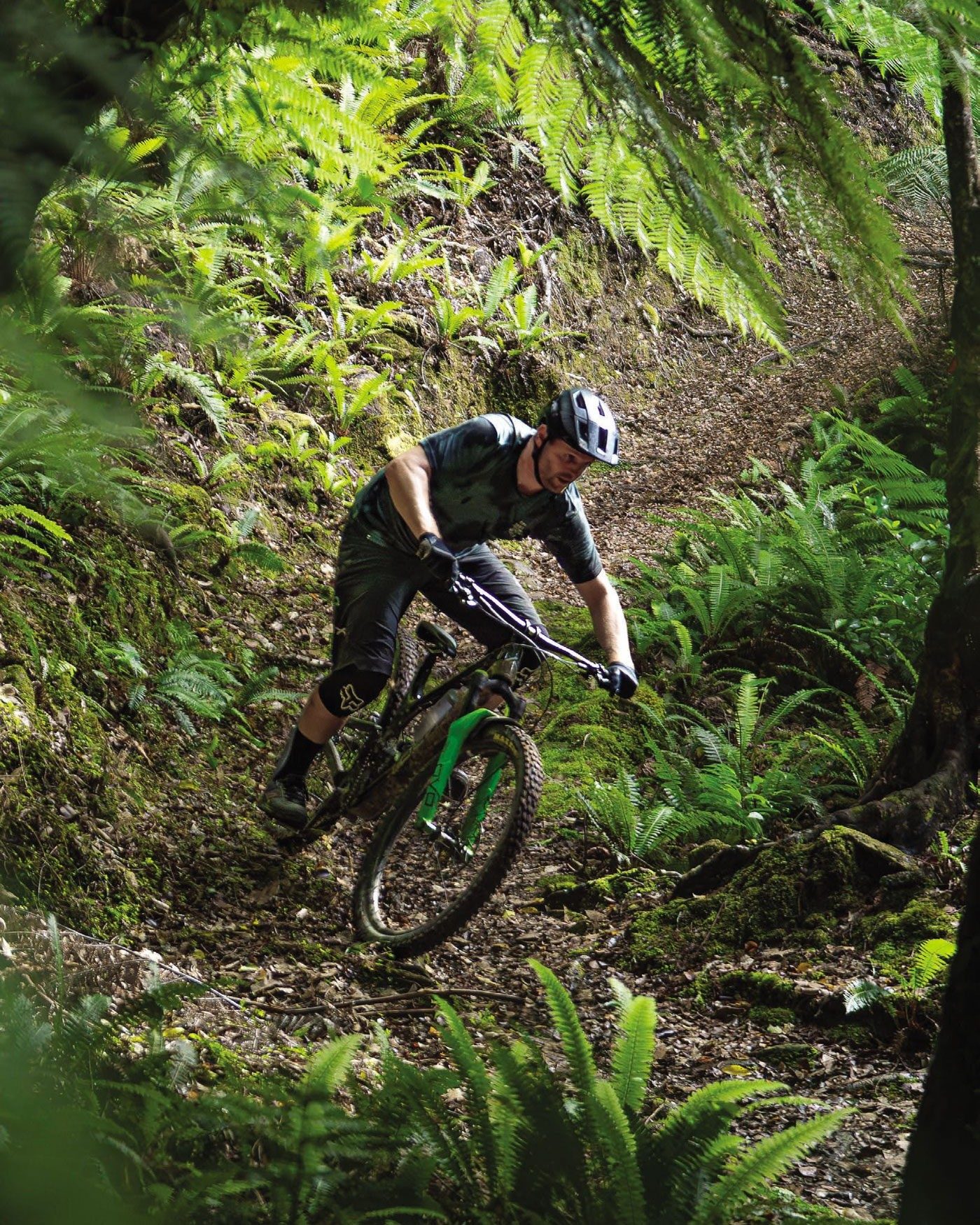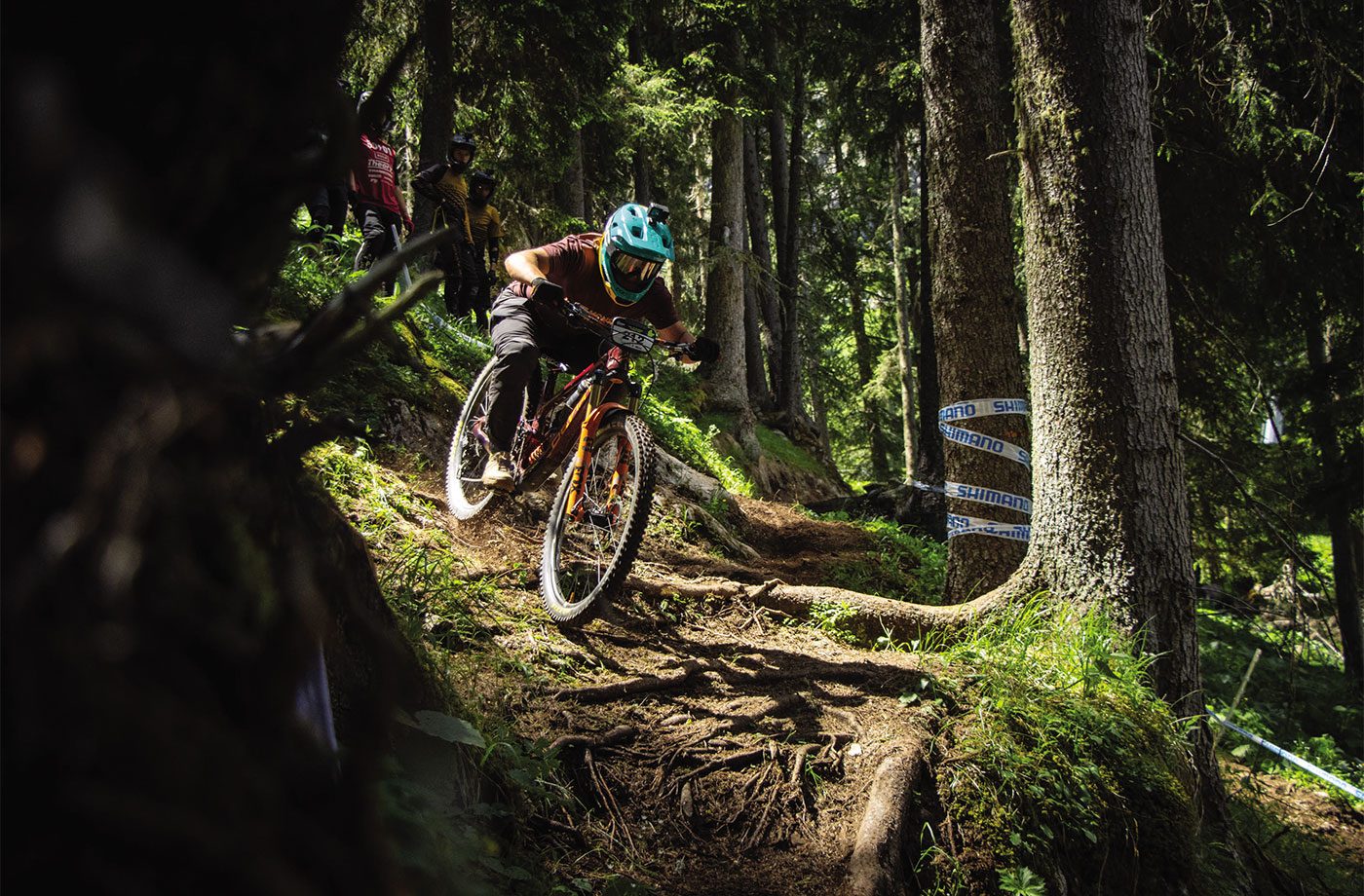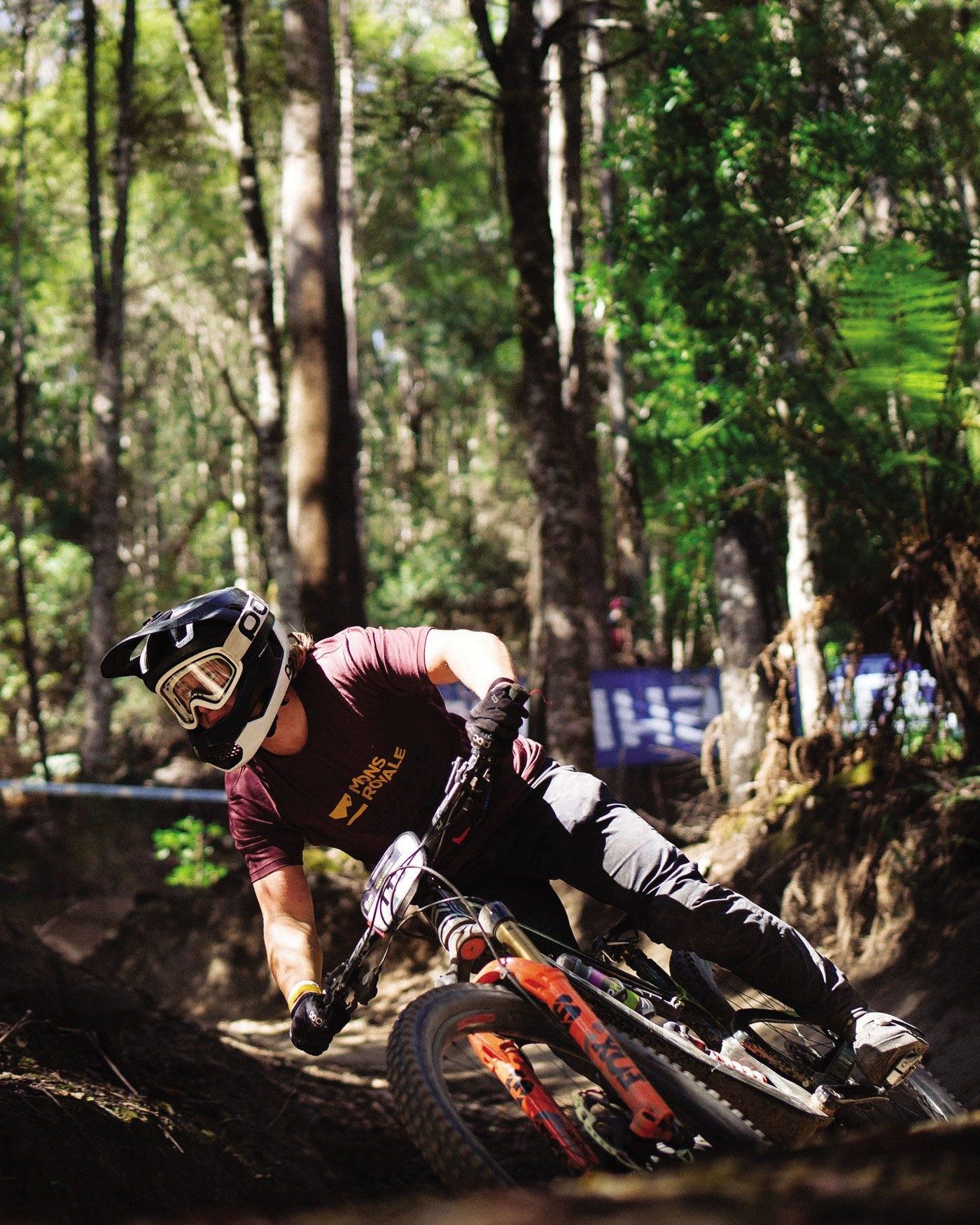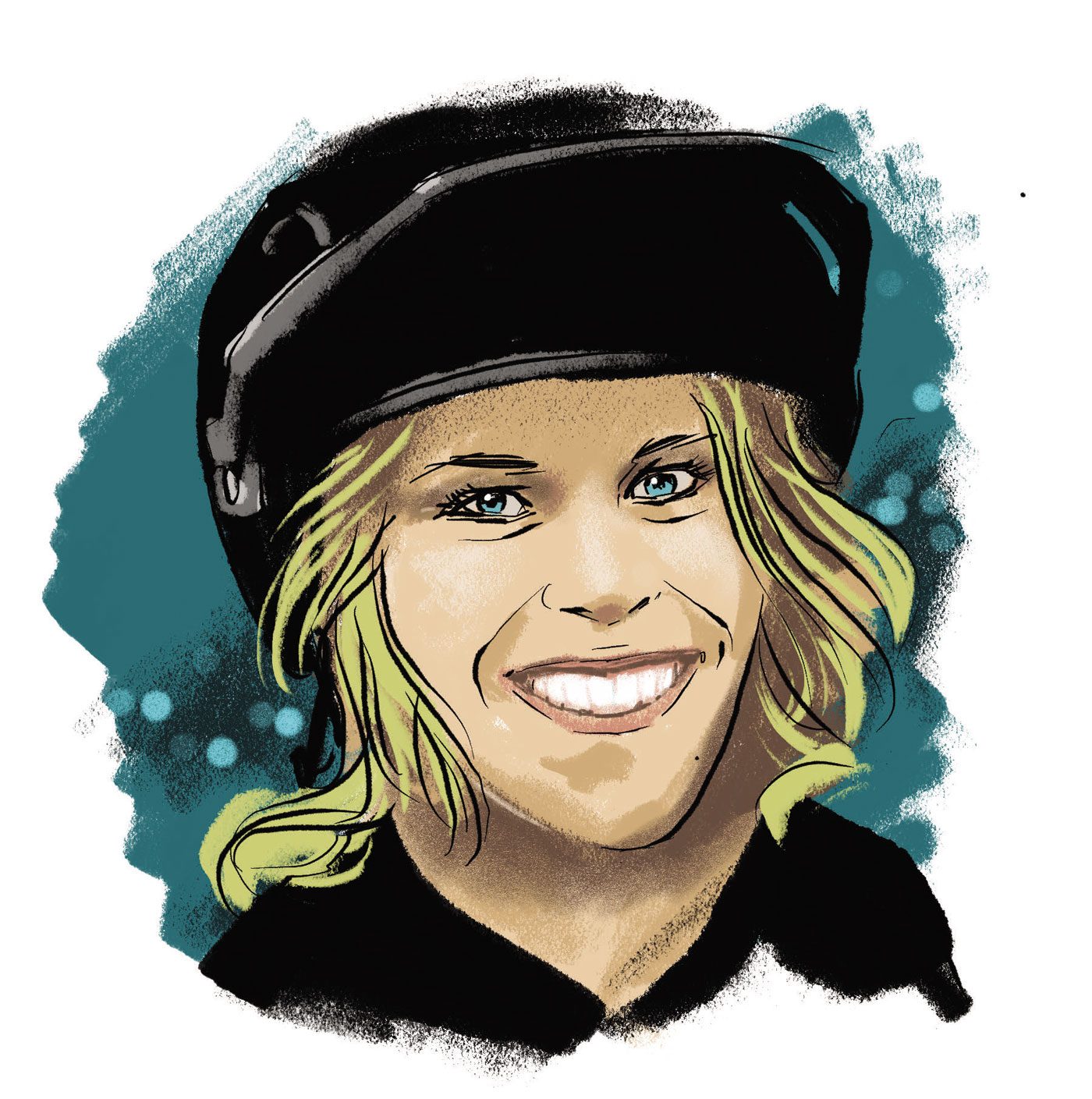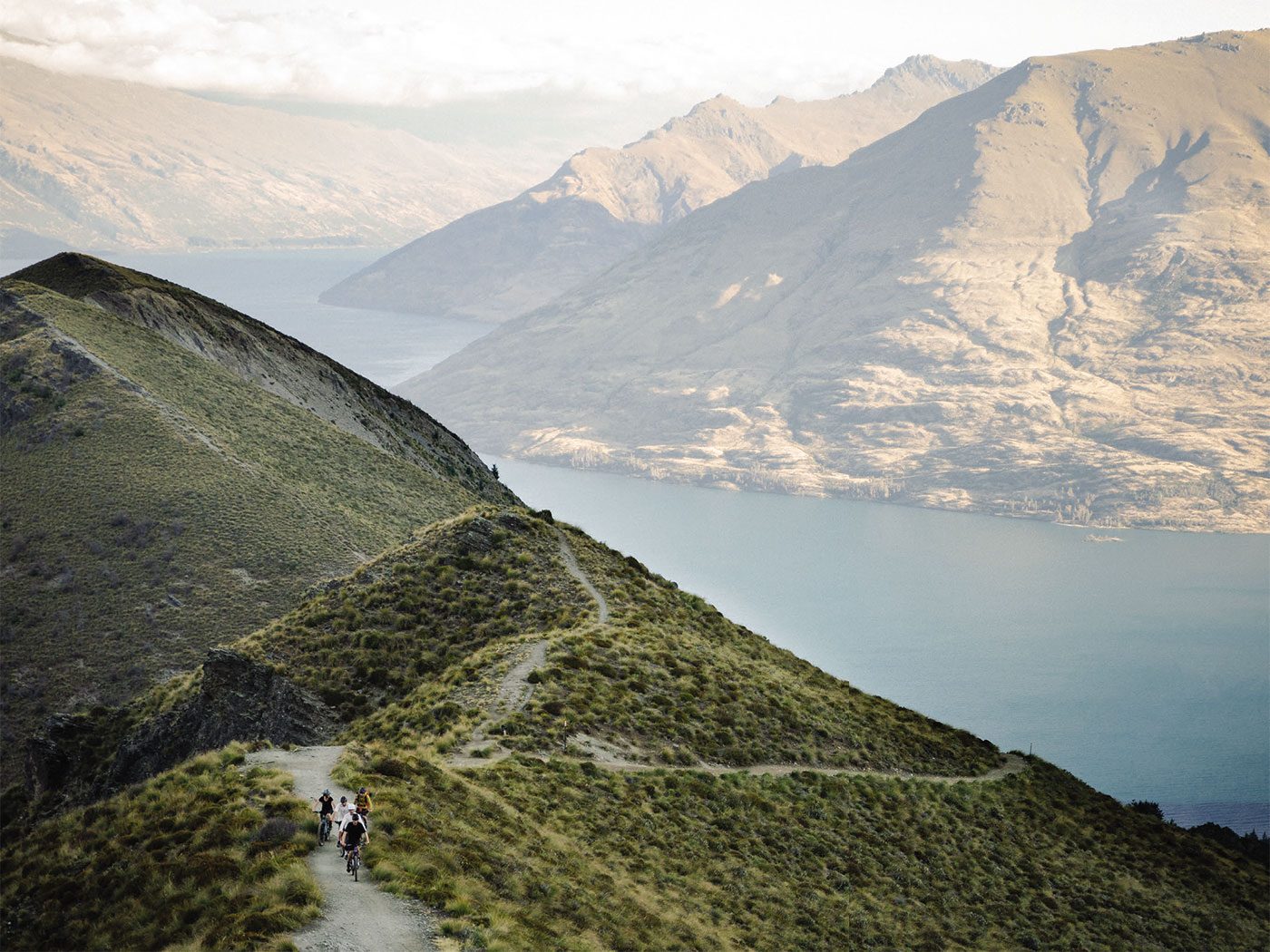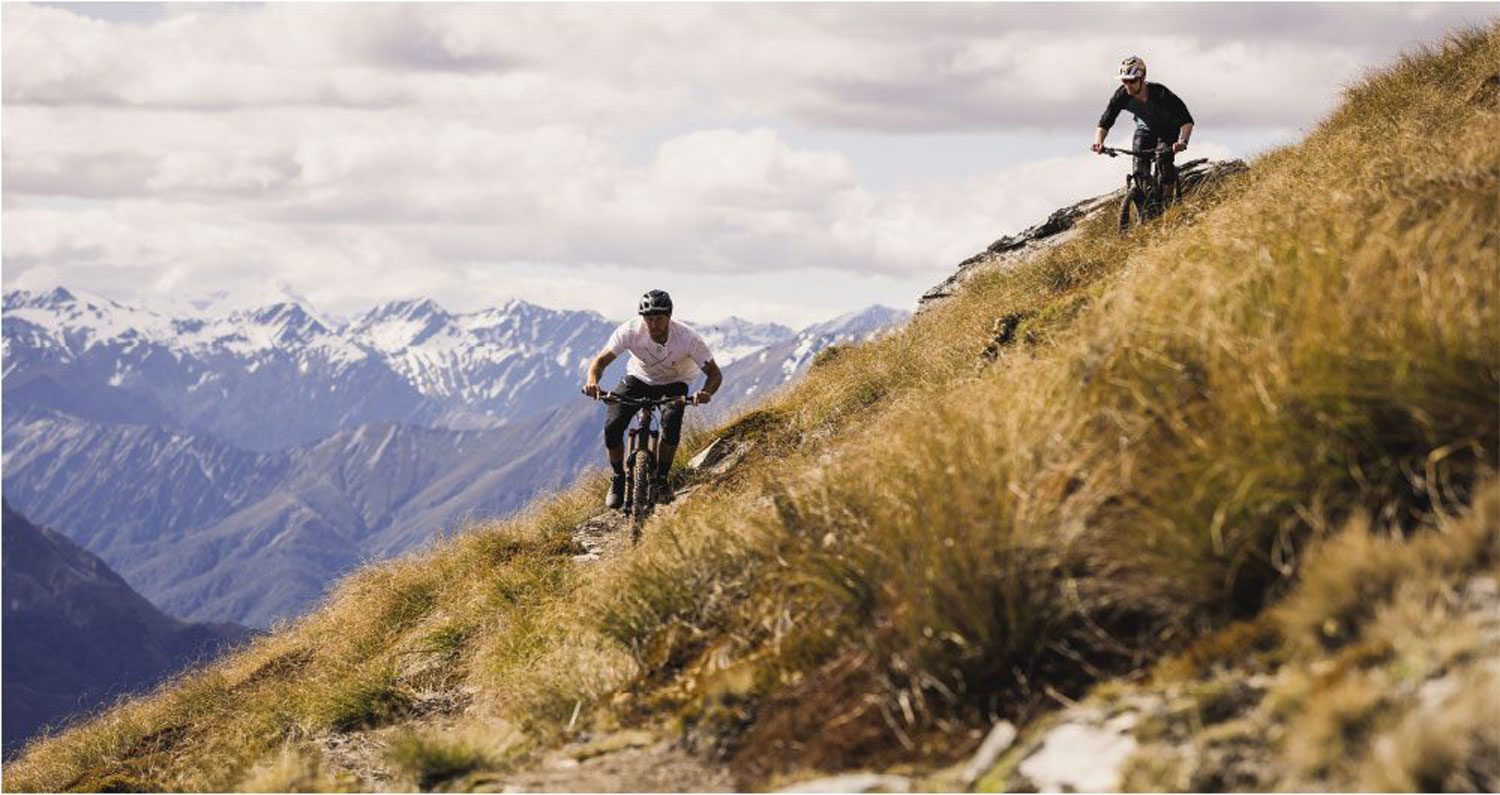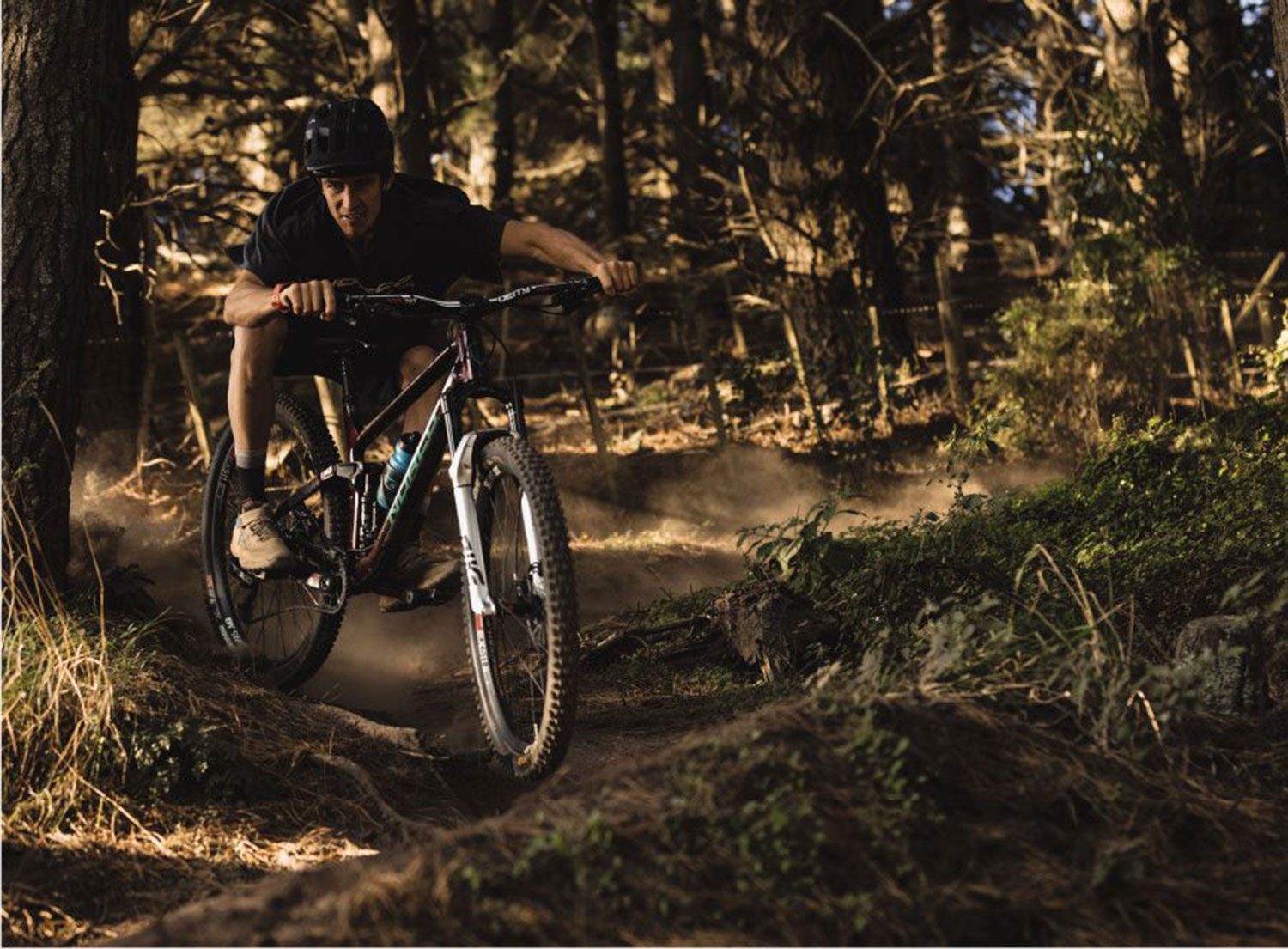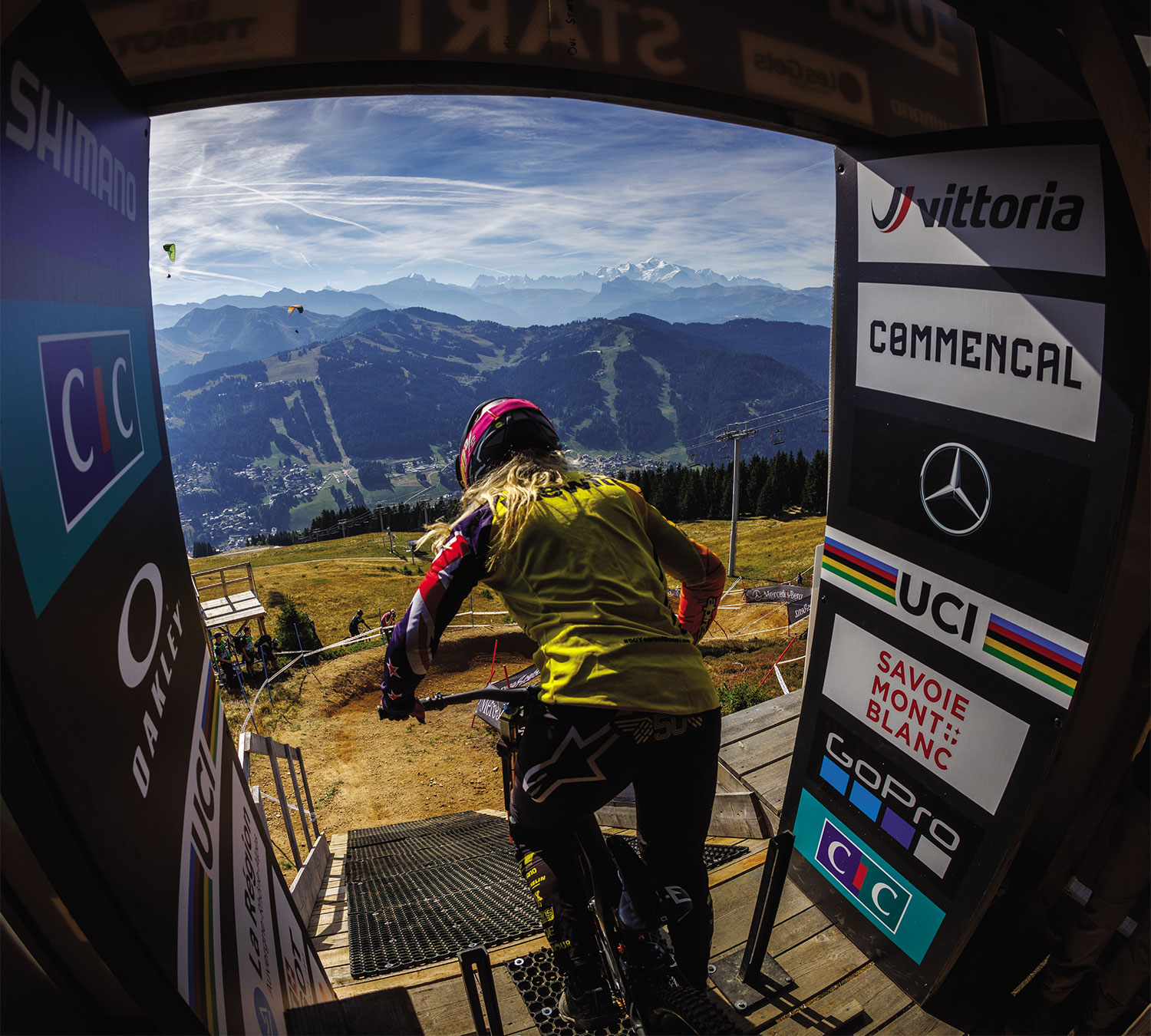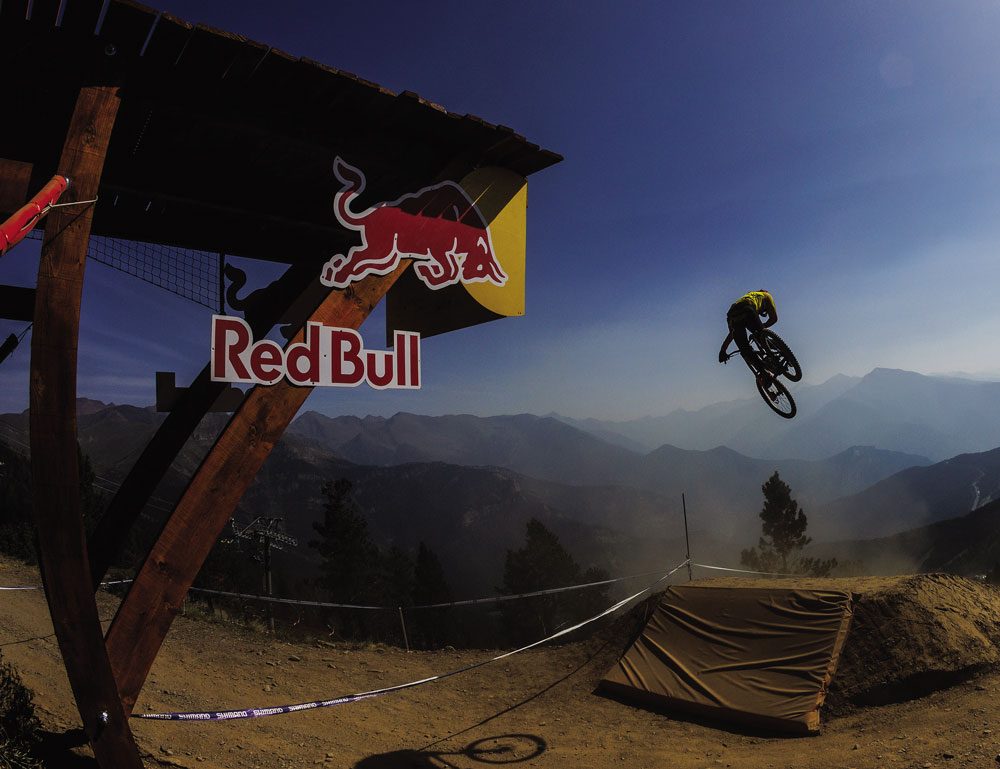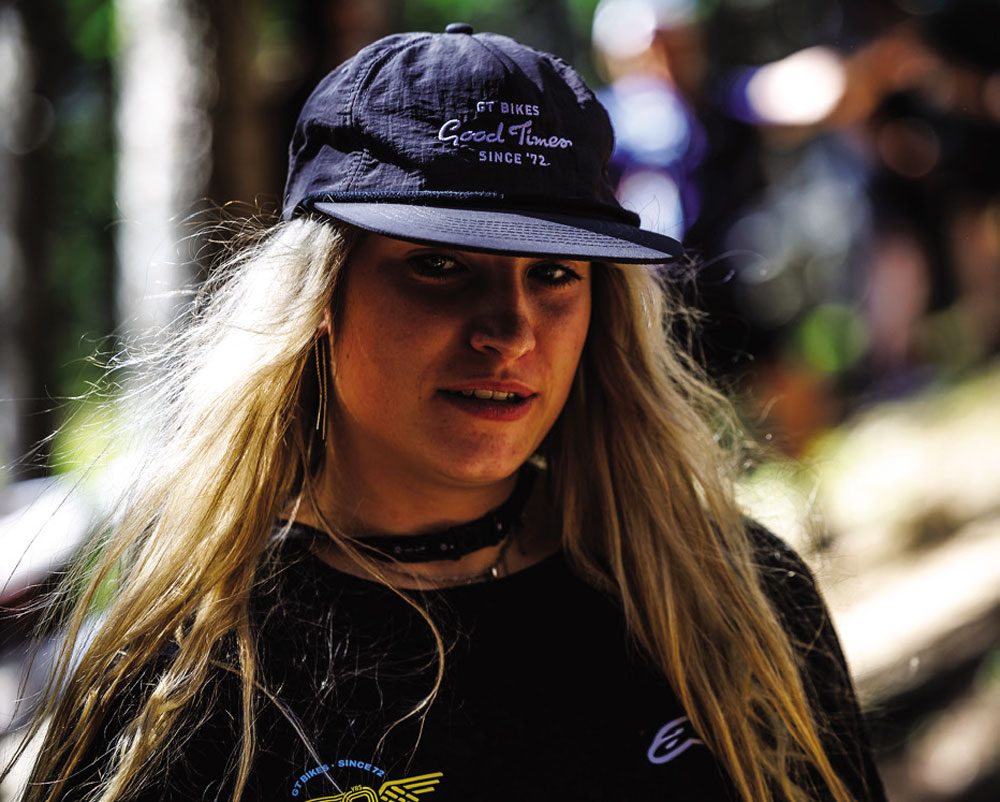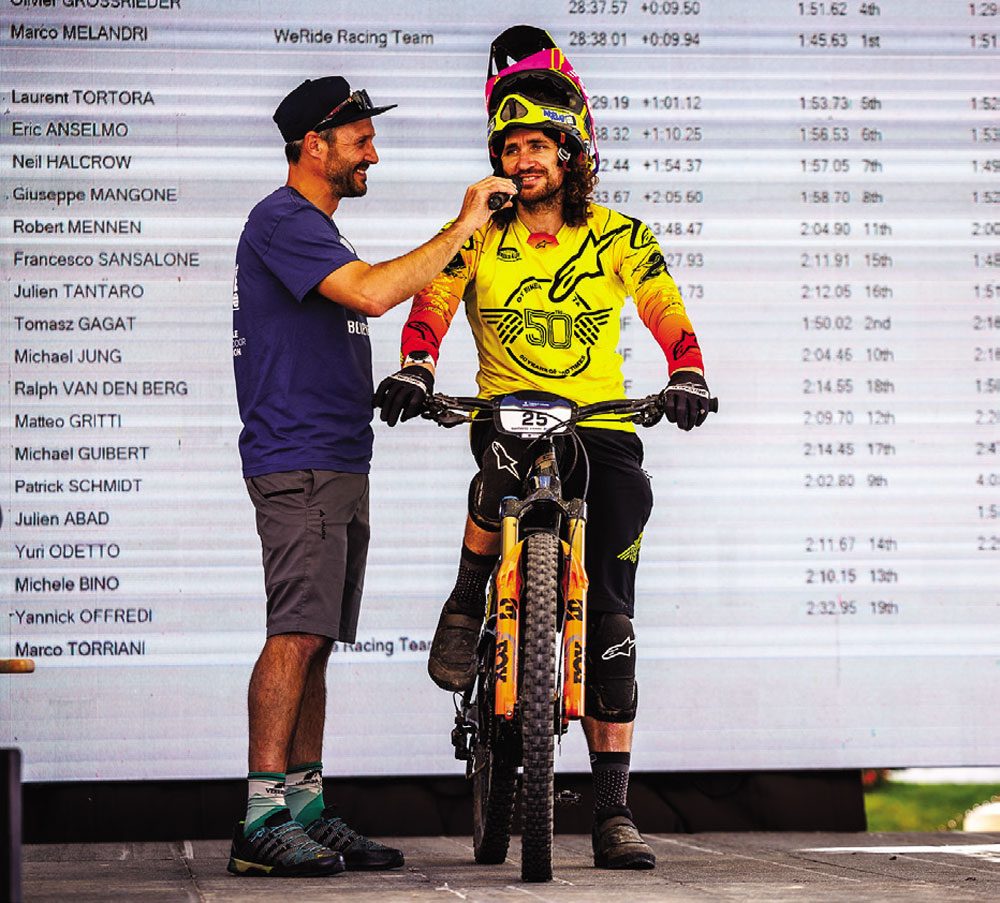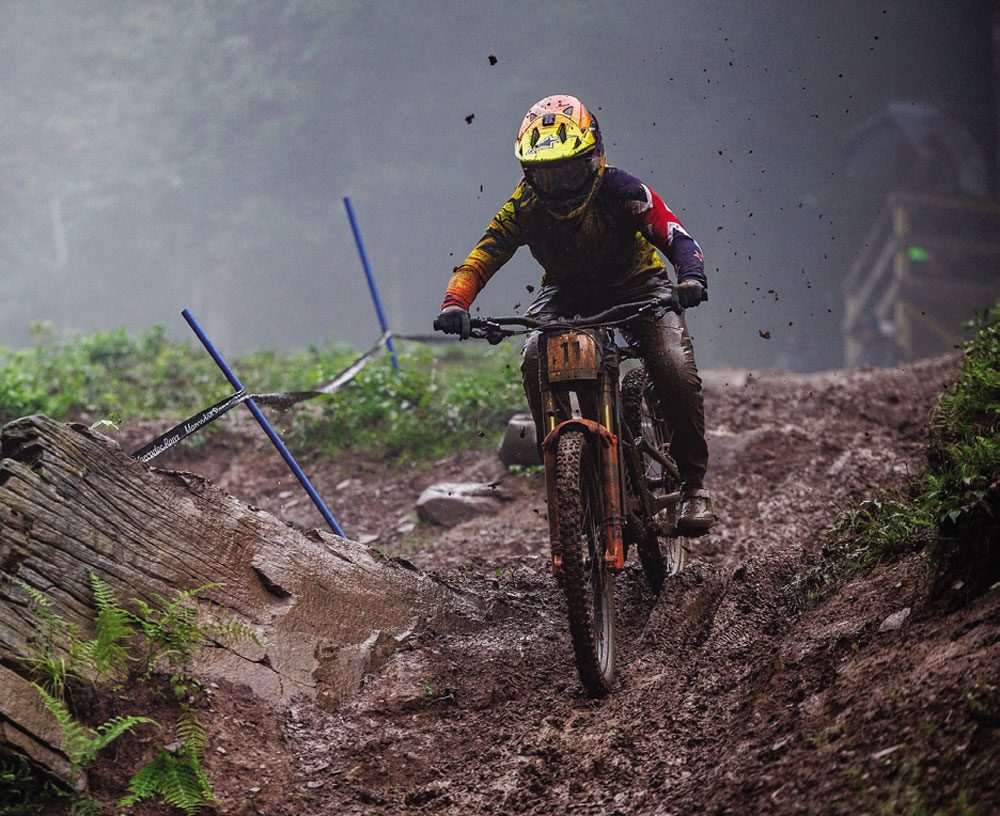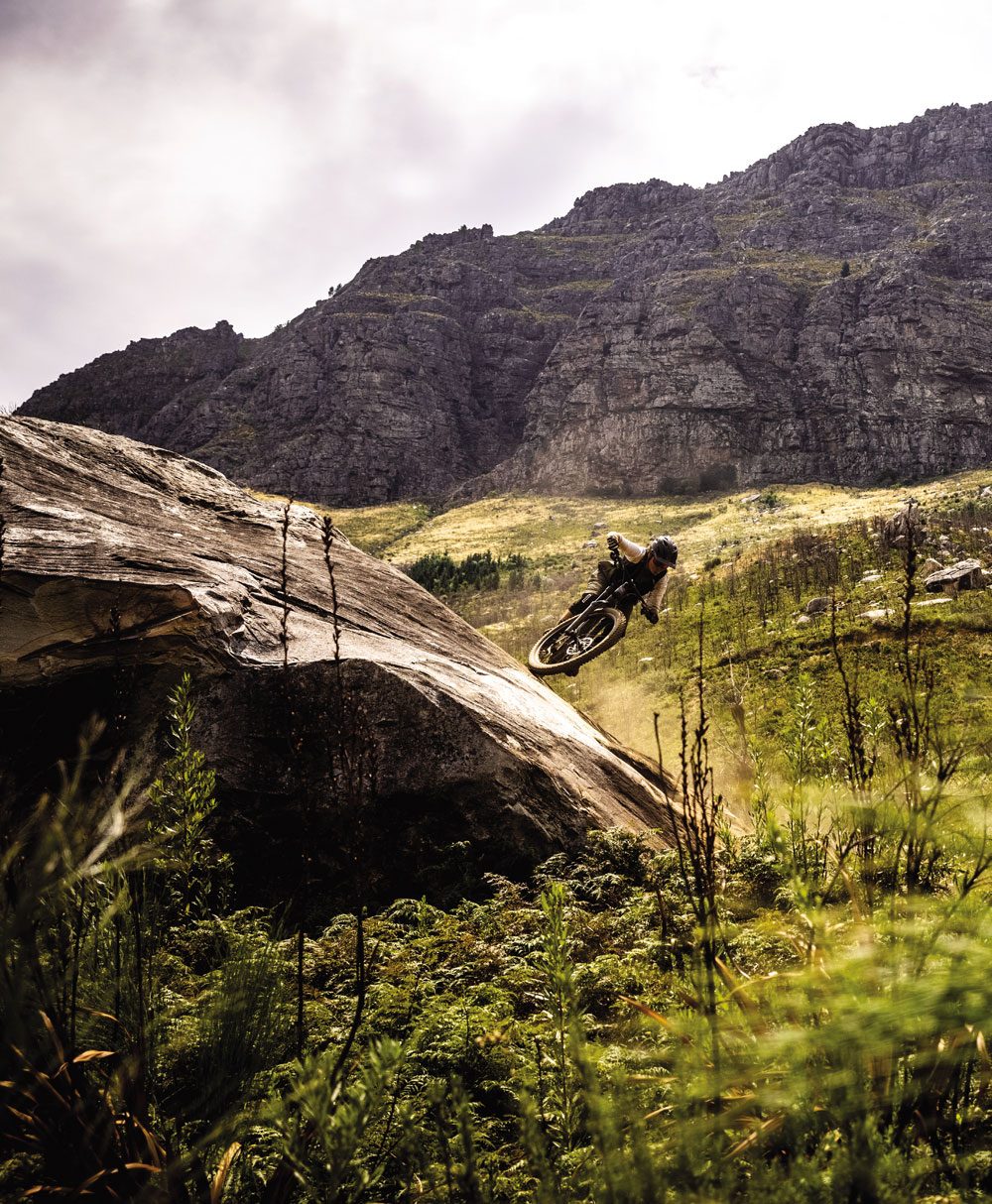The engine inside: Redefining the impact of bicycles
WORDS: DAISY MADDINSON
PHOTOGRAPHY: DAVE MACKISON
Narrated by the legendary voice of cycling, Phill Liggett, The Engine Inside is a captivating feature-length documentary that weaves together the extraordinary stories of six everyday people. Through their experiences, the film unveils the remarkable power of the bicycle to promote profound change in our lives and communities. One of the documentary’s writers, Daisy Maddinson, shares how the film hopes to spark a feel-good revolution on two wheels.
Beyond the traditional portrayal of cycling as a sport or recreational activity, we don’t often give the bicycle much thought. Some might use it to get from A to B or commute to the office, but have you ever seriously considered the deeper impact of swinging a leg over?
The Engine Inside goes deeper, exploring the often-overlooked potential of this 200-year-old machine. Through the stories of six everyday people using the bicycle as a tool, the documentary delves into the significance of cycling in helping solve various global issues, including physical and mental well-being, socioeconomic inequality and climate change.
As writers, we wanted to go beyond the surface of cycling and showcase the true essence of the bicycle and its transformative power. In the development stage, every story we uncovered touched us deeply. We met people who faced daunting personal and systemic challenges head-on—from generational trauma and economic barriers to women’s equity and motor vehicle collisions—who have all found hope in the simple act of riding a bike. Their determination to overcome adversity through cycling left us humbled and even more inspired to use storytelling to spread the “bike gospel”.
By sharing the journeys of these everyday people from all walks of life, the film challenges anyone who watches it to reevaluate their own perspective on the transformative power of the bicycle.
The world can feel big and ugly sometimes. With so many converging social and environmental problems, the weight of the world can be overwhelming. We think, how can we as individuals change anything? And what use is one small action when the problems are so large? After watching The Engine Inside, we wanted the audience to ask themselves: Can an act as ordinary as riding a bike truly unlock strength and resilience within us all?
The documentary urges us to see the bicycle as more than just a means of transportation or a way to enjoy the great outdoors. It shows us how riding can act as a catalyst for change. It shows us that small actions do make a difference.
Our hope is that The Engine Inside will prompt anyone who sees it to change their view of cycling and embrace the transformative power of the bicycle and the engine inside us all. We can build a better world, one pedal stroke at a time.
Film release coming late 2023.
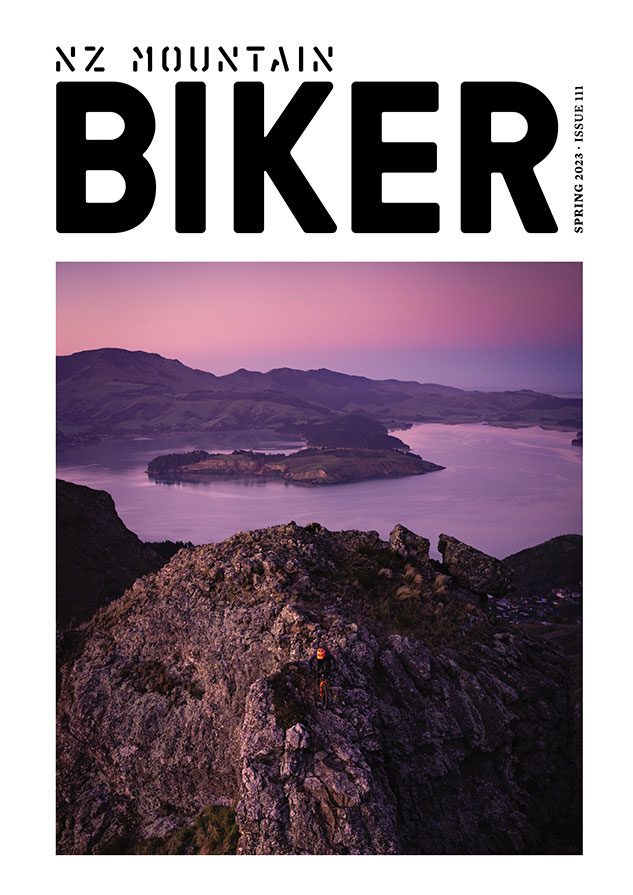
The Royale with Cheese
Words & Images: Jake Hood
PART ONE OF TWO
JUST GET YOUR HEAD DOWN AND GET ON WITH IT.
That was the quote from Quentin Tarantino’s Pulp Fiction that was bouncing through my head while we pedaled the last 20km back to Picton. THE ROYALE WITH CHEESE. It seemed like the perfect name for this adventure – a better name than what we’d had before. As we all know, everything’s better with cheese… and what an adventure it had been!
After the success of last year’s big mission in the Richmond Range – ‘Ferry to Fishy’ – we knew we had to do another one but, this time, it had to be bigger. We hadn’t even made it back to Wellington on the ferry before Scotty, Paul and Tom were throwing ideas around, still high on endorphins from the recent mission. The idea that seemed to stick was Mt. Royal; it sounded like the perfect mountain to conquer. Scotty, Paul, and Tom had ridden it before and told me the riding was insane. It had to be done! The name was set: The Royal Rumble – later changed to the Royale with Cheese.
Originally, the plan was to complete this mission within six months of ‘Ferry to Fishy’, but, well, as we all know, life sometimes gets in the way and adventures have to take a bit of a back seat. It wasn’t until December 2022 that the chat group got fired back up and things started to happen. Scotty and I were keen. Evan was also interested but wouldn’t be able to make it. Paul and Tom were very quiet on the chat, not committing. It got to the point where I just committed and booked my flight up to Wellington. This was the catalyst to get the ball rolling and make it happen.
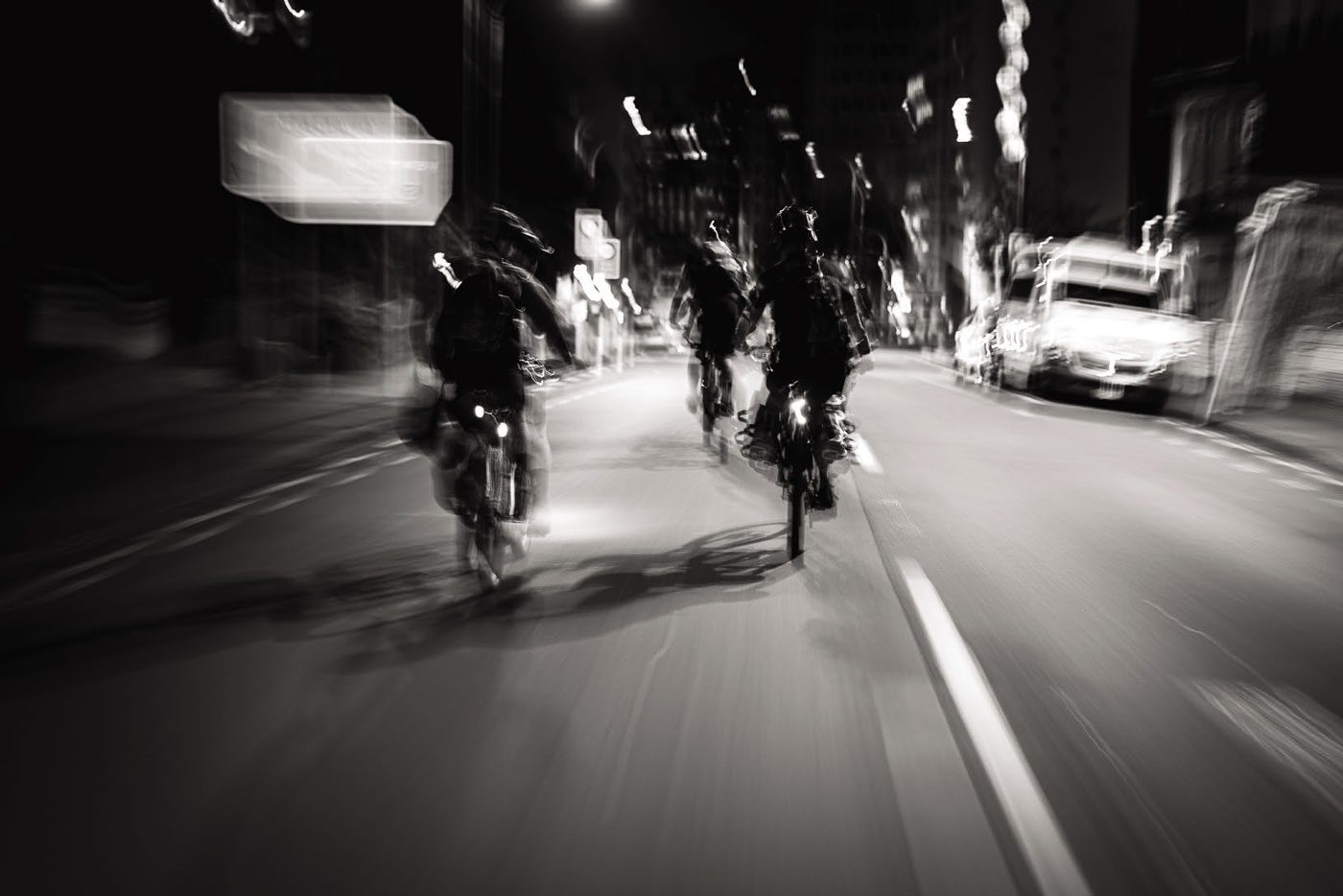
About a week before the flight up to Wellington, I looked at the long-range forecast and it was terrible. Nothing but heavy rain for the whole time we were going to be on the trip. I messaged the group: “Are you sure you want to do this mission still? You should check out the long-range. It doesn’t look good.” Now, I love a bit of suffering, a bit of a bad time, but the idea of riding 70km in the pouring rain to stay in a small DOC hut, ride Mt. Royal, then ride back into Picton in the pouring rain just seemed too much like a bad idea. It would just be a miserable, cold, gross old time. “I’m not against just coming up to Wellington for a tour de brunch this weekend,” I told the others.
There was chat in the group about sacking it off due to the weather, but we just kept an eye on it all week. We would decide closer to departure time what we were going to do. A couple of days before, we just decided that we were going to do it, come rain or shine. Heck, if it was wet, it was going to be wet. Just get your head down and get on with it.
I flew up to Wellington on Thursday (2nd Feb), landing early afternoon and giving me just enough time to get all my last-minute stuff sorted for the trip. A new jacket and dehydrated meals from Coffee Outdoors, a few bike things from the legends at Get Lost Cycling, and some frame bags from Caleb. Scotty picked me up from Get Lost and we headed back to his house to eat our weight in carbs for this mission, and get an early night for the 12.30am start.
Sleep is something I struggle with, and that evening was no exception. The excitement of what lay ahead kept me up; the not knowing of how it was going to go. I love this stuff.
The energy levels were high and the chat was pretty punishing (in a good way).
I LOVE THIS STUFF
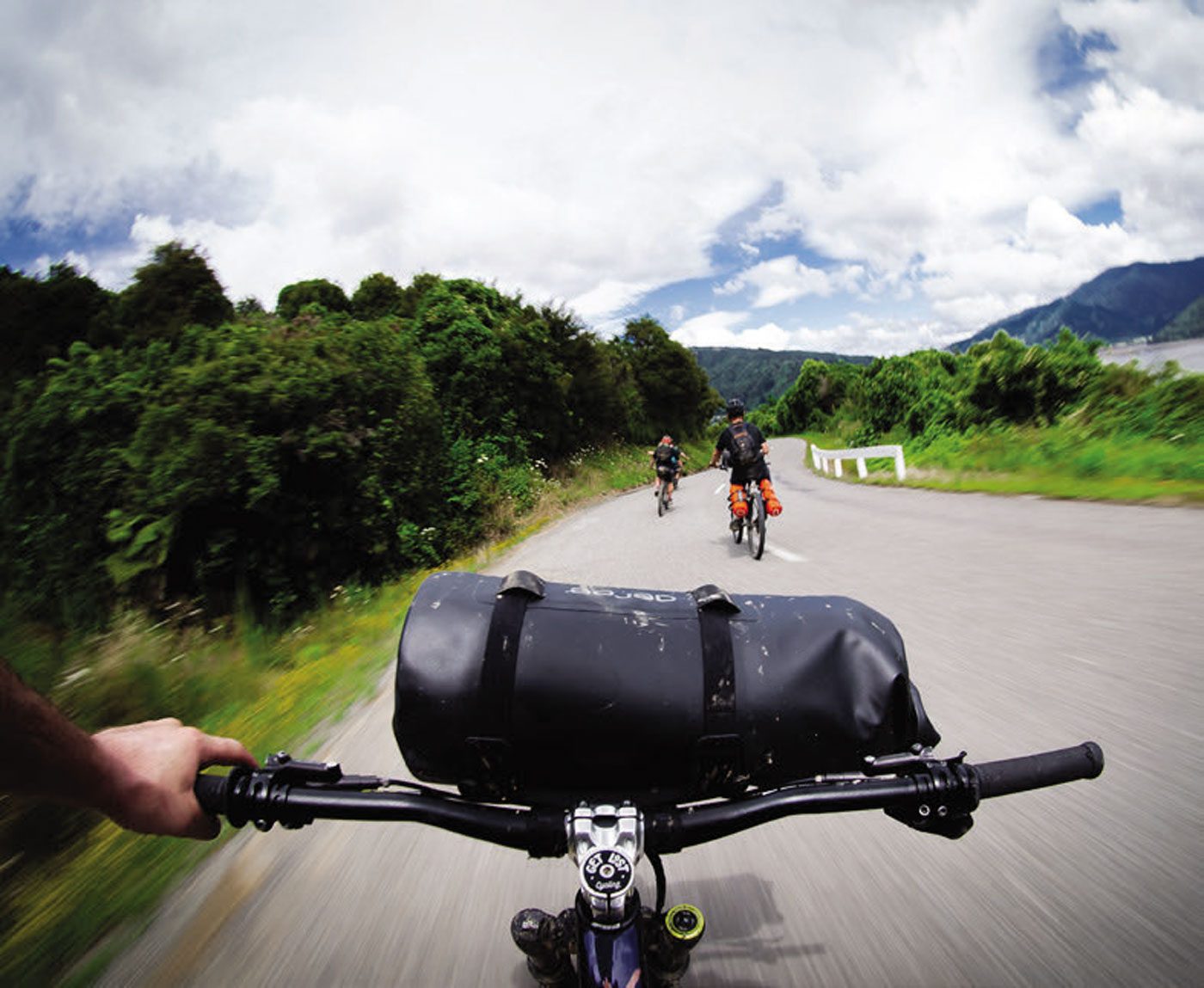
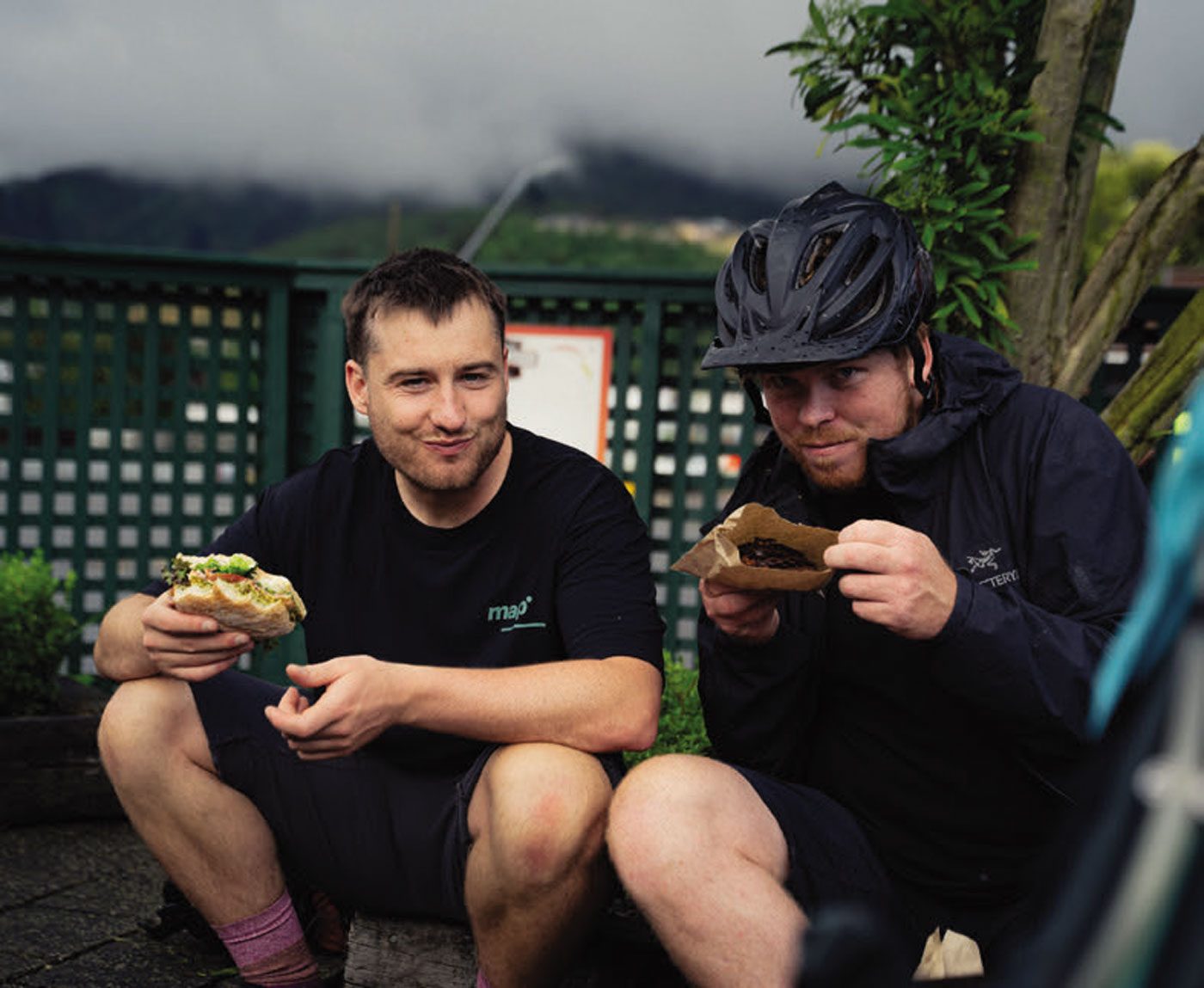
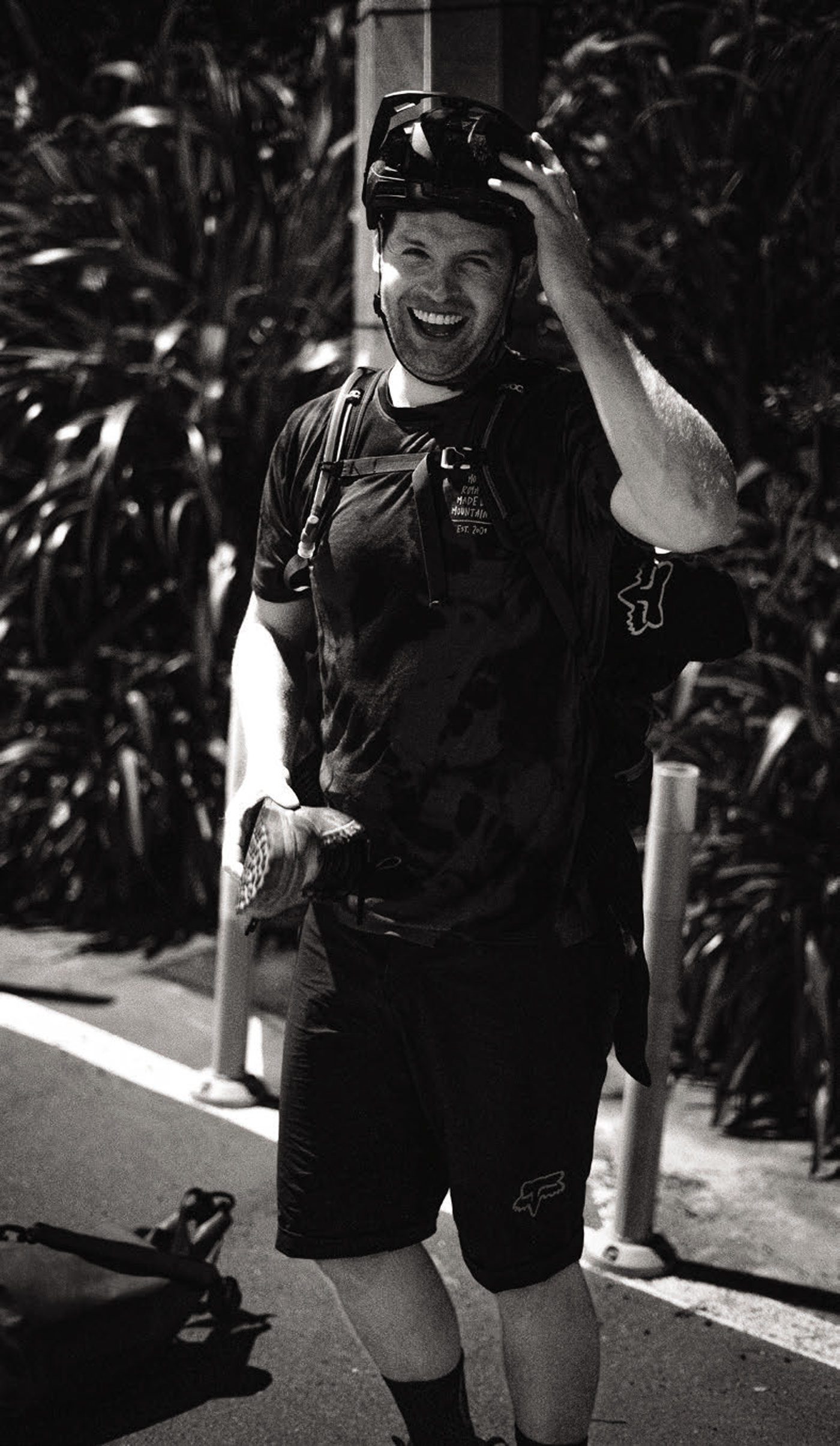
At 12.30am, Scotty and I hit the road to the ferry terminal. We met Paul at Penny’s and bombed the road down to Zealandia, where Tom Bradshaw joined us. The energy levels were high, and the chat was pretty punishing (in a good way). We bombed the roads on the way down to the ferry. The quiet streets let you get off the brakes and speed tuck, not worrying about cars. But soon this speed would catch Scotty out.
As we headed towards the university, Scotty was hugging the corner of the roundabout tightly. It’s quite a tight left turn and Scotty tripped on it. In a flash, his back wheel let go, and he hit the deck like a sack of potatoes, with such force that his shoe fell off. What the heck just happened? He got up and hobbled about. “Where is my shoe?” he said, half laughing, half in pain. Everyone was kind of laughing since we couldn’t believe what had happened. We hadn’t even made it 2km into the trip before the first crash. Scotty is a tough bugger. I think that crash was a lot sorer than he let on.
The shoe was recovered, and we got back on the road – this time at a bit of a slower pace – to the Bluebridge terminal. As we got to the terminal, the chat was, “Will Tom Cappleman show up? Will he be here? Is he actually going to bail?” This had been the running joke of the group chat for months. Tom hadn’t ridden his bike all summer. His new business, Coffee Outdoors, had been going gangbusters, which in turn had taken up a lot of his time. Even the day before, when I was buying my jacket, he was like, “Yeah, I’m not coming,” in a joking manner. Well, peer pressure got the better of him, and he rolled up to the terminal ten minutes after we arrived. It was great to see him back on his bike. The adventure was about to begin. The crew was assembled. Let’s go…
We all piled into the back room of the terminal, awaiting the ferry – the small room where they put all the bikes before boarding the ferry. The terminal was a lot busier than normal, full of people from the Ed Sheeran concert that night. We were in the room for about half an hour before finding out the ferry had been delayed. By how long? No one knew. We just had to sit there and hold tight. As time went on, tiredness and delusion started to kick in. We were just lying on the floor laughing about absolutely nothing, trying to even think of at least one Ed Sheeran song we knew. The carpet in the room was that super thick, hardwearing, bristly-like material, and it was so uncomfortable. When you laid down on it, it felt like getting stabbed by a thousand tiny needles. I tried to get some more shut eye, but it wasn’t happening.
What the heck just happened?
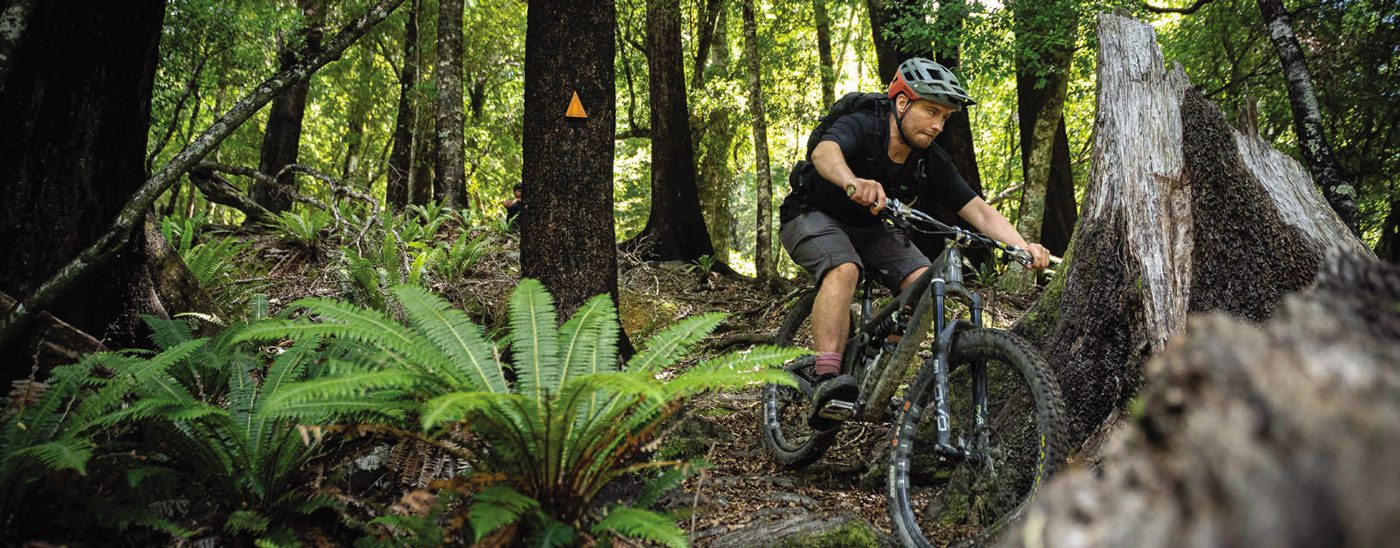
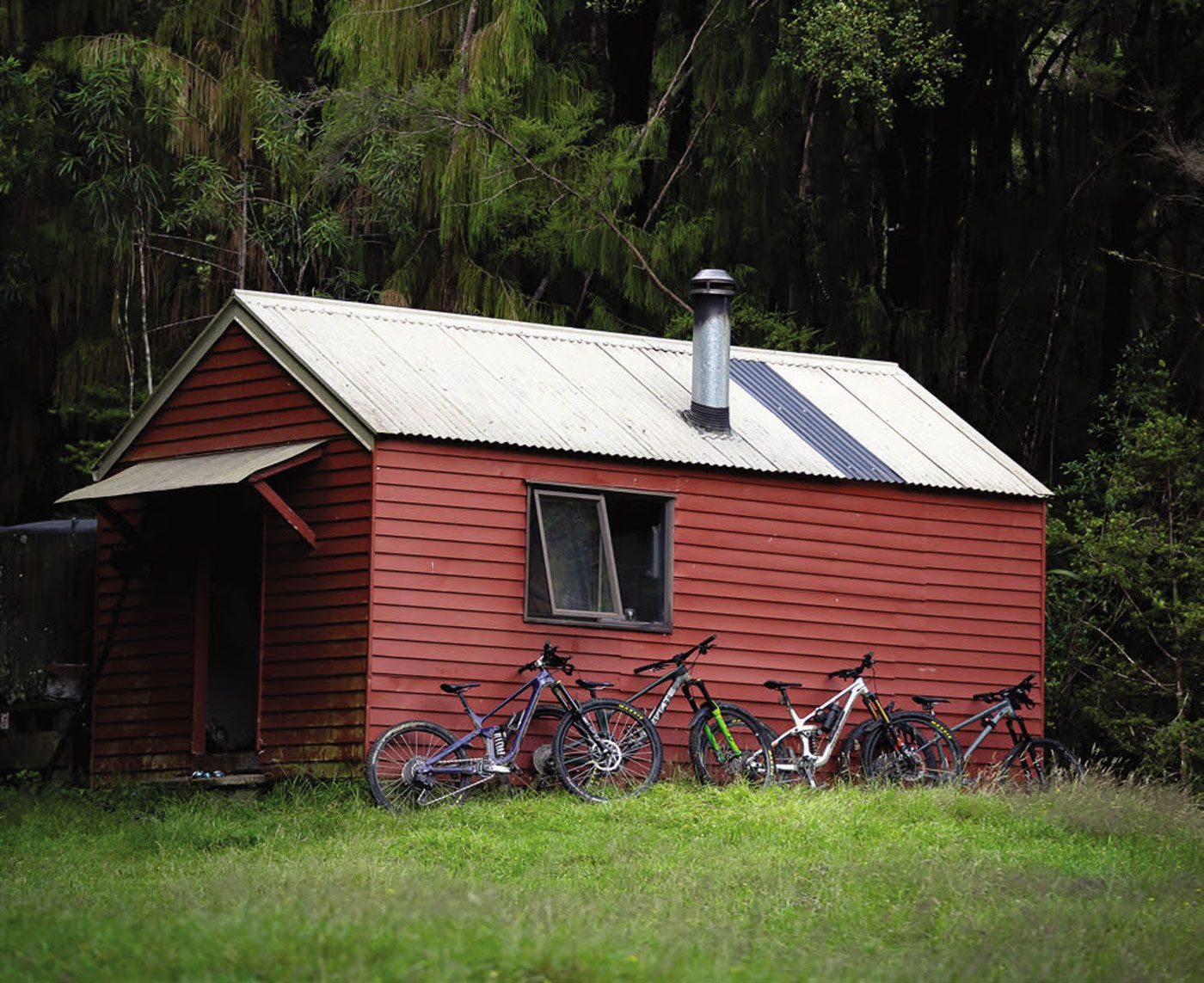
THE ADVENTURE WAS ABOUT TO BEGIN. THE CREW WAS ASSEMBLED. LET'S GO...
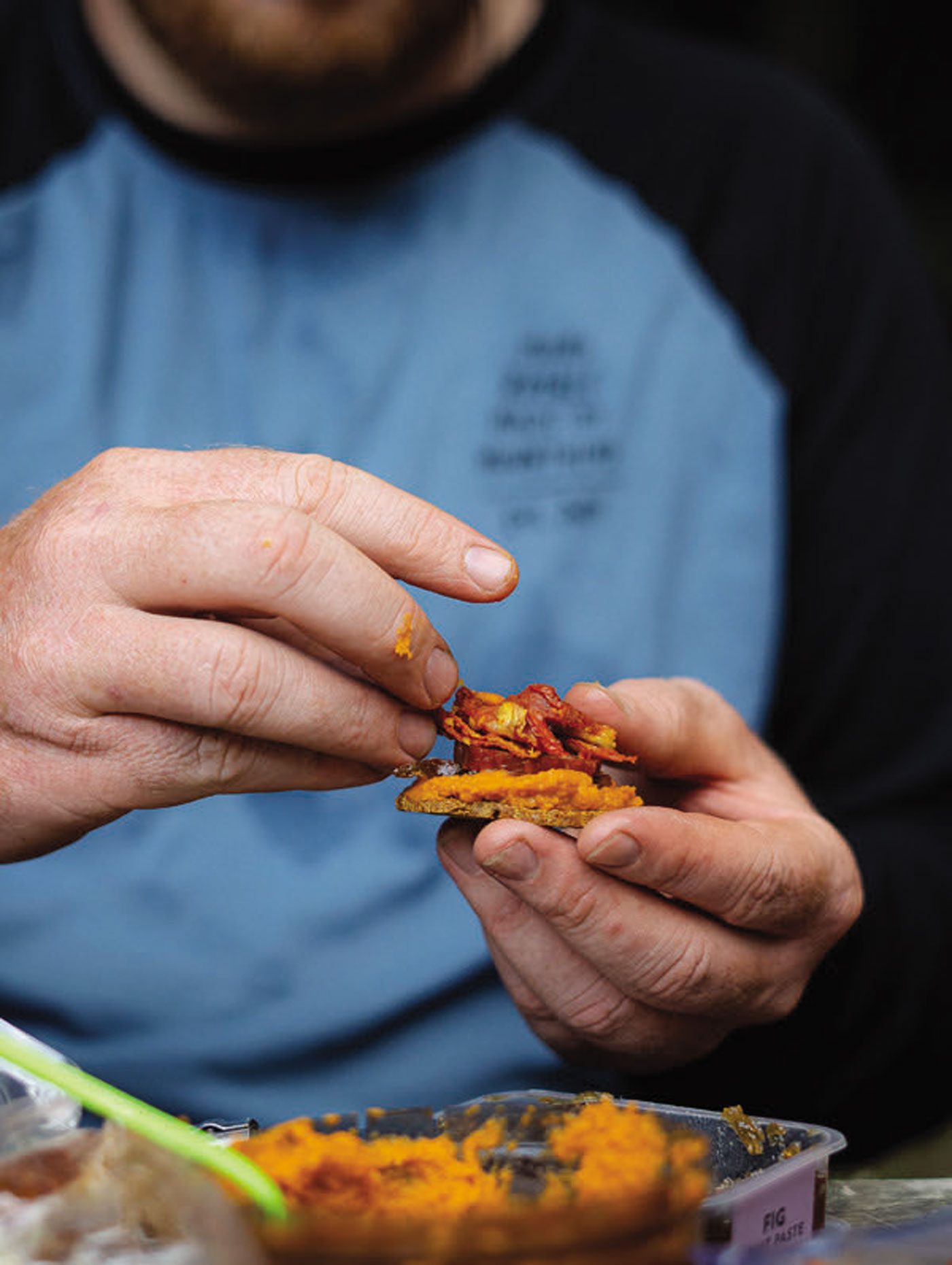
A full two and a half hours later, we finally got to board the ferry. Getting up from the floor, I felt like my body had aged 50 years. Every joint hurt. Half my body felt numb but sore at the same time. The walk to the ferry sorted that out. We had done this ferry ride enough to know the drill. Get in early and find a good place to get horizontal for sleep. After quickly getting our bikes loaded up, we sprinted upstairs to claim some big seats. Snooze you lose, people. I got horizontal immediately on a row of seats. I just wanted to try to get some shut eye. It had been a long day ‘til then without sleep. I managed maybe an hour or two, but it wasn’t much.
As the sun came up and illuminated the Sounds, I woke up and went out on the deck to see if there was a golden hour, but it wasn’t meant to be. Grey clouds hung around. In some of the bays of the Sounds, you could see rain, and towards Picton way it was raining heavily. Not a great omen for what lay ahead. As we docked in Picton, the rain lashed down outside the boat but, in Picton centre, there were blue skies. Maybe we would miss it? Just… Well, that wasn’t the case. As we got off the boat, we rode right into the middle of it. The rain pelted us as we disembarked the ferry, the residual water from the road spraying up and completely drenching us. First stop was the bakery in town for breakfast and to grab lunch for later.
As we arrived at the bakery, the rain stopped and the sun came out, which was pretty great timing to let us dry out as we shoveled all the carbs and caffeine into our bodies in preparation for the 70km of road ahead. Spirits were high despite us all looking a bit worse for wear due to the lack of sleep. It was only at this point that I found out Bradshaw wasn’t going to be joining us for the return leg of the trip. Instead, he was off to ride down the length of the South Island afterwards. How flipping cool, and what a start to the trip this was going to be for him.
After a lot of time faffing, eating and drying out, we finally got on our bikes and made a move on the Queen Charlotte Drive, out of Picton toward Havelock. We eased into the climb out of Picton, having learned our lesson from the last time we were in this position: don’t get overexcited and punch it. We didn’t need to treat this like a race. We had heaps of time to get to the hut that night. As we reached the top of the climb out of town, we got a full view of Picton below. The misty, rainy grey sky contrasted with the dark-but-vi- brant green of the trees. It was pretty magical.
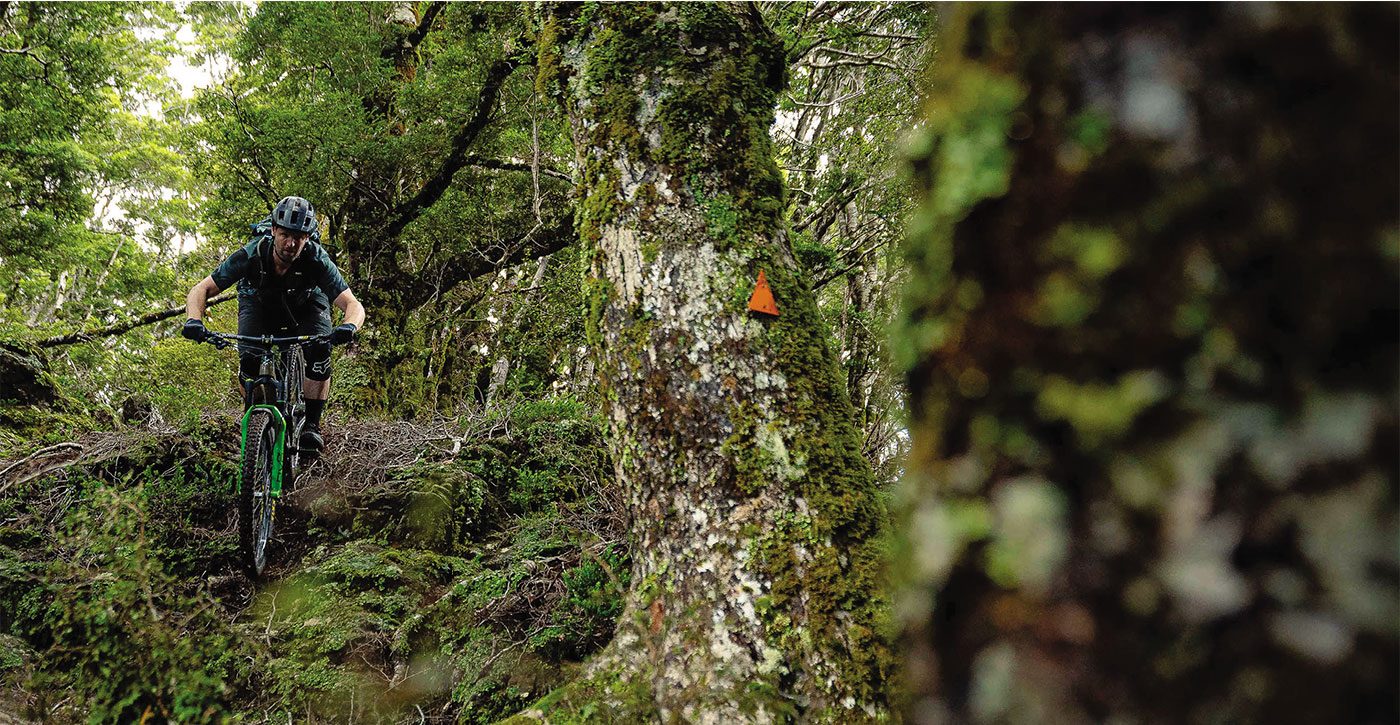
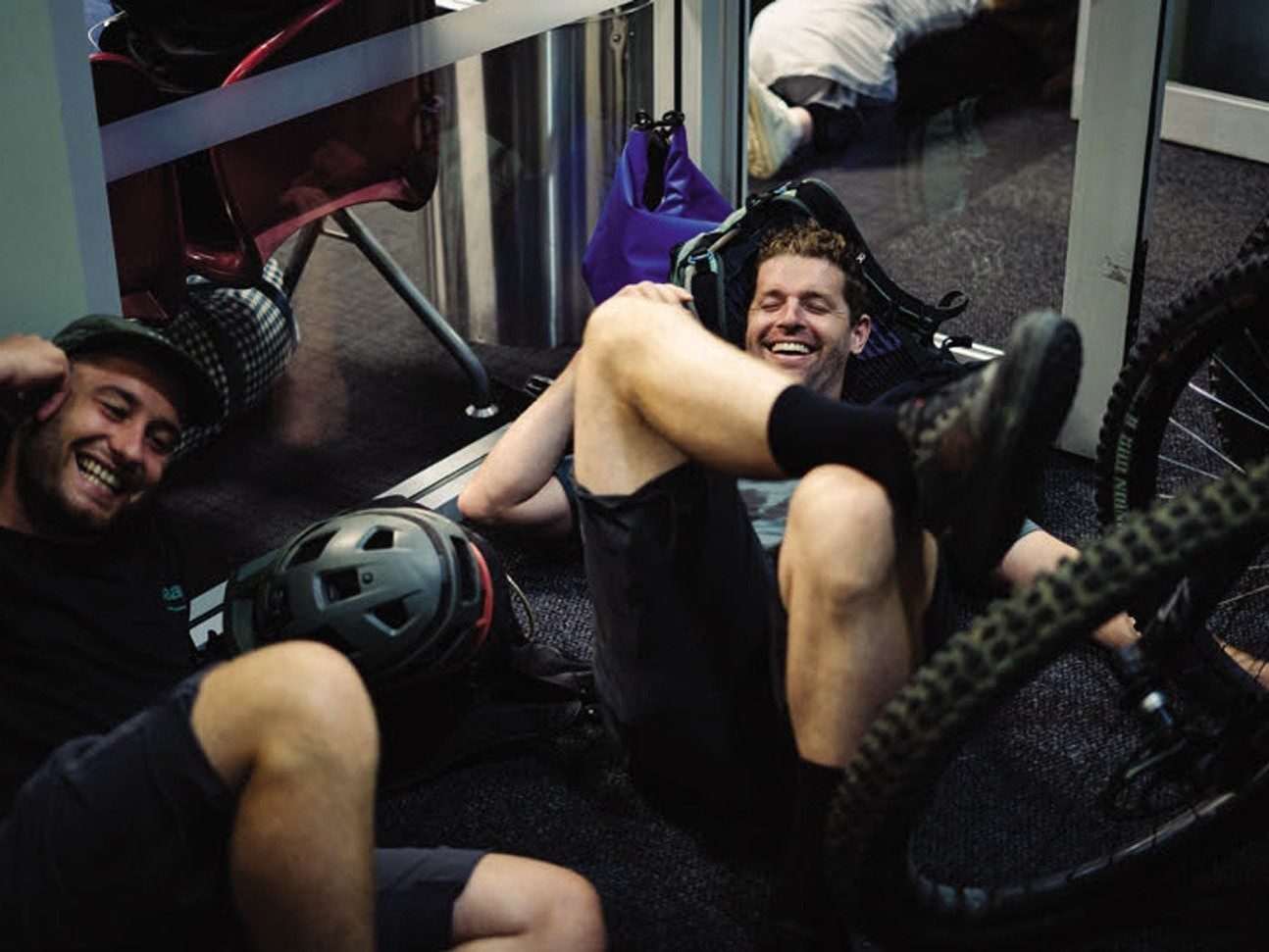
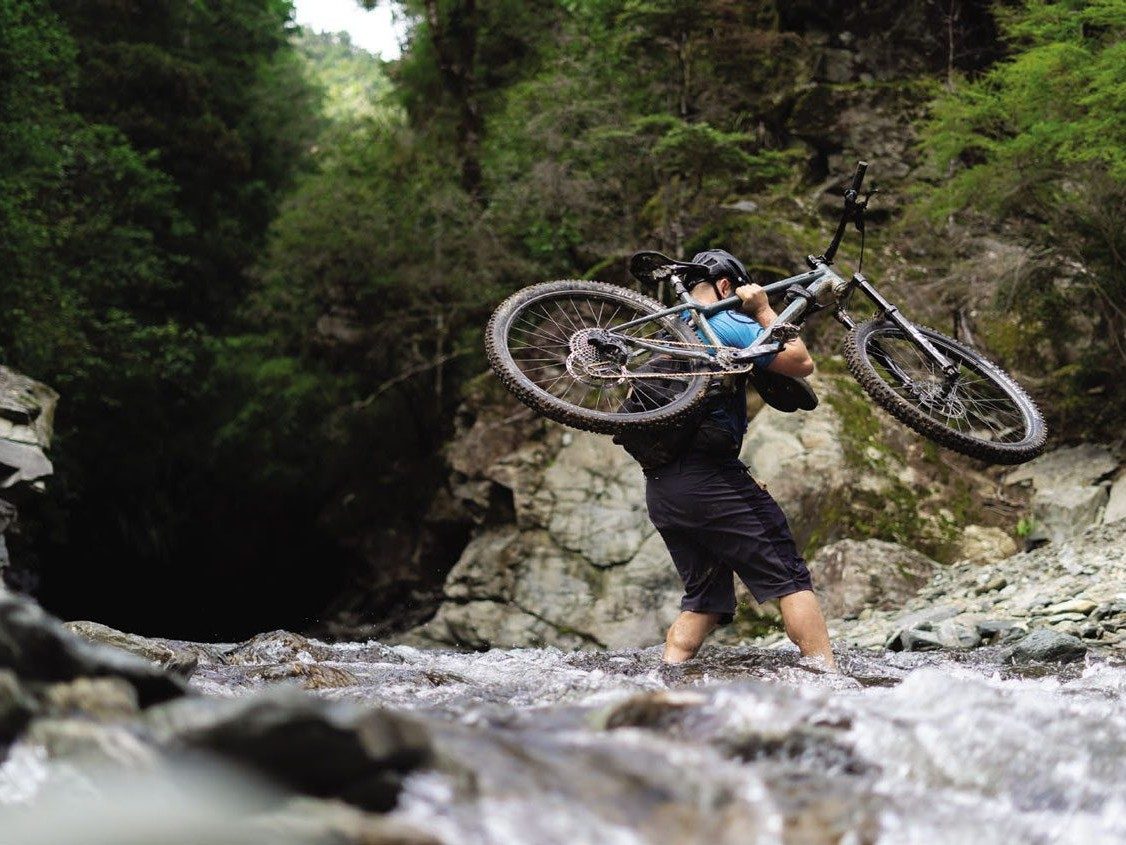
We were just lying on the floor laughing about absolutely nothing, trying to even thing of at least one Ed Sheeran song we knew.
Road or singletrack? That was the choice from the viewpoint. We chose the singletrack which… might not have been the best choice. It started off great, a flowing track back down to sea level, then onto a boardwalk around Shakespeare Bay. Moored up in the harbor was a gigantic cruise ship. After the boardwalk, the track started heading uphill. The saturated dirt was sticky to ride through, often causing wheel spins. It weaved its way through the dense trees back up near the road above. Eventually, we got to a point where there was a huge slip on the trail. Work had been done to reroute the path, but the soil was like clay, sticking to the wheels and tires. We had to push our bikes on this slip section as it was so sticky. We took the next turn off back onto the road. “Well, let’s not do that again,” said Scotty.
The road from Picton to Havelock follows the contours of the Sounds before a long, straight section inland, then back to following the edge of the Sounds to Havelock. The windy road sections were stunning. They weaved up and down, with some fast descents followed by pretty mel- low climbs. You could see the extent of the damage caused by the rains in the slips that had happened – huge bits of the hillside had just fallen away. But that didn’t tarnish how beautiful the landscape was. The misty, grey low clouds really added to it, leaving a sort of lazy, moody feel. There were still pockets of rain in some of the bays, from their own little microclimates. We were making good pace, just plodding along. Everyone seemed in good fettle. Knowing that we were going to be in for a big day, we kept the pace chill.
As we hit the big, long straight, the clouds burned off and bright sunshine appeared. It seemed to happen in an instant. Gone were the grey skies, replaced with what was almost a bluebird day. The temperature shifted massively. It became hot and sticky, with humidity at an all-time high. We got into a chain gang, got our heads down to get this straight out of the way. It was a good long slog, just turning the legs and trying to enjoy the surroundings over the humming sound of Maxxis Max Grip tires sticking to the tarmac. In the distance, you could see the heat waves coming off the tarmac. Sweat was dripping off me like water, and a mixture of sun cream and sweat beaded off my head into my eyes, leaving that familiar uncomfortable stinging feeling. “Couple of hours, boys.” With our heads down, we pressed on and eventually hit the windy roads to Havelock again.
It was a welcome sight to see Havelock. In my head, I knew that was a big chunk ticked off today. We stopped for a bite to eat, a water refill, and a bit of chill time. The temperature might have been unpleasant when riding, but boy oh boy, it was great during lunch. After a good feed and some chit-chat, we were ready to get back on the road again. We got back into the chain gang and punched it to Canvas Town. The 9.6km bit of State Highway 6 was busy with trucks and cars. It wasn’t pleasant to be on. Cars fly by you at high speed. We just wanted to get it done and get off it for our own safety.
Road or singletrack?
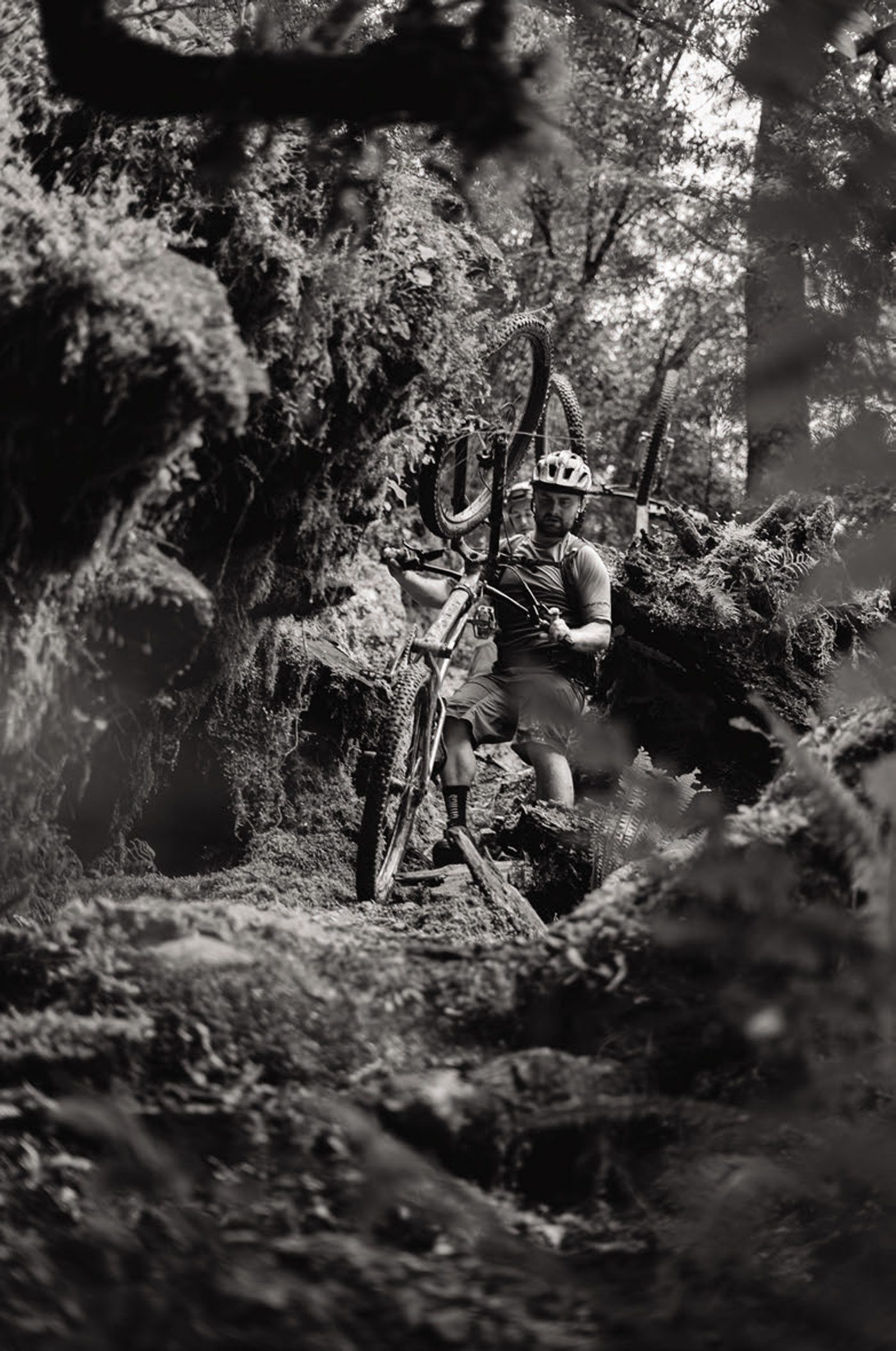
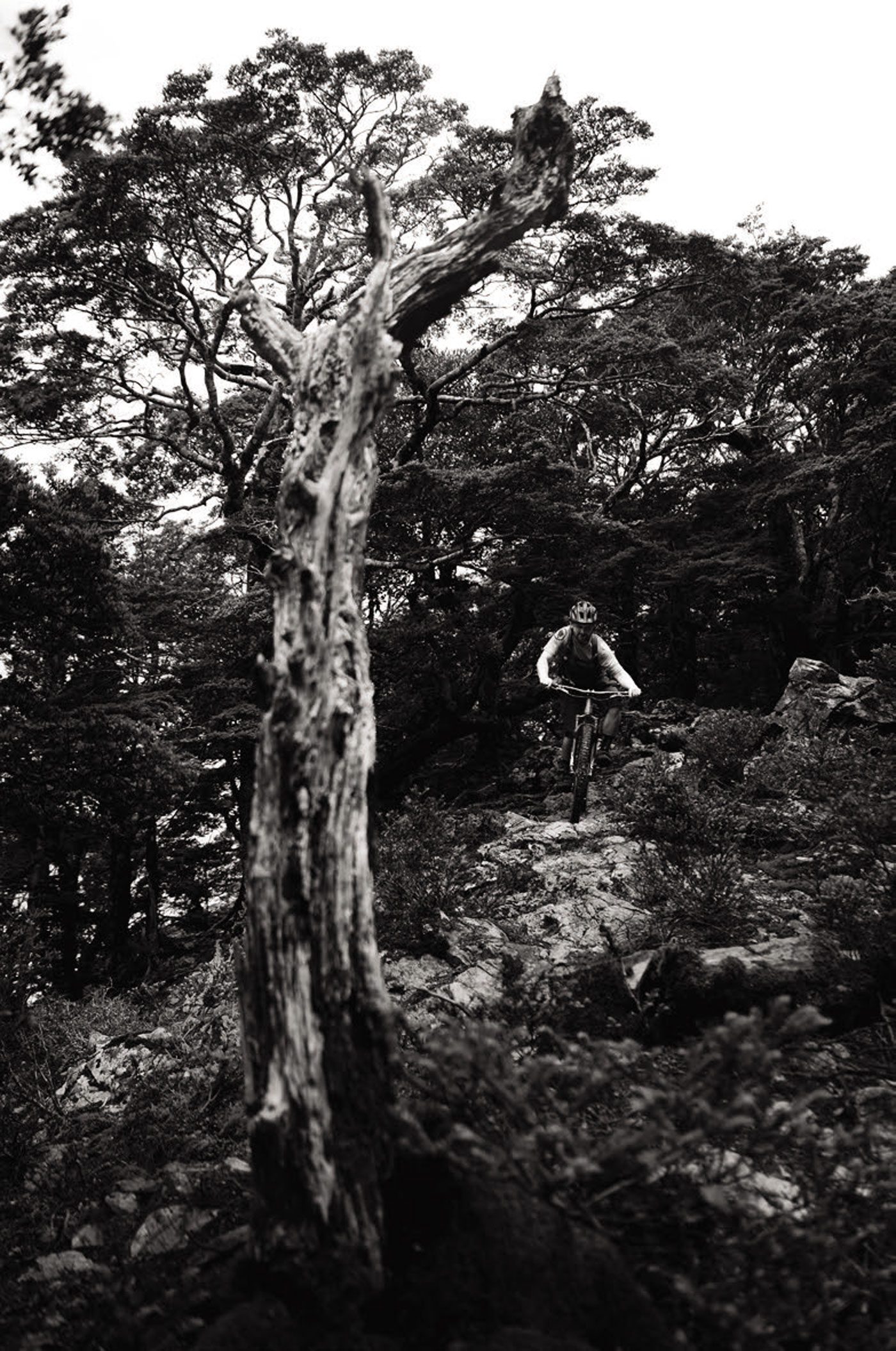
"COUPLE OF HOURS, BOYS."
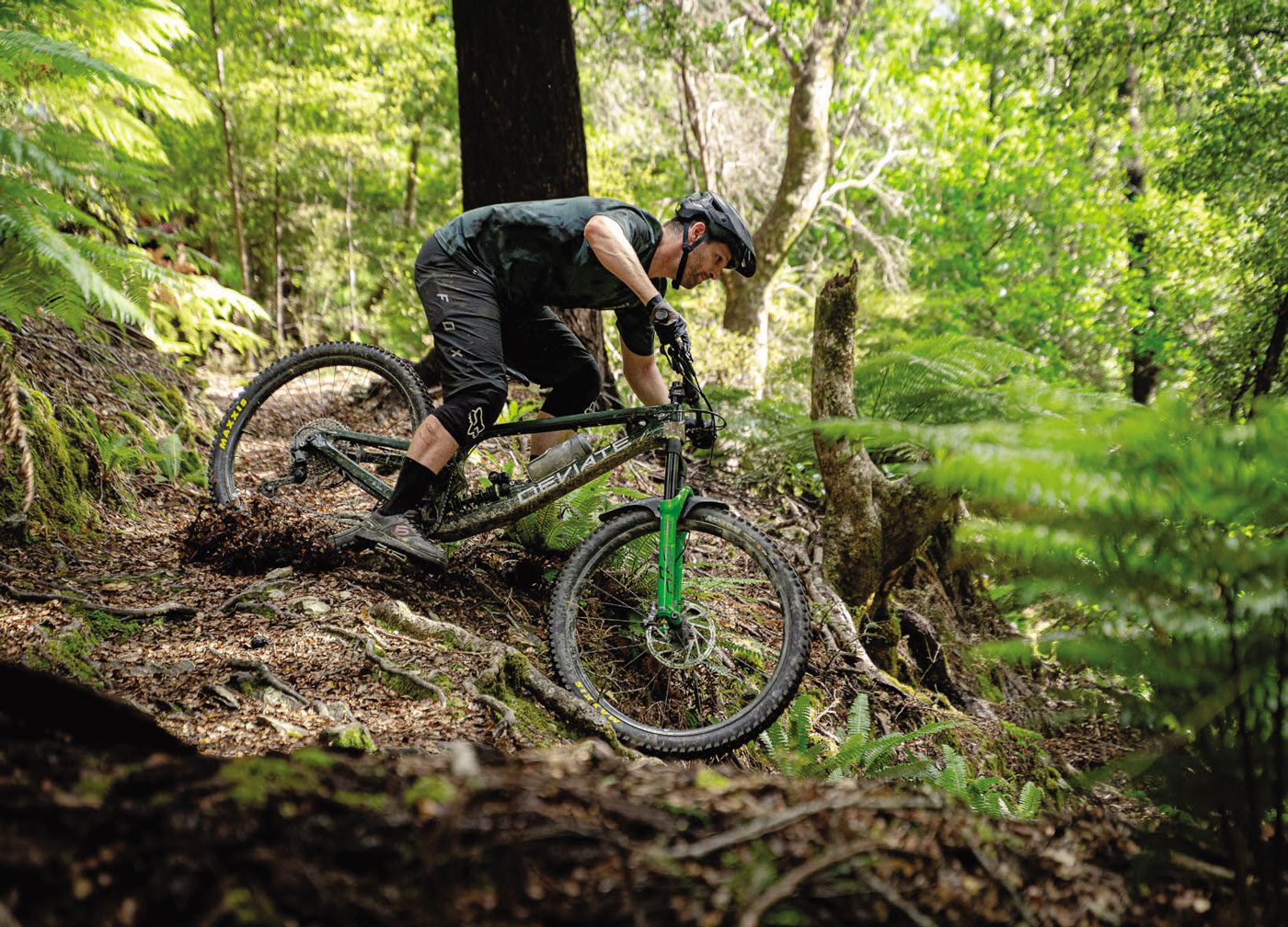
At Canvas Town, we took the left turn off just after the pub and followed that road down the valley. About 2km down, we stopped to check out Bradshaw’s grandparents’ barn/holiday house, that they had built way back in the day. Bradshaw had described it as a barn, so we were pleasantly surprised to find it was more like a small holiday home/batch. It had plenty of beds for us and power. Our plan was to stay there the second night. What a result. “I was not expecting this,” said Scotty. “Yeah, it’s pretty great,” said Bradshaw.
The next 15 kilometres… well, they sucked. We followed the Wakamarina road into the mountains. Paul and Scotty had warned us about this bit, telling us it was just boring and, well, it was. You just grind your way along this road until the surrounding hills gradually get bigger and bigger and turn into mountains. The farmland narrows and becomes native bush while the road changes from tarmac to gravel. You could hear the native birds and flowing river over the rumbling of the tires on dirt.
Finally, we made it to the DOC sign for Devils Creek hut. What a relief. By that point, we were all pretty over riding on the road. Everyone was starting to look worse for wear. I think the heat and the 60km of riding we’d done so far had taken a lot out of us. My saddle sores were starting to hurt, legs were feeling heavy. The sign said seven kilometres to the hut – it was all off-road from here. We dropped 50psi out of the tires, making them a more reasonable pressure. From here, my memory gets a bit foggy about the trail… I remember it being a slog. Pitchy climbs with very wet, slippery soil below the layer of leaves that had fallen on the trail. We had to hike a few sections of it. It was technical, narrow, and pretty steep. At one point, there was a downhill before the bridge crossing. It was fast, rocky, and loose. The rocks were slick, with big compression into rock gardens. But, it was great. We stopped at the bridge to regroup. Chappleman had fallen behind. “I’m in the box, guys,” he laughed. “Not far to go, though.” He’d done amazingly well to get this far considering he hadn’t ridden his bike for about five months. We pushed on and finally made it to the hut – and boy oh boy, what a hut it was.
Before us, the clearing lay ahead. Off to the left was this beautiful red hut, like something you would see in a picture book of Iceland. Just a perfect little red hut. What a sight. We had made it. We parked our bikes up, took the bags off, and moved our stuff into the hut. There were six bunks to sleep on, and a nice kitchen area; the smell of the old wood and musk permeated the building. This was a well-used hut.
You could hear the native birds and flowing river over the rumbling of the tires on dirt.
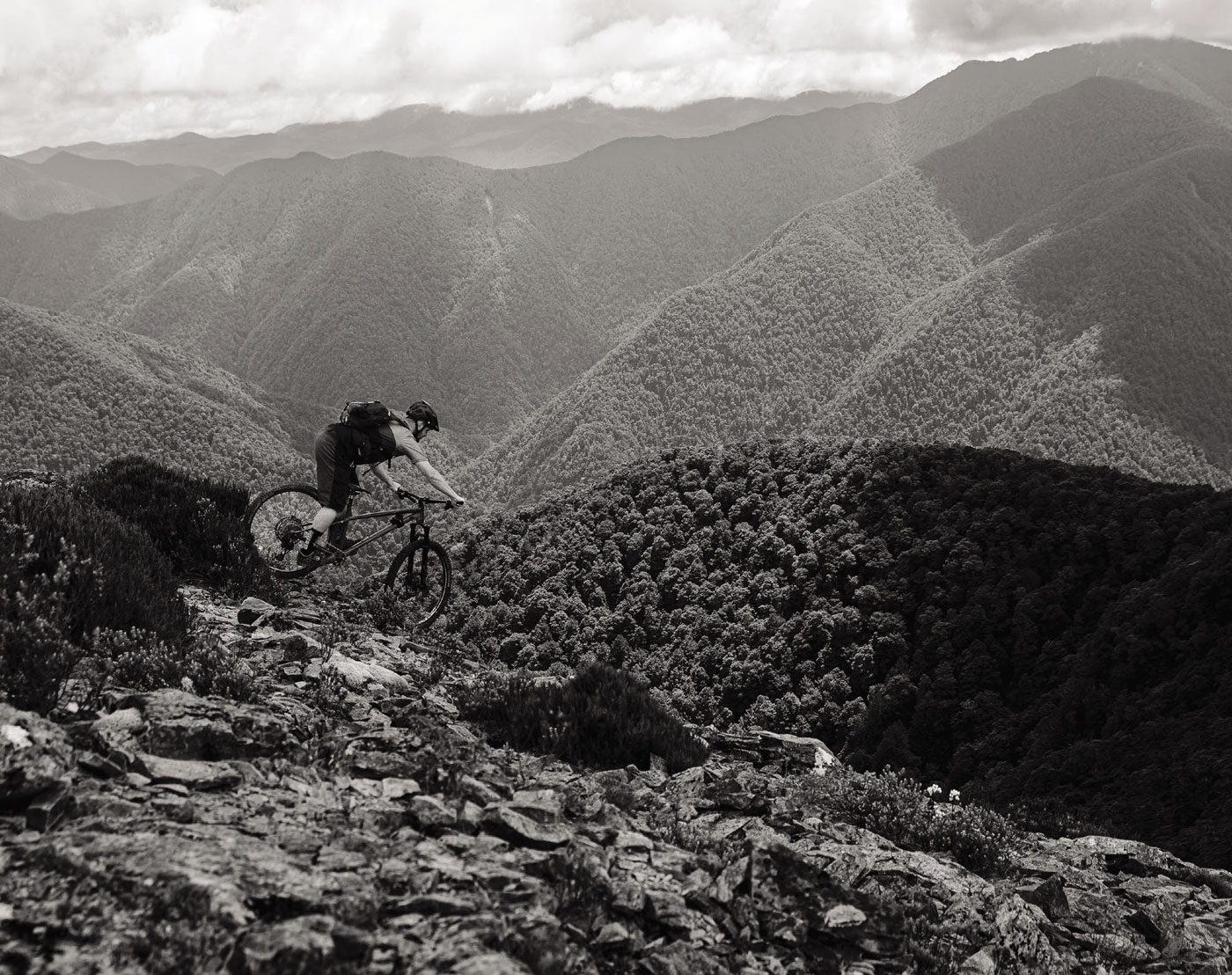
Cappleman was bonked, he had no energy left – so he stayed back at the hut while Scotty, Paul, Bradshaw and I started hiking up the Wakama-Rina. Our original plan was to get to the top and ride back down to the hut, but we were all pretty tired and kind of teetering on the edge of bonking, so we figured we would just push up as far as we could before bonking completely. From the get-go, the push was pretty hard. Early on, the trail was slick, making finding traction for walking even harder. It was going to be a fun, slippery ride down. As we pushed up, we kept checking out sections, wondering if certain gaps would be possible. Well, the gaps would have been possible, but it was more a question of whether we would be able to slow down afterwards in these conditions. We all pushed up picturing in our heads what we might do. “I’m just going to carve off this/float off that/drift round here.” It’s great thinking that way, and in reality you may be able to make just one of those things happen, but it makes the pushing up easier.
The trail looked fantastic, with some long sweeping turns, a couple of tech sections, fast straights, and some tight, technical switchbacks – nothing too technical, just a nice little warm-up for tomorrow, giving us an idea of what the dirt would be like. After about an hour and a half, we made it to a flatter section and decided to call it a day on pushing up. Everyone was looking pretty tired, and our legs were feeling heavy. We had a big day planned for the next day, so felt it was best to save ourselves for that. We turned around and dropped in.
Straight out of the gate, we hit this awesome tight switchback that you could really lean into and rail. Paul was out front leading, and he skidded around, throwing leaves up everywhere. Scotty did the same. Bradshaw was behind, shouting and yelling. Our back wheels were fishtailing left and right on the straights. As we tipped into steeper bits, a little bit of caution was applied, and we were right to. Braking traction wasn’t great, and when it started getting away on you, it really started to get away. In saying that, though, it wasn’t slowing Paul or Scotty down. They were flying. There were a few slick roots hidden under the leaves, and our bikes danced left and right as we held out through the line. I could hear Bradshaw having some wild moments behind me, on his hardtail, with the occasional “woooow!” or “oh shit!” moment. The forest we were riding through was amazing – and dense.
As predicted, I only managed about one of the twelve things I thought I was going to do on this trail. Everything just came up faster than I’d predicted it would – and you have to ride on instinct versus what you had imagined. We got back to the hut with huge smiles on our faces. It was a great little bit of trail we had just ridden, making the 60km worth it to get there. But, the following day was going to be something different again. Less of a ‘trail’; steeper, techier, longer, gnarlier. We were fired up. Everyone was grinning ear to ear.
As we pushed up, we kept checking out sections, wondering if vertain gaps would be possible.
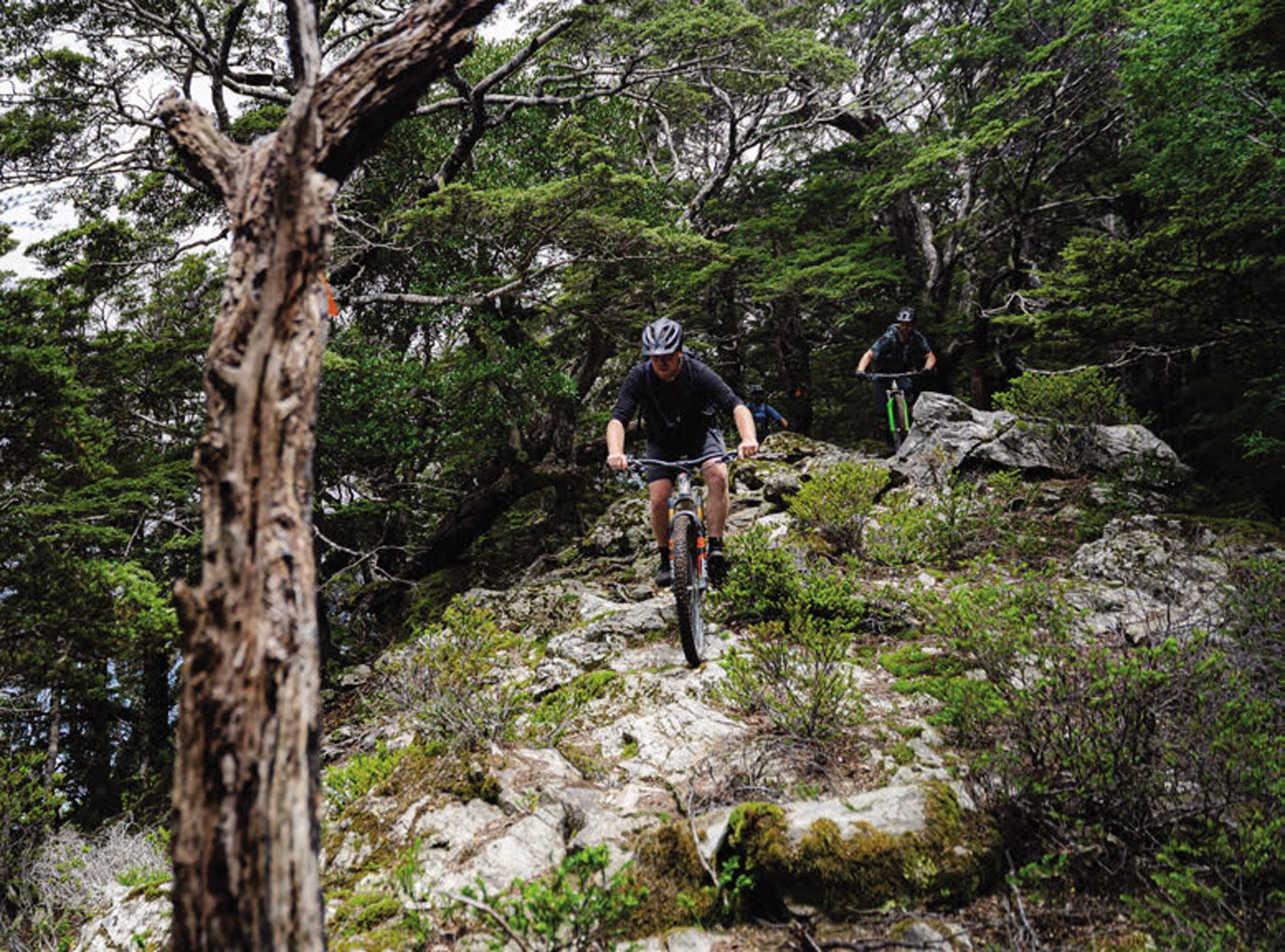
THE TRAIL LOOKED FANTASTIC...
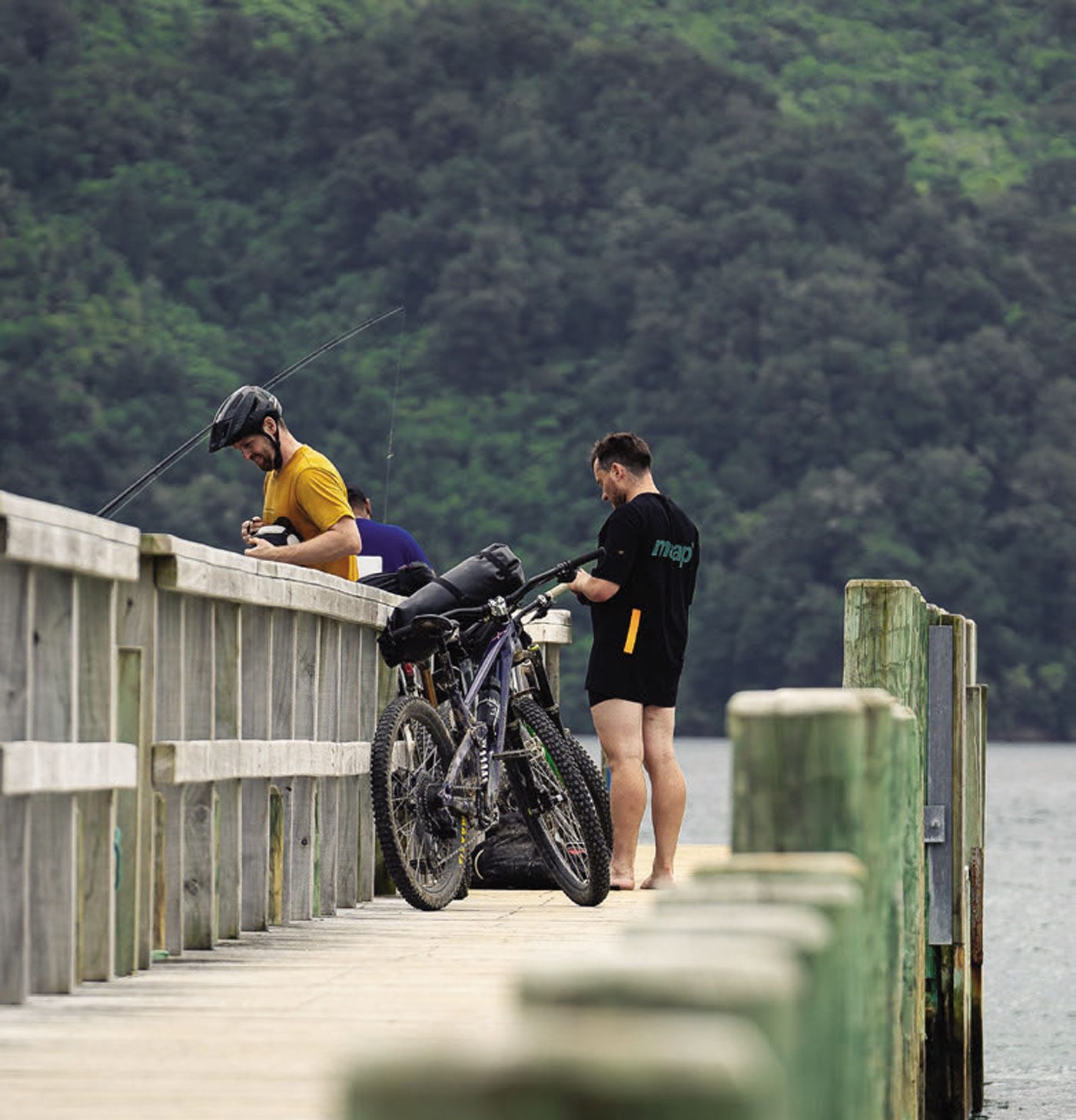
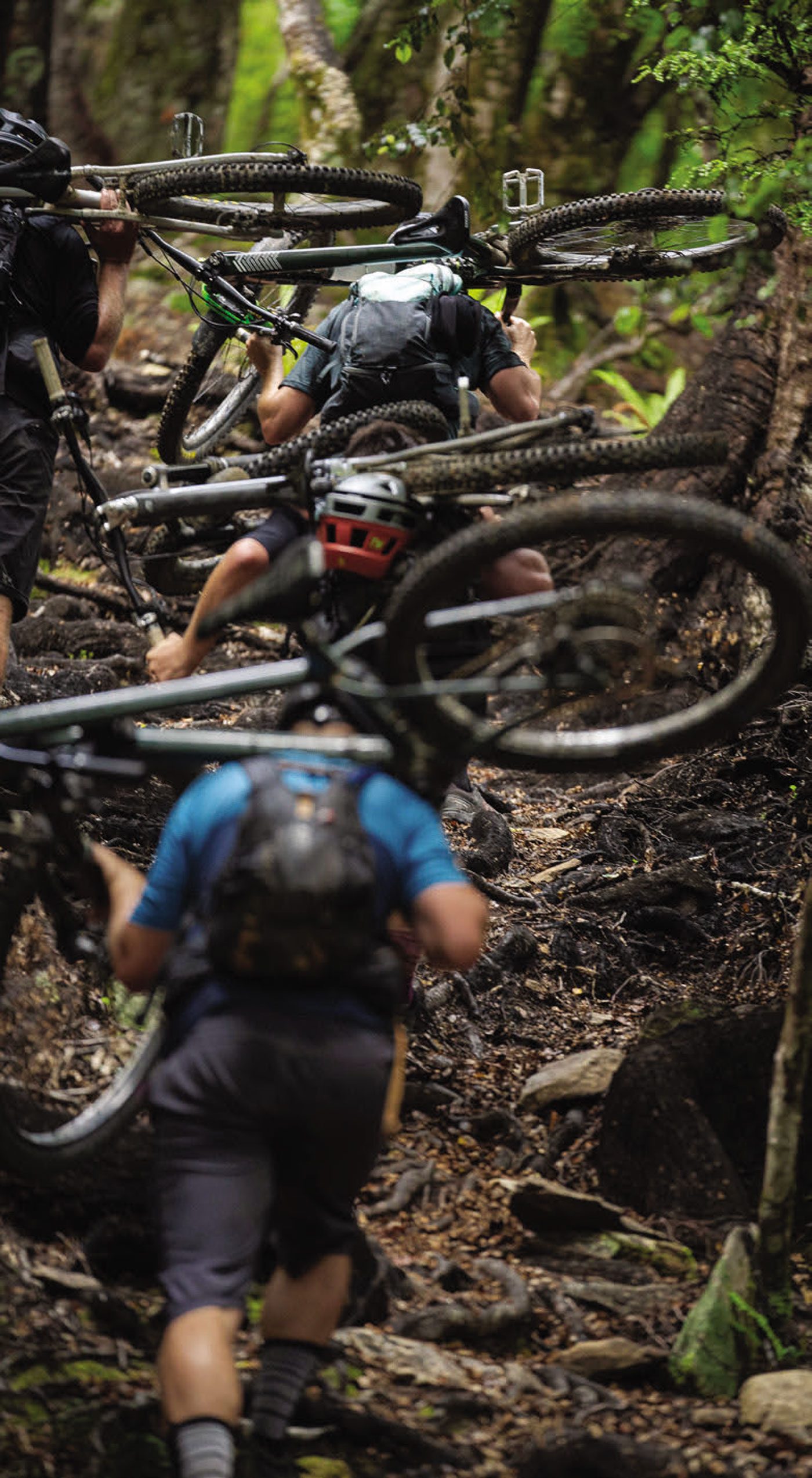
Back at the hut, Cappleman had perked up again. The downtime and some food had pushed him past the bonk and he looked full of life again. At this point, Bradshaw decided to drop it on us that he wasn’t coming up Mt. Royal with us but, instead, was going to hit the road to Nelson and start clocking off kilometres on his South Island trip. “Woah, woah, woah! Hang on, you can’t do that,” Scotty said, shocked. “Yeah, man, you can’t dog the boys,” from Paul. Cappleman just went straight for the heavy blow: “Didn’t realise you were a coward.” “You’re coming up that hill tomorrow whether you like it or not,” – Scotty. Bradshaw came back with some bullshit about how he had to be at some dinner or something. It was a weak excuse. Over dinner, and a dip in the river, we bullied, peer-pressured, and guilt-tripped Bradshaw to come up Royal with us. We couldn’t tell if he was joking or not. I mean, why would you just bail on this? Eventually, Capple-man said he would give Bradshaw his Crocs if he came up, and that was what sealed the deal. Honestly, some bullshit that was – but hilarious at the same time.
And so, night one came to a close – the perfect preface to what laid ahead of us.
They were flying. There were a few slick roots hidden under the leaves, and our bikes danced left and right as we held out through the line.”
THE FOREST WE WERE RIDING THROUGH WAS AMAZING - AND DENSE.
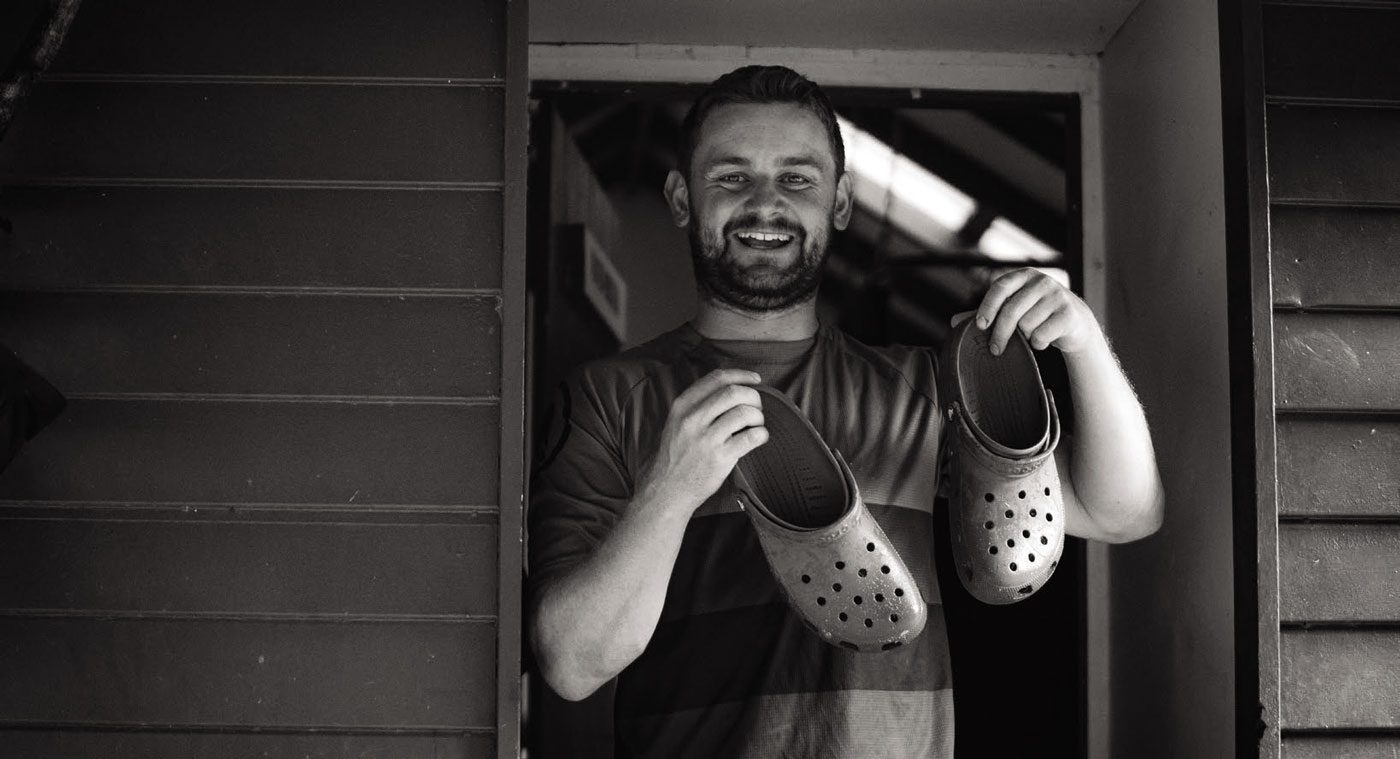
Honestly, some bullshit that was - but hilarious at the same time.
Over dinner, and a dip in the river, we bullied, peer-pressured, and guilt-tripped Bradshaw to come up Royal with us.
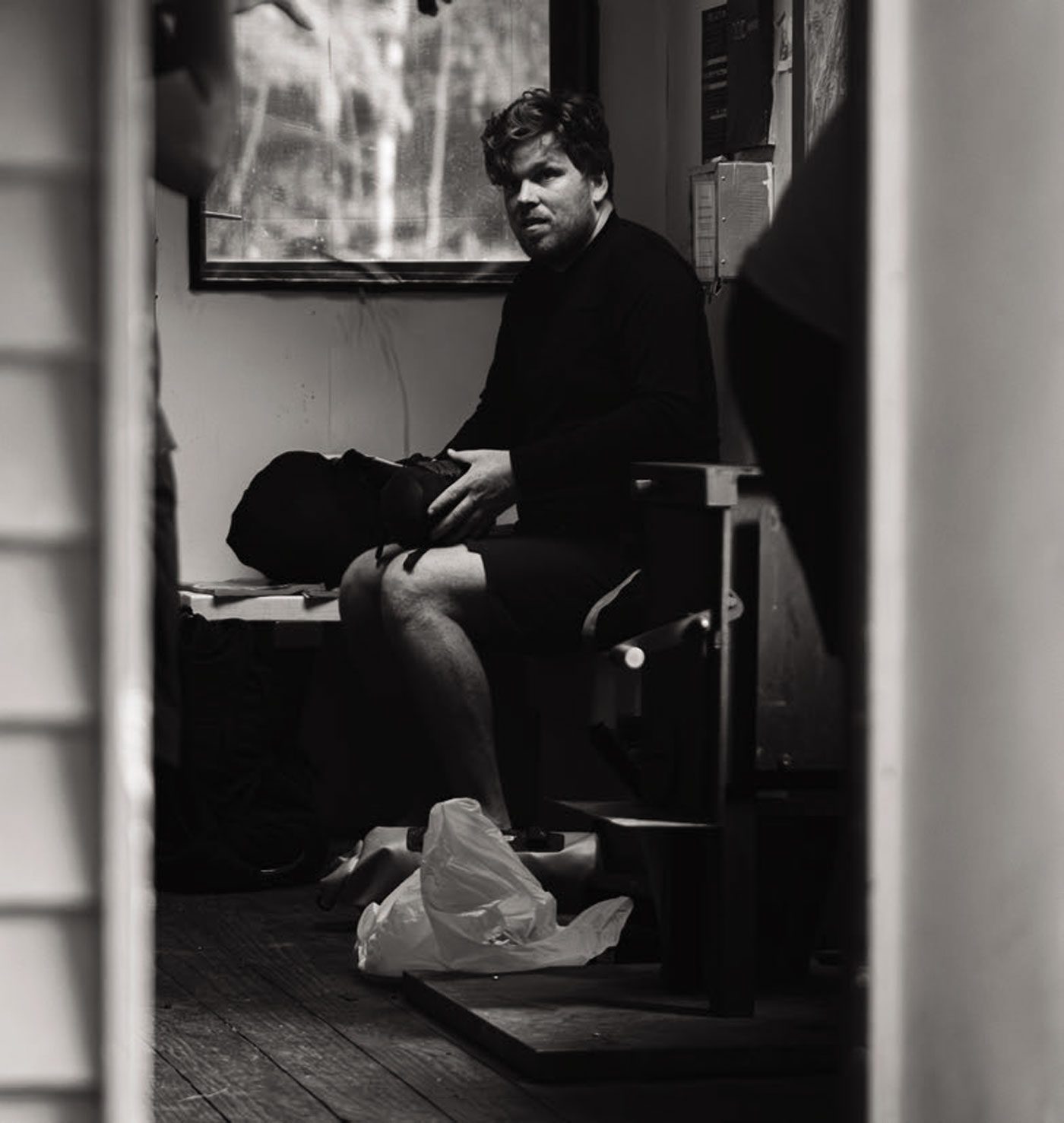
Stay tuned for Part Two of Jake Hood’s ̒The Royale With Cheese’ in the next issue of NZ Mountain Biker ...

Matthew Fairbrother's race commutes
Words: Lance Plibrow
Photography: Nick Waygood, Piper Albrecht and Clancy Kelly
It’s every keen young mountain biker’s fantasy: to be at the pinnacle of their sport, spending their days racing around the world; riding in exotic locations on tracks they’ve only experienced via YouTube; to have sponsors showering them with free equipment; and to be rubbing shoulders with the world’s best each weekend as they race between the tape and then celebrate their highs or lows at a local pub, drinking strange foreign beer.
But, for every kid with a dream, there are few that have the tenacity required to push through the challenges it takes to achieve this goal. Hard work beats talent, as they say, but it takes both to break into the professional ranks.
But if there is an example to look to for how hard work can indeed turn this dream into a reality, Matthew Fairbrother must be the example. With a dream to be riding in the Enduro World Series, Matthew stumbled, somewhat inadvertently, on a way to make this happen.
“I BOUGHT PLANE TICKETS, I WAS JUST HEADING OVER BY MYSELF.”
At just 17, Matthew decided he wanted to race in the EWS. A common enough dream. Already an outstanding rider by local standards, Matthew took the typical route: worked hard, saved money, and tried to get onto the circuit. Securing the necessary qualification to be able to ride at an EWS event through local qualification rounds, the first hurdle was complete. From then, it was a question of how to get to the first race in Tweed Valley, Scotland. He knew he would need a pile of money for flights and daily expenses so, as soon as he finished Year 12, it was straight to work. “I was 17, I just worked as much as I could over summer, seven days a week,” explains Matt. “But I still didn’t have enough money.”
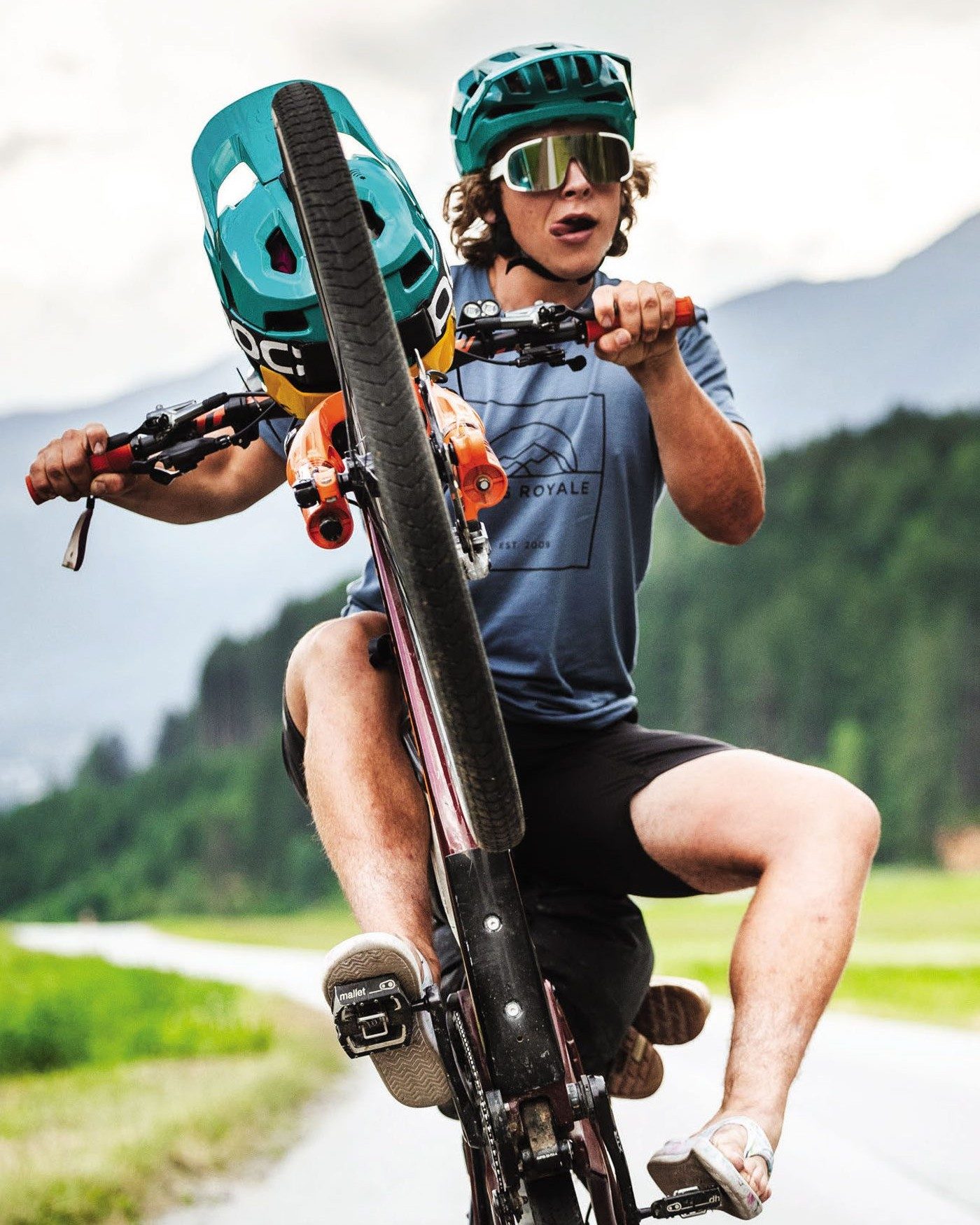
Now, the next big decision had to be made. What about the school year that was starting? It wasn’t a hard decision in Matt’s mind: “When it came time to go back to school… I just kept working. Still working six or seven days a week, sixty hours a week, trying to squeeze in biking and going to the gym around that. I was fully committed, I bought plane tickets, I was just heading over by myself. I didn’t know anyone at that point.”
Matt had been raised in a family that accepted this level of independence, and his parents didn’t stand in the way of his plans. “To be honest, I didn’t tell them much about what my plan was, because I didn’t really know myself what was going to happen. I just had a plan to get to the first race and see what happened. But I was confident in myself, and I’m naturally a pretty independent, self-reliant person, and I think they know that about me.”
The first EWS event in Scotland proved to be a fortuitous starting point. Already having some grass-roots level sponsorship through Scottish company, Deviate Bikes, he was able to foster his small connection to the company and lean on them as he landed at his first race. So, what was the plan in his head for the rest of the six month season across Europe and North America at this point? Loose. “Honestly, I just did not have a plan at all, I guess I was probably thinking there would be so many people there at Tweed Valley that would be going to the next race in Slovenia, so I was bound to be able to hook in with someone.”
But, that plan didn’t work out – for relatively human reasons. He landed in Scotland and struggled to make connections; the reality of what he was doing started to sink in. “I got to Scotland and, other than going to Australia, this was really my first time overseas on my own, and I just felt like a really small fish in a really big pond,” explains Matt. “I was actually just really overwhelmed and scared, and I didn’t seem to be able to pluck up the courage to just go up to other people around the race and talk to them.”
His plan for six months of racing was facing a reality check. But, fortune favours the brave and that’s when he had a fortunate encounter – meeting long time EWS veteran and New Zealand racer, Wyn Masters. “I bumped into Wyn Masters a few days before the race in Scotland, and he’d never heard of me but we yarned and I said, ‘I don’t know how I’m going to get to the next EWS’ and he said, ‘Why don’t you just bike there?’ He was actually joking but I was like, ‘actually yeah, that’s it, I’ll just bike there’ – totally serious. And after that I was committed, I guess.”
At this point, Matt had no idea how long the distance was between each race and how many kilo-metres he would end up riding (about 5000 by the end of the season). He didn’t even know how far it was to the next race in Slovenia, or have any idea how to get there. “I didn’t think it would be that far… but as it turns out it is, in fact, quite far. But I was committed to it and it solved my issue of transportation. For some reason it just seemed to make sense. I’m not sure how it made sense, but it just did.”
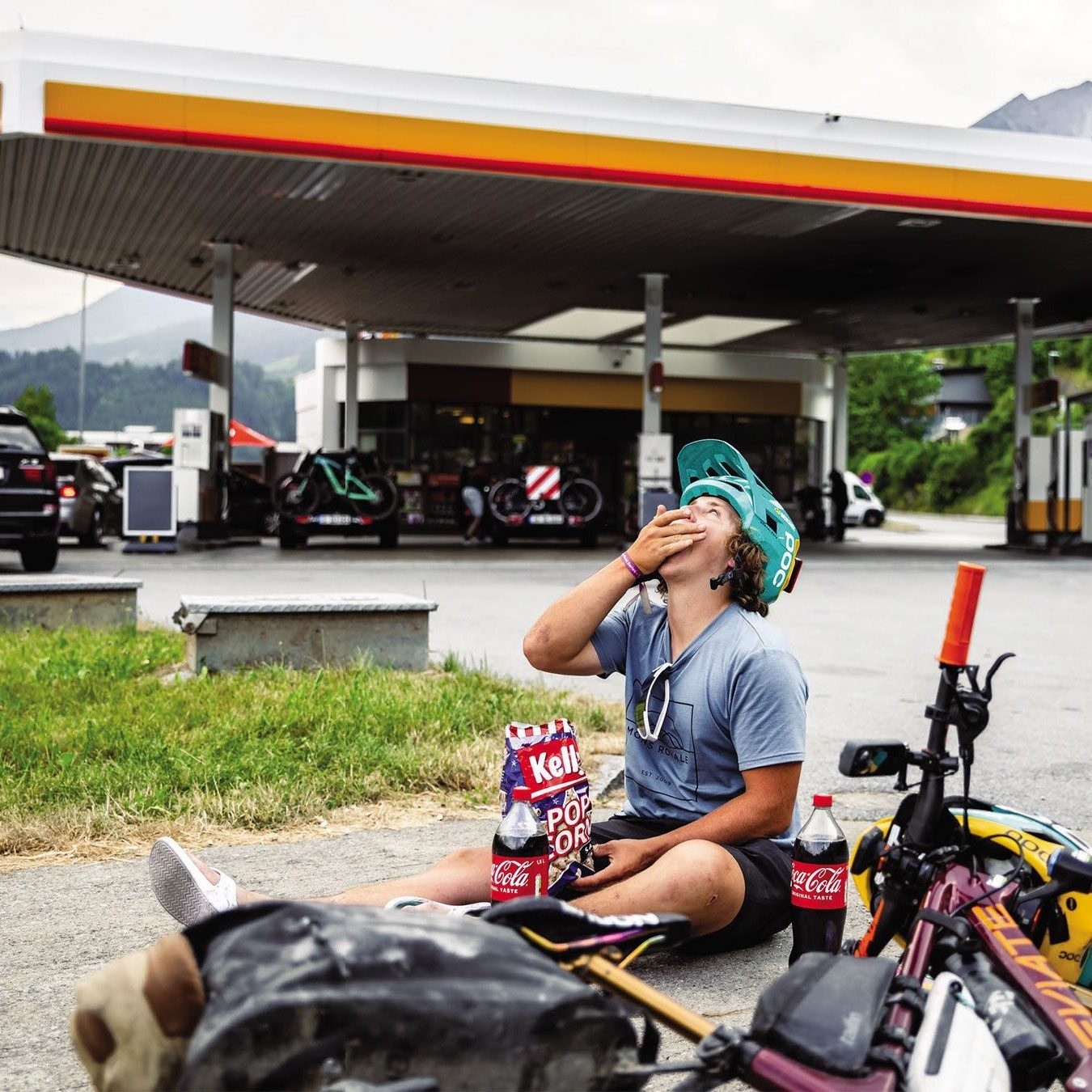
There was of course the slight problem of not being at all set up for riding across Europe. Only deciding to do this five days before he would need to begin riding, he had no bikepacking bags, so quickly jumped online to order some that would theoretically arrive in time for him to make the ride to Slovenia. However, a Queen’s Birthday long weekend meant that when they hadn’t arrived by the Friday his schedule was already in trouble. He had the Tweed Valley race that weekend to focus on as well. Fortunately, the owner of Deviate came to the rescue, driving down to Glasgow, buying some bags for him and bringing them back up. Fortunately, when he left New Zealand he had packed light. “I didn’t leave with much of a plan, but I knew that it would be harder if I had a lot of stuff. So I just brought as little gear as possible with me. I didn’t even have any non-biking shoes.” He finished the race in Tweed Valley; the owner of Deviate met him at the finish line with his bags; Wyn managed to scavenge some slick tyres off another team’s warm up bike; a quick tyre change and less than an hour after finishing his first EWS race he was pedalling to the ferryto get to the Netherlands.
Eventually arriving at the ferry, he encountered his next problem: children under 18 had to be accompanied by a parent or guardian, and they wouldn’t allow him to board the boat. “It was two in the morning in New Zealand, and the people from the boat said I needed a photo of my par- ent’s passport and to sign something saying I had permission to board the vessel. So I was calling my mum at 2:00am and I was just lucky she actually woke up.” Eventually, he was on the boat and looking forward to two things: refuelling, and relaxing in the sleeping cabin he had paid for. The boat had a buffet, so it was time to get his mon- ey’s worth and load up on calories for the ride to Slovenia. “I went to the buffet for dinner, and I just ate so, so much, as I was basically pedalling for a week after that.” But, he didn’t count on one thing – sea sickness. “After I had literally eaten as much as I could, I went up to my cabin and I was just so sea sick, I puked up all the food I had eaten. Eventually I got off the boat, feeling terrible, but I had to keep moving. So, I just started pedalling until I made it to Slovenia.”
It took six days of riding to get to Slovenia and he enjoyed two days off watching the World Cup in Leogang, but all the riding was beginning to take its toll. “At the Slovenia race…I just got demolished. I was so tired. But I was also just so stoked to be competing,” says Matt.
But the tiredness took its toll; fatigue on his body meant he was crashing more than he should have been: “I actually ended up dislocating my pinky finger in one crash – I looked down and it was just dangling out to the side. I got to a medic, and they wanted me to pull out, but I wanted to carry on, so they decided the only thing they could do was zip tie it to my other finger.” From Slovenia it was on to Italy and the round at Val Di Fassa and, if sea sickness, fatigue, and dislocating a finger were bad, here things got worse. Rain riding to the event took its toll. What might be an otherwise difficult physical task to get to the next round became mentally challenging. Too little funds to stay at camp- grounds meant that he was sleeping rough each night, using whatever he could find for shelter, to make his meagre pot of funds stretch that little bit further. He eventually arrived in Val Di Fassa and was not in a good state. He also hadn’t factored in the challenge of riding at higher altitude. “I was just shattered. And as it turns out I had COVID at the same time. I thought I was just tired from riding, but I actually had COVID. I wasn’t having much fun at the race, and I think I came 36th or something.
But, eventually, he found his groove and things got easier. Building a bit of a reputation around the pits meant people were engaging with him more. Teams would offer him food and other support. “If I ever had any issues with my bike, I would be able to go to a team and there was always someone who would help me out. I was alone, but I actually felt like I had quite a bit of support.”
And then, he bumped into Wyn again and everything changed… again. “Wyn included me in his WynTV episode, and I started getting some followers from that,” explains Matt. “Then Pinkbike picked up on me and ran a story.” Pinkbike – easily the world’s biggest mountain bike media website approached him for a story, and he was cautiously optimistic that this might help his profile. “I thought I might gain a few followers on Instagram, but didn’t think too much more about it… but then when their story came out, I gained like 10,000 followers almost literally overnight.
It just blew up. Within an hour I had 5000 followers. I had to turn off my phone for two days because it wouldn’t stop dinging.” But, amidst all this, he still had to just get on with his daily grind: getting to the next race. Fortunately, the Pinkbike exposure had boosted his marketability substantially. Deviate couldn’t have been happier, and they paid for his flights to the U.S so he could race those rounds – rounds he had previously thought would be beyond his ability to fund himself to get to.
Landing in Vancouver, he rode up the Sea to Sky highway – a reality check from the riding in Europe. “It wasn’t that far, but it was just gnarly. You’re literally fenced in, with lots of really fast highway traffic and trucks.” By this point, he was getting plenty of offers for rides from other teams – and of course there is public transport that he could have been utilising – but, by now, he had realised he’d stumbled onto his point of difference “Even with these other offers of rides, it had kind of turned into ‘I’m just biking the whole thing.’”
Arriving in Whistler, Deviate had been working in the background with SRAM to give him an unexpected surprise: Deviate were launching their new bike, the Claymore, and they had a brand new bike – decked out with all the top-end AXS and Rockshox equipment – to give to Matt, as well as a cash top-up for his riding fund. “I was absolutely blown away. Deviate had paid for my flights to Canada, and then I got given a new bike. It actually felt kinda fake. I still don’t know what to say. I couldn’t believe this was actually happening to me. It just didn’t seem real. I felt like I totally didn’t deserve it, but I was also so stoked.”
Here, he reluctantly had to jump on a plane. The 5000km from the west coast of Canada to the east coast of America was just too far. Landing in Quebec and crossing into the U.S.A proved problematic too. “They didn’t understand why I was bikepacking and why I was away for so long. They wanted to see bank statements to prove what I was doing, but I didn’t have any and I didn’t have any internet on my phone at that point and they wouldn’t let me use their internet. They were certain I was working illegally. They held me for ages, and I was a bit scared I was going to end up in jail but, after a while, they just seemed to get bored with me and let me go.”
Eventually the season came to an end. Did he enjoy himself? Absolutely. But he is also realistic about the difficulties of the experience too. “There were just massive waves of up and down. The lows are low, they really suck, and you question why you are even doing this. But the highs are so high.” At the end of the season, he had to make a decision – was he going to go do it all again? If he was, now was the time to be trying to engage more sponsors and hopefully make life that little bit easier. “I think I got on to the idea that this could actually be something. I started talking to a few companies and tried to get some sponsorship, and lots of them seemed stoked on the idea,” says Matt. “They wanted to see me do it again. I managed to get some actual funding which means I guess I’ve actually turned it into my job now, which is amazing – that was my big childhood goal.”
This season, he’s a bit smarter about the whole idea too. He’s discovered the mapping power of Komoot which takes him on much better routes than he rode the first time. “Komoot is amazing over here. It’s like Google Maps but focused on bikepacking. It takes you off the highways and takes you the scenic way. I’m off the highway as much as possible and usually in the middle of nowhere.” Which is really good because at least when he’s fatigued he’s not riding next to a highway. “Being in the middle of nowhere and tired is fine. Being fatigued and next to a highway is terrifying. I worry I’m going to lose concentration and swerve into a truck or something. Now I’m actually enjoying the riding way more. When I wake up on the morning after a race I’m looking forward to it now, when I wasn’t really before.”
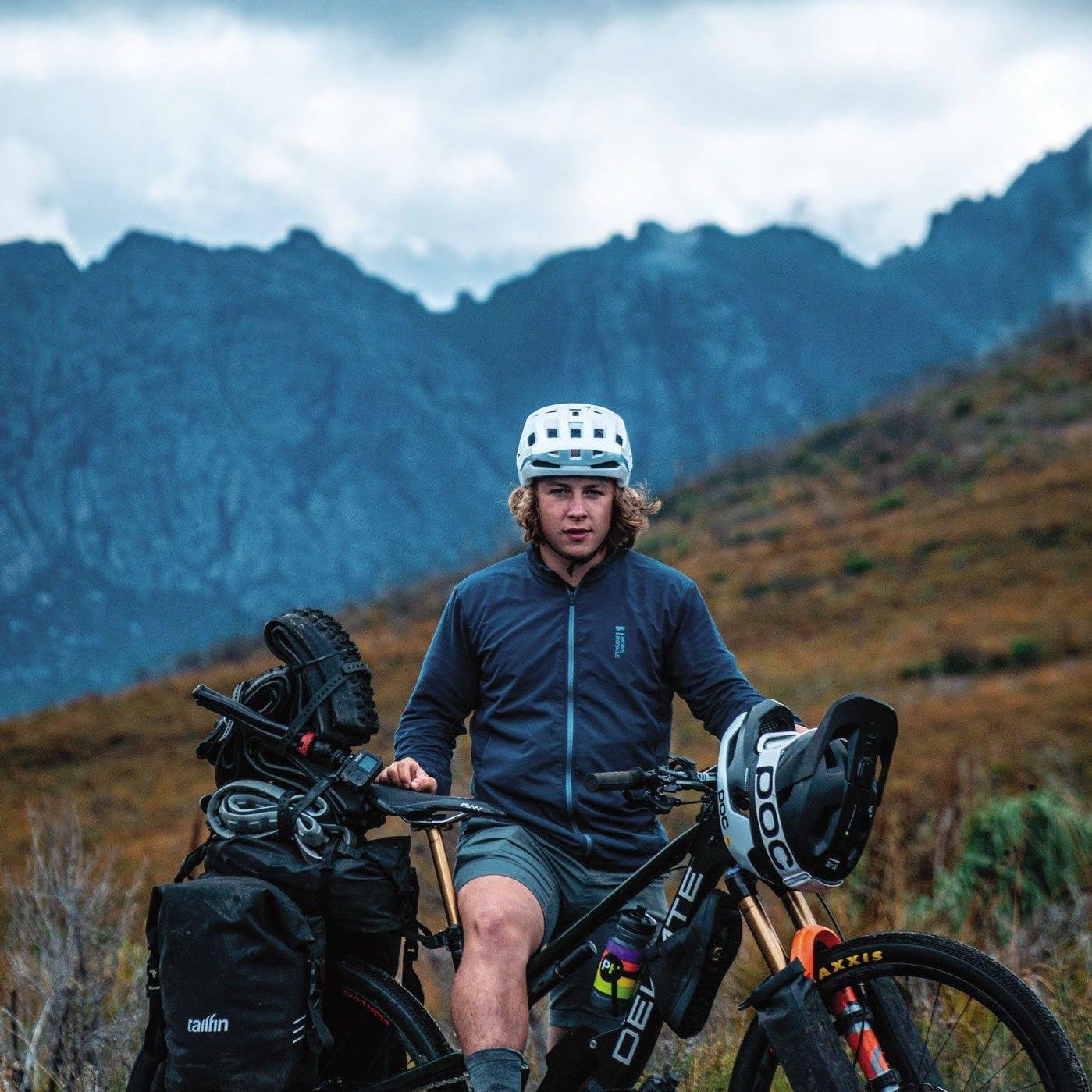
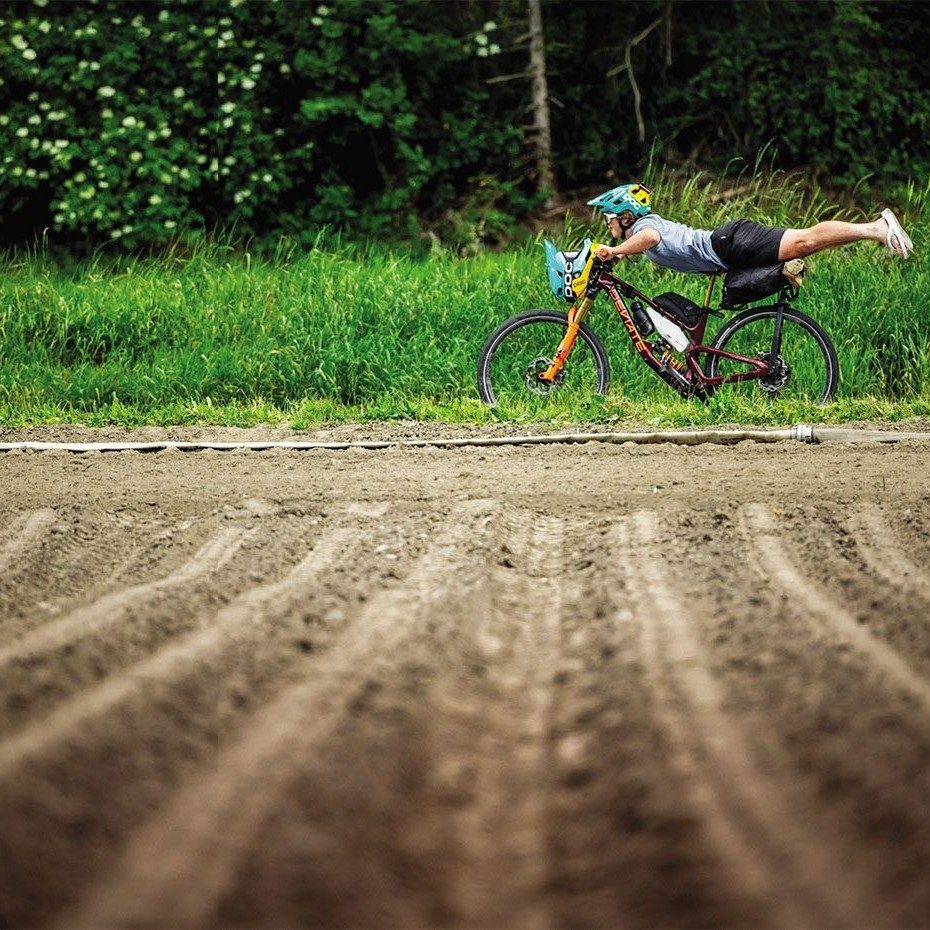
He’s tweaked his system as well, securing obvious sponsorship from Tailfin backpacking equipment. “The biggest change I’ve made is going to the Tailfin bikepacking setup. Honestly I’m so stoked on it. I was so sick of the bikepacking bags sagging and wagging around. The Tailfin has this cool pannier system so I can take so much, and it is so much more secure. I’m sponsored by them, but it is genuinely awesome stuff. I’d buy it even if I wasn’t sponsored by them.”
However, despite knowing what he was in for, securing some sponsorship and feeling more pre- pared his second year hasn’t been totally problem free. In Tasmania, he suffered the results of maybe packing too light – a few extra quick links would have solved an unfortunate broken chain affair. “At the Maydena race I snapped my chain. I had used my spare quicklink in the race, but the chain must have got a bit bent. It was 10pm and I was riding to the next event in Derby, and I stood up on the pedals and the chain snapped again – and I only had that one quicklink that I’d used earlier. I had to be at Derby the next day to sign in by 4pm, and I still had seven hours of pedalling to go. The nearest bike shop was 45km away, so I had to jog my 45kg bike 45km through the night to the bike shop – in bike shoes, of course.” A marathon in bike shoes, pushing a fully laden enduro bike? Of course.
“I GOT TO THE BIKE SHOP AND COLLAPSED AND SLEPT ON THE FRONT DOOR UNTIL THEY OPENED...”
He also entered the Highland 550 bikepacking event in Scotland, just to mix things up from the enduros he had been riding. Here, he encountered freezing weather that took its toll. “I got caught between two passes in a storm. I couldn’t set up a shelter, so I had to get to a bothy (a basic Scottish highland hut) otherwise that would be it. I was just pushing so hard against the wind to get to this hut, I ended up getting mild hypothermia and I was hallucinating. It was really quite bad.” In the end, he was on the bike for 50 hours non-stop, and with cold wet feet for a lot of it. “At that event I did some damage to my body, some days I still can’t feel my feet and my hands get pins and needles. Even now when I’m riding in the EWS, I can’t work out how hard I’m holding on to the bars, so I hold on too tight, which means I then get arm pump, then my hands blow off the bars and it all happens before I know it. So, yeah, this year I’ve been falling off a lot.” Between races he has been trying to manage the nerve damage in his hands by riding with his arms spread across the bars, so he is steering more by leaning on his forearms rather than holding with his hands. Even with Deviate offering him rides in their team van now, he is still intent on riding between each race. “I guess I just like to have a point of difference, so I’ll just keep riding this wave and see where it takes me.
I ask him if maybe he should take some time off and sort out his nerve damage which can have long lasting effects, but he doesn’t seem too bothered by it yet. And, for now, he’s still enjoying himself. There’s too much going on to worry about the challenges.
“I’m just always in the moment. There is always so much going on. It is tough, but the highs definitely outweigh the lows and there isn’t anything else I’d rather be doing right now.”

Erice van Leuven: From Wellington to the world
WORDS: LESTER PERRY
ILLUSTRATIONS: GAZ SULLIVAN
PHOTOGRAPHY: CALEB SMITH
Standing atop the podium at the Lenzerheide World Cup 2023 opener, I wonder if Erice looks out over the crowd and thinks to herself: “This is just the beginning”. Is she viewing the win as just a stepping stone towards the future, or maybe wondering; “What the heck just happened, and how did I get here?”
What began as a simple obsession on a balance bike, following her brothers around, grew into a viral video of 10-year-old Erice proving the best mountain bike is whatever bike is beneath you. She tore up Rotorua’s trails aboard her coaster-brake-equipped 16-inch wheeled kids’ bike. The video spread like wildfire, reaching such lofty heights as being included in the now defunct Dirt Magazine’s 2017 Advent Calendar. Day 14 features Erice and the caption: “this could be the raddest video we’ve seen all year.” Other notable outlets picked up the video and, overnight, Erice was on the radar of every talent scout in the industry, promptly receiving several sponsorship requests.
Commencal was early to the party and ended up being the lucky suitor. Welcoming her to their global roster, their new 20” bike suited her perfectly. A few more years of growth; roll on the launch of their 24” MTB and Erice played the lead role in their launch campaign video, again tearing up the trails to international acclaim.
Fast forward through a couple of pandem- ic-tainted years and Erice is finally old enough to race Junior UCI World Cups, and ready to step onto the bottom rung of the Junior category. In early 2023, she was announced as joining the COMMENCAL LES ORRES Team and it was game on for the season.
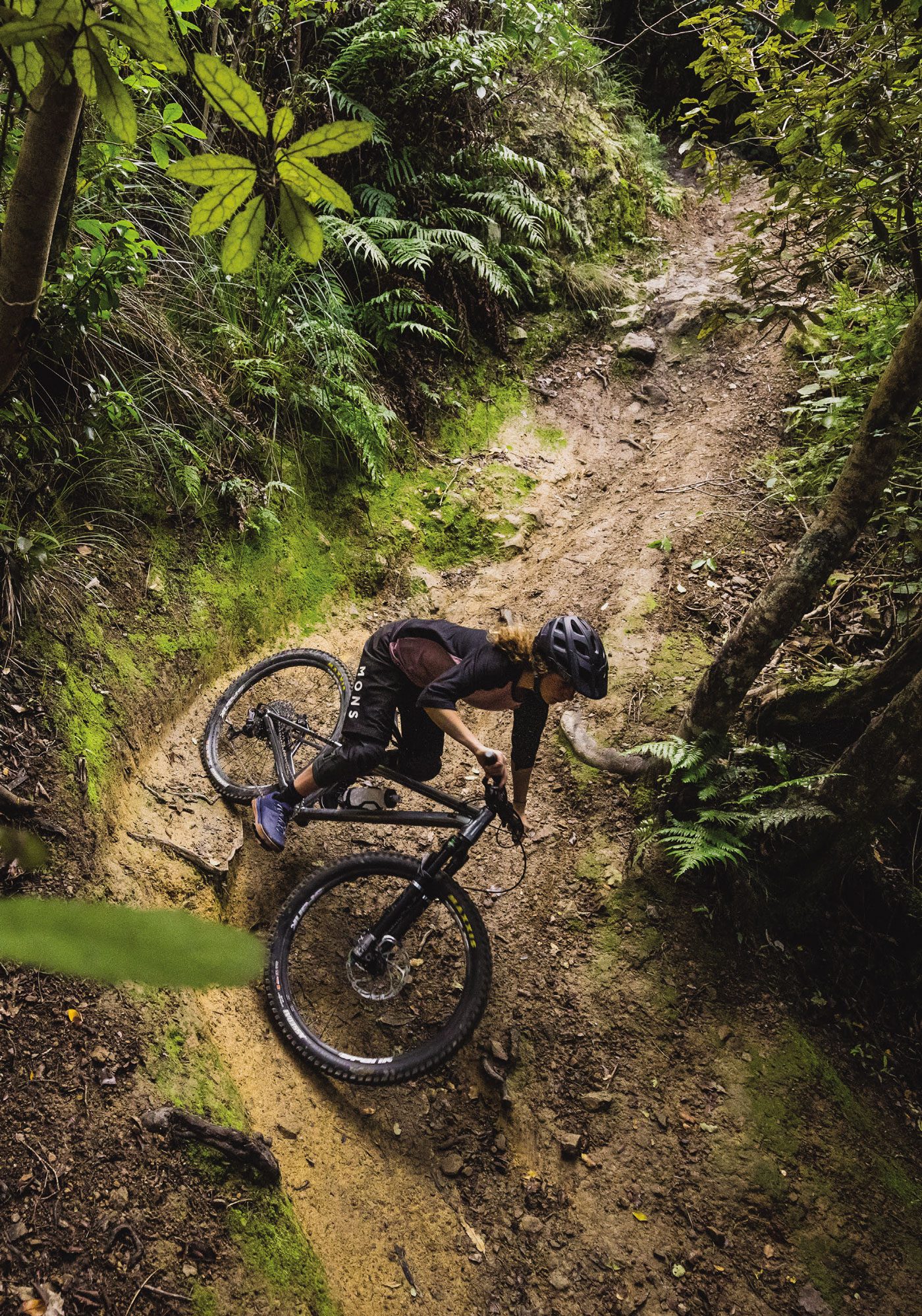
Under the wing of Cécile Ravanel, no one doubted Erice would soon grace a world-level podium, but it was a surprise for it to come so soon. Erice’s 2023 season kicked off with a pair of EDR (Enduro) World Series rounds in Tasmania. First up was Maydena, where perfect conditions and varied terrain greeted riders. A tight battle ensued between Erice and Canada’s Emmy Lan. After Erice led through race day, Emmy stamped her authority on the last stage, bumping Erice into second place. Both riders were well over a minute ahead of Elly Hoskin, who rounded out the podium in third. Erice left Maydena surprised and stoked; she was at the EDR rounds as a test to gauge where she was at and was using the race as some training for the upcoming DH season.
“Erice’s bike skills, and her ability to just ride fast, are pretty impressive. The tracks don’t scare or worry her, and she just gets on with it. She’s not intimidated by much, it seems. So maybe with age that will change, but right now she’s just super impressive on gnarly tracks with gnarly features and just super confident on the jumps and everything.
“I THINK HER BIKE SKILLS AND ABILITY TO JUST SEE THINGS AND RIDE THEM AT THE SPEED THAT SHE WANTS IS PRETTY CRAZY.”
– CAMERON COLE, FORMER WORLD JUNIOR DH CHAMP AND GT FACTORY RACING TEAM MANAGER.
I guess it’s a bike skills thing, but maybe she’s also just riding the bike to get the best out of it. I think bikes have changed quite a lot and you can trust them so much more nowadays. So maybe there’s something in that as well.” – Cameron Cole, Former World Junior DH Champ and GT Factory Racing team manager.
Round 2 of the EDR took in the now-famous Derby trails, some old, some new. Practice day was wet, and by all accounts just getting through the course that day was a task in itself. Race day was hot and humid, and the trails were still wet from the previous day’s rain.
“On race day I was thinking, I’m actually kinda up there so why not go for it!” explains Erice. After putting in a huge effort across the first five stages, she experienced painful leg cramps on the liaison to stage 6, which saw her stop multiple times to stretch out.
“I was a bit scared then that I wouldn’t be able to finish the race, because of the pain.” Fortunately, Erice pushed on, continuing her domination, topping every stage and obliterating her U21 competition. Her overall time would have placed her 16th in the Pro Women’s class!
Finishing her Tassie time on a high, she set her sights on the main goal of her season: the World Cup Downhill series. Six weeks after her win in Derby, she lined up at the opening round of the French DH Series; another race, another win! With momentum building over the last few races, she was back in action a month later – this time at the World Cup season opener in Lenzerheide, Switzerland.
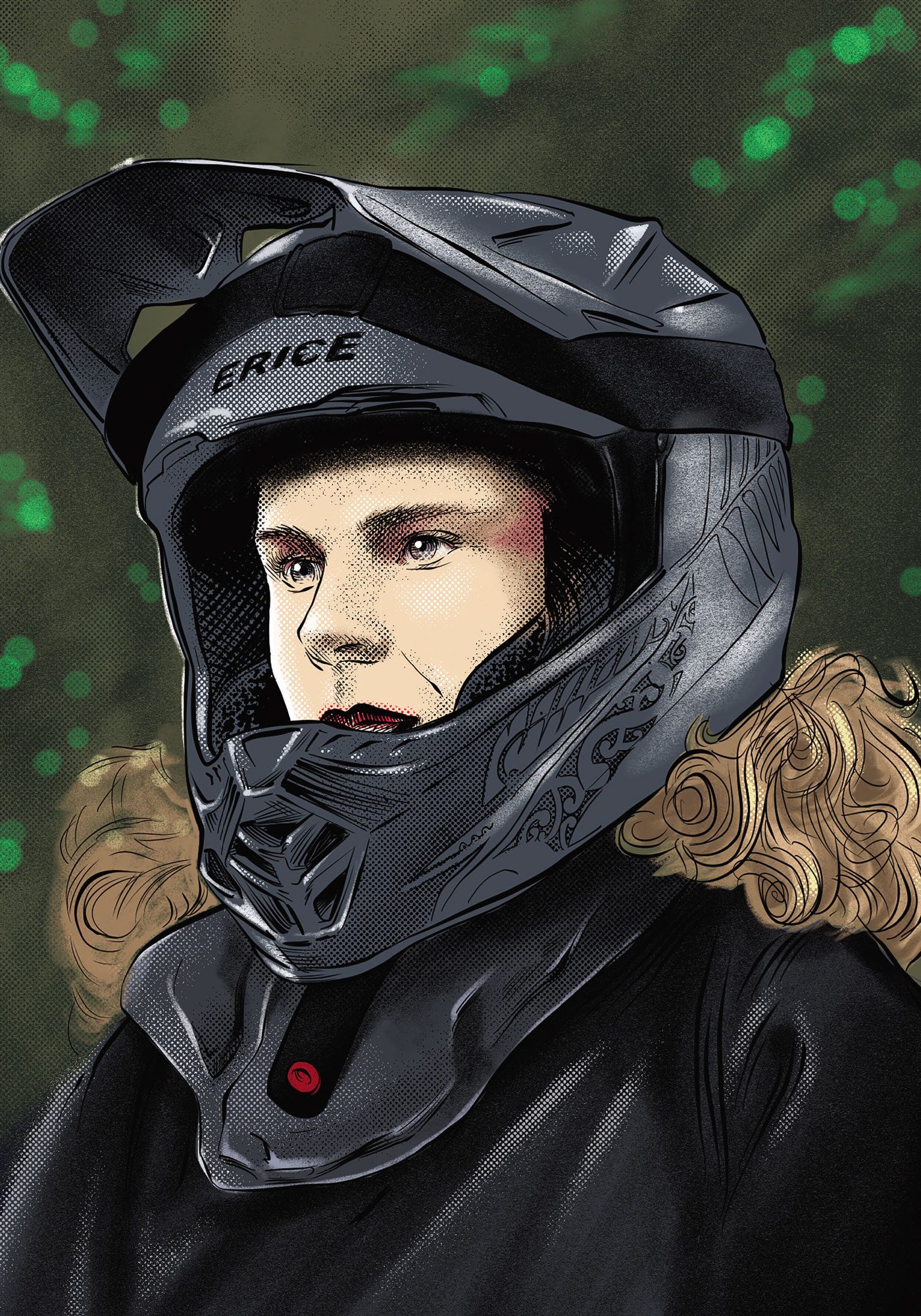
“The track in Lenzerheide was so sick, the sections just linked up real good,” says Erice. “It’s obviously a difficult track but it allows you to push quite hard for speed, which is cool. The top section on the off-camber grass and then onto the famous off-camber corner were the most difficult for me, it was still fun though. I just enjoyed the track heaps and that’s when you ride your best.”
For the first time in history, the Junior races were broadcast live and free on YouTube, allowing friends, family and fans from across the world to see the future stars of the sport laying the foundations for their careers. Watching the action unfold over the week, clips of Erice practising surfaced. What we saw was a confident, solid riding style which piqued onlookers’ interest and had com- mentators picking her as one to watch.
A crash in qualifying put her in second place. But, harnessing her nerves, she headed for the start hut to take on her final run, confident her pace was there. Minimising outside distractions, she visualised the track, focussed on the present and task at hand, rolled forward and broke the timing beam.
“As I was injured at Lenzerheide, I spent a fair chunk of time trackside and that included watching the always entertaining junior practice. I’d followed Erice online but hadn’t really seen or met her in real life, and from run one in Lenzerheide it was fairly obvious that she had something special going on.
NZ DH with Erice at the helm is in safe hands both on and off the track. Her skills are something else, but so is her infectious stoke for both the riding and the other girls she was racing against. Big grins and big wins seem to be the ticket here.” – Eddie Masters, Pivot Factory Racing pro.
Five sectors made up the track. Erice started slow, building across the first three splits, then demolished the final two to put her just over four seconds in the green. She’d just secured her first junior World Cup win!
“When I won my first World Cup, the feeling was insane!” explains Erice. “I was totally over the moon. Having my dad and one of my brothers there, and some family friends, made it extra special! Another highlight was getting to see family after two and a half months. It’s so, so cool being over in Europe racing, but it is hard not seeing the fam for a while.”
Riding the high of her win, everything was looking positive as the World Cup circus headed to Leogang, Austria. A win in the qualifier put her as the fastest seed coming into the finals.
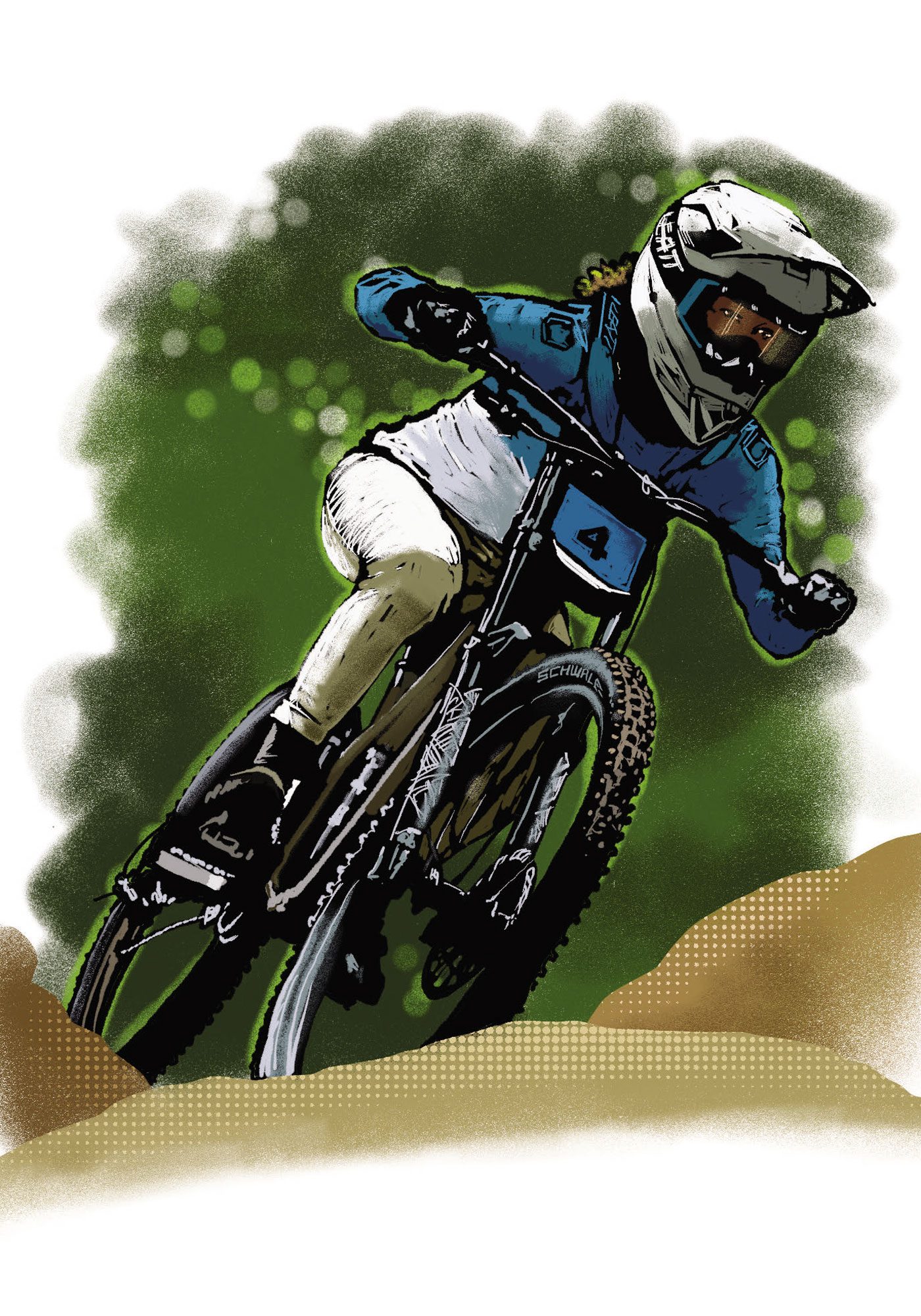
“In Leogang, I was feeling really mentally strong in my warmup at the top and on the rollers, but once I got into the start gate, the nerves hit me and I lost that composure, and that obviously didn’t work out great for me.”
Only a couple of corners into the track, Erice took a huge crash – over the bars, down a bank and onto a gravel road. A dead-stop hit that even the hardiest of rugby players wouldn’t have bounced up from.
“It was the scariest crash I’ve ever had,” recalls Erice. “I just fully body-slammed the ground and didn’t roll or anything to break my fall. Just hit it and stopped. I winded the crap out of myself so that was pretty scary because I couldn’t breathe for a bit. I can’t believe that I got away with two sore wrists and a sore torso! Nothing was broken, but I couldn’t finish the race. Looking on the positive side though, I’ve learned a lot of lessons. So, I’ll take that.”
A short two-week break between Leogang and the following round in Val Di Sole left minimal time to get her body back in shape after her crash; no downhill riding and just light road riding and gym work saw Erice nervous coming into round three. Getting back on the bike and straight into one of the most challenging tracks on the cir- cuit took all the resilience and determination she could muster.
Fellow Kiwi, Sacha Earnest, was also returning from injury at Val Di Sole, ready to take on the Junior Women’s field. Qualifying saw tight time splits between Erice and Sacha, the latter taking the number one points on the day. In finals, the cards stacked the same way, Sacha taking her first World Cup win, and Erice in second. Erice left the venue happy with her performance, and proud of how she’d bounced back after the crash in Leogang. Second was almost as good as a win!
Next up for the young star is the Downhill World Championships in Fort William, Scotland. But first, some training at team sponsor Les Orres’ bike park and a test event in Loudenvielle in the lead-up to the World Cup event there at the start of September. Erice’s calendar is chocka!
The World Cup continues throughout the year, culminating with the final round in Mont-Sainte-Anne, Canada, in early October. We’ll be watching Erice and compatriot Sacha closely as the rounds tick off. Fingers crossed we’ll have two Kiwis atop the overall World Cup podium come the end of the season – which order they’ll be in is anyone’s guess.

Ride Camp: SRAM Eagle Transmission
Words and Photography: Jake Hood
Where do you even start with this? Is it by talking about the radically new and different transmission system SRAM has just come out with? Or should I start by saying just how much of an all-star crew we had for this trip? How about the epic riding Queenstown provided? Or should we just talk about how good the food was at Atlas? Well, I guess I’ll cover it all below.
I’m a bit of a super tech bike nerd. I love trolling through the Vital MTB forums, looking at all the new and interesting stuff people dig up and find out there on the World Wide Web. How they find what they do I will never know.
They even manage to find stuff that is meant to be hidden from the public, months before it’s due to be released. It must be a nightmare for brands trying to keep things hush-hush, but it helps builds mystery and a lust for the things we can’t have yet. One of the very things I saw on this forum was SRAM’s new AXS drive chains. They weren’t really hiding it from the public, though, as it was already on a few of the pro’s bikes in the latter half of the EWS and XC season last year. The derailleur, cassette and chain were different; instead of being mounted to a hanger, the derailleur is mounted directly to the frame. I saw it and thought to myself, ‘that’s really cool, I like what they’re doing there’, then sort of left it. I didn’t really think about it all that much after that. I was sure it was going to be as good as any other AXS derailleur when it came out. Boy, was I wrong.
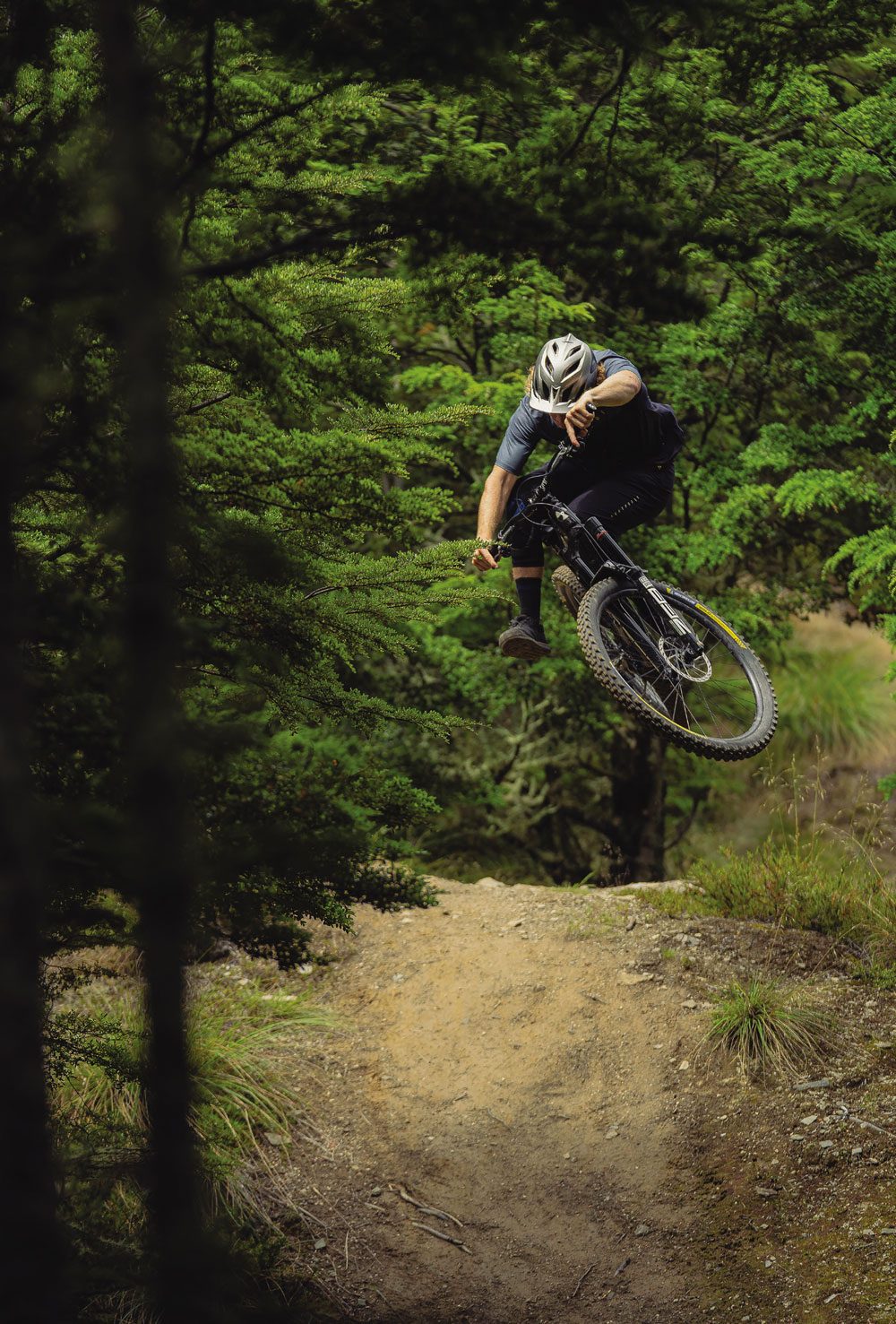
When Liam called about this trip, I was flipping stoked. Not just because we would get to ride the new product, but mostly because Chris Mandell from SRAM was coming over to talk us through the product and ride with us. I originally met Chris in Whistler, way back in the day when I lived there. I got to do a few laps of the bike park with him and boy oh boy, can he ride a bike well! I think I first read about Chris in Dirt magazine; it was a short piece about him, his BMX background and the Kona Entourage. Chris has done many things in the industry, he’s a man who’s worn many caps, including working at Kona, designing the original process line of bikes (technical Gen 2 processes) – that you could argue really started the longer, lower slacker trend – and working at Rock Shox as rear shock product manager. The latest Super Deluxe Air is his baby and that shock rips. And now he’s working for SRAM. I’d say I’m a little bit of a Chris Mandell superfan, so I was stoked to get to ride with him again and show him around Queenstown.
My original plan for the few days we had, was to start with a sunrise shoot at Ben Lomond saddle. It would have been a 4am grind up to the saddle to get the sun just poking over the Remarkables. For the five weeks prior, in Queenstown, we had really lucked out on the weather. There hadn’t been a drop of rain and no clouds to be seen, but the weather forecast was predicting rain for the days we wanted to ride and shoot. Typical. Liam and I caught up with Chris the night before the shoot/ride days started. We headed to Atlas for food, beer, planning and shooting the shit. Chris was stoked on the idea of a super-early-start sunrise mission, so we hummed and hawed about the idea. Rechecking all the weather apps suggested rain in the morning and not clearing until later in the day, so the 4am idea got sacked off. The new plan was for everyone to meet at a cafe in the morning and go from there – a bit more of a leisurely time.
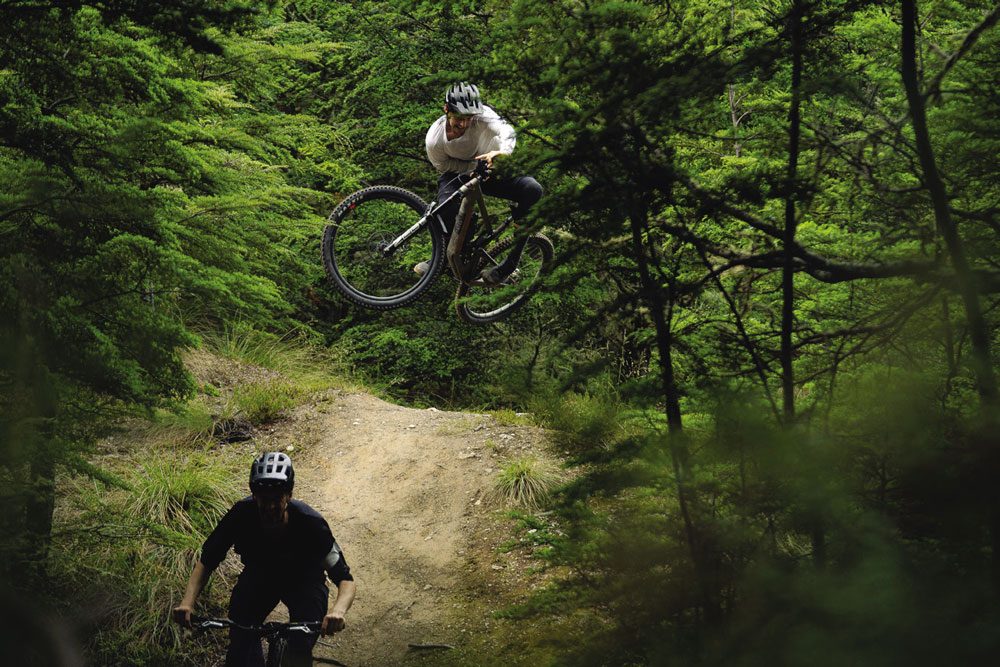
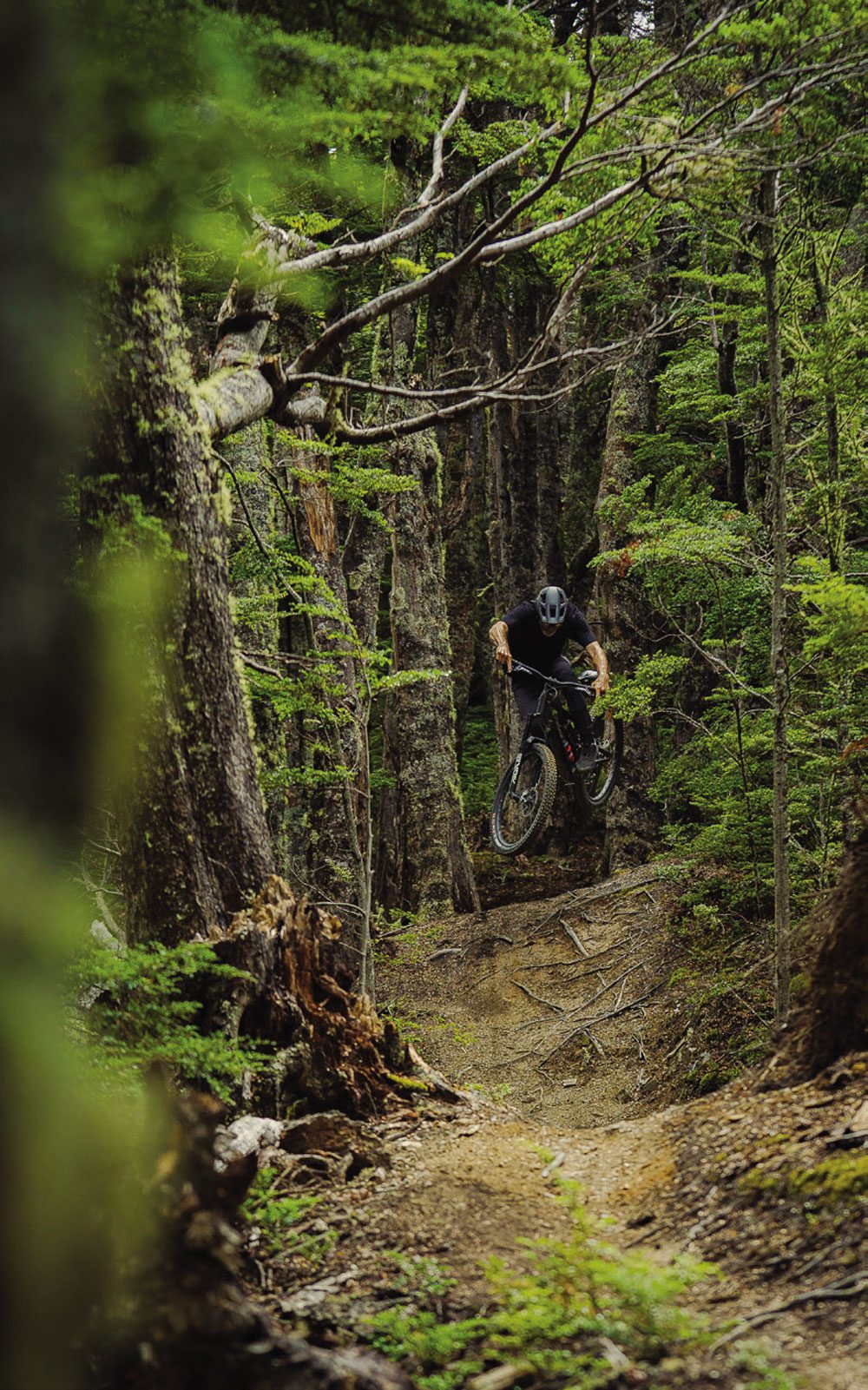
IN THE MORNING WE MET UP WITH THE REST OF THE CREW. A BUNCH OF HEAVY HITTERS. LOW-KEY SAVAGES ON 2 WHEELS, ALL AS HUMBLE AS THEY COME.
That morning, we met up with the rest of the crew: a bunch of heavy hitters; low-key savages on two wheels – and all as humble as they come.
Ben Hildred, the Vertical Metre Eater.
This lanky, tea-drinking Englishman has probably climbed more metres than anyone else in New Zealand, from Everesting and Double Everesting to being the first to complete the Olympus Mons Challenge, doing K2 and climbing one million feet in 200 days. He just loves riding his bike – and all things related to bikes. With a previous history in BMX, he brings that culture to his riding – playing about with the trail, jibing and getting creative – even on the uphills. He treats his 29er trail bike like a BMX, using his long limbs to his advantage.
Dan Booker, the Mayor of Maydena.
A flat-pedal assassin that has more raw talent than many of the top pros. His bike skills and balance are incredible. Seriously, watch some of his manual videos. Silky smooth whilst being stupidly fast. I’d argue he will de-throne Sam Hill soon for the title of fastest flat-pedal rider. It wouldn’t surprise me if you see him nearing the top step in this year’s EWS season.
Last but not least, Andrew Clark.
Hailing from Scotland but now residing in New Zealand, Andrew is the most low-key, chilled-out chap and is as humble as they come. He’s one of the best bike riders that no one knows about! He oozes style, with an ability to contort his bike and body into positions that the laws of physics shouldn’t allow. Take Newton’s laws of motion and throw them out the window when Andrew rides. It’s mind-bending to watch. All while having a massive smile on his face. I wanted Chris to meet him and see what he can do, because it really is something special to watch.
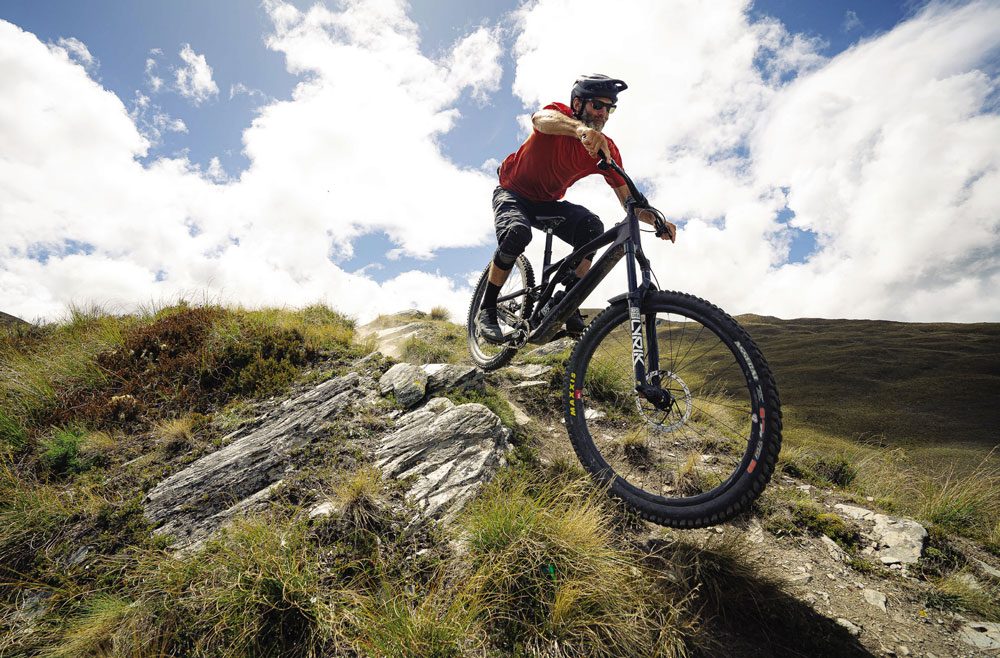
THE LEVERS NOW RUN PARALLEL WITH THE BARS. WHEN YOU SEE THEM YOU ARE LIKE “WHY HAVEN’T THEY DONE THIS BEFORE!” IT MAKES SO MUCH SENSE.
The rain was coming down as we inhaled our coffees the following morning. But, up the lake, you could see it starting to get brighter. We decided to make a move and go ride some bikes. We were heading to the beech forest anyway and like my mother used to say; “you’re not made of sugar”.
We parked at the bottom of the Skyline access road and, as we unloaded our bikes, I finally got to take a good look at the new stuff. It was quite the radical departure from your traditional mech. Mounted directly to the frame via a big clevis mount, the derailleur looked slick and futuristic. It had almost taken some of the cyberpunk aesthetic and feel that Hyundai is using in their cars with sharp lines throughout, highlighted by the brushed alloy metal on the black derailleur. It’s a solid unit of a mech – it looks like you could take this thing through the gates of hell, and it would come out unscathed. The new cassette was a work of art as well. As you look closer you realise SRAM have added X Sync to the cassette. Like, mind-blowing stuff. The new shifter – or pods as SRAM refer to them – have a more traditional, ergonomic design to them compared to the previous generation. It uses a two-button system, one placed above the other, with rubber paddles that require a push to make them feel like a shift versus a tap. The return spring built into the paddle gives you that positive, almost mechanical, feel. To me though, the pièce de résistance was the new XO cranks. They are gorgeous. A change from carbon to alloy, they are unlike anything else on the market (well, minus 5 Dev). They’re minimalist, cyberpunky and abstract. You can tell they used what they learned about their AI crank program and applied it to this. There’s a hole near the crank bolt, highlighted by the brushed metal accent that gives the look of a drawing compass. The bushed metal part has been placed in the part of the crank where you’re most likely to get foot rub, thus keeping the crank looking brand new for years for us chronic shoe crank pedal rubbers. The final piece that sets these apart, is the return of the bash guard. Why these ever fell out of fashion I don’t know, but I’m so glad to see them back. They mount on the chainring and can be removed if you see fit. I’m such a fan of these.
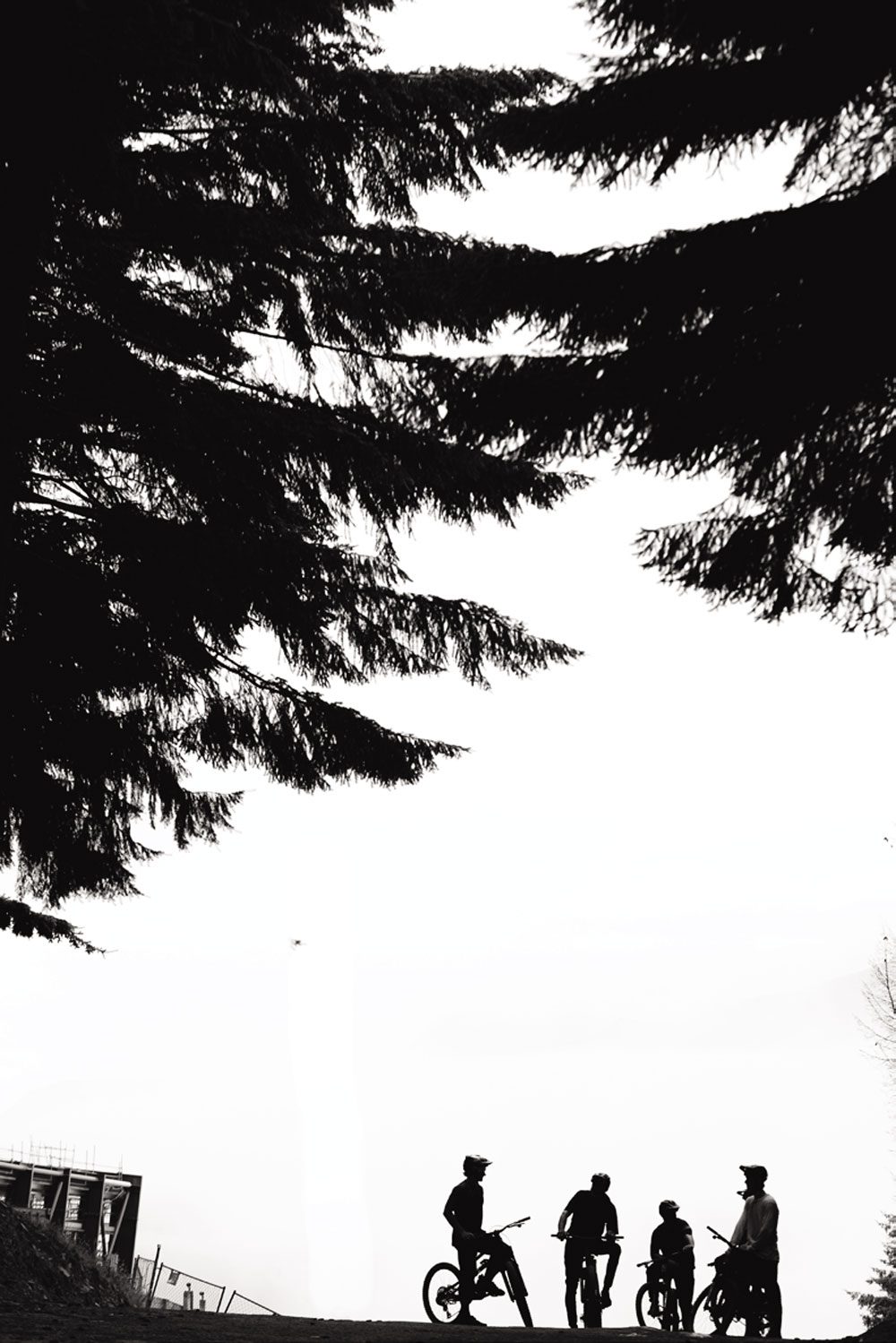
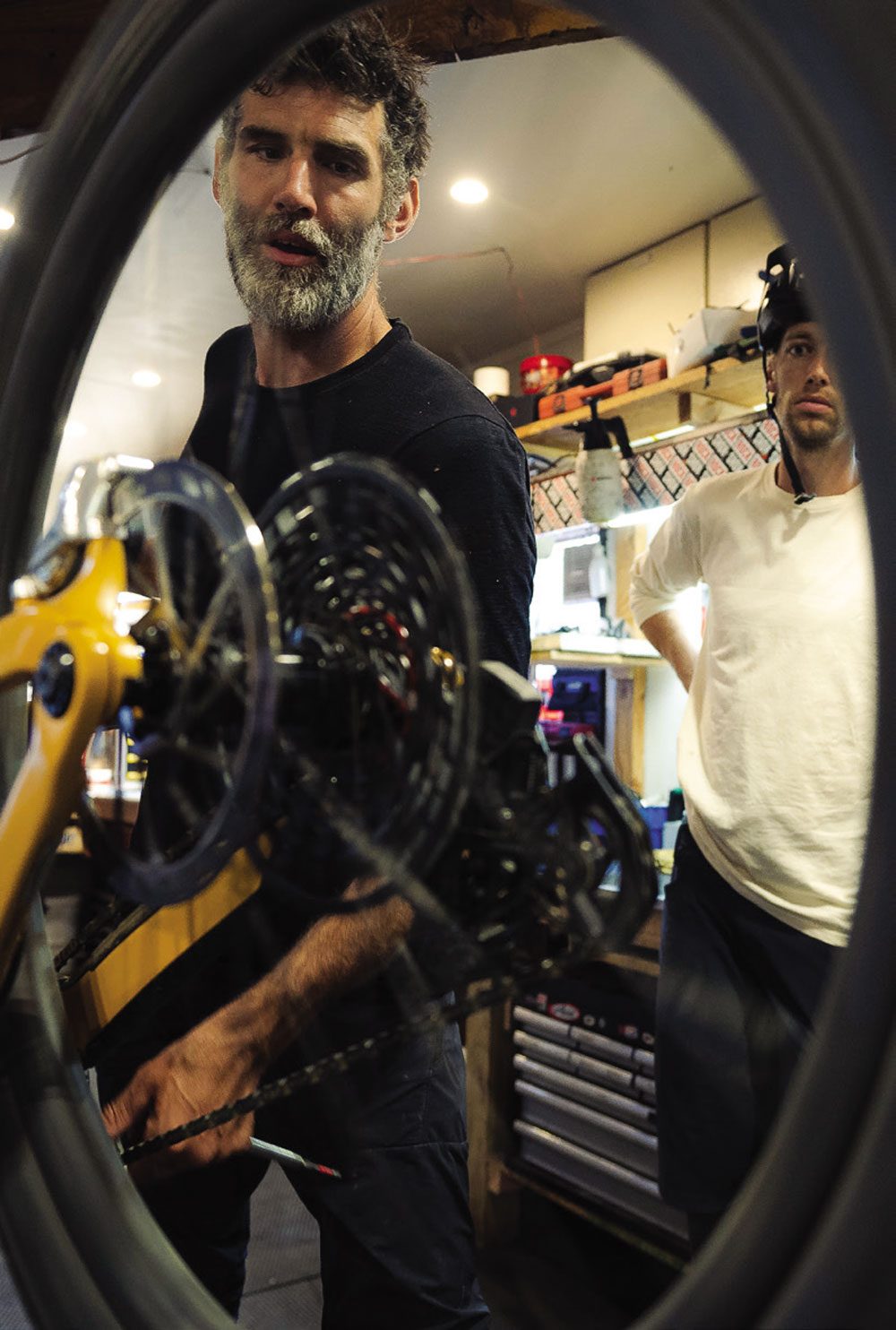
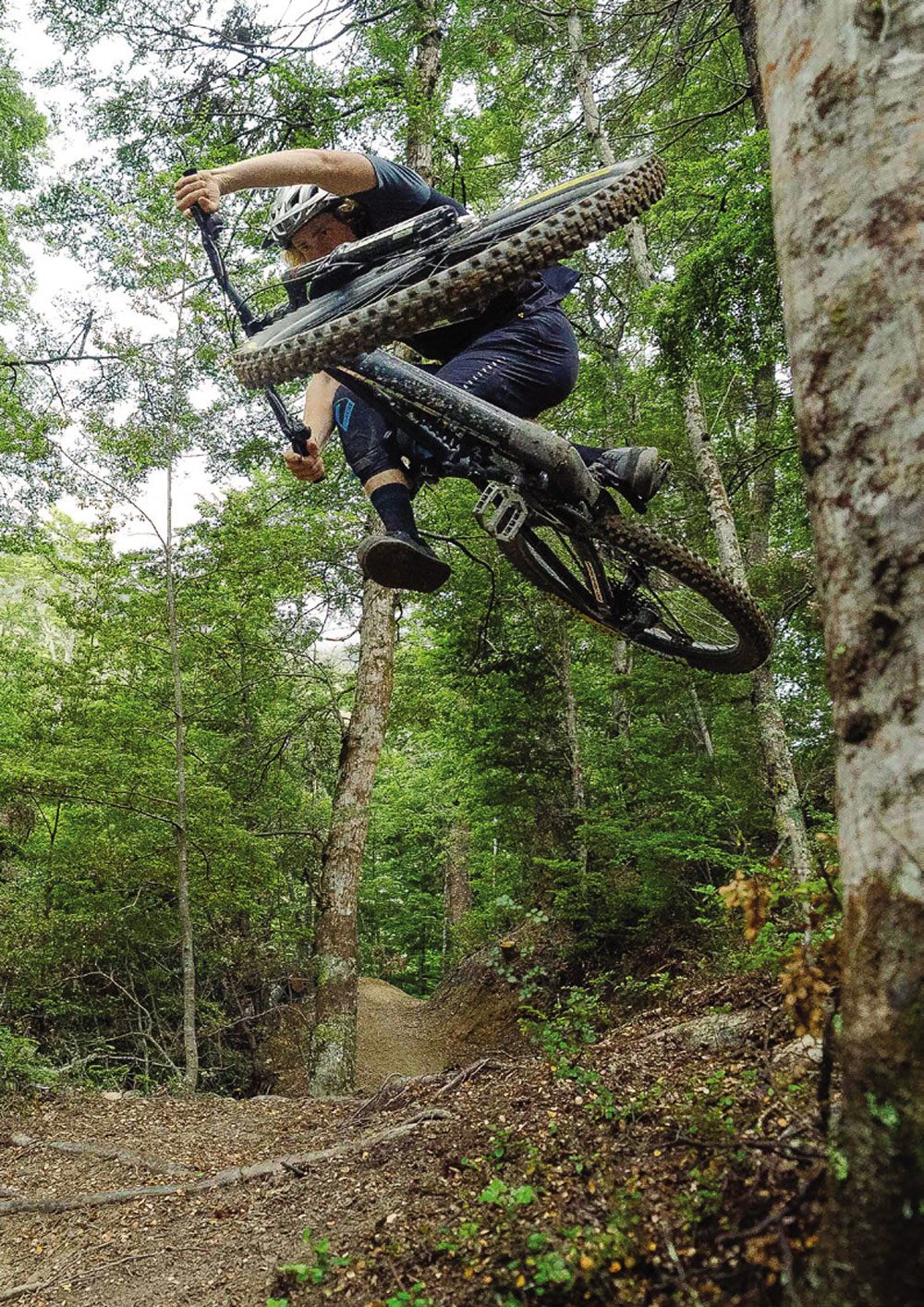
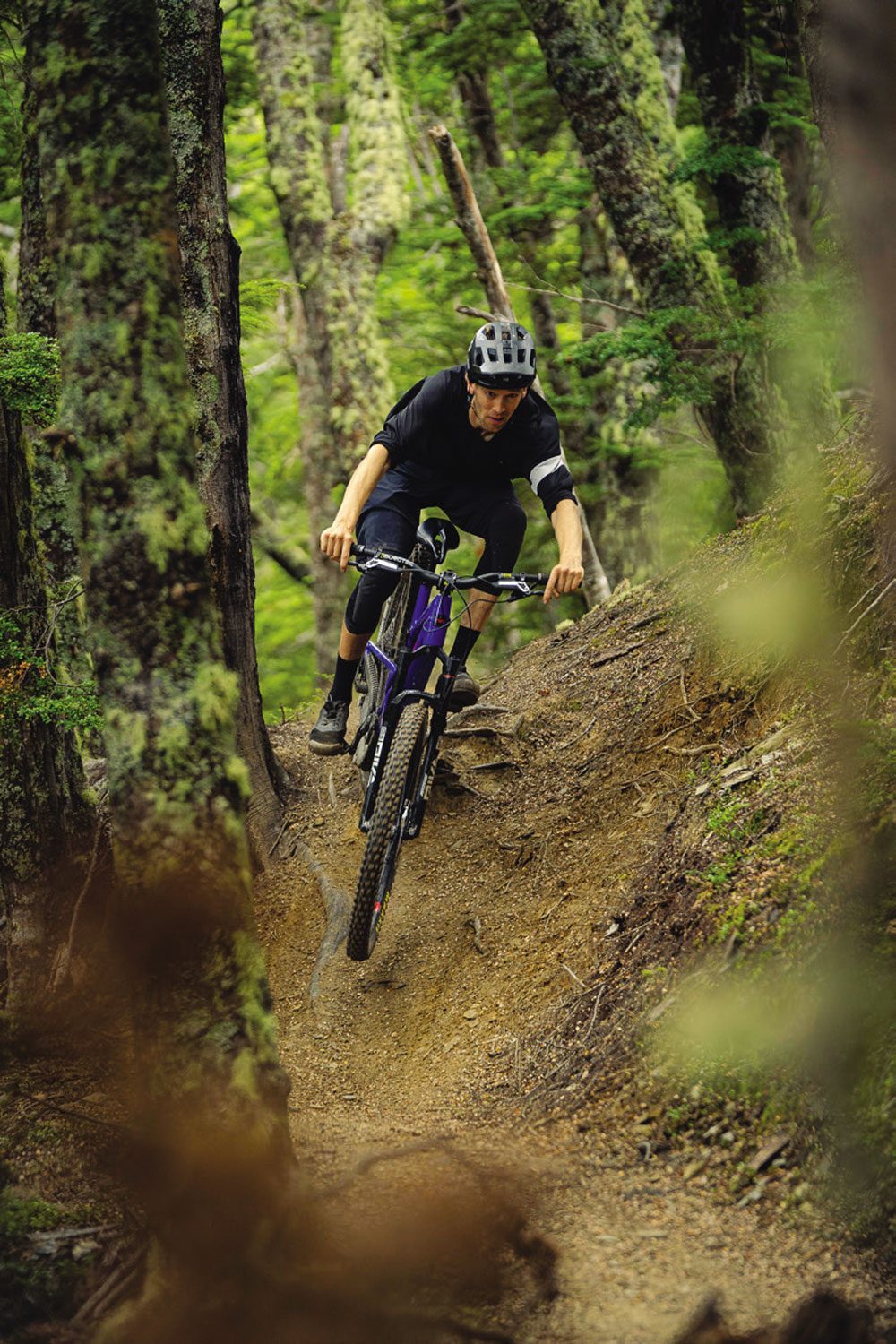
I was so distracted by the transmission that I didn’t even notice the new code brakes. The silver and black theme continued here. The polished calipers are a thing of beauty; these have stayed the same as the current codes, but where the changes have been made is in the lever. The levers now run parallel with the bars. When you see them, you’re like; “why haven’t they done this before?!”. It just makes so much sense. No more sticking out at 45-degrees, and the cables run much nicer. I feel like the 45-degree brake is just a hangover from V brake levers and no one ever thought, ‘hey, we could just make them run parallel with the bar, keep it nice and tidy’. From the first couple of pulls on the levers, you can tell there’s been some reworking for the internals. Lighter to pull than the previous code RSC. What I did think was weird, was that the new caliper – that had been seen on some of the World Cup racer’s bikes this last season – wasn’t there. Maybe SRAM is holding it back for another brake. I guess time will tell.
Chris explained that there are three tiers of these new AXS groupsets: X01, XX1 and XX1 SL.
We all jumped on our bikes and set off up Skyline access road in search of trails in the beech forest just outside the bike park. It’s a steep grind of a road – anyone who has ridden it will know. Starting at its steepest for the first third, before mellowing off a bit. The clouds were spitting a light amount of rain which was a refreshing change from the previous weeks of blaring sun and no shade – you didn’t feel like you were about to melt into a puddle by the fourth steep switchback. The steep fire road was the perfect place to test the gears under load. The gradient means you have to put a lot of force through the transmission and, being a road, it let you concentrate on what the gears were doing when you shifted. I guess I was in the perfect place to shift like an idiot under load and test these new gears. From the first shift, you realise this is something special – it’s not just another groupset, another new drive chain, it’s more than that. It’s the crispest shifting I’ve ever experienced. It has such a positive feel to it. There is that reassuring ‘clunk’ as it moves into gear, almost mechanical but with the precision of electronics. Lightning fast; instant, precise. Even under load in the worst possible moment to shift, it was still absolutely light years ahead of everything else. Whatever you have learned about not shifting under load, you can now throw out the window. This new system does it with ease. I think a big factor is the added stiffness of the direct mount, and the X Sync teeth on the cassette, but SRAM have also made many tiny tweaks that have really optimised the system. We’ll discuss them later.
The pace was hot, with Ben leading the charge. I guess that’s what happens when you are riding with a bunch of absolute savages. The relentless access road mellowed slightly towards mid-way and gave me time to get my breath under control. We stopped at the mid-way point and Chris told us some stories about the adventures he’d been on. After a quick break, we set off again up the second part of the road. I’ve ridden this road so many times over the years and it never gets any easier. If you get fitter, you just end up going faster. It’s surprisingly addictive to pedal up the road – even though it shouldn’t be. As the trees start to thin out, you reach the Skyline top gondola. We continued heading up via Beeched As, then Ben Lomond walking track to Lower Missing Link – a favourite trail of mine. It’s a perfect balance of flowy beech forest mixed with a little bit of tech. It’s a fantastic trail that works for all abilities, and it was running great after recent maintenance work by the crew at Elevate Trails.
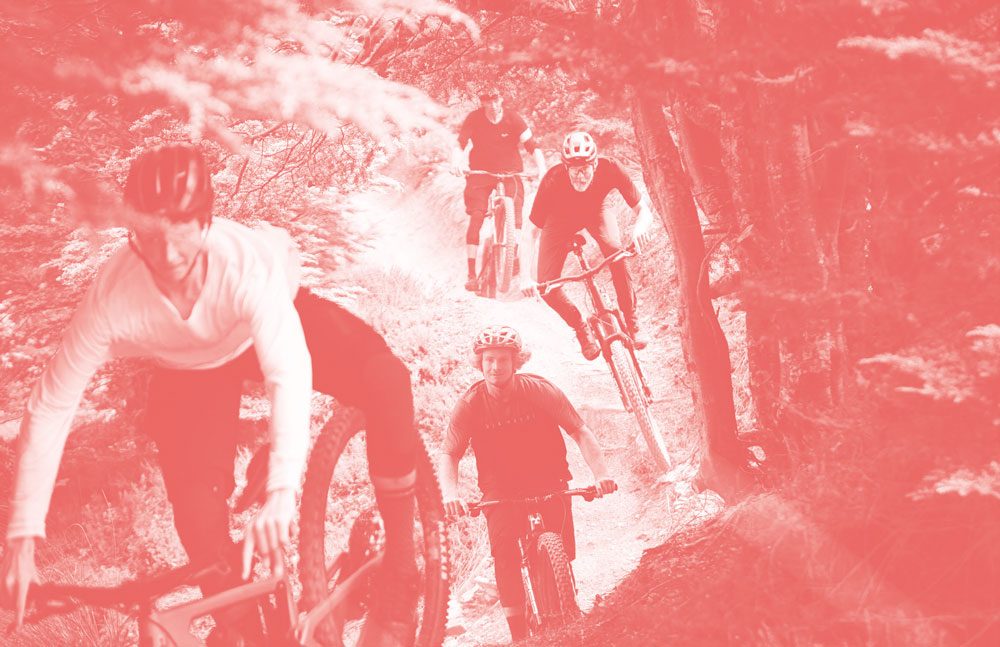
The trail starts off out in the open and winds its way down into the beech forest – this is where it really gets good. We stopped and sessioned bits on the trail while I shot photos. The first feature we stopped on was a bomb hole compression to a small jump. From the get-go, Andrew was blowing minds. He had literally just jumped on the SRAM-equipped Megatower that morning, without any time to get used to it, and rough settings. He came over the rise into the bomb hole, doing an inverted nose press over it, all tucked up in ways that shouldn’t be possible. Smooth as you like. Chris’s face lit up – “what the heck?!” From that point on, I knew we were in for a good day.
We worked our way down the trail, sessioning different parts. Everyone fed off the energy of each other. Dan would be throwing some huge shapes off the smallest mounds while also travelling at a ridiculous speed through the turns. You could feel the earth trembling as he passed. Andrew was doing Andrew things; bending the laws of physics and gapping into switchback turns that shouldn’t be gapped into. Both Dan and Andrew’s styles complement each other, making it so good to watch. Chris was the hype man of the day, throwing out hype and stoke every time something cool happened, genuinely so excited by what was going on. Throwing out ideas. It was infectious. Everyone was just going harder and harder. Chris and Ben were bringing their BMX background to the trail. Throwing down tweaks that are better than a lot of the pros, dancing their bikes down the trail in such a beautiful manner. Smooth and light, their long limbs smoothing out the compressions, they’re two great people to watch flow down a trail. Such a joy to watch. Fantastic.
After Missing Link we headed down Creaky Winders and shot some more photos. This is another absolute gem of a trail. It snakes off of Beeched As and is a perfect mix of tech and flow. It’s niggly and tight in some spots; weaving up and down. It keeps you on your feet with lots of little features, surrounded by beautiful beech forest. It’s tremendous. Everyone was just peaking on this trail; fizzing and pushing each other, over and over. We worked our way down the trail, checking off features as we went. Near the end of the trail, I could tell people were getting tired. Mistakes were happening. I called it a day on the shoot. It was time to head to town and refuel.
We followed the Fernhill Loop back to the bike park and down Squid Run in a train. The crew might have been tired but that wasn’t slowing anyone down. We weaved our way down trying to hold the wheel of Dan. It was another good test of the transmission, which was a lot quieter than my current GX AXS – less chain slap. The shift was more positive even on the way down. Some will say, “ah yeah, that’s just because it’s brand new!”. But the set I was riding wasn’t – it had been used for a few weeks, making how well it worked even more impressive. It was an absolute blast training down Squid Run at the pace we were going. Borderline dangerous with everyone feeling so tired. At the bottom, we all had huge grins on our faces.
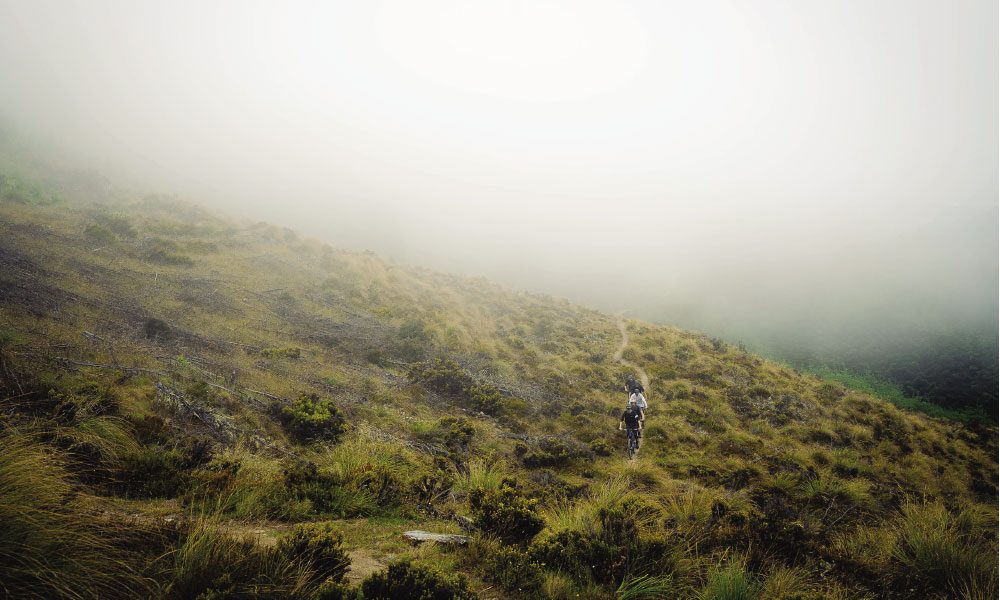
THE MORE I RODE THE PRODUCT THE MORE I LIKED USING IT. IT’S AN ABSOLUTE JOY TO USE.
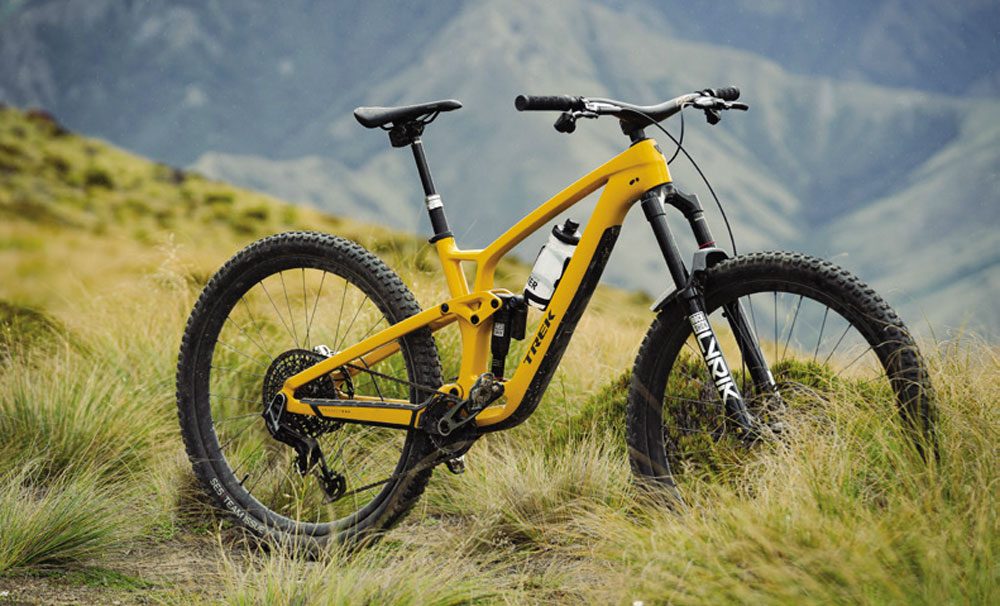
All good rides finish with a beer, right?
We rolled back down to the local watering hole to refuel – there was only one place to go, and Atlas was that place. I’ve said it once and I’ll say it again: it’s the perfect after-ride spot, with great atmosphere, lovely staff, killer food and 22 taps of fantastic beverages to choose from. We fueled up on beer and burgers whilst chatting bikes and trails. Before the inevitable food coma set in, we headed out quickly for a little more time on the products. A few chilled laps in the Fernhill/ McGnarly area, with one lap down Skyripper and a McGnarly to finish the day’s riding. The more I rode the product, the more I liked using it. You just know that when you pull the button to shift, it will do it; there’s no need to worry about a little under-power half pedal to help it shift – just pedal as you would, and the chain will shift on the cog. It really does improve the enjoyment of climbing. The slightly altered rations in the cassette were also a welcome improvement. No more big jumps between the 42t to 52t; instead you 44-52 jump, which feels a lot nicer. It doesn’t sound like a lot, but it makes a difference – there’s less of a sudden change in ratio. It’s hard to put in words the feeling of the new transmission over the previous stuff, it’s just an overall feeling of a much nicer time while shifting. A good analogy would be to compare driving a car from 10 years ago to driving a brand new, modern car with all the bells and whistles. Both do the same thing, but the newer car is easier to drive, more relaxing, quieter, with more features to assist you. Overall it’s just a more enjoyable experience.
Both laps of the Fernhill area were a blast. The party train down McGnarly was ridiculous. Bikes were dancing left and right over the jumps. Berms were being blown up by Andrew, Dan, Ben and Chris. Dust explosions everywhere. It was flipping awesome. Too much fun. Then things started falling apart on Skyripper. The long day had taken its toll, everyone was tired and mistakes started happening. I set off first, only to hear carnage behind me. Dan had blown off take on the steepest part. I think Andrew also had a wee washout. Everyone’s concentration had gone. It was time to call it a day on the riding.
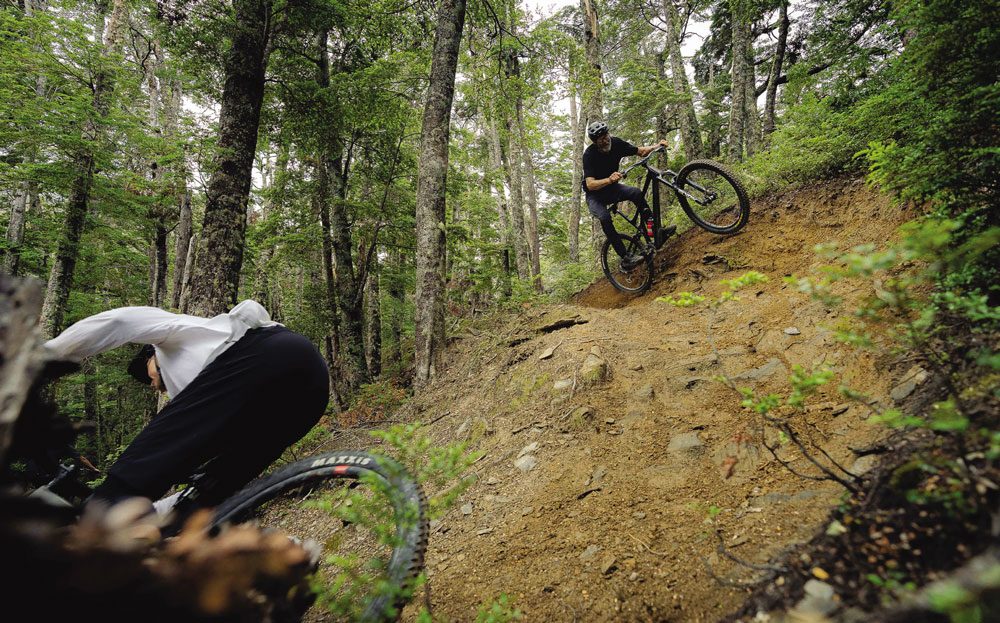
“THAT’S ALL VERY WELL A GOOD BUT WHAT HAPPENS IF I CRASH AND ABSOLUTELY SMASH IT INTO A ROCK OR SOMETHING AND MANAGE TO BEND IT?”. WELL YES. SHIT DOES HAPPEN.
We rode back to town and into Vertigo Bikes for Chris to give us the full tech run down on the product and how it works. The new system is designed to work on bikes that use a SRAM UDH hanger interface. A couple of years ago, SRAM brought out the UDH (universe derailleur hanger). The purpose of that was to create a better derailleur hanger that bike brands could adopt. It was a standard that made sense and, slowly, more and more bike brands have been getting on board with the standard. It was a solid move forward for the bike industry. This new AXS system builds on top of that: the hanger is replaced by a direct mount clevis system to the frame. In doing this, you massively increase the stiffness and strength of the derailleur. It’s not just held by a single bolt to the hanger, instead, it mounts both sides of the frame.
When you induce the hub, frame and axle, it creates an interface that is incredibly stiff and really strong, so much so that you can put your bike on the ground, stand on the derailleur on one foot and get back on your bike, ride away and the shifting will still be perfect. That’s not possible on a normal hanger set-up – something will bend. I had my doubts about it until Chris showed us. It was super impressive.
The derailleur keeps the override clutch system that allows the mech to move out of the way when it’s stuck by an object. It’s fantastic, and something that seems to get used regularly on my current GX AXS. It has saved my hanger from getting bent so many times and I’ve never needing to straighten it like I would have with a normal cable set up. The clevis mount combined with the override clutch ensures you have a system that should, in theory, be very hard to put out of tune. It’s just a more reliable system; more pierce gear shifting, and a better experience on the trail.
SRAM has introduced other technology to these groupsets: flat-top chains that come from their road bike groupset. These increase efficiency and durability while looking flipping awesome. X Sync can now be seen on the cassette, improving the shifting and chain reaction. It really lets you shift under load without the worry of skipping gears. I’d imagine it also helps the durability of the cassette. The recent SRAM x Dome cassettes have an incredible lifespan if you replace the chain regularly. I think these new ones will blow them out of the water as long as you keep up-to-date on replacing the chain when it’s worn.

The smart engineers at SRAM Germany really went to town on this. They have gone over everything with a fine-tooth comb. Chris said that they looked at all the warranty data collected over the past 10 years, and tried to eliminate as many of the issues as they could.
The way they did was by redesigning the whole system and imagining a new way of doing things. The clevis mount gave the ability to produce a far superior product and gave the engineers more ability to optimise every last bit. There are so many little things they have done that just make it a joy to use, such as the slight bend in the derailleur cage. It looks like it has been bent on the trail but, in actual fact, it’s meant to be like that. It helps keep the pulley chain interface better aligned when in the extreme ends of the cassette. There are two different modes to set the cage to, depending on the chainstay length. The new magic jockey wheel, that features on the XX1 and XX1sl models, ensures it will still spin even if an object gets stuck in there.
As well as all of this, set up has become easier than ever before. I’m not going to go into the whole way you go about it – the SRAM technical manuals have that all dialed and are a great source of information. “We gave this product out to some of our racers this year, on the EWS, and the mechanics keep overthinking the setting up of the system,” explains Chris. “It can’t be this easy, they keep telling me.” Easier set-up leads to fewer problems and fewer tuning errors from the get-go.
Now, I imagine that you’re thinking, ‘that’s all well and good, but what happens if I crash and absolutely smash it into a rock and manage to bend it?’. Well, shit does happen and, in that case, on a normal hanger mech situation, both of them would probably be a full write-off and due for the bin. In the case of this new system, however, I’d be very surprised if you could bend the clevis. It is really that strong and stiff. The good news is that the rest of the derailleurs are rebuildable. If you do damage a part, it will most likely be replaceable. You can remove the cage without using any tools. A simple little tap while unscrewing the cage will loosen it up. The tension spring and clutch are now built into the cage.
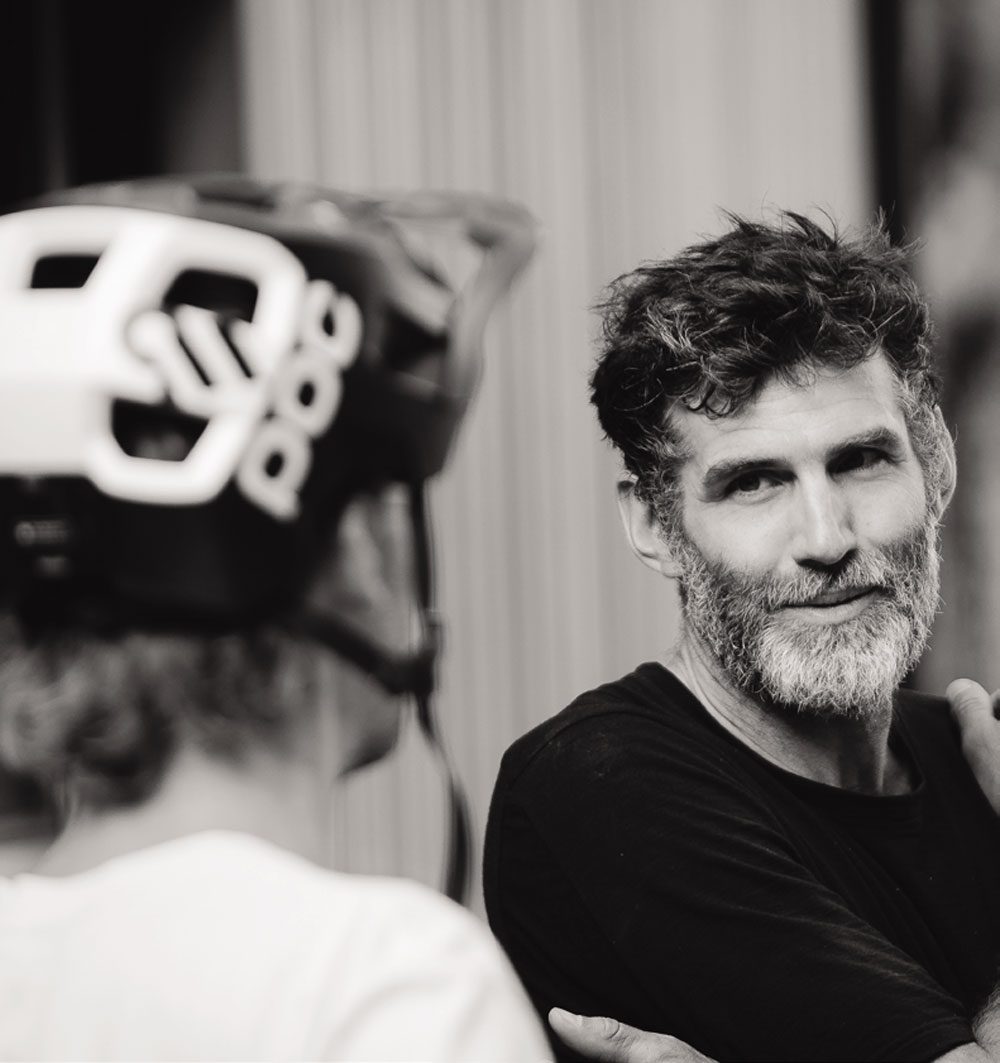
Servicing and cleaning these parts is super easy and something that can be done in no time at all. The protection covers on the B-knuckle and outer link ensures they are fully replaceable, or upgradeable to the XX skid plate. Is your mech looking a bit scratched up and tired after a year of use and abuse? Simply slap some new ones on and it will look brand new. I’m really behind this, I love it when brands make their products rebuildable and serviceable – products they want to see being used for years and years, products you can fix rather than just replace. It’s the way our industry should be heading instead of adding to a throwaway society just because one tiny part breaks or wears out that’s not replaceable.
The next day we were up and out, bright and early again. Straight back up Skyline access road then straight up the Ben Lomond walking track. Now, this is a walking track, but there must have been something in the crew coffee that morning because they pedaled up the whole thing. I’ll say it again: absolute savages this lot. It’s pretty relentless the whole way, just a hard going grind, but it rewards you with breathtaking views once you reach the Ben Lomond saddle. There was now 1000m of vertical descent ahead of us, back down to Queenstown. What a treat to be had. We hopped onto Upper Missing Link and stopped at the rock feature near the top. There, I had this idea for a photo I wanted to shoot. Everyone had a run-through, wall riding on the rock, and I got what I wanted. Chris pushed back up to hit it again. He came into the rock at a weird angle, going straight into it; next thing he extended his bike up over vertical and foot planted on the rock. Everyone was freaking out. It was so unreal! There had been a lot of BMX chat on the way up and I guess Chris was feeling inspired. I didn’t think a foot plant on that rock was possible. Next, Dan and Andrew started giving it a go. Popping up high before planting the foot, with the bike basically upside down. It was mind-bending. If they got the foot placement wrong, it would have been a good fall down the other side. Dan and Andrew just shut the rock down. Amazing stuff.
We continued down Upper Missing Link, weaving and dancing our way along the ridgeline, the narrow singletrack snaking through rocks and tussocks. From there, we headed down what you could argue is one of the best trails in New Zealand. I’m not going to tell you where it is or what it’s called – if you know, you know. It’s an absolute gem of a trail. A true mix of everything. Three trails in one – flowing, flat-out beech forest and dark turny pines to Val de Sol-like rock gardens. It’s got it all. As you hammer along the beech forest section, you’re treated to huge compression and little gaps. Flat out straights into tight turns. Cornflakes cover the track and hide the roots below. The new brakes really started to show their improvement over the old ones. The power seemed to have increased, the lighter lever feel was a welcome addition, easing the arm pump on this long run. The classic SRAM modulation was still there, offering heaps of control.
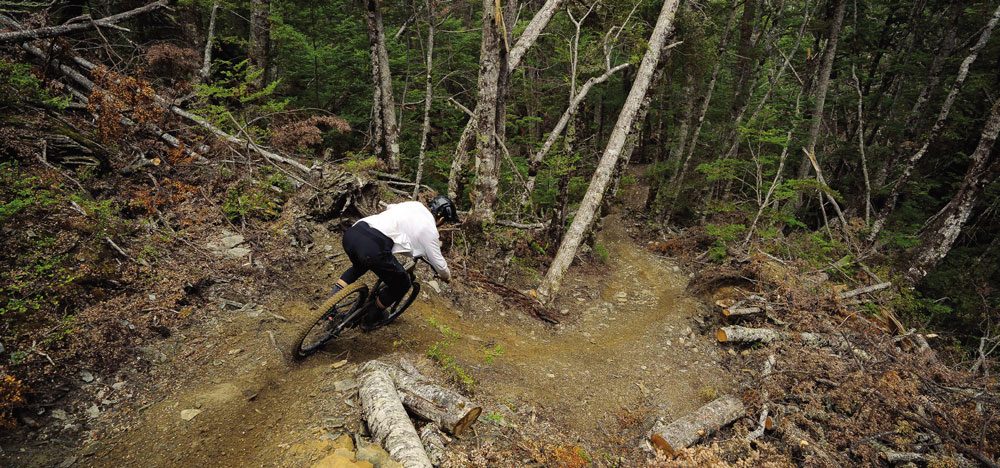
Once you finish the beech part of this trail, you hit the dark pine at what feels like warp speed. Your eyes don’t have long to adjust to the light conditions; turns come up fast, a couple of lefts and rights before coming into a rock roll feature. From there, you head through a small slither of Sycamores, lighting the place up in green haze. The dirt in this section is treacherous in the wet, almost like riding on ice. Finally, you end up with what I imagine a fresh, slightly tamer version of Val de Sol would feel like: deep loam and lots of rocks. I was barreling through this section and smoked the derailleur into something. The sound was horrendous. In my head, I was thinking, ‘ahh, well that’s fucked then’. I didn’t stop though, and continued on to the bottom of the trail. To my absolute amazement, it was fine. Although it sure looked like it had been hit – there were scratches, a big chunk of material missing and rock debris – the shifting was still absolutely perfect. If this was any other system, this would not have been the case. Really impressive.
You know where this ends. It’s the end of the ride, we’re hungry and thirsty. Only one place to go then – back to Atlas. We cheers-ed to a fantastic weekend of riding over some cold crisp pints. What a weekend. What amazing trails. What a tremendous crew. And – what a fantastic transmission! The new benchmark has been set.
SRAM has really knocked it out of the park on this. It’s hard to think how you can improve on what they have delivered here. It’s truly fantastic. It’s robust, designed from the ground up for mountain biking, and finally moving on from the hanger system that came from road bikes so many years ago. I’m a massive fan of the ability to be able to rebuild and replace parts on the derailleur. The shifting is light years ahead of the others. Will this groupset make you faster? You could argue that it will, but I don’t think that’s the right question to ask. Will this groupset enhance the experience of your ride? 100% it will – it’s an absolute joy to use; it makes you want to shift more and it’s easy to set up. It’s built to last; is robust and strong – you don’t really have to worry about it. Going off the reliability of the previous AXS stuff – which was in my opinion the best out there – this should be able to last an apocalypse. I’m not normally the sort of person to fork out for an expensive drive chain, instead, I normally run the cheapest I can get away with. Gen 1 of AXS changed my mind about that a bit, but this new stuff has 100% flipped my view. It’s something that’s worth saving up for and putting on your next bike. It’s something worth investing in. You won’t regret it.
Hat’s off to you SRAM. Well done.
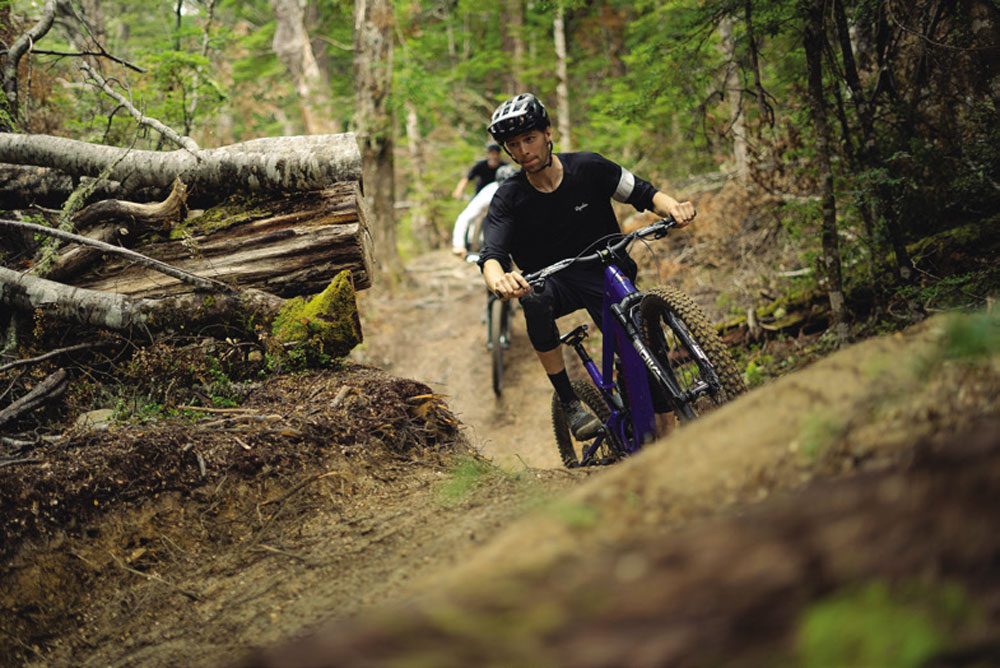
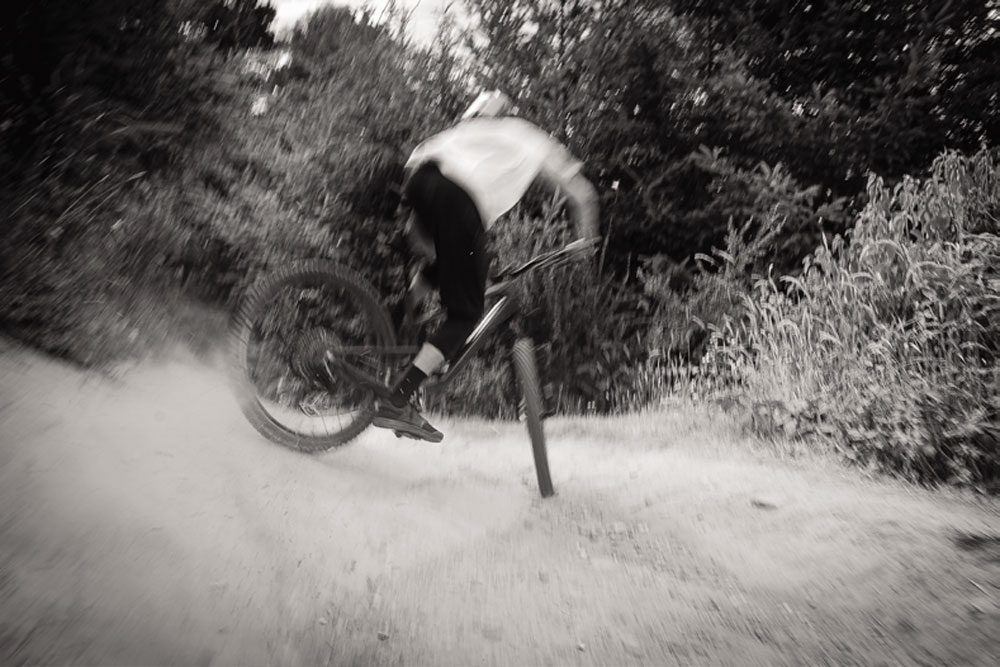
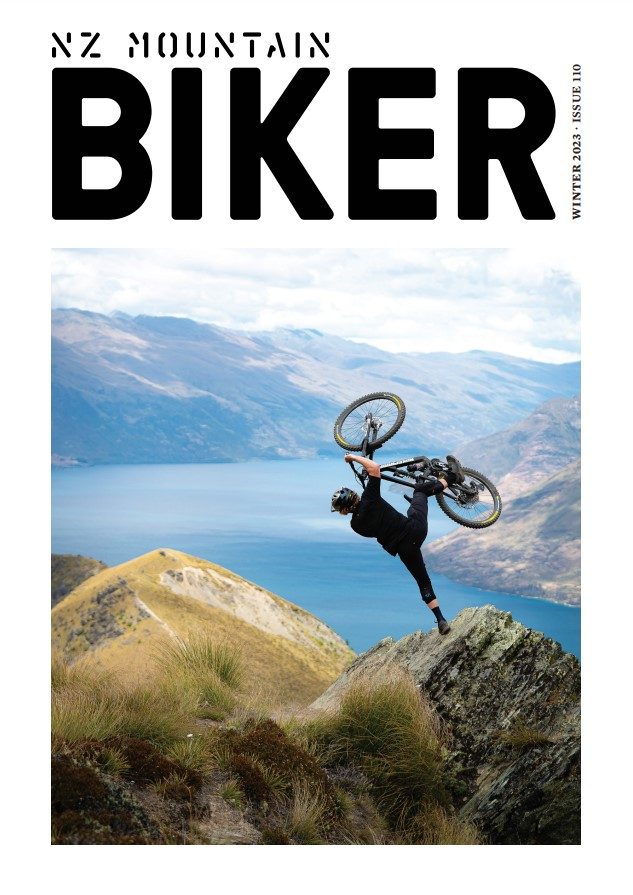
Double Everest
Words: Ben Hildred
Photography: Callum Wood
On February 26 this year, I set out to ride a double Everest: 17,698 vertical metres in a single bike ride, off-road, using a loop that incorporated a series of my favourite mountain bike trails in Queenstown. Double Everesting has been done before on road bikes, so I knew it was possible, but I wanted to know how it felt, where it would take me, and what it would be like scaling a mountain on-trail, and descending technical singletrack, time after time.
My lap started at the lake front and climbed up to the access road on Queenstown bike park. I’d then pedal the full access road, onto the ‘Beeched As’ singletrack, then follow the walking track up to Ben Lomond Saddle. Once at the saddle, I could descend, first on ‘Upper Missing Link’ – an alpine, rocky, tech singletrack – then on ‘Lower Missing Link’, a flowing, open trail that met the beech forest half way down before hooking onto ‘Creaky Winders’ which is more blue/black tech winding through the forest. When the trail met the creek, I’d turn left onto the Fernhill Loop trail until reaching ‘Hammys’, a flow trail to get to the midway clearing of the bike park. At midway I’d drop into ‘Thundergoat’ before taking ‘KY’, a steeper chute line, finishing off with ‘Trouser Snake’ – everyone’s favourite black tech pinch to meet the road and the bottom of the bike park.
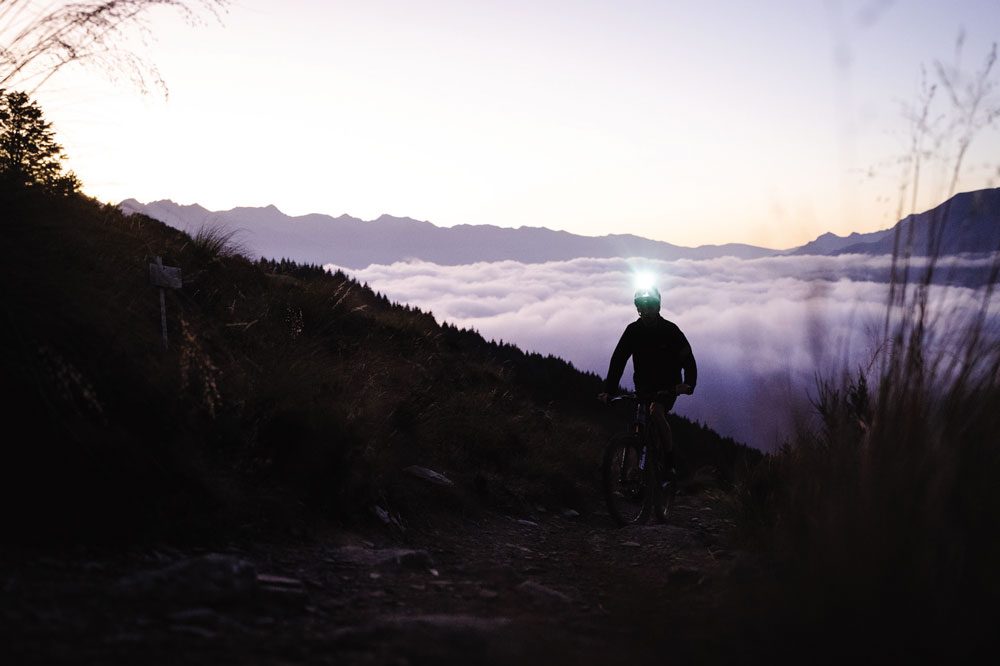

After sixty plus hours of sleep deprived pedal of sleep deprived pedal turning, events felt a turning, events felt a little less cohesive and little less cohesive and the world nonuniform.
After sixty plus hours of sleep deprived pedal turning, events felt a little less cohesive and the world nonuniform; laps were completely forgotten, time didn’t pass the same, my bike moved differently beneath me, and body parts became numb, cold, and alien. Walking was novel and eating was the only chore that hindered the new norm – making circles with my feet.
12:00am, February 26th. Wakatipu lake front; a navy sky diluted by street lights. Calm. About to pedal more than I ever have. Bike ride begins.
1:10am. First ascent complete, Ben Lomond saddle. The distant constellation of Queenstown feels incandescent, a familiar glow in comparison to the Milky Way, floating and exposed above. Some 1000 metres of elevation every lap. First lap far too fast, overly excited. Headlight exposes the descent; black singletrack snakes a dark bottomless ridge-line, insisting pensive focus.
6:58am. Daylight emerges over the silhouetted Remarkables, the solid black gate generously sur- rendering first light to Queenstown. Far enough into lap four to be above the cloud, an inversion making the repetition of pedalling feel accomplished so early on. First three laps a sub two hour loop, productive yet unsustainable, remembering to eat little and often. Positive, full and eager.
1:10AM The distant constellation of Queenstown feels incandescent.
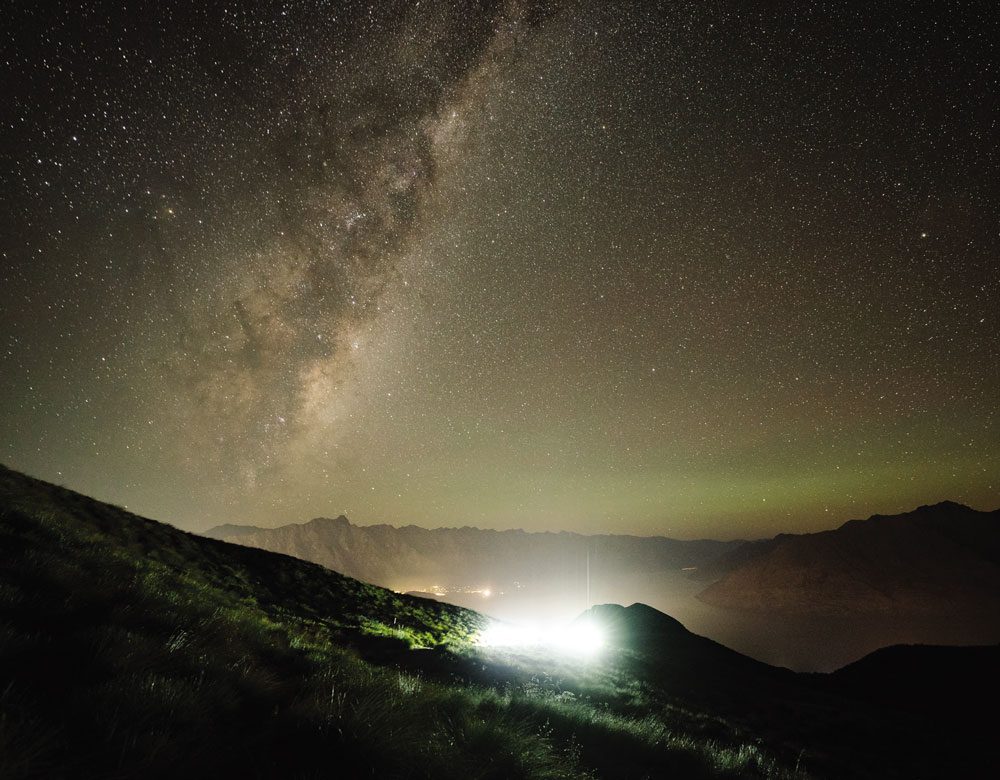
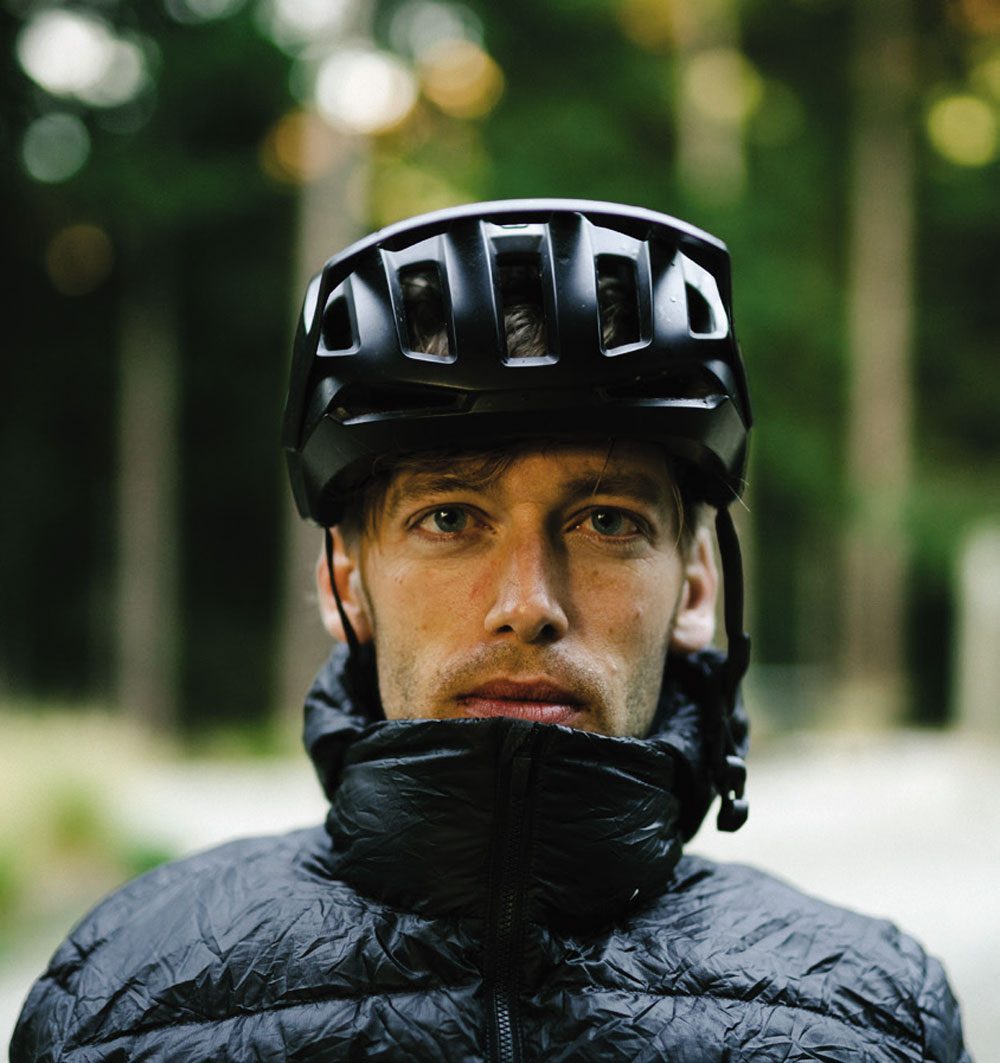
1:37pm. Midday. Progress has settled down to a comfortable churn of familiar and trusting trail. I’m 6100m elevation in. Tried eating one of my pre- made marmite, peanut butter and spinach wraps – swallowing that cocktail of stodge the hardest task so far. Still, onwards and upwards. Grateful for the necessary lathering of suncream needed for the hour of alpine exposure coming up, beautiful weather. Thoughtful and focused.
5:11pm. Soon to tick over 8000 metres. Stopping in the last patch of beech forest before the now relentless exposure of the loops summit, Ben Lomond saddle. Looking for my hidden backpack stashed in the bush, vital for the last push and descent. Chocker with food, water, smoothie and essen- tials. It had been taken. Later found to be a good Samaritan naively handing in lost property. Visibly, mildly distressed I was approached by a young family with a backpack baby, insisting wildly generous help. Lap fuelled by wildberry baby food. Thankful and persistent.
7:36pm. Top of lap nine, a big crew of good sorts see me over the first Everest, savouring the energy, anticipating looming darkness. The shadow of Ben Lomond slowly swallowing up my trail. Hasty to avoid the chill, we descended straight away in a train of hoots and hollers, harnessing everyone’s stoke to get me up here another eight times. Grateful and brimming. Onto new, untrod territory.
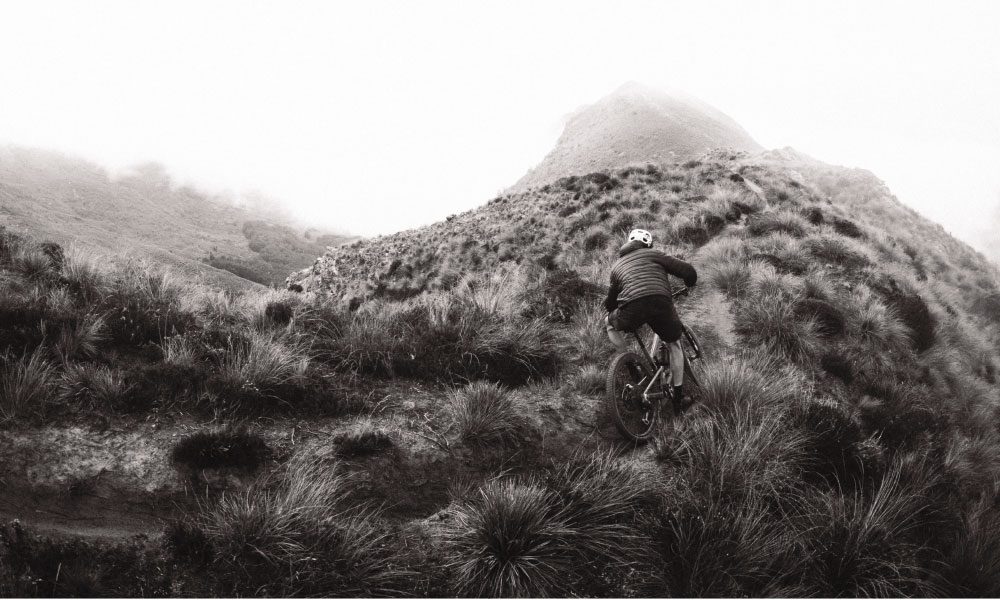
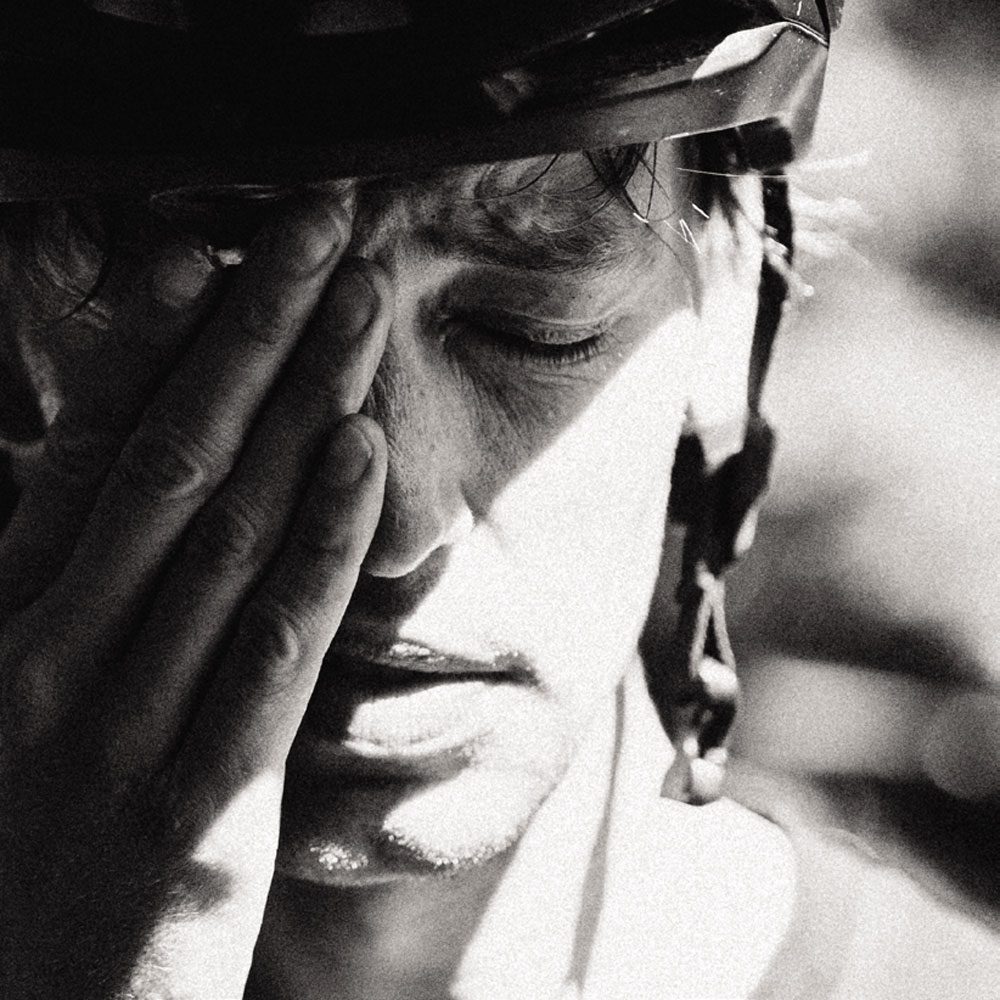
Distance: 277.56 km
Moving Time: 41:28:53
Avg Speed: 8.3 km/h
Elevation Gain: 17,925 m
Avg Power: 198 W
Calories: 26,531 Cal
Bike: Santa Cruz Tallboy
1:10am. The second night. Soon to turn over 10,000 vertical metres, willing myself to carry on. The short sighted dark compounded with a distinct and concerning drop in temperature, battling the natural circadian urge to sleep. First attempt to have a nap, I set an alarm for fifteen minutes. It went off instantly. With phone still in my hand, unsure whether I’d slept, whether my thoughts had been dreams. I’d push to the top in great company, words were few and far between, all energy used to go forward. The mountains now sleeping, shadows framing another feast of stars. Numb, though now very invested.
Two, three, four? Maybe five? The next couple of laps I cannot recollect, somehow I’d chalked up another two thousand metres with two full loops. The only thing I remember was being laid in dry, dead pine off the side of the trail where I’d fallen. Somehow, on the climb, I’d taken a tumble. Still unsure whether it was a handlebar nap or poor coordination. Thankfully unscathed, and pulled back up to safety, we carried on. I’m indebted to Jamie and Annie and their company that entire night; their selfless, duty-bound help got me through.
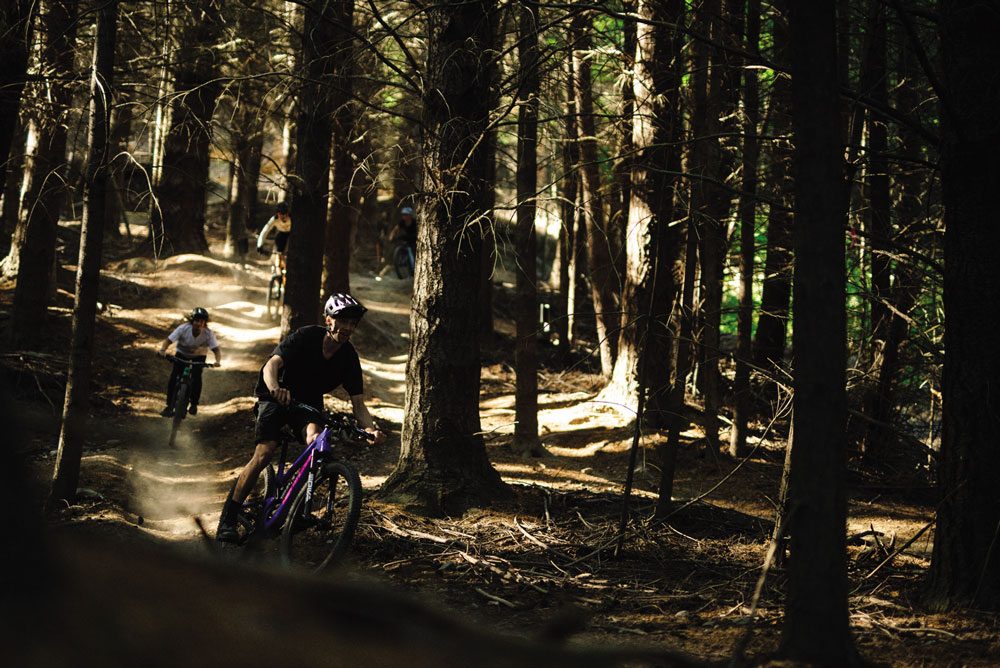
5:11PM Thankful and persistent.
After that minor ordeal, roughly five in the morning, we were gifted something so superlative it got me brimming with joy. Our mate, Steve, met us halfway up a mountain. Still dark, his head torch illuminated the steam rising from three ready-made Yorkshire teas, sat trailside. The sun was on its way, the metres were disappearing, my body was waking up and it tasted like victory. Relieved and excited for first light.
7:30am. Not out the woods yet. I would say I know the Skyline access road better than anyone, but, majorly sleep deprived, this well-trod road threw a few curve balls. In the early hours of light, just before mid-way and in the nick of time, I spotted a deep, clear water moat, impassable and flowing over the road. I was hallucinating.
Grabbing a handful of brake, I almost came to a stop before it disappeared. I made a more considered effort to keep my head high and look ahead, setting small goals to pedal towards and keep my mind occupied and focused. Luckily, I had my head held up, as no sooner had the moat disappeared a series of unevenly placed wooden door frames jumped out at me. With my peripheral vision absent, it took my upmost attention to swerve and weave through them. The oddest experience and the last of that carry on for the remainder of the ride. Confused and bemused we rode on.
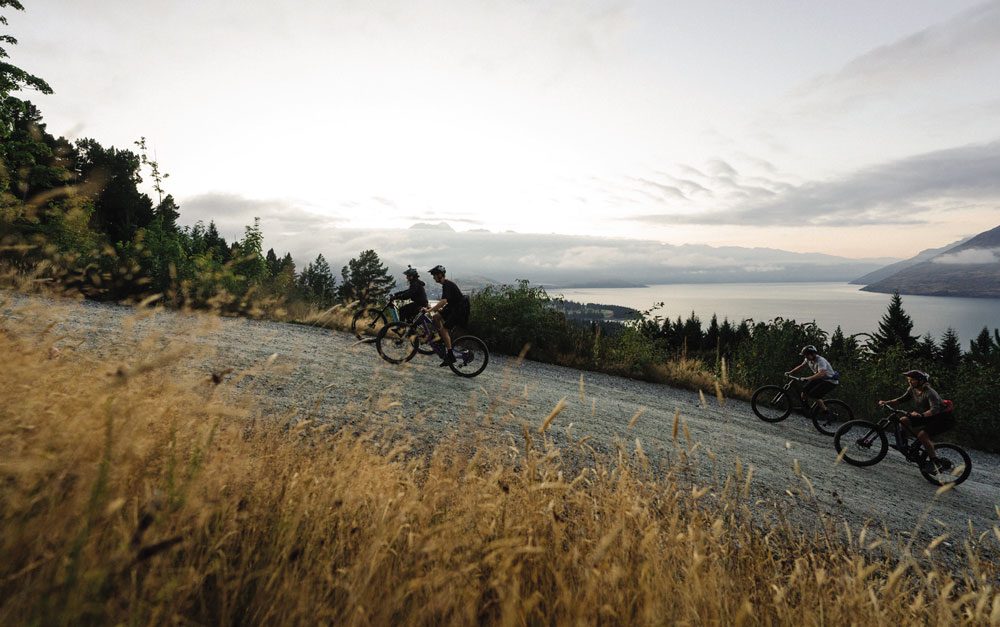
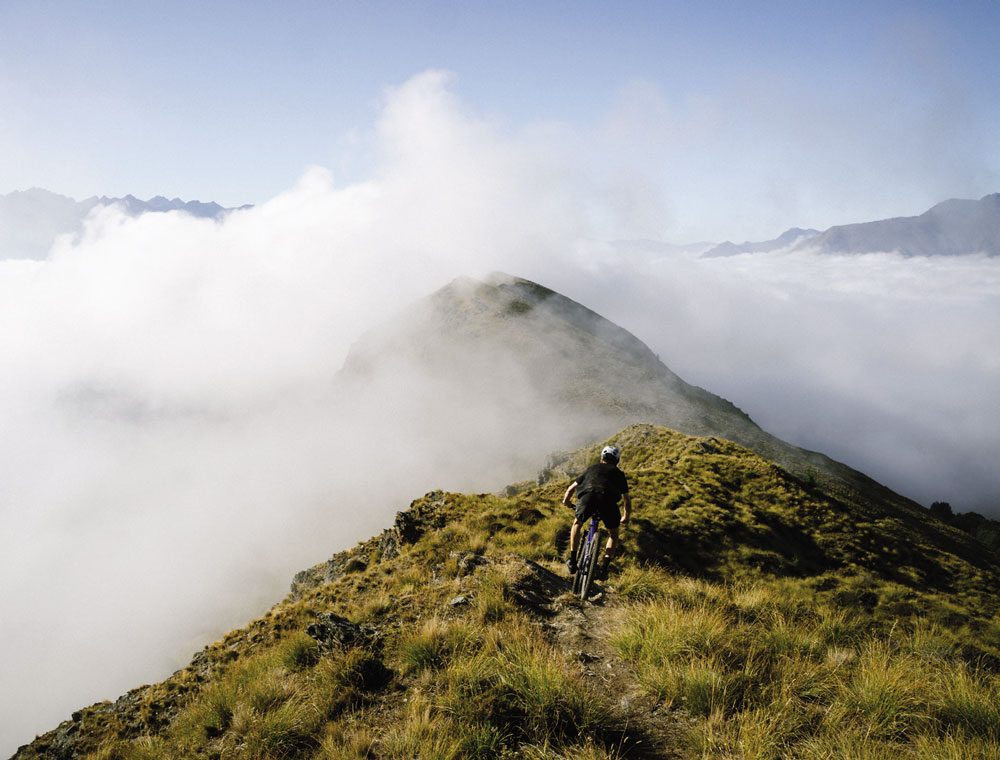
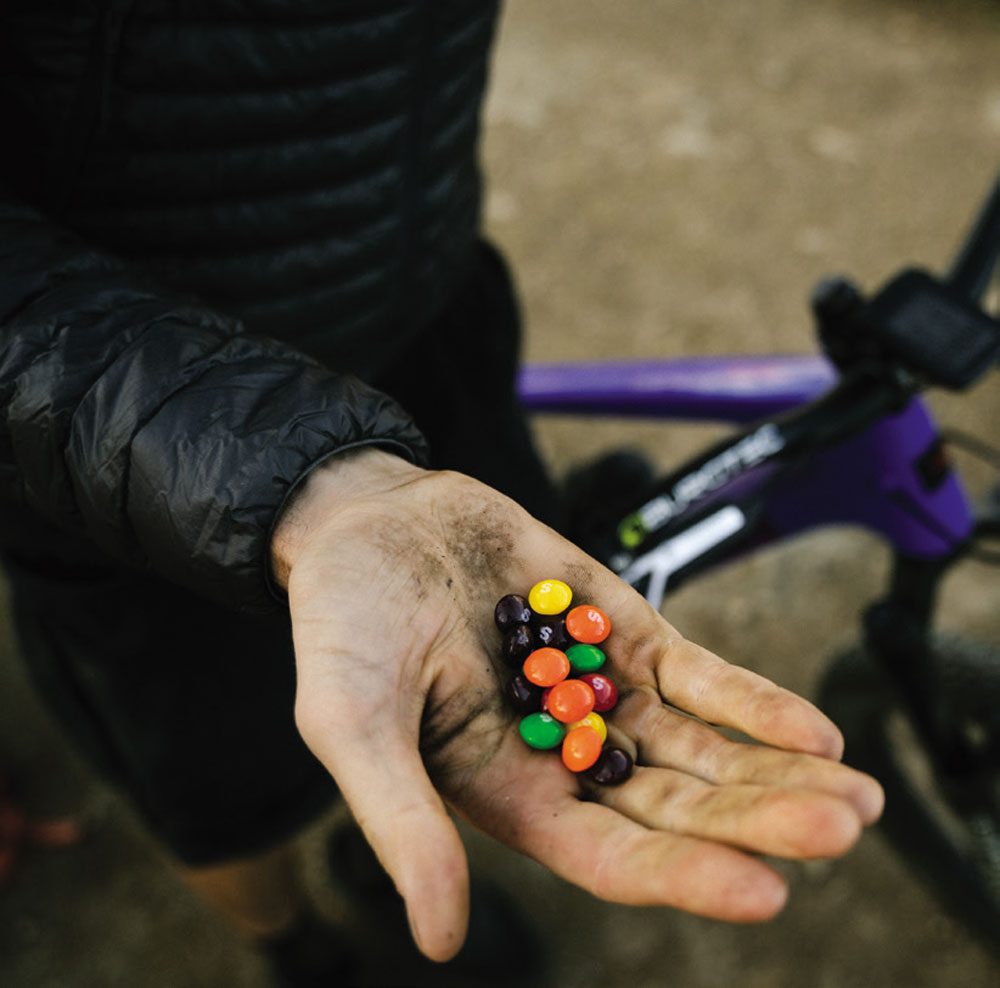
Visibly, mildly distressed I was approached by aI was approached by a young family with ayoung family with a backpack baby, insistingbackpack baby, insisting wildly generous help.
2:11pm. After first light’s free spirited bohemian lap, the morning felt rather uneventful; chugging along the tracks of my route like a steady and conservative diesel engine. Time soon passed, as did the metres. Almost 14,000 metres in, I got to midway, where I’d allow myself a rest and recoup. It was on this lap an uncomfortable and grounding pain made me feel very human and quite frail. Familiar with the occasional heart murmur, I knew this thud in my chest and erratic, offbeat rhythm should be okay, although it always makes you acutely and presently aware of your mortality. Conscious this could be an issue, I had a small Bluetooth device with me that takes ECG recordings. Held tight between my thumbs it came back with ‘atrial fibrillation’. I chose to rest a bit longer that lap before carrying on, back on task – some would say foolishly.
4:15pm. In charge of photography, and one of my consistent good sorts keeping company for this pedal, Callum noted I’d run out of water high up the climb and, without hesitation, slogged a 10 litre barrel of water up the mountain in his camera bag. What a champ, The sun was still blinding and aggressive. I’d been awake without any proper sleep for around 55 hours now, climbed over 15,000 metres and descended over 100km of mountain bike trails. I felt completely hollow, the bottom of the barrel had been scraped dry. It became very easy to distinguish between my physical, mental and emotional energy. In rhythm, I’d scoop into each energy source one at a time while the others did their best to recover. You could switch easily from a mindset of body, concentrating on making circles with your feet and pushing down past the ground, to a mindset of determination, trust and belief, always mindful to eject that energy reserve for another before any wavering internal apathy kicks in. It became a fragile juggling act – anyone who tried to help or support me during that period was met with someone quite silent and vacant, a shell of the person they had planned to see, but understanding – I hoped – that as grateful as I was, I didn’t want to see anyone for a short period as I couldn’t give them the gratitude and thanks they deserved for helping me out. Burnt out and dry, so close.
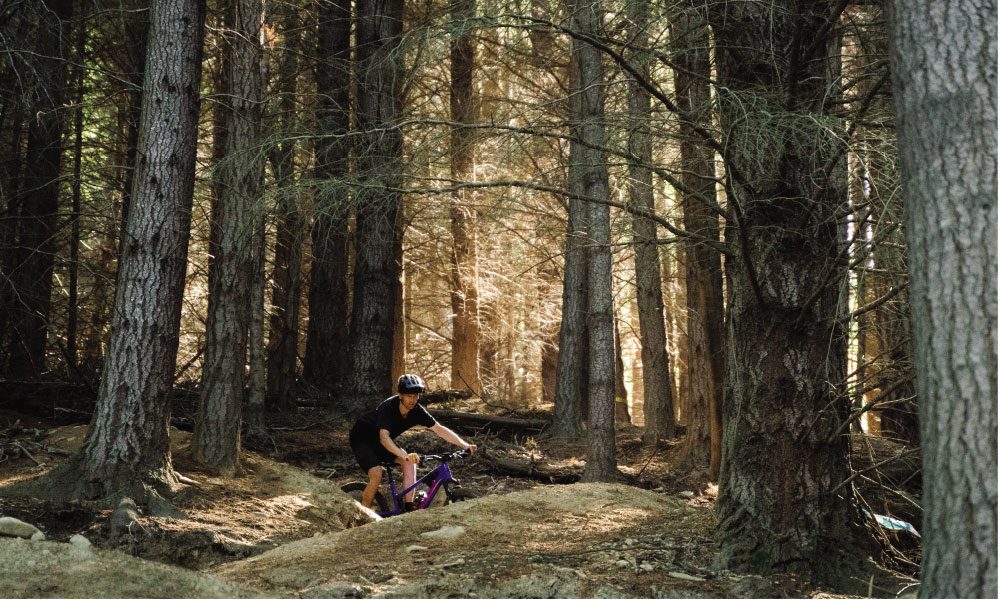
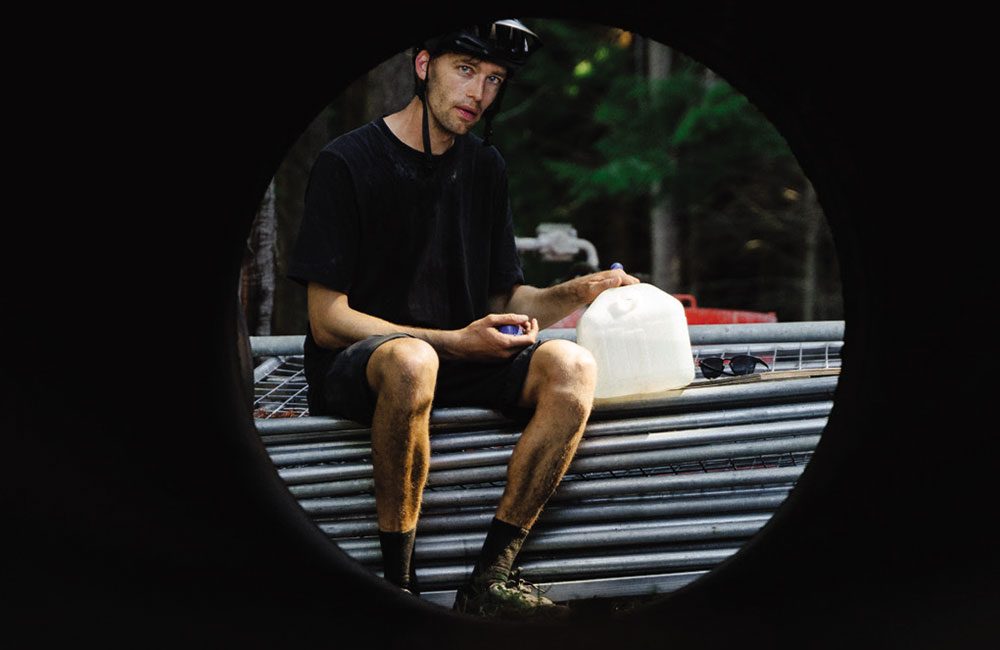
Grabbing a handful of brake, I almost came to a stop before it disappeared. I made a more considered effort to keep my head high and look ahead, setting small goals to pedal towards and keep my mind occupied and focused. Luckily, I had my head held up, as no sooner had the moat disappeared a series of unevenly placed wooden door frames jumped out at me. With my peripheral vision absent, it took my upmost attention to swerve and weave through them. The oddest experience and the last of that carry on for the remainder of the ride. Confused and bemused we rode on.
6:38pm. The bottom of the final full lap. A group of familiar, friendly faces greeted me there and the team grew as we climbed higher together. What a treat to have so much encouragement and help from the incredible community here in Queenstown. By the time we reached the summit, the Remarkables mountain range wore an red evening glow, and Ben Lomond above us sheltered the sun. Everything felt it was coming to an end. Sharing that last full climb with friends was extra special, many moments there are forever held in memory. I was 17,300 meters in and feeling my last ‘second’ wind as we all descended together. So grateful and appreciative.
9:10pm. The last push. I couldn’t close the loop off nice and neat at the top of the last full lap, so still had a few hundred metres to find. It was getting cold, fingers pained after that descent, determined not to go into a third night. Most of last lap’s crew were now invested and seeing it out until the end. Together we climbed, again. This time round, my focus was sharply squared at my cycling computer, watching the metres fall away, navigated by the sound of people talking around me, a comforting echolocation on a road I know all too well.
The last hundred metres never seemed to stop. By this time everyone wanted to know the score, nothing else made any sense.
Eventually, finally, at the end of the beech forest, I’d ticked over the double Everest. Pausing and uploading the ride data, I sat on a rock I’d used at a rest stop every lap. Unsure how to think or consider the bike ride, I felt underwhelmed and disappointed in my lack of enthusiasm or stoke, unable to show any joy or thanks to everyone who was there to share the moment, who made the effort to see it out. All I wanted to do was go home, shower and sleep. Maybe everyone was expecting an emotional spew of relief or elation, but all tanks were empty. It was done.
I’d like to thank Jonny Ashworth and Callum Wood for documenting the ride with video and photography, being there to help and witness it all. Annie Ford for being with me throughout and providing the upmost support – making sure I ate, drank and didn’t fall off – what a trooper. Jamie McKay, who always offers the most incredible company on the toughest days, unwavering, and went on to do an Everest of his own while riding with me, incredible! Thanks to everyone else who showed willing and came along for a pedal, it made the experience unforgettable. Thank you.
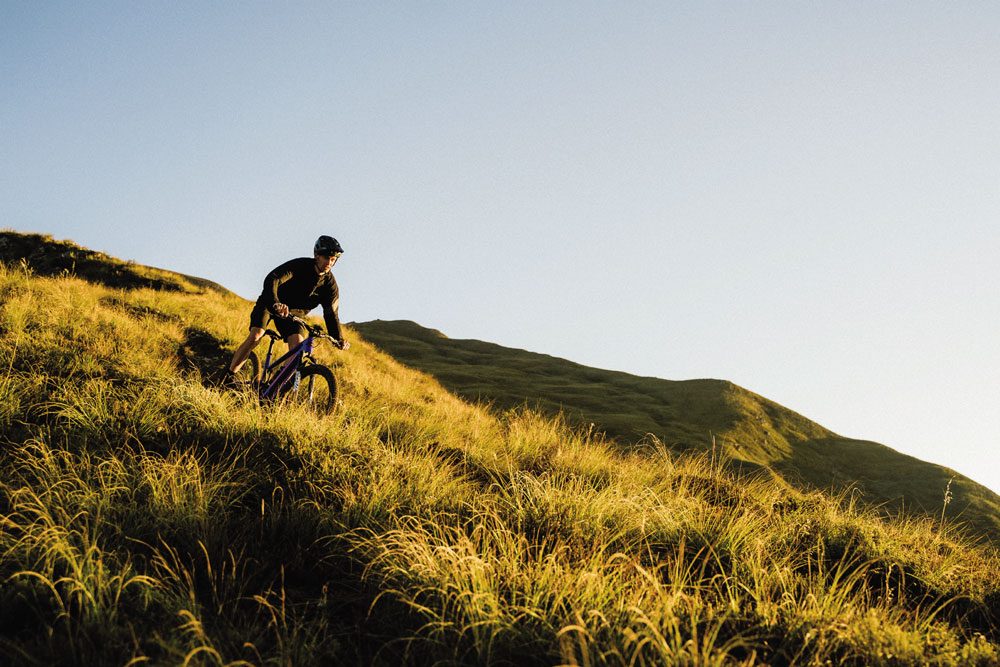
5:11PM It became very easy toIt became very easy to distinguish between my physical,distinguish between my physical, mental and emotional energy.mental and emotional energy.
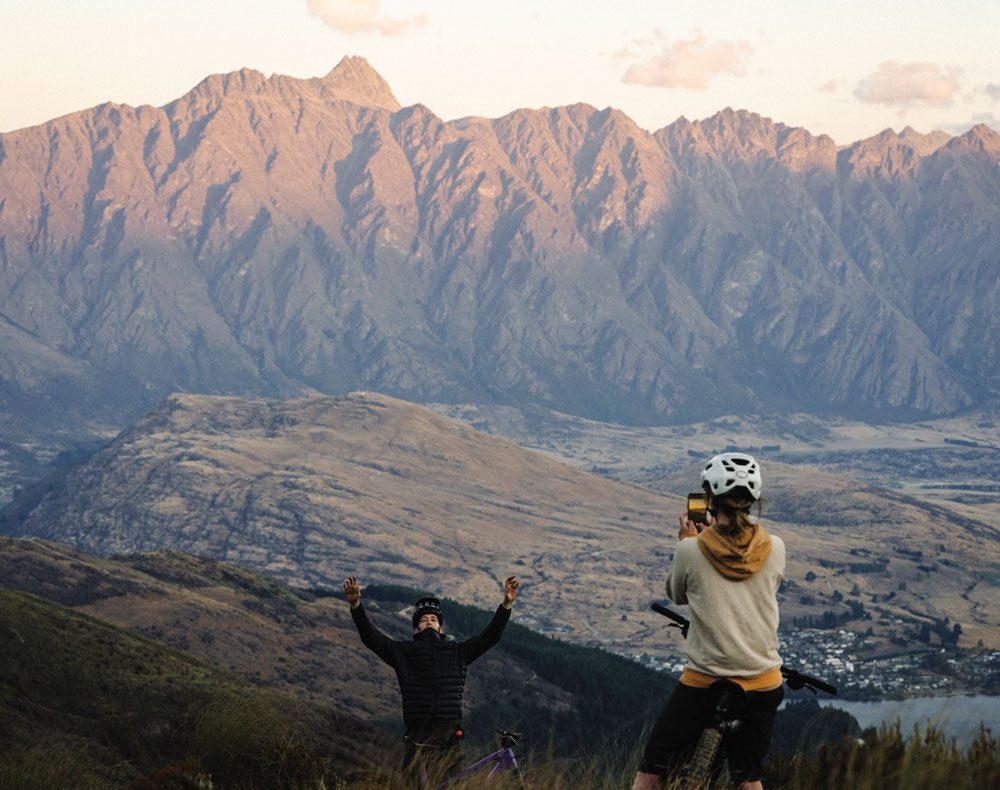
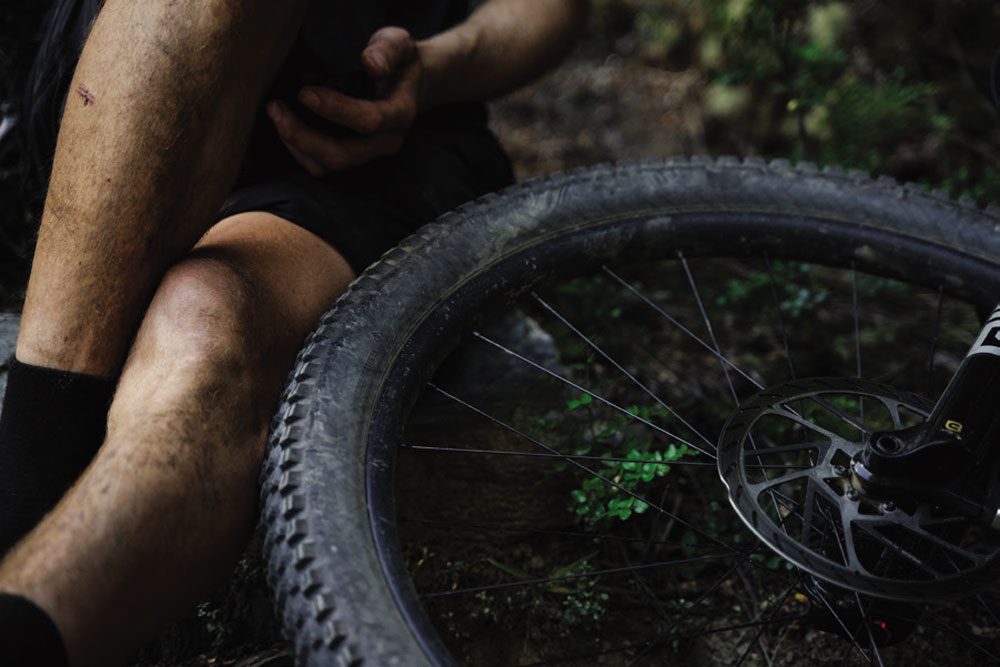
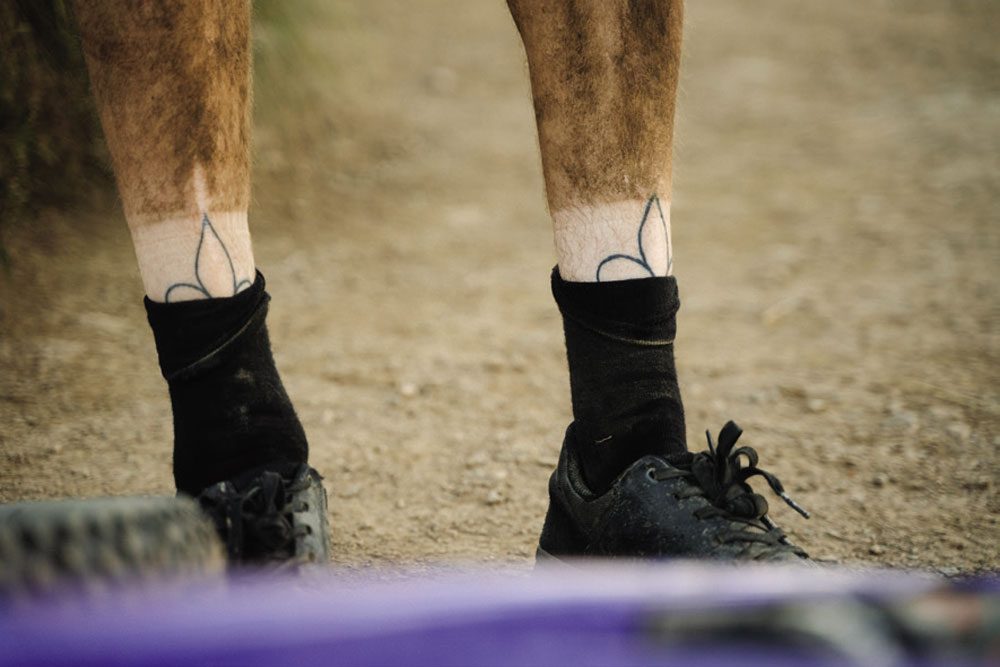
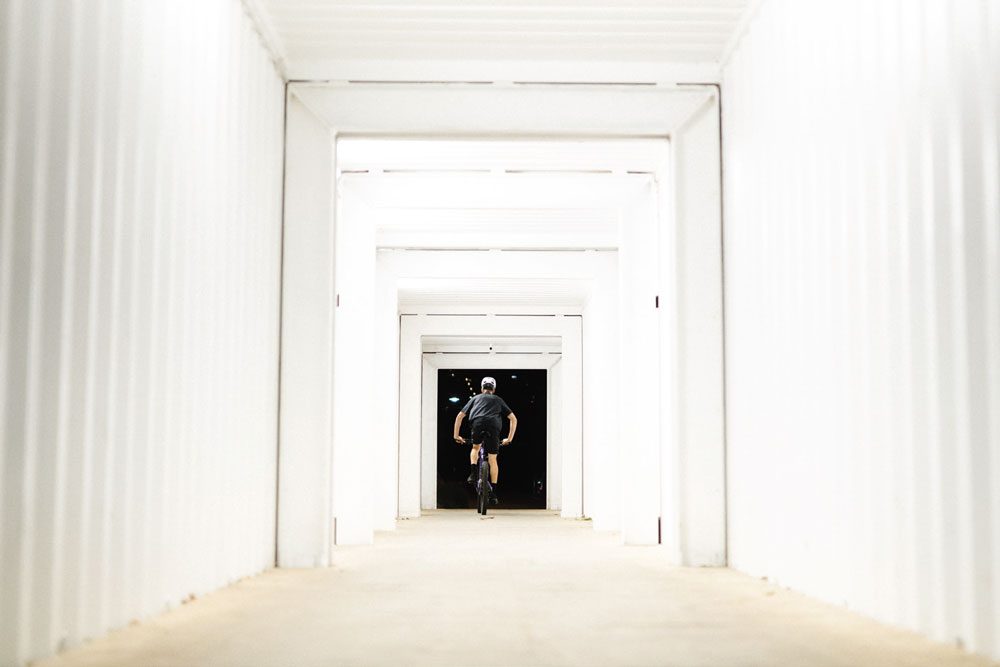
Thanks to everyone else who showed willing and came along for a pedal, it made the experience unforgettable. Thank you.
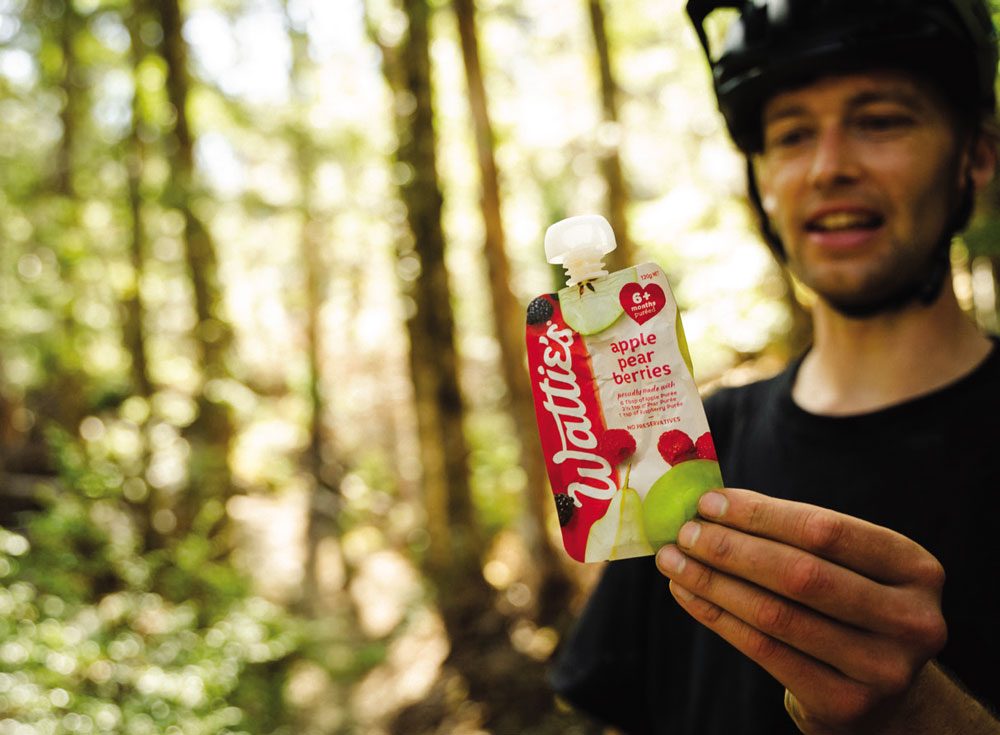
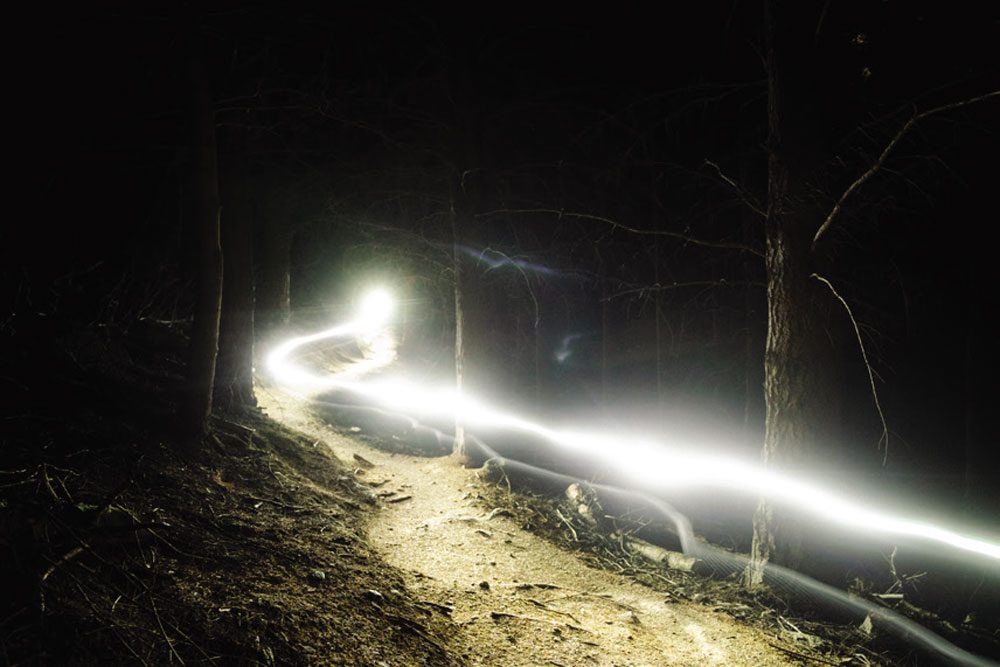
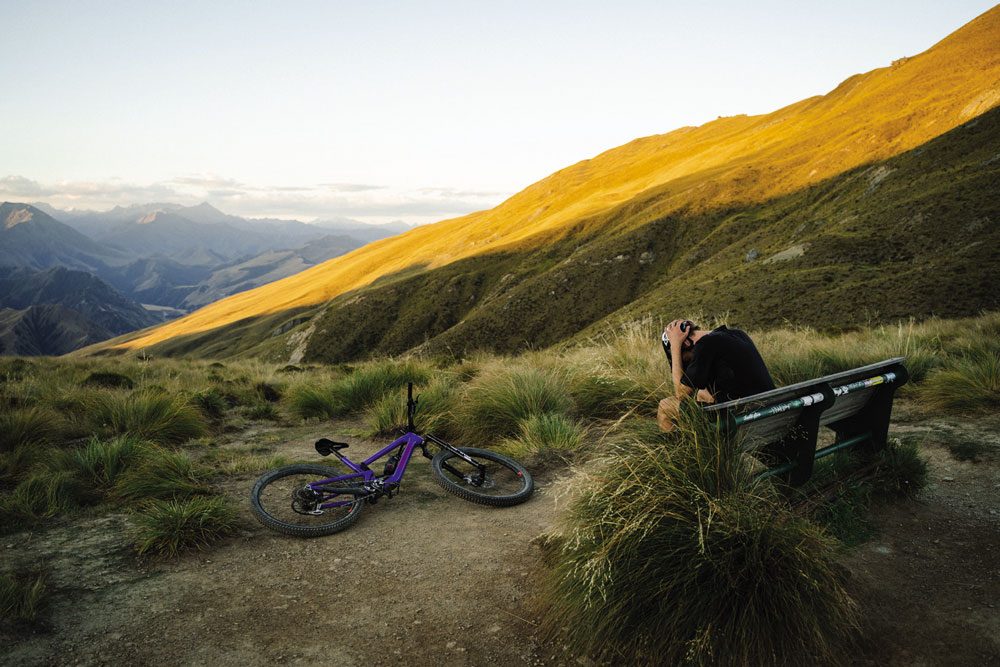
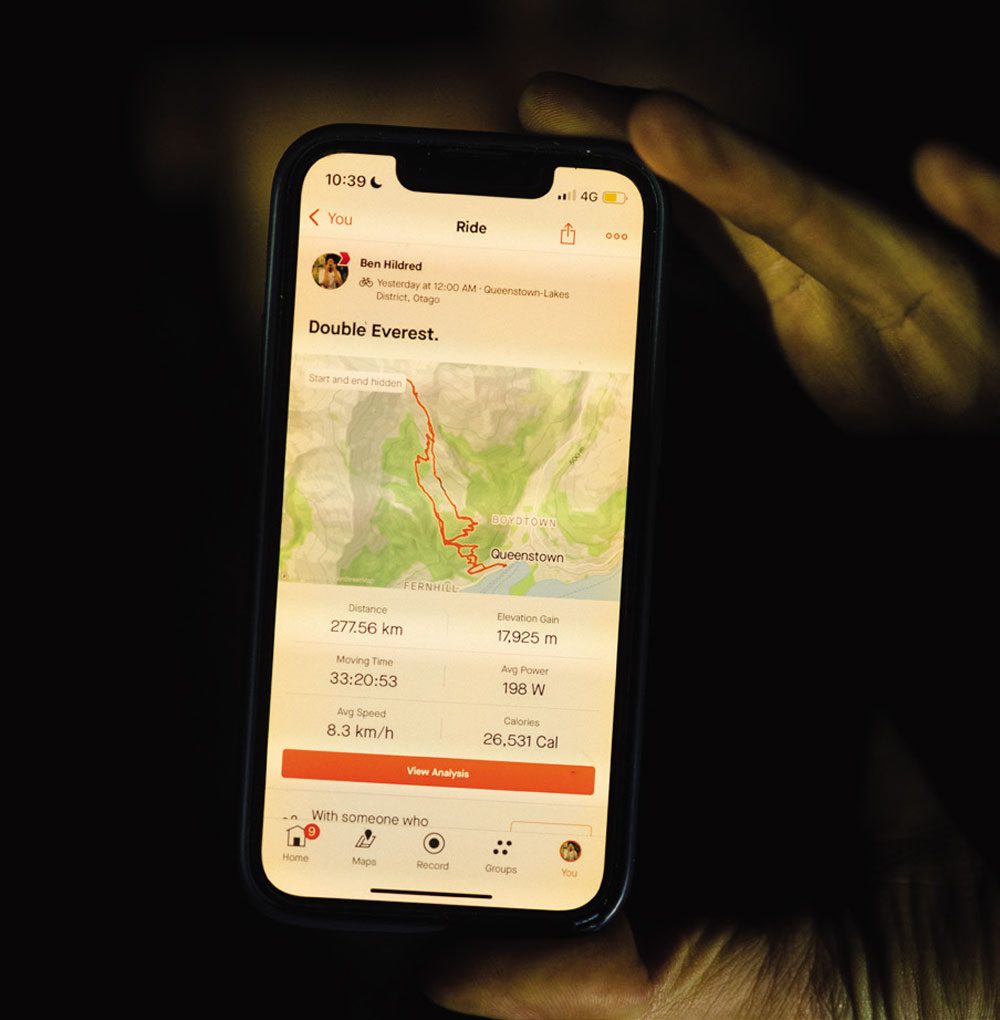

Queenstown = Dreamstown
Words by Jake Hood
Photography by Jake Hood, Cameron Mackenzie & Jay French
Can a photo be life changing? I’m not just talking about a photo that makes you go, ‘Wow that’s amazing!’, but an image that actually changes the path in which you are destined to take in life. It’s a turning point; a defining moment. Well, this is what happened to me.
Let’s turn back the clock a few years – back to when I had fewer wrinkles and a lot more hair. I was a know-it-all grom, working in a bike shop in Scotland. On my lunch break, I was flicking through a UK-based mountain bike magazine when I stopped turning the pages, captivated by this one image that caught my eye. It was a photo of a beautiful golden landscape, featuring three riders carving their way down this unbelievable bit of track that snaked its way through the orange, sun-kissed hillside. There were huge mountains in the background. The corners of the track looked like those perfect berms you only dream about, and dust clouds tailed the riders, highlighted by the evening sun. The golden orange light contrasted the dark moody hills perfectly in the background. It was such a defining photo. A photo that I needed to know more about.
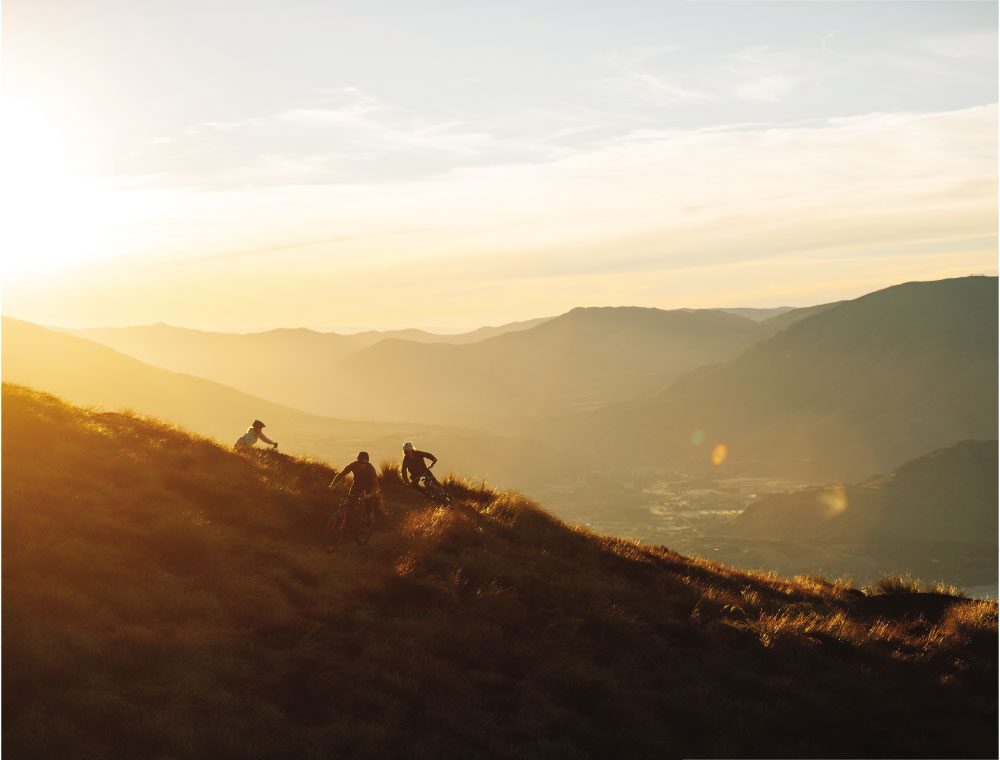
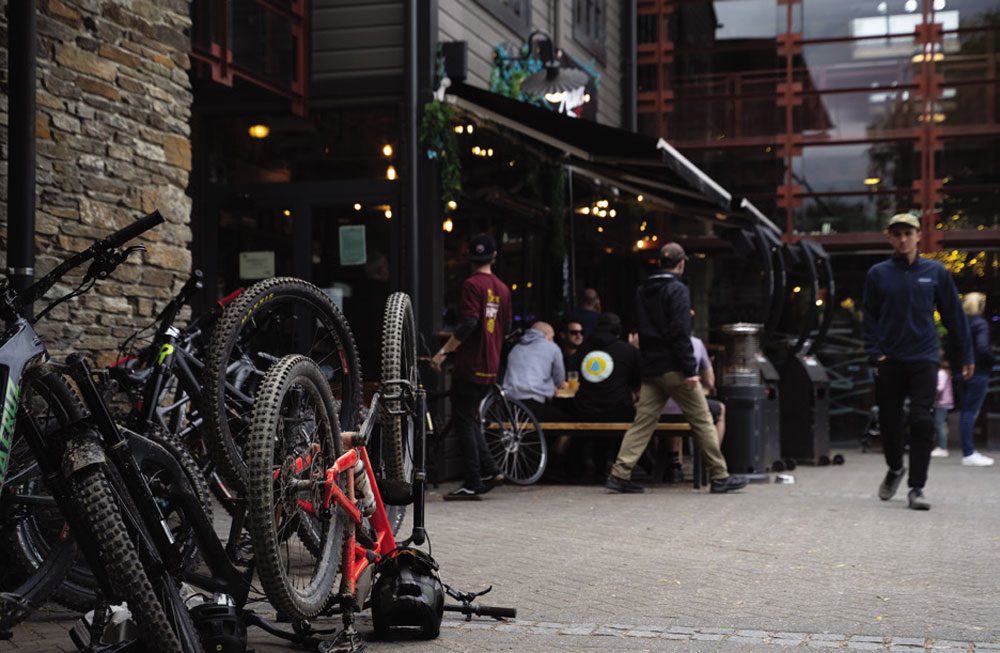
FROM THE MOMENT I STEPPED OFF THE PLANE, I KNEW THIS PLACE WAS SOMETHING SPECIAL.
‘Where is that?’ I thought. ‘I need to see this place, I need to experience it for myself! It looks like paradise.’ Well, it turned out to be Queenstown, New Zealand – or as I like to call it: Dreamstown.
A couple of years after first seeing that photo, I moved to Aotearoa New Zealand, the land of the long white cloud, and set up camp on the alpine shores of Lake Whakatipu. From the moment I stepped off the plane, I knew this place was something special. The mountain air felt dense. Jagged, craggy mountain peaks towered over the lake, while the small, sunny town below basked in the late evening sun. The energy of the town seemed to echo through the valleys. I remember getting a taxi from the airport to town and seeing the Skyline Gondola for the first time. It literally went straight up – like, vertical. How was that even possible?! How could there be trails off that hill? My mind was blown. The first summer I spent here, I experienced as many of the myriad trails as possible. I would finish work and commute home via the gondola back to Fernhill. There were just so many trails to explore and places to see. I kept having to pinch myself to remember I was really living here, in Dreamstown. This place really made an impression on me. But something weird happened after living and riding in this amazing place for a summer. I started to realise that it’s not just the landscape, town or trails that make Queenstown oh-so-special. Yeah, these aspects are amazing, but there is something else that makes this place special… I’ll come back to that later.
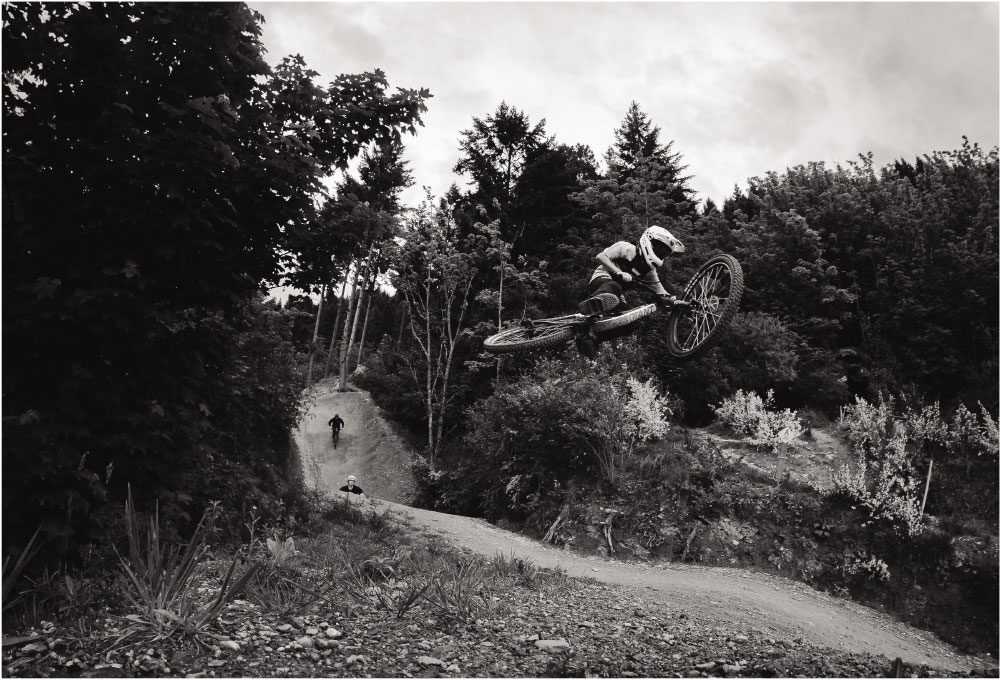
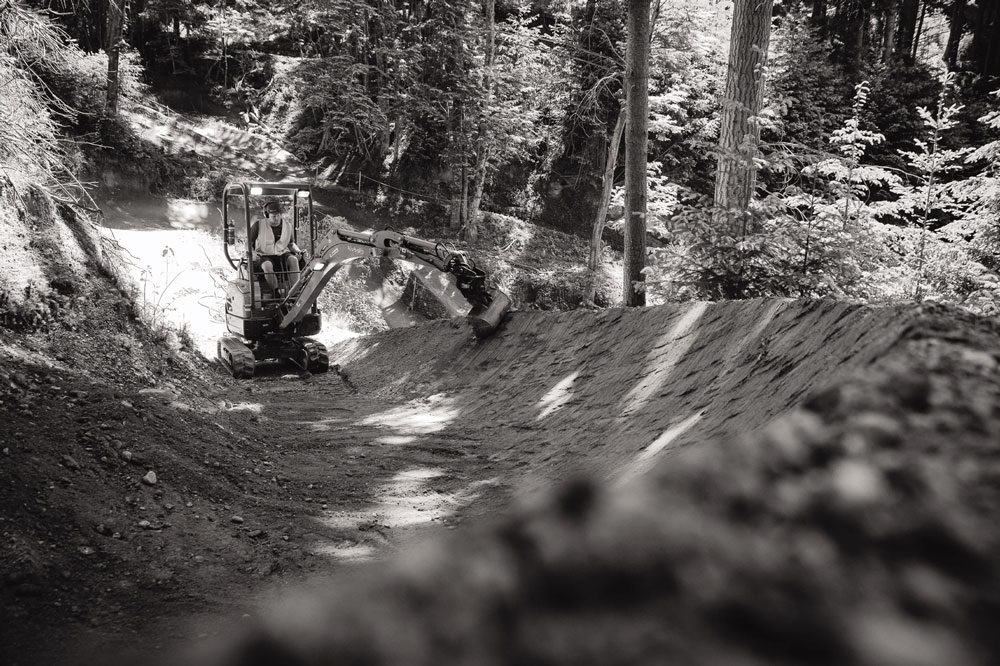
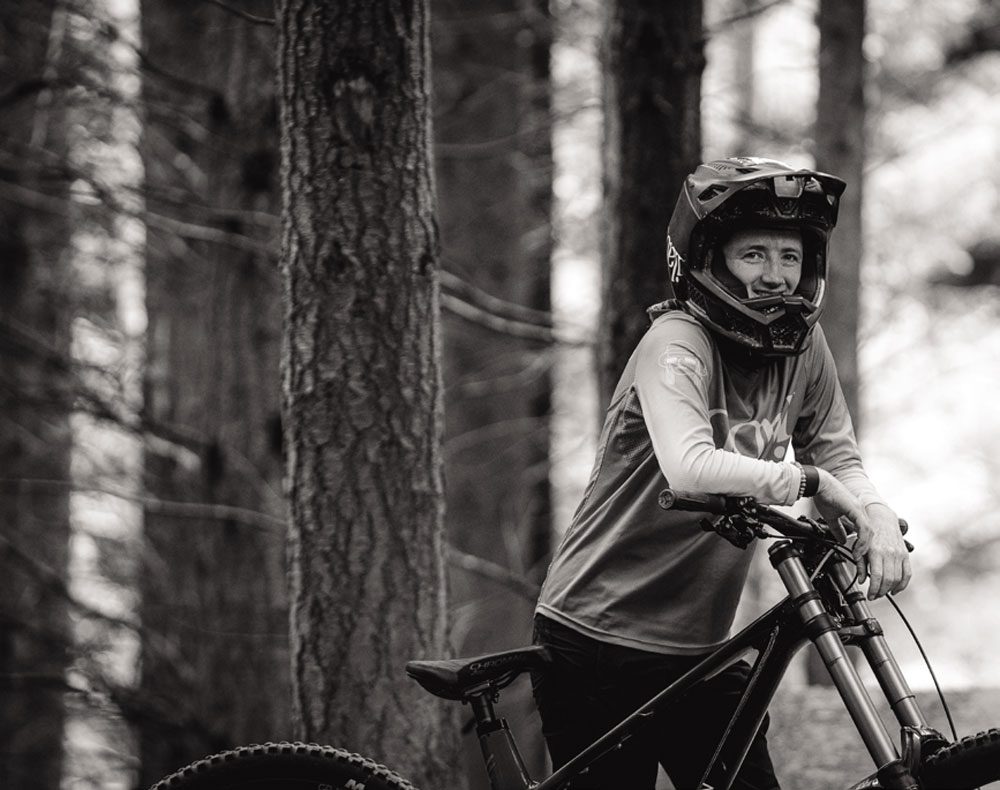
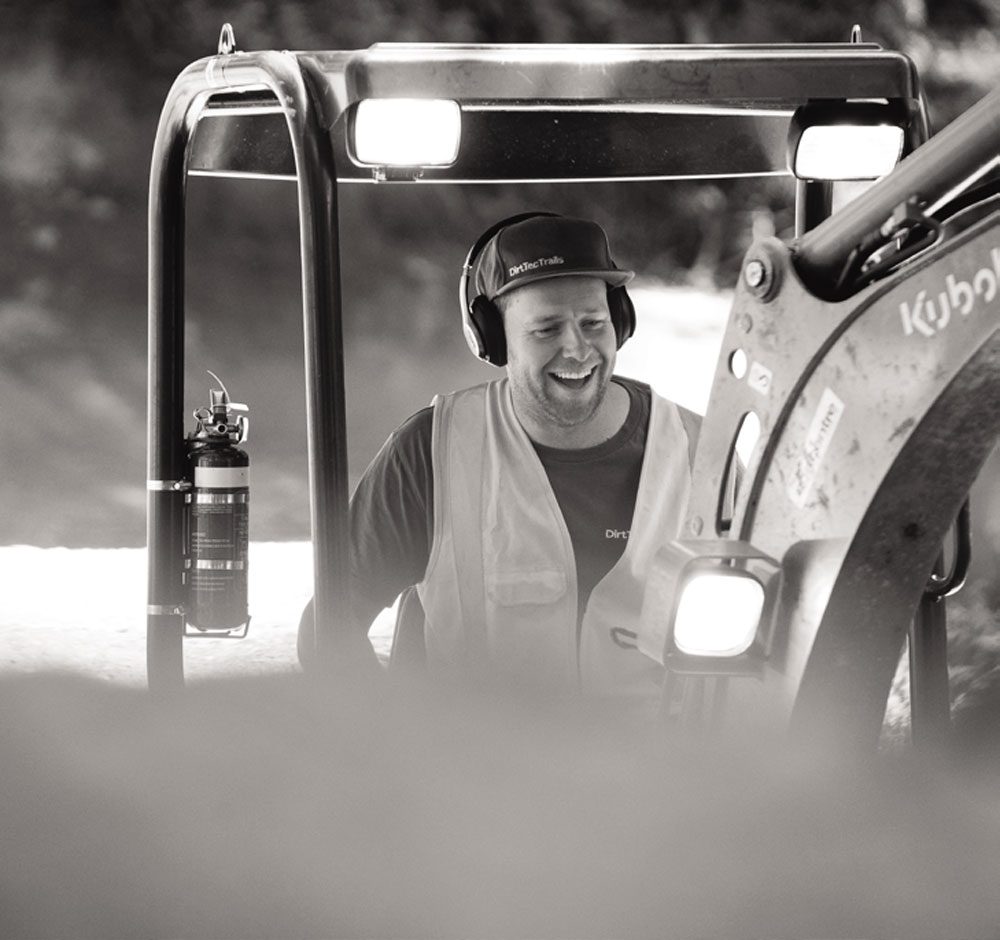
It would be hard not to talk about the trails whilst on the topic of Queenstown. There is such a variety, spanning the 7 Mile riding area to Arrowtown. Over a weekend, you would be lucky to just scratch the surface of the amount of riding there is. Every year, this network grows, and us Queenstown riders get better and better trails. In the past few years, the quality of new trails has skyrocketed. The driving force behind this movement are Elevate Trail Building and Dirt Tec Trails. Tom Hey from Elevate Trail Building started shaping the trails of Queenstown in 2013, with Rude Rock being one of his first builds, supported by Queenstown Mountain Bike Club (QMTBC) and and Queenstown Trails Trust (QTT). This trail was an instant classic and is now known across the world. Since then, Tom’s been shaping the dirt, rocks and roots of Queenstown into some of the finest bits of singletrack on the planet. Like an artist with his paintbrush, he has this amazing ability to build perfect bits of trail that become instant hits. Kepler Rek, local trail building legend, was working at Skyline Gondola from 2013-2015, as a lifty and running trail maintenance. In 2015 he started transforming the Ben Lomond Trails and moved up the ranks to the manager of the bike park. This is when the bike park started to transform into what it is now – up there as one of the best in the world. Before 2015, all the trails had a bit of an old-school feel about them; very fast and straight. Nothing lined up well; they were very janky, you could say. Once Kep was on the scene, he started the process of transformation. The first big shift in the park was Huck Yeah – a Queenstown Mountain Bike Club-funded jump trail in the park. This was the catalyst for the rest of the park getting rebuilt. Things got de-janked, rebuilt and realigned – and safety was also improved. It was such a shift forward, and every year things kept getting better in the park. More trails were built with more variety of terrain, including new blue and green trails, so riders of all abilities could test their limits. It was the shift the park needed and involved a more ‘new school’ way of building. It also brought the trails up to a modern, sustainable standard that improved flow whilst also leaving character. In 2017, Kep joined the Elevate Trail Building team. From that point, Tom and Kep went on to build and shape the next generation of Queenstown mountain bike trails, such as Nearly McGnarly and Hot Rod – trails that are now world-famous. Last year alone, Nearly McGnarly was ridden 75,000 times and Hot Rod was ridden 67,000 times. These are trails that work for all abilities, from beginners to the best riders in the world. It’s these types of trails that are helping get new people into the sport and giving beginners a place to improve their skills in a safe environment. For many people visiting Queenstown, Nearly McGnarly and Hot Rod are on the must-ride list – but there is so much more to be enjoyed. From flowing beech forest singletrack, like Missing Link, to Creaky Winder and steep, techy trails like Salmon Run – and everything in between. Throw some jumps into the mix, such as the world-famous Dreamtrack, Gorge Road Jump Park, and Kerry Road pump track, and you’ll find something for everyone to enjoy. Just last year, Kep went on to start his own company, Dirt Tec Trails, with Skyline taking a back seat in running the bike park. Dirt Tec Trails is now in charge of all the maintenance in the park and I have to say, the park has never been better. Dirt Tec Trails is also lending a hand to other projects around town – most recently, the new BluGazi trail. To say we are spoiled for passionate trail builders in Queenstown is an understatement. With two of New Zealand’s best trail builders living here, it’s easy to see why Queenstown, as a biking destination, is known around the world.
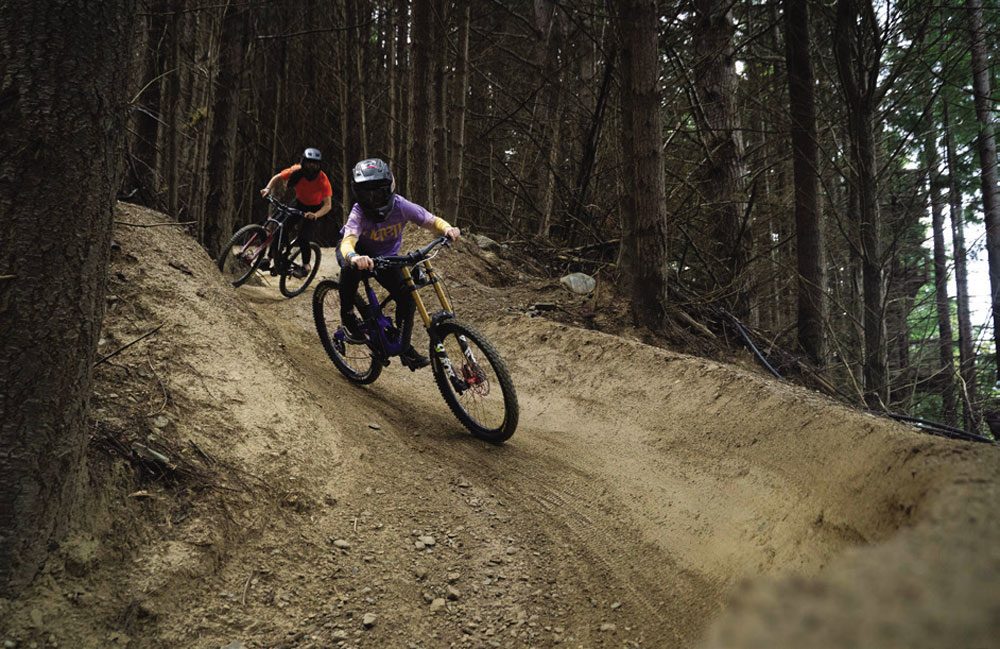
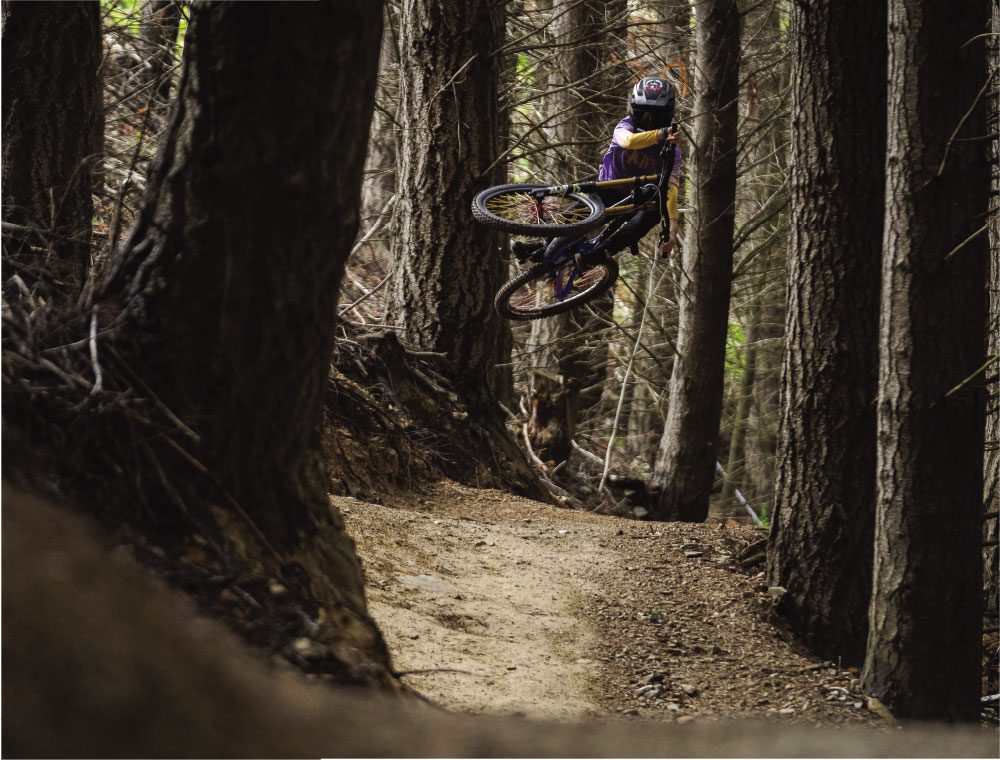
The other big reason Queenstown’s mountain biking scene is what it is today comes down to all the hard work put in by the QMTBC. Since forming in 2003, the club has really brought to life the vision of so many people, making Queenstown a world-famous destination for mountain biking. The amount of work these local legends get done is nothing short of a miracle – and it’s all volunteer work. There is an ever-changing group that takes the reins of this juggernaut of a club. Every year at the AGM, club members can nominate themself to become committee members for the following year. This constant change of committee members keeps the club moving forward and ensures fresh ideas come in year after year. These committee members are the true unsung heroes of the mountain biking scene in Queenstown. From trail network planning and gaining land consents, to running weekly dig nights, local jump sessions, fundraising events and getting new members on board, the work this club achieves is endless. What the club gets done is monumental but, through all this, we have this amazing thriving group of locals that just keeps growing and growing. Every year, membership numbers go up and the club receives more consent for trails; the community grows, and new trails get built. Overall, this club has been such a benefit to the Queenstown region and its community.
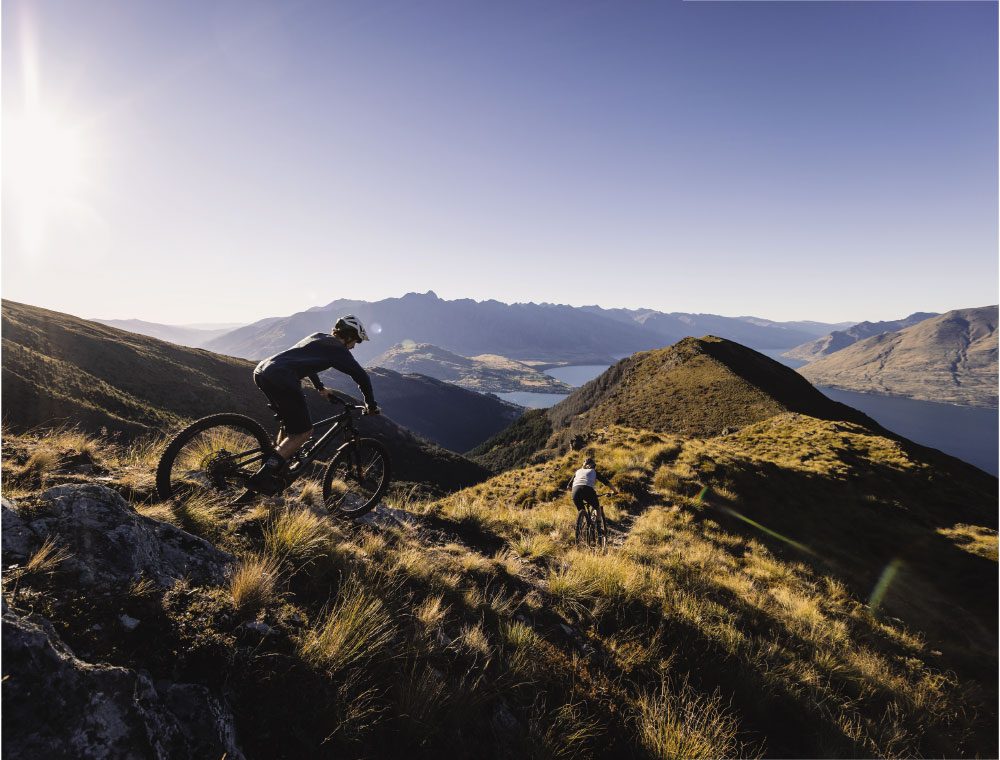
The network of trails that spans the basin is the artery that joins everything together all thanks to the Queenstown Trails Trusts. The QTT is responsible for the gravel trails that connect the Queenstown area together, giving access to different parts of the region without the need to ride on busy roads. The QMTBC and QTT work together to create a bigger, better network. Recent projects, like Bush Creek, a single track that has connected Coronet Peak to Arrowtown, has massively improved the famous ride, ‘Corotown’, by removing all the horrible river crossings. By using the QTT network and the QMTBC network, you can link up huge rides whilst mostly avoiding the roads. It’s flipping fantastic! And, if you’re not in the mood to ride mountain bikes but still want to get out and about, it’s easy to grab a gravel bike and smash out the k’s. With over 130km of gravel trails in the area, there is more than enough to keep you busy. For those who feel up to a big backcountry XC ride that feels kind of remote, I can’t go past recommending the Coronet XC loop that takes you around the back of Coronet Peak. These trails and networks are all possible due to the hard work QTT puts in. I’ve heard about the plans for the future and if they get the go-ahead, it’s going to make Queenstown an even more connected cycle network, which is a huge win in my books. With such a host of trails available on Queenstown’s doorstep, it’s easy to see why there are a bunch of locals doing so well on the world circuit in downhill, enduro and freeride events. The list of riders who now reside in the small alpine town during the summer months is pretty ridiculous: Eddie Masters, Matt Walker, Cole Locus, George Brannigan, Louise Ferguson, Vinny Armstrong, Jess Blewit and Robin Goomes, just to mention a few. In the lead-up to the World Cup, Enduro World Series, and Crankworx seasons, there is a whole host of teams and pros that come to town for testing and training. Line up at the Skyline Gondola in the latter half of the season and you will see everyone from Loïc Bruini to Emil Johansson lapping the park. And it’s not just the big names that are savage riders – there are so many low-key shredders in town. People that you have never even heard of, who can outride the best. There is something in the water here. People will come for a season and progress so much in that time. Being able to ride after work probably helps a lot – and I mean, literally from your office to the bike park, just two minutes out of town – but another big factor is being able to ride with people that are better than you. From trying to hold your mate’s wheel down a track while you chase him at a pace you don’t really want to ride at, to rolling up to Wynyard Bike Park for a jump session with your mates and getting spurred on by them making cool shapes while in the air — there is a culture of moving forward, of improving, taking inspiration from others, and applying it to your own riding. The progression levels of everyone seem to go up every year. It’s really a product of its own environment: with lots of variety of trails and long summer days giving you heaps of time to get out on the bike, the bike time just racks up. I will warn you though – don’t drop-in in front of the grommets, because they’ll be flying past you in no time, with more style than you could imagine. The next generation coming up are talented beyond what I can comprehend. They are so incredibly fast and stylish. It’s like they watch a YouTube video, and then just go do it — there’s no question about how they do it; they just do it. It’s so impressive and I think in the next few years we’ll see even more big names come out of this small town.
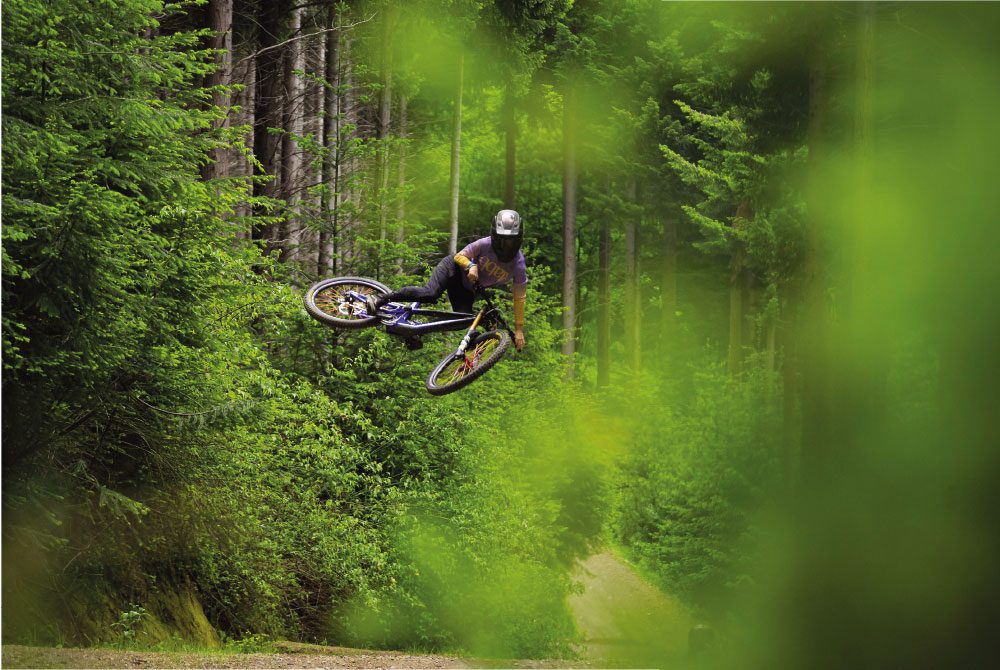
I think one of the reasons we have so many fast grommets in town is due to the Vertigo Summer Series race events. The main man behind this series is Paul Angus (a.k.a Pang), a legendary figure around Queenstown. Co-owner of Vertigo Bikes, and sometimes known as the ‘Huck Wizard’, Pang has seen and done it all in Queenstown. He lives and breathes the sport that we all love. As a former World Cup racer, he’s deadly fast on a bike, riding with pinpoint precision, and as stylish as they come, making him a great person to watch flow down the steep trails of Queenstown. His passion for downhill is prevalent from the moment you step foot into Vertigo Bikes. There’s a museum of old downhill bikes as you walk in the front door and dotted around the shop are old classic parts and frames. Pictures of the staff out shredding the local trails, cover the walls.
There’s a vibe you can feel as soon as you enter and you can sense the passion which is shared by everyone who works there. The smell of the workshop lingers in the air; that classic old bike shop smell, it’s fantastic. Vertigo has such a rich history in mountain biking in Queenstown, that it’s such a staple in the community. Throughout the summer, Pang, Jimi Ramsay (manager at Skyline MTB) and a few legends from Skyline run the Vertigo Summer Series in the Ben Lomond Trails. A grassroots race series that consists of four rounds, with the Whakatipu World Champs wrapping it up. Pang and Jimi pour their heart and soul into these well-organised races, which are a passion project of theirs, along with volunteers who donate their time on race day. It’s a hotly contested race series – everyone comes out to race their mates and settle the trash-talk that’s been going on all summer. The turnout is huge and normally you have to pre-register to enter. All the funds raised at the races go back to the Queenstown Mountain Bike Club.
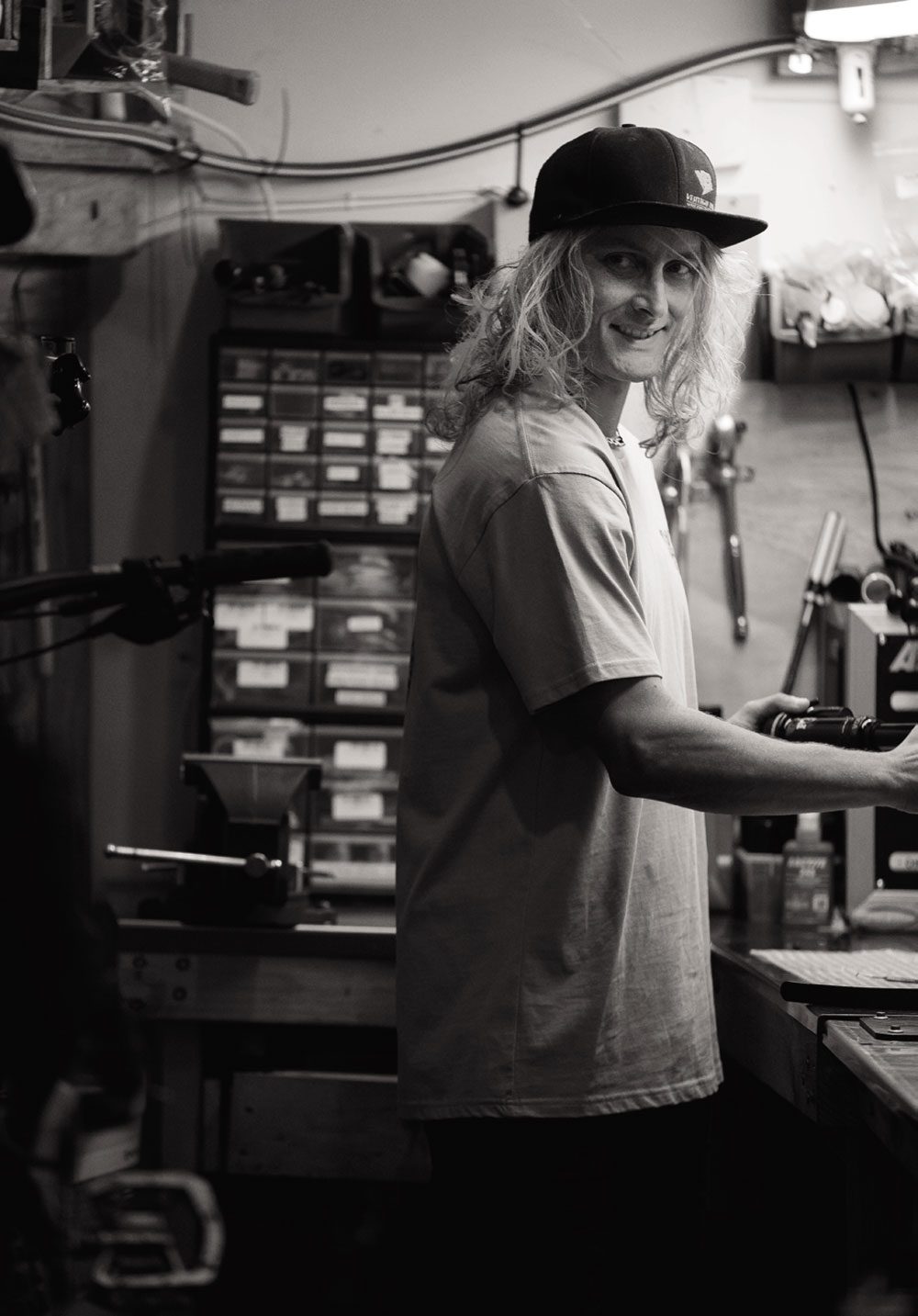
The groms make up a huge number of participants and their times are within seconds of the elites. Each race is on a different track and often have fresh bits of track dug in for the racing. The atmosphere at the side of the track is electric. They are awesome events to be involved with and it’s so cool to see all the young, up-and-coming riders get to race on the local trails.
If you want to see a representation of this local scene, there’s no better place to be than Atlas Beer Cafe on a summer’s evening. This tiny yet wholesome pub will be packed to the brim with locals after finishing their ride. There are bikes everywhere, parked up all over the place, and smiles and cheers getting thrown about left, right and centre. Big hearty pints are being poured from the range of 24 beer taps that consume the wall of the bar, and the warm, welcoming atmosphere sucks you in. Above the bar hangs Kelly McGarry’s bike that was famously flipped over the canyon gap at Red Bull Rampage. Other bike memorabilia is scattered around the place, and the friendly staff always want to know about your ride as they pour you a beverage to quench your thirst. If you’re a local and you come to Atlas on a Friday evening, you will be sure to bump into someone you know. You don’t need to plan your evening, as it’s one of the best places be post-ride. It’s a common place us riders like to descend on to catch up with each other after the week’s events and plan the weekend’s adventures. There are two reasons why everyone comes here though; 1) the fact it’s just a fantastic little bar that has a vibe that is second-to-none; and 2) Atlas give so much back to the mountain bike community. Atlas’s owner, Davey Mackenzie, and all the staff put so much effort into helping the Queenstown Mountain Bike Club, from organising and running fundraisers – like the SOS (Season of Shred) Party at the start of summer as well as the end-of-season wrap-up party – to sponsoring trails and the club’s trailer. The staff outdo themselves every year by putting so much effort into these great events that see a huge turnout – they are always a night to remember.
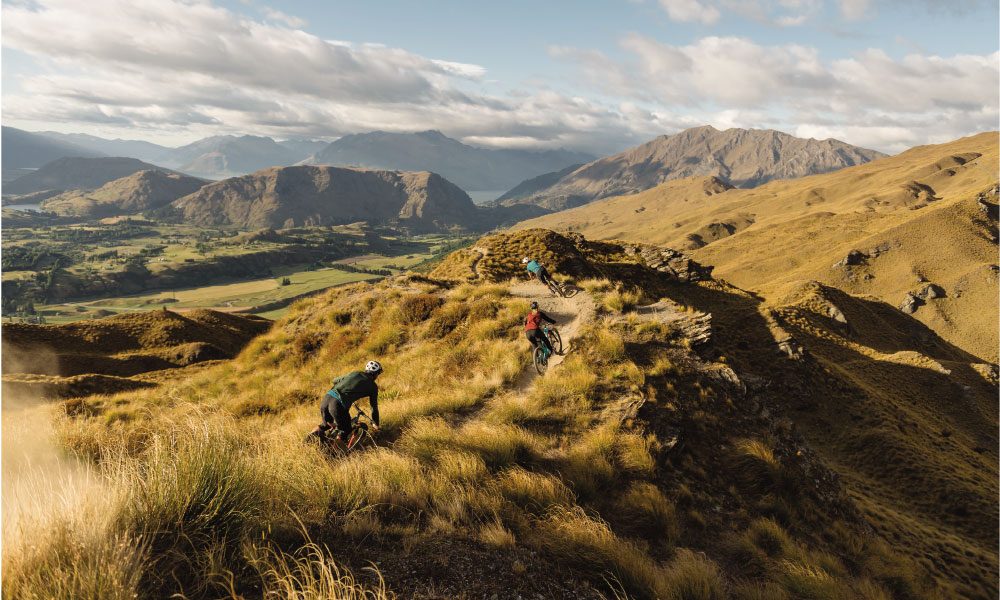
Personally, it’s not Queenstown that makes Queenstown such a special place to be. Yes, I’ll say it again, the riding is pretty extraordinary, the landscape is breathtaking and having three lift-accessed parks in close proximity really does add to the appeal. But that’s all just a bonus. What really makes this place oh-so-special? It’s the people who live here. They really make this place what it is. I’ve never lived in a place where the community feel is so prevalent – it’s more like a big family.
I’m so glad I saw that photo and it changed the trajectory of my life so many years ago. I’m happy I made the leap of faith by moving about as far away from home as possible. After a few years of living here, Queenstown is my home. When I head away on holiday, instead of dreading coming home, I find myself looking forward to being back. The breathtaking landscape, vibrant energy and unbelievably good trails on its doorstep, really make this a special place. You soon realize, it’s the people that make Queenstown, Dreamstown.
A little slice of paradise.
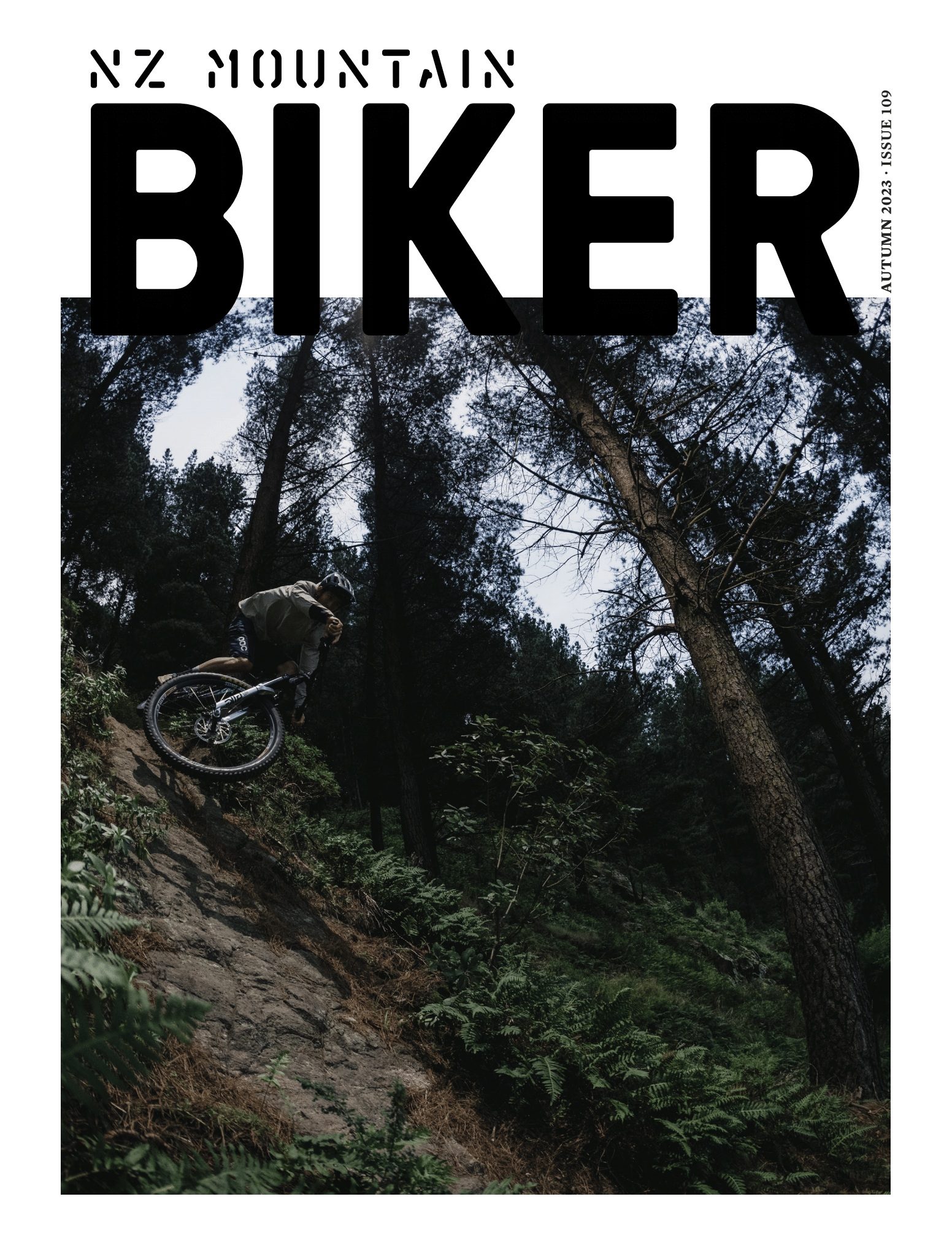
An interview with Sam Blenkinsop
Words: Lance Pilbrow
Photography: Cameron Mackenzie & Sven Martin
I’m two minutes into our Zoom interview and Sam is juggling kids on his lap. Prior to this, he’s been on another Zoom, negotiating deals that will form part of his 2023 season. Undoubtedly, his kids will have let his potential sponsors know that Sam, their dad, should really be giving them his undivided attention. But this is the new normal for Sam. The Juggle.
Most New Zealand Mountain Biker readers will be familiar with Sam Blenkinsop in some form or another. If longevity is a sign of success, then Sam could arguably be New Zealand’s most successful downhill mountain bike rider, having been riding professionally for 19 years. He’s been a fixture on the NZ riding scene for as long as many of us can remember. I personally remember watching Sam ride at the 2006 Rotorua World Mountain Bike Championships where he came second in the juniors. I was blown away by how fast he was riding and just how much style he had on the bike — his bike seemed to effortlessly drift through corners, through the air, always slightly sideways, slightly tweaked. Somehow, he made it look more fun than anyone else.
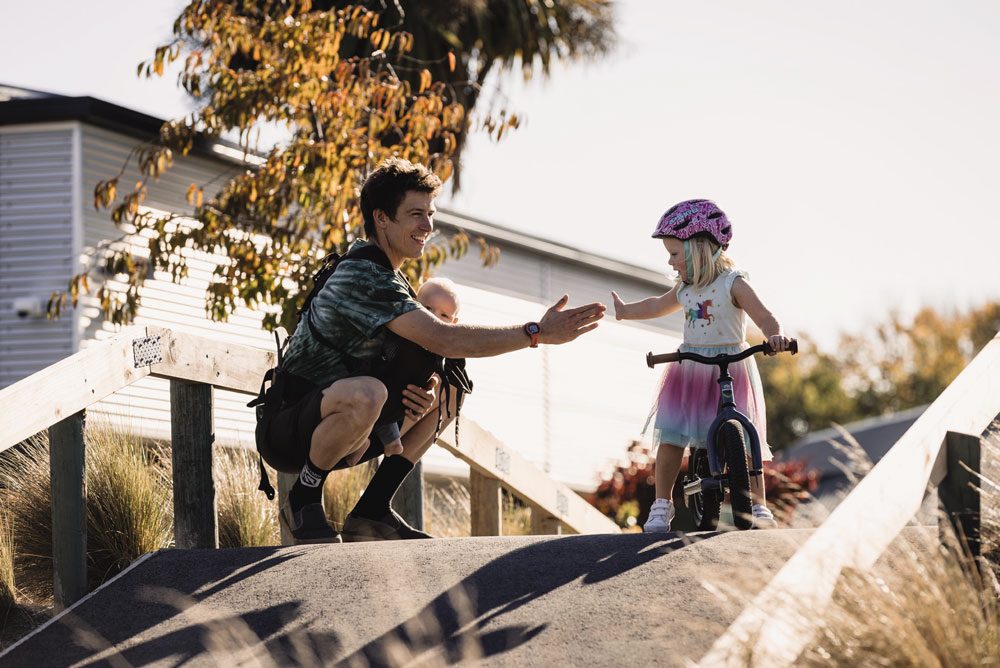
Fast forward to 2022 and Sam is now one of the seasoned veterans on the World Cup circuit. And a lot has changed over that time. Most notably, he now has a wife and two children to join him as he moves around the globe following the UCI circuit. With his experience on the circuit, and confidence to try something different, in 2022, he ditched the established way of doing things, bought a motorhome and hit the road racing; wife and two kids along for the ride too, as support crew. “We purchased a motorhome in the UK, and just drove the whole of Europe,” says Sam. “We did something like 9000km.”
Having recently toured New Zealand in summer with my own family, I’m well aware that life on the road isn’t always plain sailing. The idea of taking a family on the road, managing a race schedule and the pressure of performing at an elite level made me wonder if he’d had a few too many knocks to his head. But he assured me it was fine. How was it for his wife, Lysh, though? “It was hard for Lysh, for sure. She had to deal with our younger one in the motorhome; there is all the feeding. Yeah, it wasn’t aways easy,” explains Sam.
Sam’s kids come in and out of view on his webcam. In the background, I can hear some fighting over toys, and I’m imagining doing all of this inside the close confines of a motorhome — for six months. On the whole, it’s clear Sam, at least, had really enjoyed the past season.
“To be honest, it was awesome,” he admits. “It was just so exciting having the family there. It was like learning a new way of racing; racing while being a dad. It was more interesting than other years because I was going to all these places I’ve been to for 19 years, but I realised I actually never saw them properly. Typically, I’d just be with the team and at the hotel, and I wouldn’t really enjoy the place as much. Now, I’d be at practice, then as soon as that was done I’d go hang out with the family and really enjoy everything. It was great being with them and not just having the race as the only thing. It was like being on holiday with the family, but getting to race too, which was like an awesome bonus.”
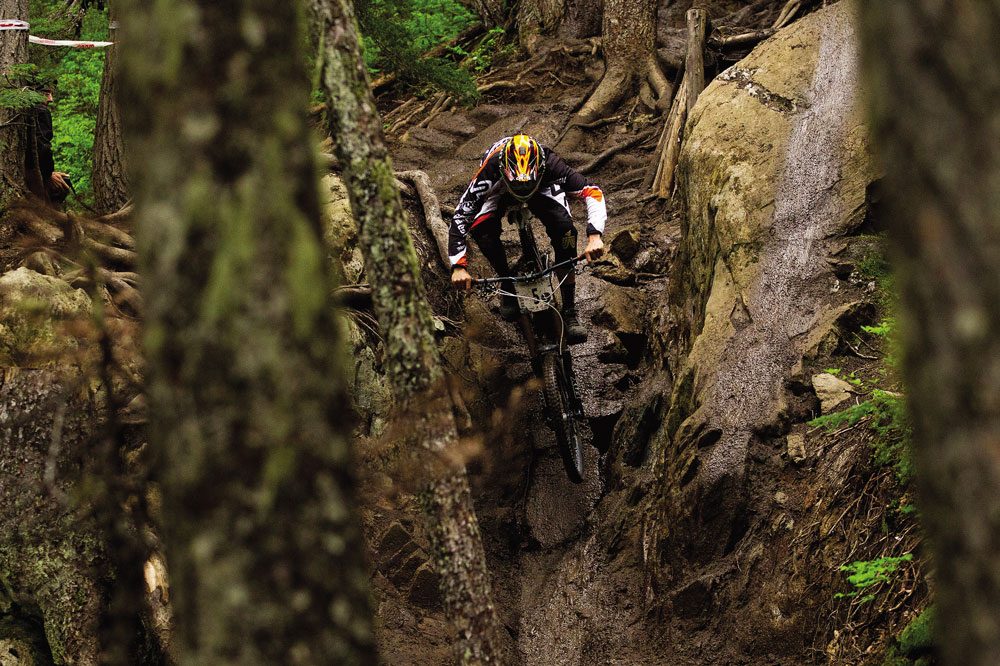
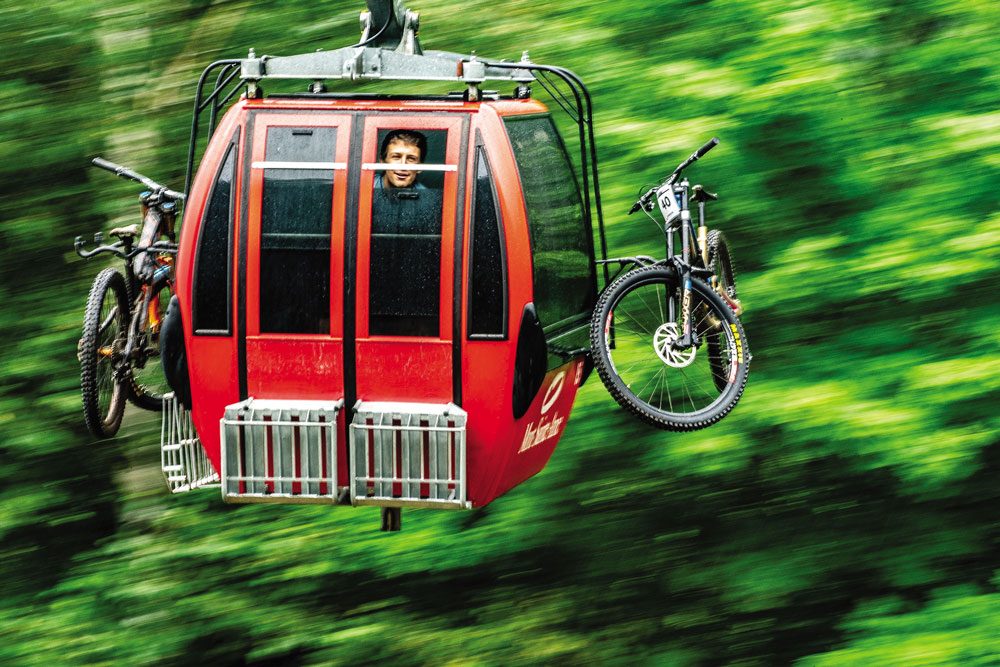
This change of pace seems to suit Sam. The more we talk, the more he seems to relax. He’s reflective on his time as a racer, and the privilege that has been, but also how the reality of being on the road has real downsides. “When you’re with a team, everyone can be in their own bubble and often they don’t really do much. It can actually be quite boring a lot of the time. It’s crazy!”
But he hasn’t always been this way, and he seems to be able to see his own evolution and maturity as racer. “When I was younger, I was more like how I see other younger racers now — it was just racing, racing, racing! Everything had to be absolutely perfect.” He laughs, seeming to sense a bit of irony at what he is saying. “But now I’m old!” I’m a little surprised at just how casual he seems about it all, he just seems to be more realistic. “I just feel like I know what goes into racing — what works and what doesn’t. But actually seeing places differently, that’s what changes when you become a parent. It’s interesting in new ways,” Sam laughs. “Now I’m just looking for the best playgrounds and parks!”
But despite the highs of having his family on the road with him, the challenge any professional athlete faces is that results still matter. So, I asked him if he had achieved what he wanted to this year? “To be honest, my race results weren’t where I wanted them to be. It was pretty frustrating,” Sam admits. “I would get a mechanical or a flat tyre, it was… annoying.” Fort William was one such race. He missed out on qualifying for the main event, a race that is usually one of his favourites and one he performs well on. “I got a flat tyre halfway down…. I missed out on qualifying by half a second.” This was a tough pill to swallow. “I hadn’t been that angry for a long time. We’d driven all this way, I’d been with the family, it was a week of shitty weather, everyone was cooped up in the motorhome, there were midges everywhere, kids couldn’t do anything.” I ask him if having his family there changed how he was able to cope with a disappointing race. “Having the family there changes everything. In the past, if I was at a race and I didn’t do well, I would be thinking, ‘man I wish I was at home’. But, with the family there, it was completely different. It was just like, ‘ah, it doesn’t matter, it’s just part of it’.” This family thing sounds like the ultimate racer’s edge: great support when things are tough and the people you most want to celebrate with when things go well. Like at Mt St Anne, in Canada, where he was back in the top ten: “The high of that whole weekend was really just having the family there with me. It was just the best thing ever.”
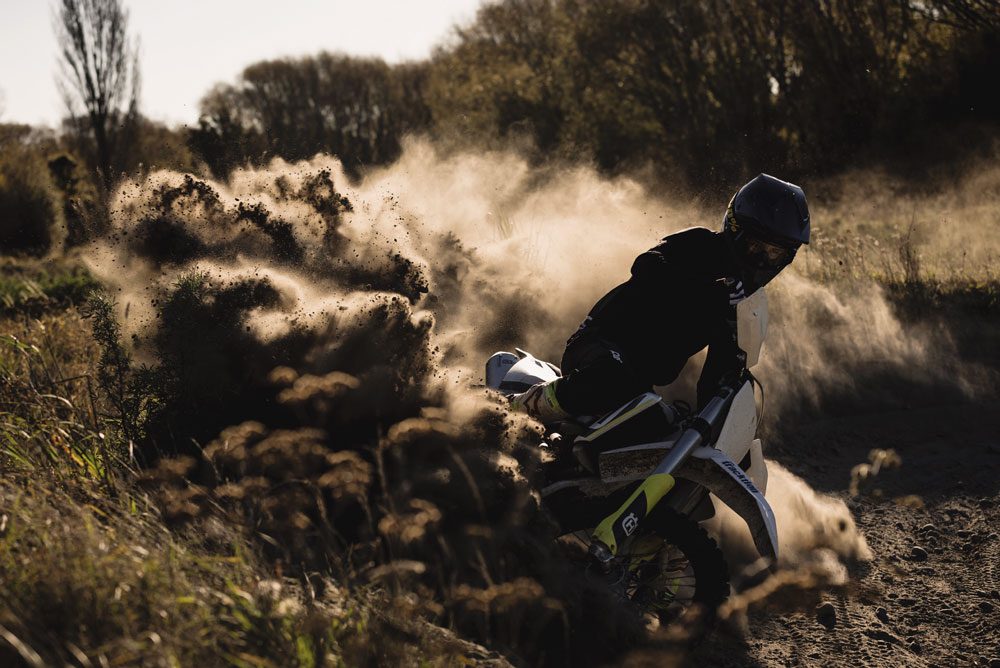
Sam seems to have been able to carve out a career as a racer that is pretty enviable, and the longevity of it all is unique. In fact, just staying healthy in a high risk sport like downhill is a challenge; always balancing risk and reward. “When I was younger, I just wanted to go as fast as I could,” says Sam. “But you figure out pretty quickly that it doesn’t really work well that way. You just can’t ride that way all of the time, ‘cause you just end up crashing.” I ask him if this is, however, just what is required to be at the very top? He agrees. “Those guys [Loic Bruni and Amuary Pierron] just ride at such a high level. The risk is so high. But, if anything happens, when they hit the ground, they’re done, the season’s over. I can ride at that pace too, but it’s risky. You need to be comfortable with it.”
Staying healthy, staying on the bike, and showing up to races year in, year out has helped Sam keep sponsors happy. He has just finished up a contract with Norco, after seven years working together, to explore something new. Now, he’s taking charge of managing his own sponsors and race schedule. This seems like a lot of work to me; I ask him why he’s doing it? “I always wanted to run my own program, and I’m finally getting a chance to do that. I feel like I’m going back to my roots — not like a privateer, I’ll have factory support and I’ll have a good budget — it’s just a simpler operation.” Being on the Norco factory team, Sam has seen it all. It’s big business with big overheads. “In a big team, the team takes everything you make them. The managers get paid because of you; the budget is massive to move a team around. I realised this year, in taking myself on the road, it just doesn’t actually cost that much. But, with a team, you’re spending so much money with hotels, mechanics, managers and different staff. The amount of money that gets blown is unreal. With Norco, about twenty people were involved with the team; mechanics, ex riders, masseuse, other staff, an on-track guy.
They were a Canadian team, so lots of them would go to the race and then fly back to Canada each week. The amount of money that got wasted… I couldn’t believe it. So I just knew I could do something simpler that would still allow me to make it work.”
Sam seems to be confident in his own experience. Confident he’s developed skills he can now use to help navigate the new reality of racing whilst also being a family man. “I’m excited about the direction I’m going in, I really feel I can be in the top 10 for sure. I still believe my riding is at that level. I still feel like I can be on the podium the weekends that the track suits me and I’m feeling good.” But the sponsorship side of things is a steep learning curve. “It was so much easier when I had a manager doing all this! Now it’s way harder. I’m just not used to doing it. I’m so Kiwi! We just don’t say, ‘I need this much money so could you please give it to me?’. We’re more reserved and sort of just end up asking for something, anything. Often, I’ll say a number and sponsors will be come back to me with; ‘we can do more than that — you should really be asking for more!’ So, I’m learning I need to be a bit more cocky really. Sponsors often have more to offer than I think they do. But I like that I’m learning all this.”
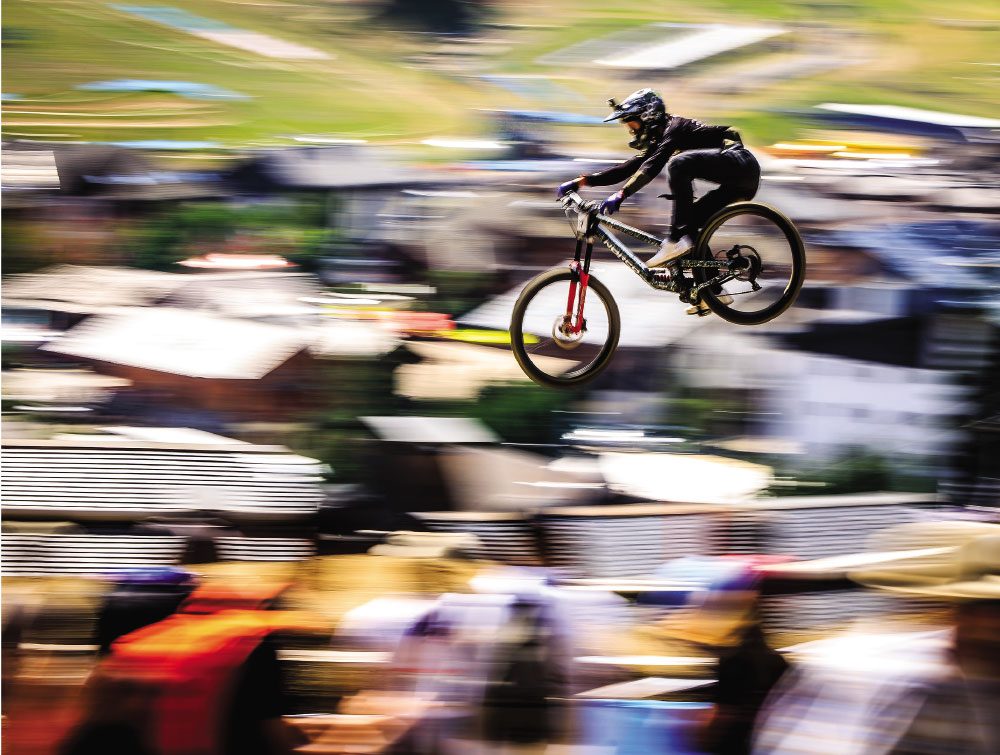
Taking charge of his own program is about creating new opportunities. For example, he’s getting to work directly with the brands he has always wanted to work with, and working with them directly instead of through a manager or a team. “So often I’m hearing the brands say how good it is to be dealing with me directly. They’ll tell me they’ve always wanted to work with me, not this other person or a team I have been associated with. Often, they just want to do a little deal with me directly but they’ve had to negotiate with the whole team. So it’s cool to be able to work more directly with the actual companies and hear this kind of stuff.”
It’s not all plain sailing, though, and even trying to ensure he gets enough support to run the lean operation that he has in mind for next year has challenges. “It’s hard at this time, all the sponsors are tightening up. They’re not selling as much and everyone is overstocked, and everyone’s freaking out, and just taking so long to return calls and emails.” But Sam’s confident it will all come together, and he’ll be back on the circuit next year. He won’t tell me what bike he’s riding just yet, but he’s obviously excited about it. “I’ve pretty much got everything locked in but there are still a couple of things we’re waiting on. In terms of the industry, to be honest, it is probably the worst time to do it.” But he’s enjoying the new challenges of management, and of the conversations he is getting to have. “It’s just great to be able to choose the people I want to work with, and work with the people I like to work with. Everyone that I’m working with is a friend; I’ve worked with them for years and they are fans of me and I feel like I’ll be able to have a long future working with them. I was with Norco for a long time, and a part of me was just thinking, ‘this would be good if it carries on forever’, but in other ways a fresh start is exciting too.”
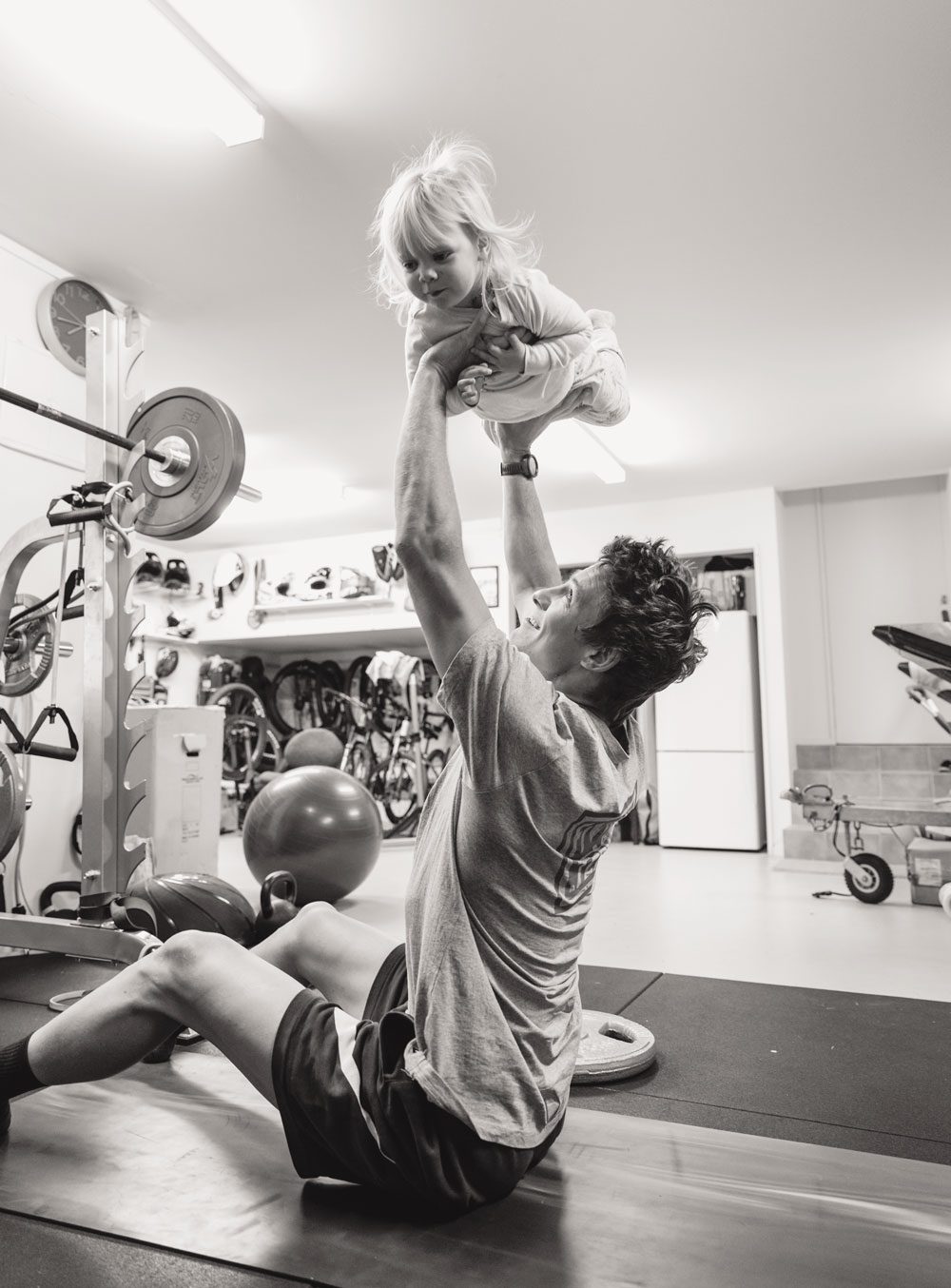
There are other changes on the horizon, too. Not least of all Discovery TV taking over the broadcasting rights to the UCI Mountain Bike World Cup. Something that has a lot of riders, Sam included, curious to see how it all unfolds. It’s a complicated business working with the UCI, and the relationship between the UCI and riders has often been fraught. Plus, there are lots of unknowns. “We don’t even know how many people are going to qualify; how many people they are going to show on TV… It seems like they are trying to suck every cent out of us,” explains Sam, candidly.
On the other hand, Sam has always been a fixture on the Crankworx schedule, something some of the other riders don’t seem to prioritise. The reason is simple; “I’ve just always enjoyed the Crankworx events,” says Sam. “If you go to a UCI World Cup, the organisers don’t really care about you at all. You are the show, but they just aren’t bothered. The Crankworx guys, though — you go to the race, and they do everything for you. They are so supportive of you; they help you out with everything. You email the organiser and ten minutes later you’ve got an answer. They just really take care of the riders.” And the festival-style race schedule appeals to Sam, too. “All the events are so fun. They just pack the events in, too. You do one race one day, and if you do badly in that one race, you’re like, ‘oh well, I’ve got another race tomorrow’. It’s busy, and I like that. At Rotorua this year I had the downhill practice, slalom and pump track all in one day. The people love it. I’ve always told the organisers I’ll race these ‘til I can’t race anymore.”
Right now, however, it’s the off season and, for Sam, this means it’s time off the bike and a different pace of life. “I drop my daughter (Indie) at pre-school, then I take Blake (his son) for a spin in the bike trailer.” Family commitments mean Sam doesn’t have the luxury of training whenever he wants, either, so he’s being more efficient than ever with his time — doing weights in the garage before the children wake up being just one example. But his off season is more than just being off the circuit, its exploring other passions too. “I love hunting and spearfishing and that’s what I love doing when I’m not racing. This time of year I love those things even more than biking… Racing is so intense, but with diving you’ve got to really slow your heart rate right down and be relaxed. Plus, it’s all about just being in another environment. Hunting is the same, you have to be calm.”
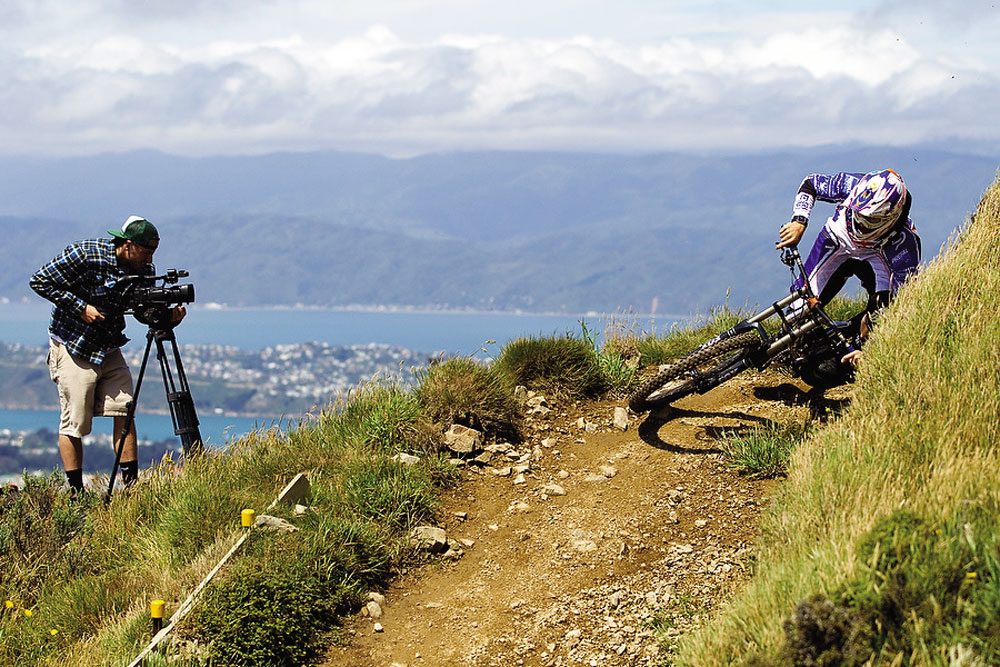
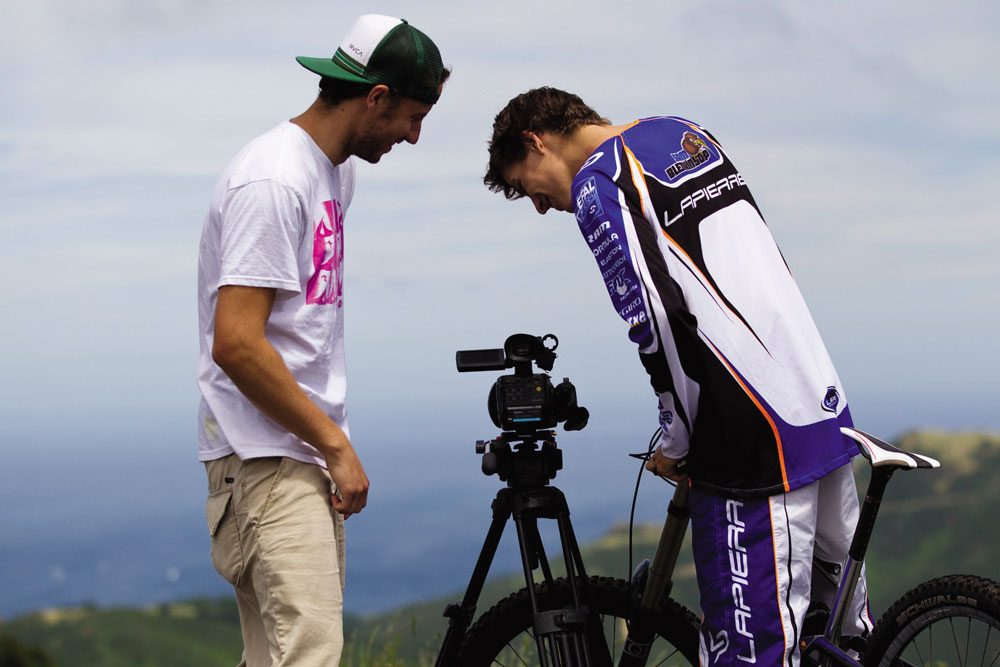
Nineteen years in any career that takes you on the road for six months of every year is a challenge that could wear thin, but it seems to suit Sam just fine. “I can’t stay in one place for too long. I don’t know how people live in one place for so long! After being in Christchurch for seven months, I’m ready to go back to Europe and start racing again. I just – still – love racing. That’s what I realised this year; I just love racing.” I ask him how he’s stayed in the game for so long, and how many other riders he seen come and go, and his answer reminds me of the day I watched him race in Rotorua: “I think it’s just because I enjoy it so much”. We talk about this for a while, and Sam mentions that one thing he’s wondered about is whether his ability to really enjoy life off the bike has helped him enjoy life on the bike even more. “I think, guys who didn’t stay in that long, all they did was ride their bike. I think if you’re just doing that all the time, you’ll get over it. It’s almost like they’ve put too much into it. To be honest, in my off season I hardly ride a bike. I just do other things – hunting, fishing, diving, and spending time with the kids. Just having other things going on aside from racing is so important.”
Sam acknowledges it hasn’t always been this way. Without being arrogant, he seems proud that he’s been able to evolve over the years to approach riding in a more mature way. “When you’re young you need to be on the bike all the time, you need to do that to get the skills and that’s exactly what I did. I just rode my bike every day, did dirt jumps, pushed up to do downhill runs, XC — whatever I could do. I spent every day on my bike, from dawn ‘til dusk. It was all about biking. But now, I know I’ve got those skills, so it’s more about having fun on the bike and enjoying it and not getting burnt out. It’s key to know when to train and when to stop – to avoid getting burnt out with training. It’s a learning thing — and I’m still learning.” He seems genuine. Genuine that he really does still just love riding his bike, but hungry for more too. “I feel like I’ve got a lot more in me. There’s a lot of young kids coming through the local scene, but they don’t seem to be able to beat me yet, so I might as well keep going.”
Might as well.

A year in review: A team manager's perspective - Behind the tape
Words: Cam Cole
Photography: Sven Martin
Winding the clock back, I started in the role of GT team and performance manager back in November 2021. This opportunity emerged while I was attending the 2021 UCI Mountain Bike World Champs in Val Di sole as the stand-in New Zealand team manager while our borders were still virtually closed, in the middle of the Covid pandemic.
The 2022 northern hemisphere summer has been and gone. In fact, it’s now well and truly in the rear view mirror. For me, in a diverse role supporting GT Factory Racing (GTFR), this came with thanks after many long days spent track side, pointing at riding lines scattered with rocks, roots, dust and mud; being holed up in event villages running errands, cooking meals, making coffee, setting up team pit infrastructure only to tear it down again; travel days navigating narrow Scottish roads in long, heavy team vehicles, attempting to peel tyres off rental cars, boarding ferries and flights spanning oceans, countries and continents; and of course, in classic GT Factory Racing style, our fair share of good times. After an opportune catch up with some old mates from my days as a professional rider (that’s a story I will save for later) some ideas were thrown about and a couple of months later I was signed on to the team. Soon enough, I was buried in online meetings, planning the 2022 racing season, and numerous spreadsheets as the management staff ground through all of the leg work that would allow the team to operate during the 2022 racing season.
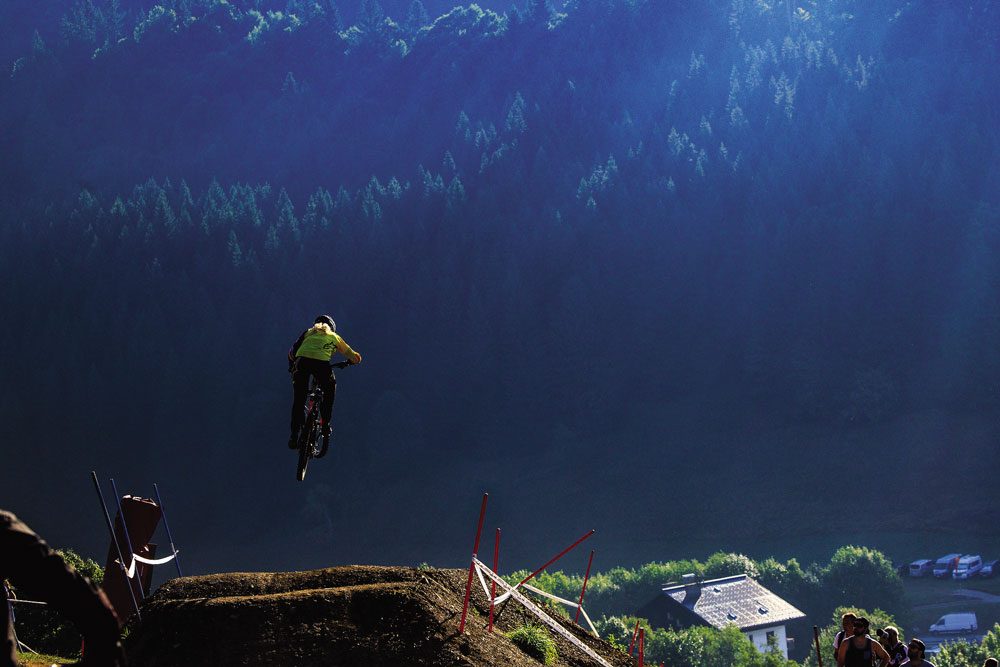
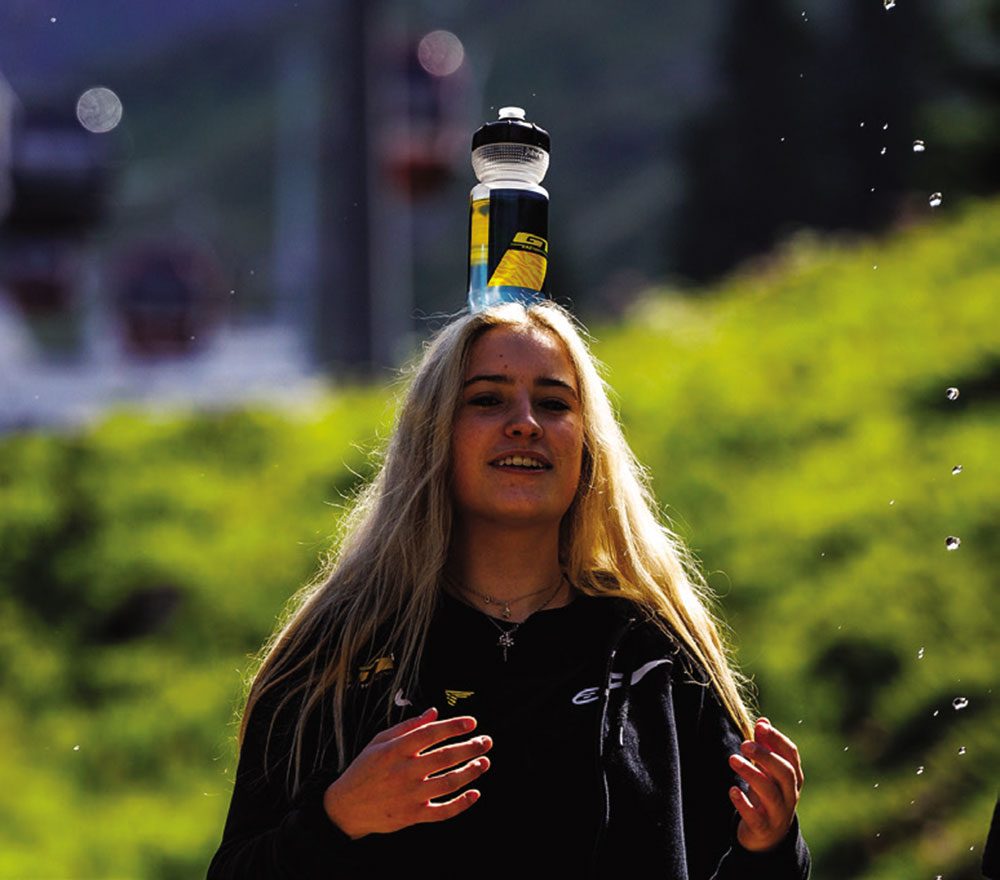
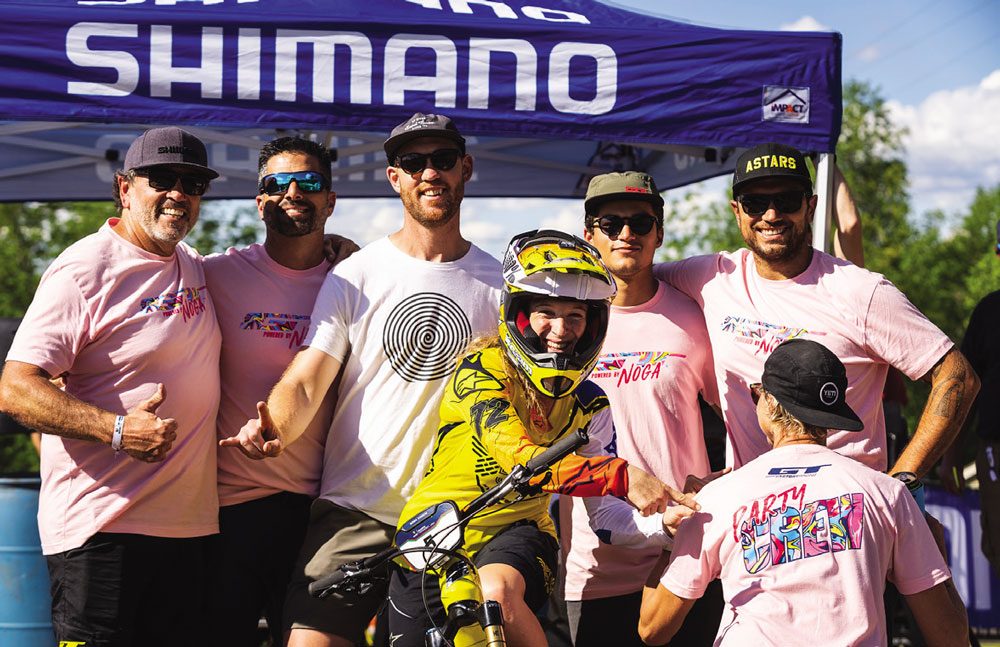
Team and Performance Manager — an ever-changing role
The role I’ve taken on with GTFR is a diverse one. It’s a role that evolves in its nature depending on the time of year. In the off season months, it looks and feels like any administrative role. Duties include event planning: from building out the team calendar for the season, booking flights and accommodation, all the way through to working closely with the chef team that supports us at the World Cups. On the performance side, I am frequently in contact with the riders so that the team is updated and aware of their off season progress and so we can keep them updated on any news coming from GT HQ or team partners. On this aspect of the role, my experience as a former professional rider is valuable in ensuring the riders are supported and that the team can assist them in their professional and athletic development. Ultimately though, the athletes on the team are highly motivated and require only guidance as we work together to refine their approach to top level international racing. On the marketing and business side there are general communications aspects of the role, to ensure info is flowing in all directions between the team, several of the GT business functions and GTFR team partners. In addition, there is budgeting and budget tracking. During the off season months, I work closely with Steve Spencer on the sports marketing side at GT HQ and Mark Maurissen, who works on the product and tech side for the team, taking care of all product ordering and allocations for the team as well as supporting the logistics planning. During the season, Mark is both a mechanic and logistics operations support. Additional staff include Rich Simpson, based in the UK, Matteo Nati, who divides his time between Italy and New Zealand, and our two French media mates, Louis and Jules. During the racing season, my job morphs into more of an operations role as the season plan rolls out week by week, race by race. The hours stack up quickly with early mornings in the pits helping the mechanics set up for the day, and generally end late with planning for the next day and site clean-up. Energy is what you need for this part of the job, especially since we are a relatively small factory team and one of only a few that compete in both the Downhill World Cup and Enduro World Series (EWS). For most of the Downhill World Cups in 2022 we were four to five staff looking after four riders, compared to the likes of Commencal Muc-off who have upwards of 10 staff for four to five riders. My days at the events are stacked with general race and team admin, such as assisting with the maintenance of team equipment and supplementary grocery shopping. On the performance side, it becomes more intensive at the events, ensuring riders have what they need to do their job well. The on-track support for the riders is a big part of it when I’m at the races. For DH that means standing track side sighting lines, coaching or suggesting racing tactics and strategies. Sometimes communicating with mechanics about bike set up is required. During the peak of the season sometimes all we can do is react. Dealing with cancelled flights (thanks Easy Jet), adjusting race plans as the inevitable injuries pop up and just generally rolling with the punches that are thrown at you daily when you are managing a dozen people traveling and racing all over the world is par for the course.
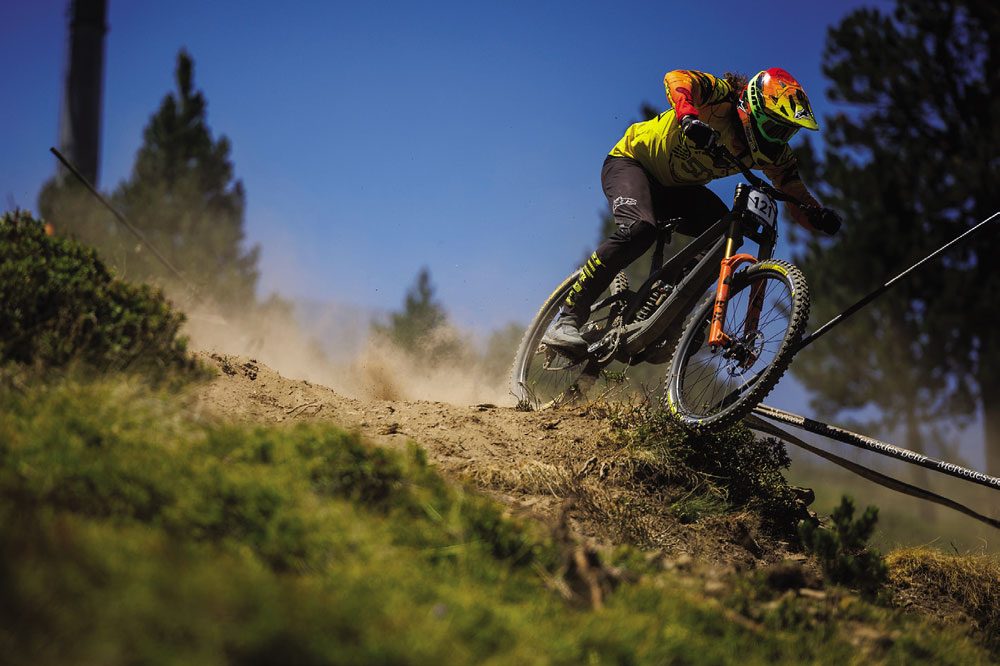
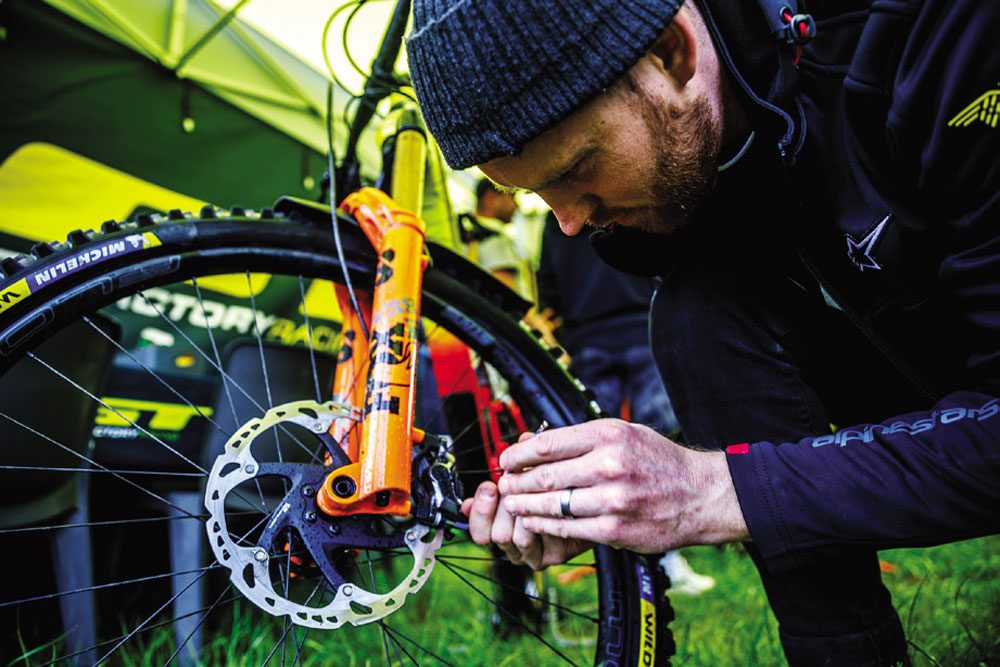
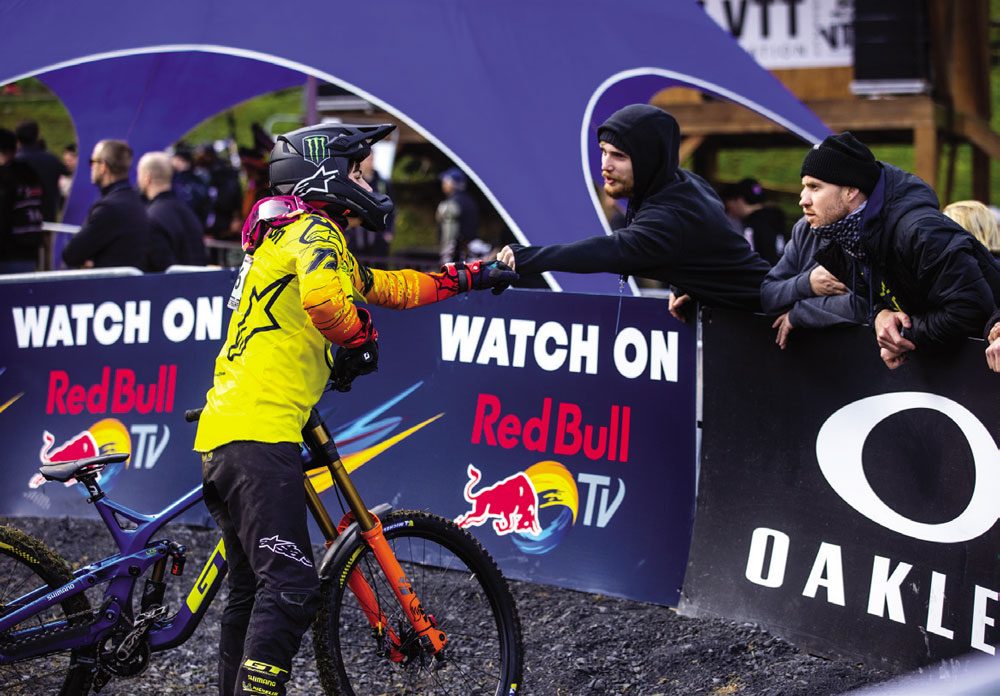
The Racing Season
Soon enough, the 2022 racing season was underway, and we were on the ground putting plans into action. We kicked things off in early March ’22 with a preseason block of training and racing in bitterly cold central southern France, before heading further south into Portugal in search of a little bit of sunshine to boost the mood prior to the unusually early start to the Downhill World Cup season, in Lourdes. At this point, we were still missing Jess Blewitt from the team, due to her delayed return to international racing after taking the entire New Zealand summer off to ensure full recovery from the injuries she sustained at the 2021 World Cup finals in Snowshoe. Nevertheless, we still had a strong group of riders in Ethan Craik, Ryan Pinkerton and, of course, none other than Wyn Masters. Although highlights of this first block of racing included all riders making the podium at a Portugal Cup downhill race, and sucking on juicy Portuguese oranges, the Lourdes World Cup was a reality check. This race showed us the brutal nature of World Cup Downhill racing both in terms of the course and quality of the athletes. For round two, in Fort William, we would have all of our riders on an updated version of GT’s downhill bike. This, along with a revised focus after Round 1 and having Jess back on board, was a huge boost for the team and paved the way for several substantial steps in a positive direction. Despite Jess picking up a small fracture in her collar bone, her pace was on target for a solid result and Ethan was riding on pace for a top 10 – 15 result until he unluckily misjudged a heavily degrading corner and fell victim to the wet and windy Scottish conditions on finals day. The Enduro World Series season kicked off on the first weekend of June, two weekends after the Fort William Downhill World Cup, so after a short breather I joined the Enduro team in Innerleithen, Scotland. Although we didn’t come away with the comfort of knowing our outright race pace matched that of our competitors, we did maintain a positive and ‘can do’ approach to picking up the pace up throughout the season. Sometimes, things just don’t go your way in racing, but the only way forward is to reflect on a situation and truthfully answer any questions that the facts present you with, in any situation you find yourself in. Having been a professional international racer myself, from 2006 – 2014, I understand the pressures and demands the riders and teams face. I have had many successes at the top level of the sport. Many of those have come after times of truthful self-reflection and facing the ‘no blame’ facts presented to me. These were often that I was not prepared to race at the highest level due to physical, mental or emotional shortcomings, or that I was just not executing my races in a free and relaxed state. This was true for the Enduro team. There was no flow happening both in and out of the events. Things were just not happening as easily as they should have been for the quality of the team we were on paper. The struggle continued into rounds 2 and 3 of the World Series, in Slovenia and Italy. Noga Korem looked like she was riding well on track, but was just not feeling completely confident at full race pace. Katy Winton was in a similar position, but was feeling like there was something deeper at play holding her back. After fighting through an entire season as a privateer in 2021, her efforts to get to this point in mid-2022 – and back on a factory team – were becoming too much to sustain the detail-oriented approach that is required to maintain the level of performance Katy and the team expected. So Katy bravely made the decision to suspend her racing season so that she could take some time to reflect and dig into what factors were holding her back. With the first major travel and racing blocks of 2022 under our belt at GT Factory Racing, we had forward momentum on our side regardless of the positive or negative nature of the situation. I personally find it better to at least know where you stand and from that point feel equipped with the facts so you can address the situation as it presents. After the Val di Fassa EWS round there was a week break before we faced nine races in nine weeks through July and August, across both the EWS and World Cup Downhill series. This included the Lenzerheide, Andorra, Snowshoe, Mont Sainte Anne and Val di Sole World Cups, and the North America triple of EWS races, as well as World Championships in Les Gets, France. Highlights from this intense string of racing included Jess’s first Elite Women’s World Cup DH podium in Andorra, which she promptly followed up two races later with another fourth place. Jess rounded out the season strongly by achieving another podium place finish at the World Cup finals in Val di Sole, on the most technically and physically demanding course of the year. Ethan, in his first year as an elite male, also achieved a career first when he placed seventh in his first elite Top 10 at the Mont Saint Anne World Cup, and was showing serious speed at the World Champs until a crash on the morning of race day slowed him down substantially. Finally, Ryan Pinkerton rode to a solid second place at the World Cup finals, topping off his first year in the junior ranks. But, if you think it was all champagne showers for the team, I should mention a challenging travel day from Washington Dulles airport after the Snowshoe World Cup, to Mont Sainte Anne for the following race. The day started early with two flights from Dulles to Quebec, via Toronto. When we arrived in Quebec we found the rental car company had cancelled our reservation and permanently shut its doors, but had decided they didn’t need to let us know about it. Since many of the World Cup Downhill and Cross Country teams were flying into Quebec City airport at that time, there was no chance of any rental stock being available that would allow us to move seven people around Quebec and Vermont for the following two weeks. In the end, we decided to fight that fight another day. After taking taxis to Mont Saint Anne, we sat at one of a few local restaurants and ordered dinner – which took forever to reach the table. After a late finish to the meal, we decided it was time to check into the two apartments I had booked for the week. The check in process ended around midnight with Mark breaking down a door to one of the apartments as the digital panel controlling the lock had failed. With that, you start to understand the mental approach and skillset that is required when being part of a team of 12 people who for five months of the year are constantly on the move and not always in the same place, let alone the same time zones. By mid-September, there were just the final two EWS races remaining in the 2022 international season for the team. For these last events we were still missing Katy, but through her time spent away from the races, reflecting, she was beginning to see the early steps required to return to racing at the top level. With the support of GTFR and her immediate support team, she was regaining the fire and energy it takes to ride a bike fast and to one’s potential. In terms of outright results, Noga finished the season very strongly by placing fourth at both the Crans Montana and Loudenvielle races, and was once again having fun at the races and on her bike. This was a relief for her and the team. Ultimately, I do this because I enjoy the process of learning and striving for performance but what really makes it so good is seeing the riders expand their personal horizons and have fun racing their bikes.
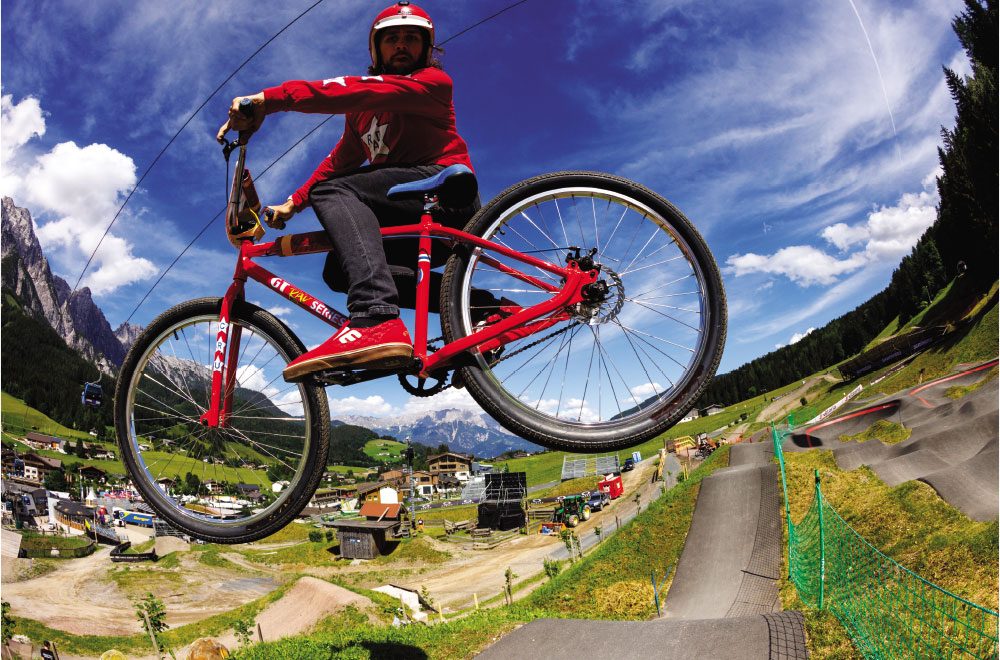
Reflections
Since the end of the season, after the final EWS race in Loudenvielle, we have had the chance to back off the gas, unwind and spend some time recovering physically and mentally. However, for those at the sharp end of this business, this time of the year is utilised as a chance to reflect on the past season while it is still fresh in the mind. While it is a good time of year to catch up on any night time reading that is missed during the season, it is also a chance to take notes and brainstorm new ways of doing things, that could be implemented in order to improve performance. Since the end of the 2022 season, we have already overcome some of the challenges that presented themselves over the year. But, we have many more ahead of us. For me, this is the lure of being part of a team competing in the highest level of competition, in any context. No matter what the result, there is always more to be improved on. Competing in an environment such as this forces teams through a process and journey of improvement. You don’t have a choice if you want to remain competitive in this game. Looking ahead to 2023, it’s going to be another busy year. Although there are still many months until the Downhill season kicks off, the first EWS races take place at the end of March, in Tasmania. So, for me, it’s swiftly back to the usual off-season duties.
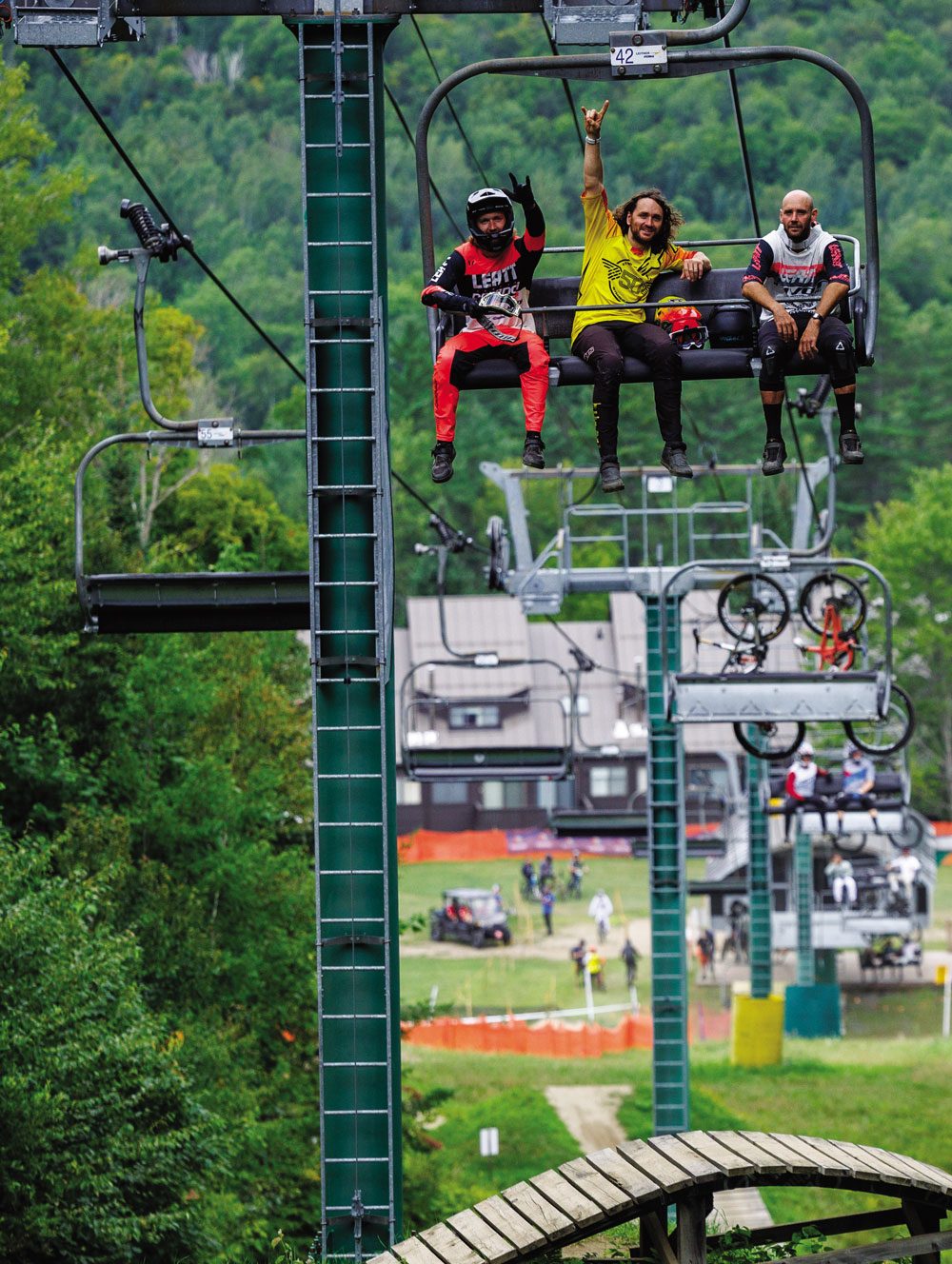
ENERGY IS WHAT YOU NEED FOR THIS PART OF THE JOB, ESPECIALLY SINCE WE ARE A RELATIVELY SMALL FACTORY TEAM AND ONE OF ONLY A FEW THAT COMPETE IN BOTH THE DOWNHILL WORLD CUP AND ENDURO WORLD SERIES (EWS).
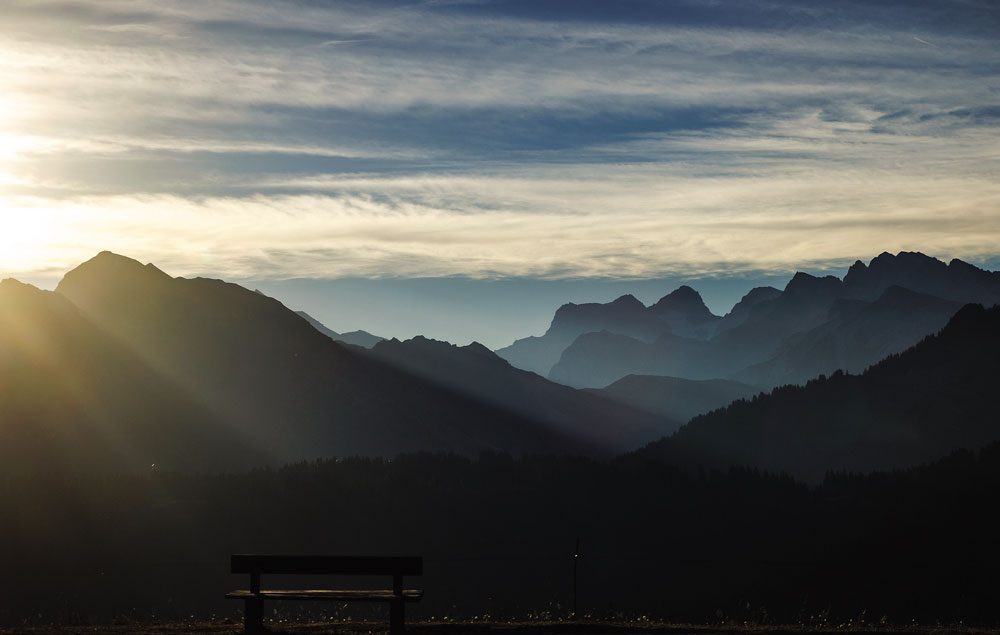
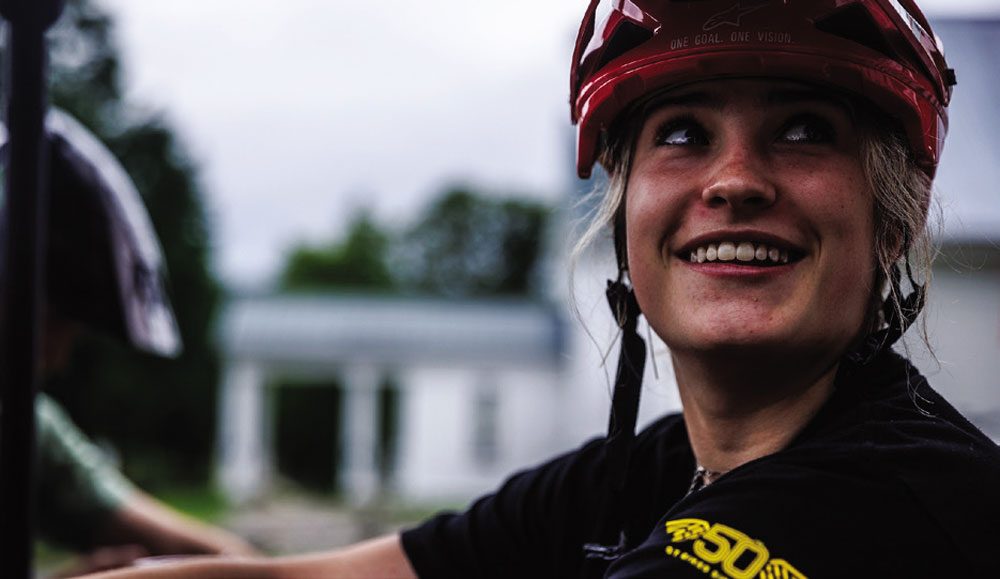
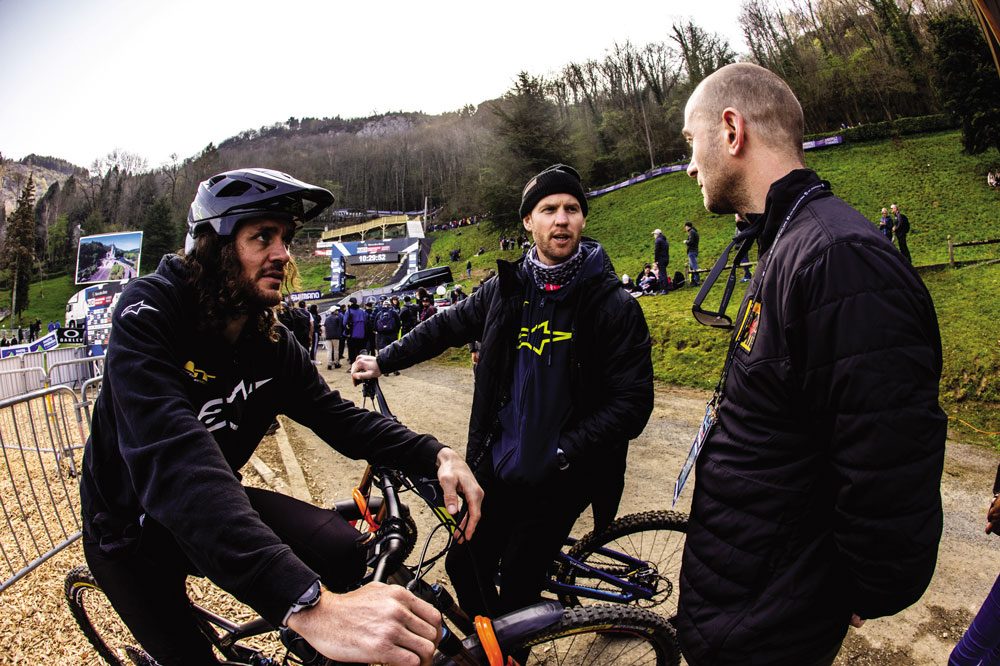
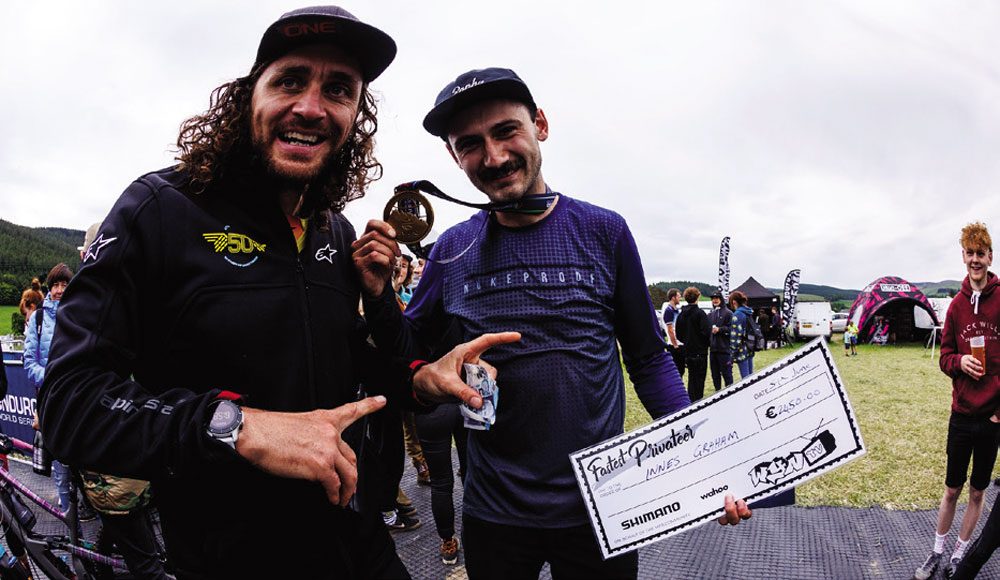
I PERSONALLY FIND IT BETTER TO AT LEAST KNOW WHERE YOU STAND AND FROM THAT POINT FEEL EQUIPPED WITH THE FACTS SO YOU CAN ADDRESS THE SITUATION AS IT PRESENTS.
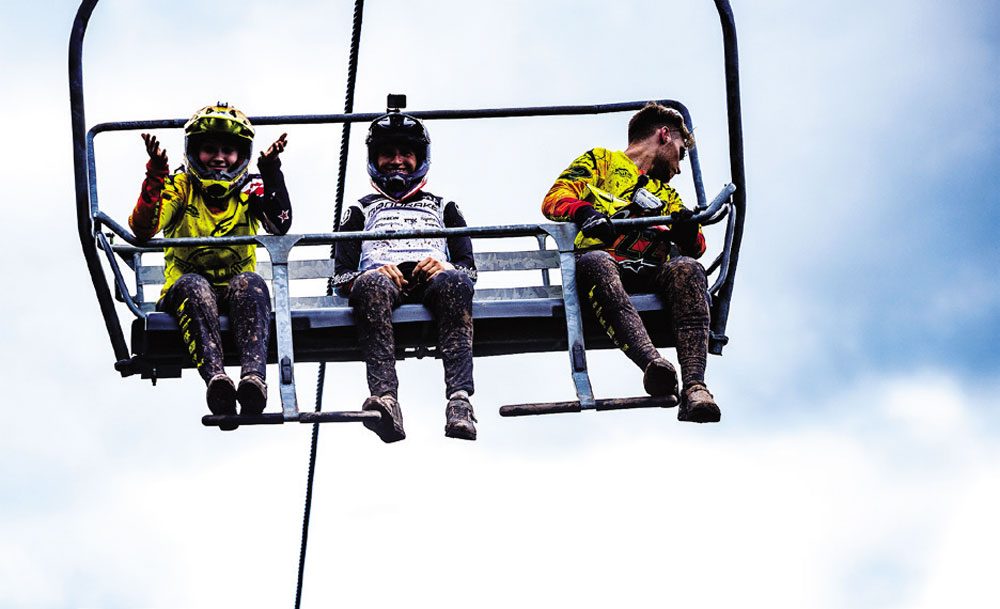
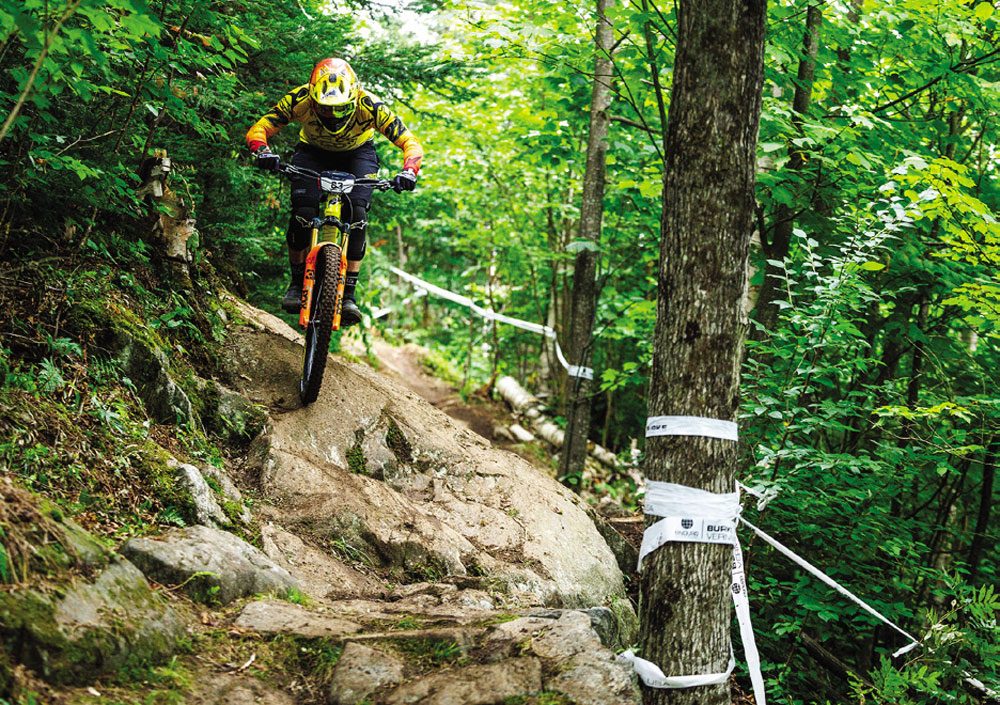
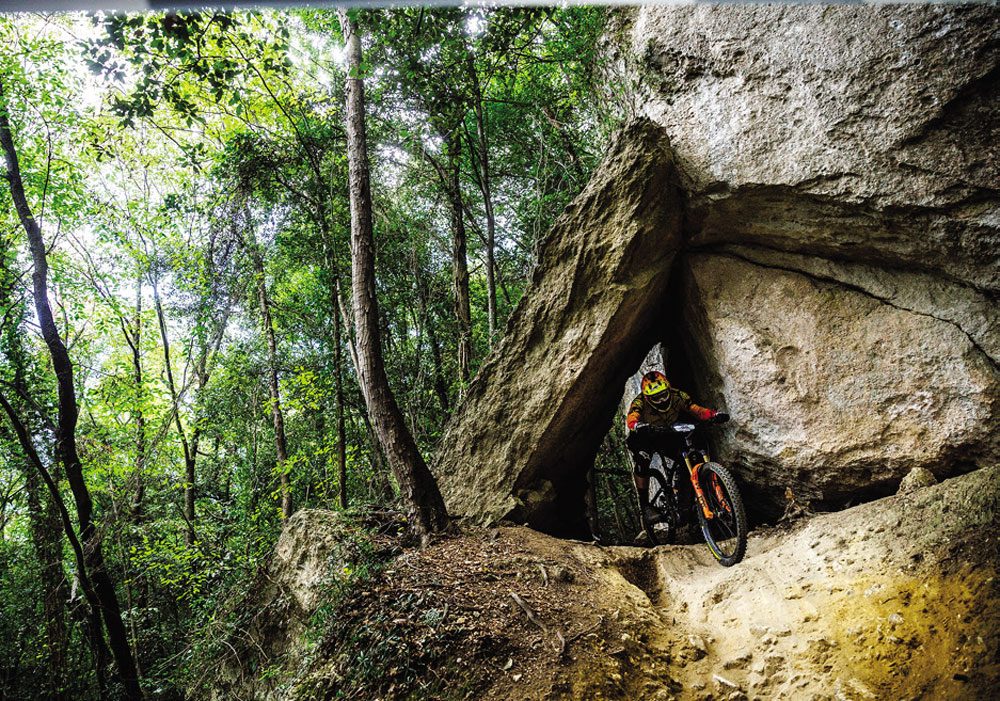
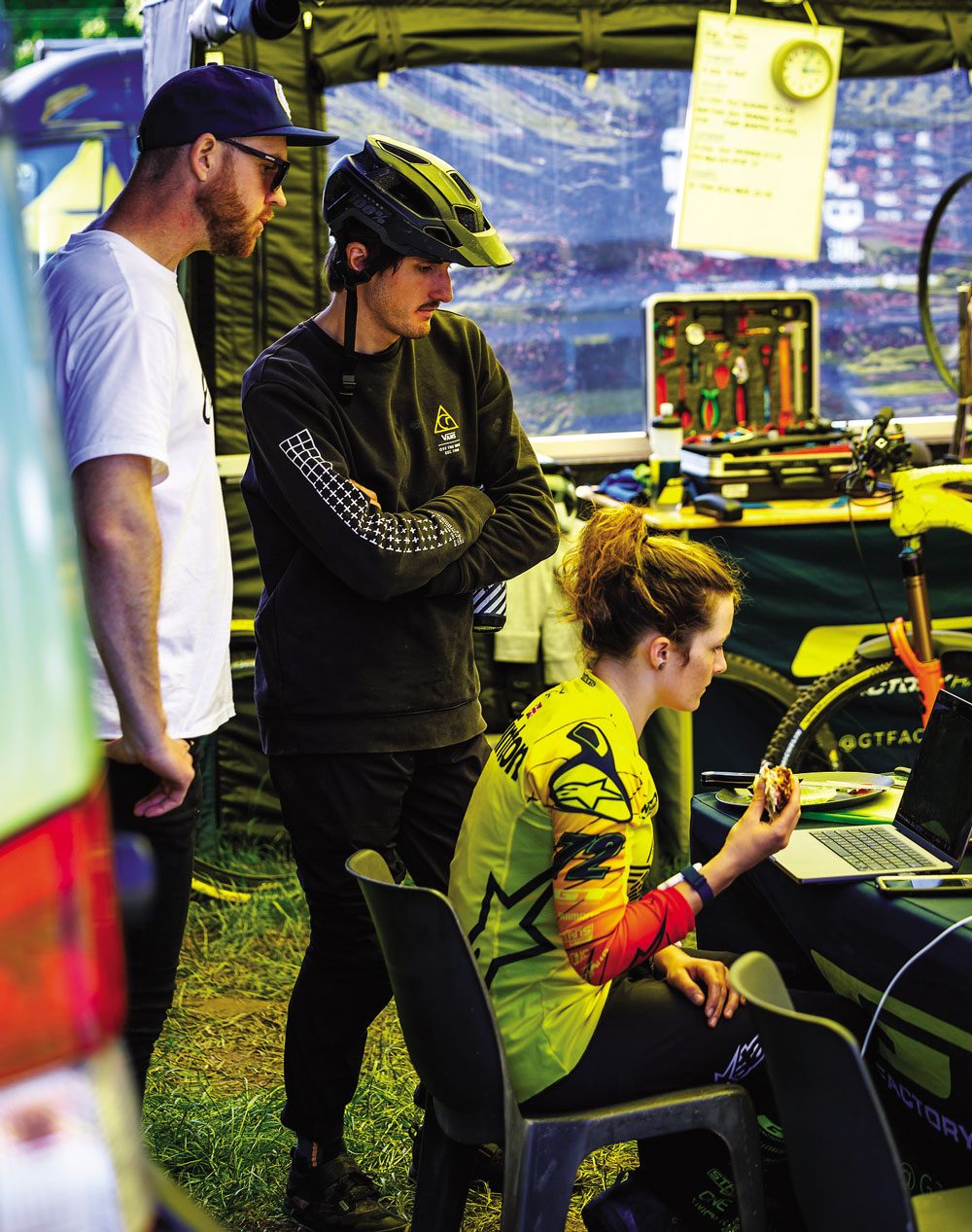
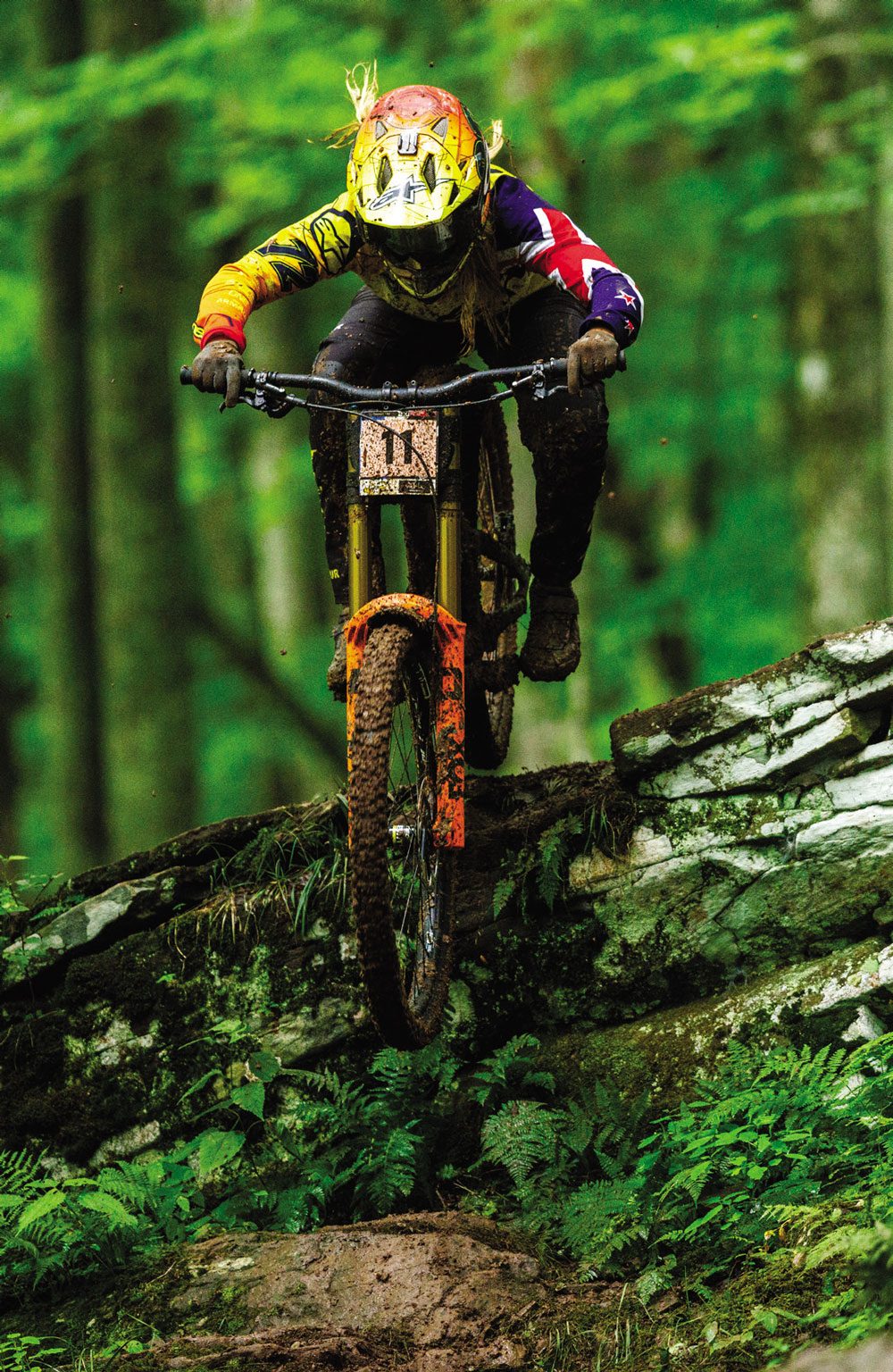
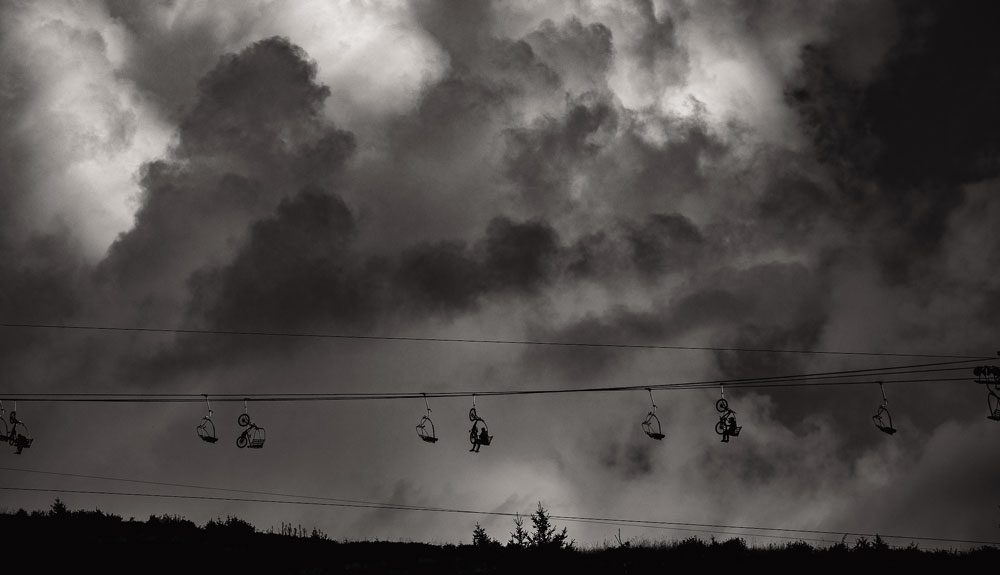
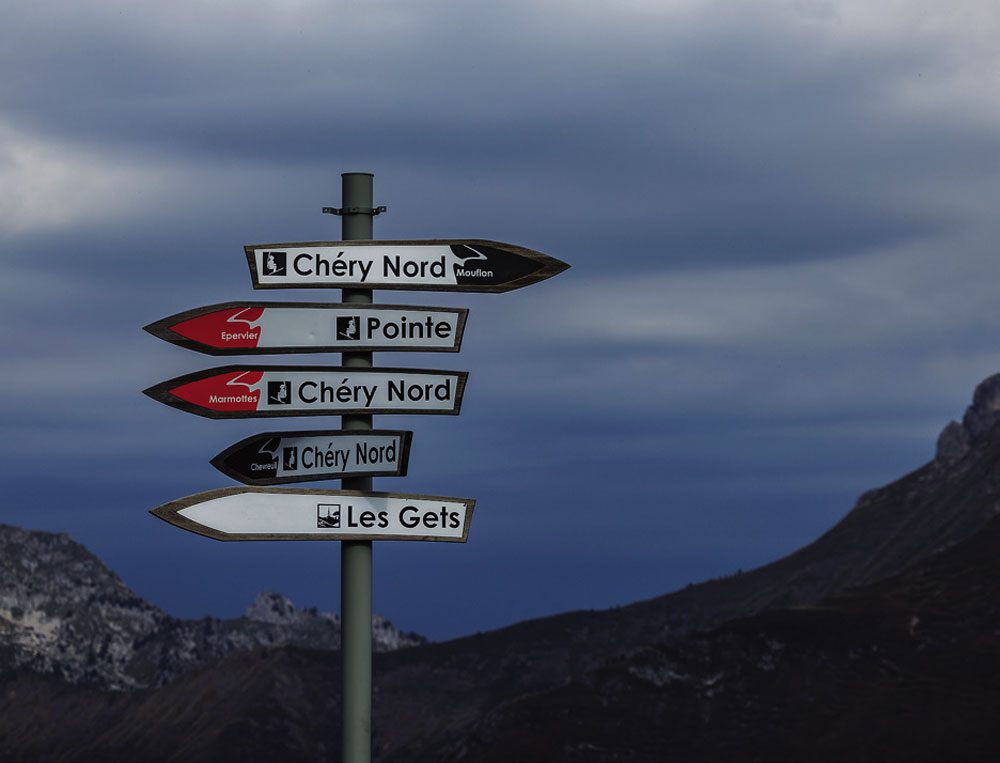
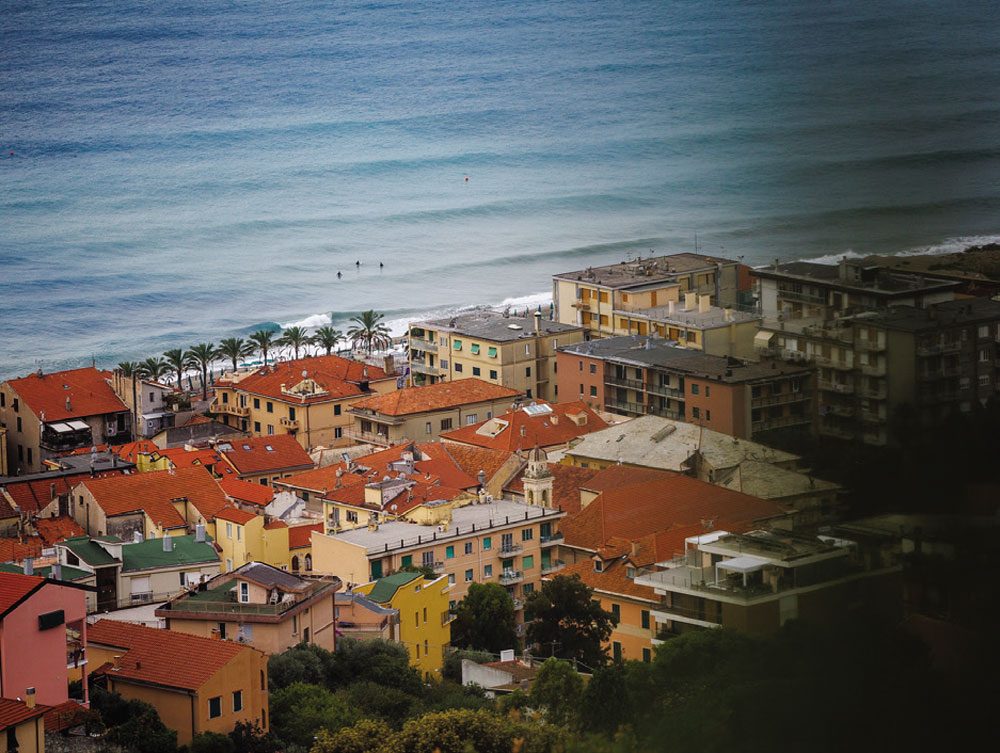
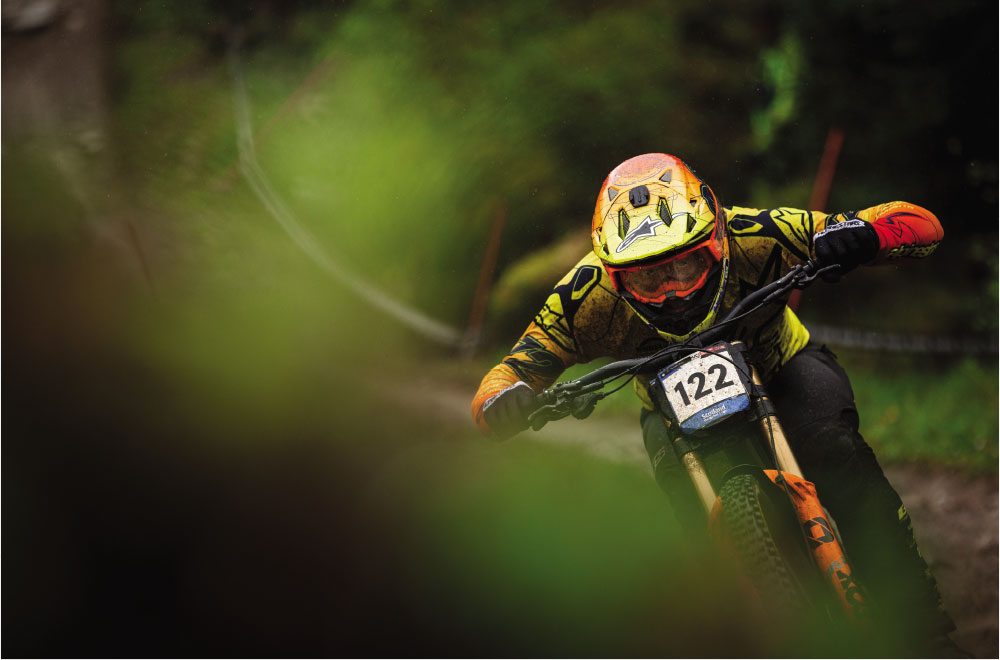

The two sides of progression
It’s a topic that’s headlining wherever you look in the mountain bike industry at the moment: women mountain bikers are absolutely killing it and pushing the boundaries like they’ve never been pushed before, across all disciplines. New events are popping up all over the world specifically for women, and women free riders can actually make a living doing the sport they love, with the support of the industry and their male counterparts behind them. Finally, the world is beginning to recognise what the women of mountain biking can do — and boy, is it impressive! Women are finally getting the respect they deserve, after all these years of resistance from the industry.
But what exactly is progression? The dictionary defines it as: the process of developing or moving gradually towards a more advanced state.
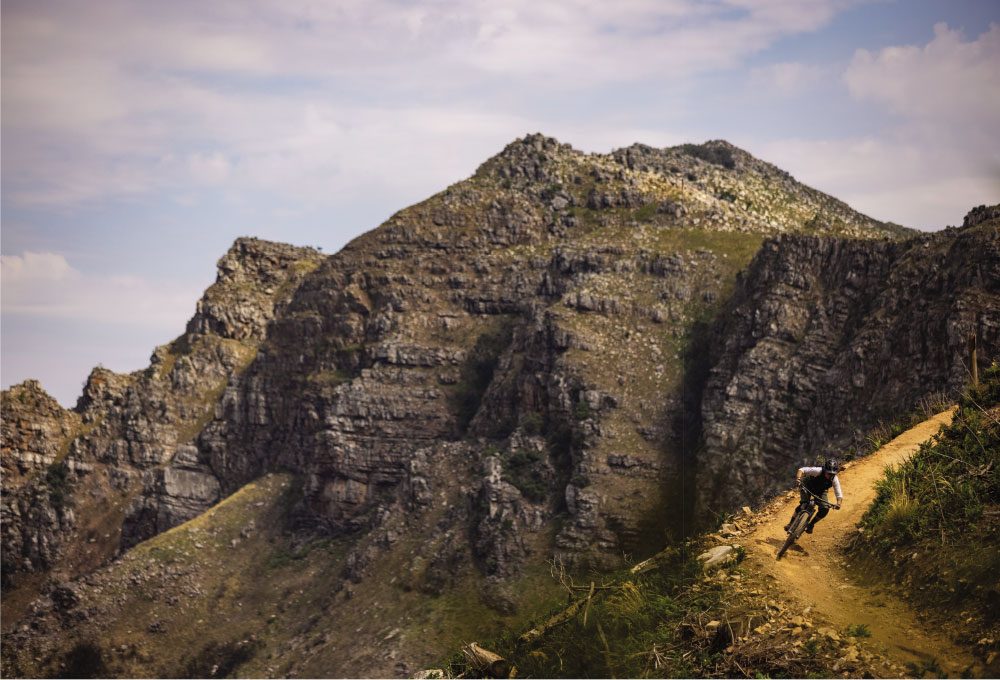
This can be a good or a bad thing, right? Good in terms of career advancement and development; bad when it comes to the medical definition, where something is spreading through the body and becoming progressively worse. Progression has a different meaning to everyone — thank goodness. It should be whatever you want it to be, not what you think it should be.
With all the progression happening around us, and the growing awareness around what women mountain bikers are capable of — via our social media feeds and channels — you feel inspired and motivated. But there is also a side to this progression that can end up making people feel worthless about their biking skills and abilities, and their own personal level of progression. Sadly, social media can have the effect of making you feel kind of shitty about the stuff that you aren’t doing — or cannot do — especially when it seems like everyone else and their mothers can, and are. You end up scrolling and scrolling and feeling worse about yourself and your own abilities, to the point of it effecting your mental state, which can lead to depression and self-doubt.
Of course, it’s not all negative, it is very inspiring too. But, sometimes, it can almost be too inspiring. This can lead to situations where someone doesn’t quite have the skills or capabilities just yet, but they don’t care — instead, they just close their eyes and send it for their latest IG reel! Just YOLO-ing like this can often lead to a disastrous outcome and some nasty injuries. This sort of progression can end up discouraging other women from even entering the sport. They don’t want to give mountain biking a try, because they deem it too extreme, too gnarly, too masculine. We have to be careful to not just portray only this side of our sport – as it’s really a very small percentage of women pushing the limits to the max like that. We should be portraying other sides of our sport, too, and encouraging more women to just get out on a bike and give it a go.
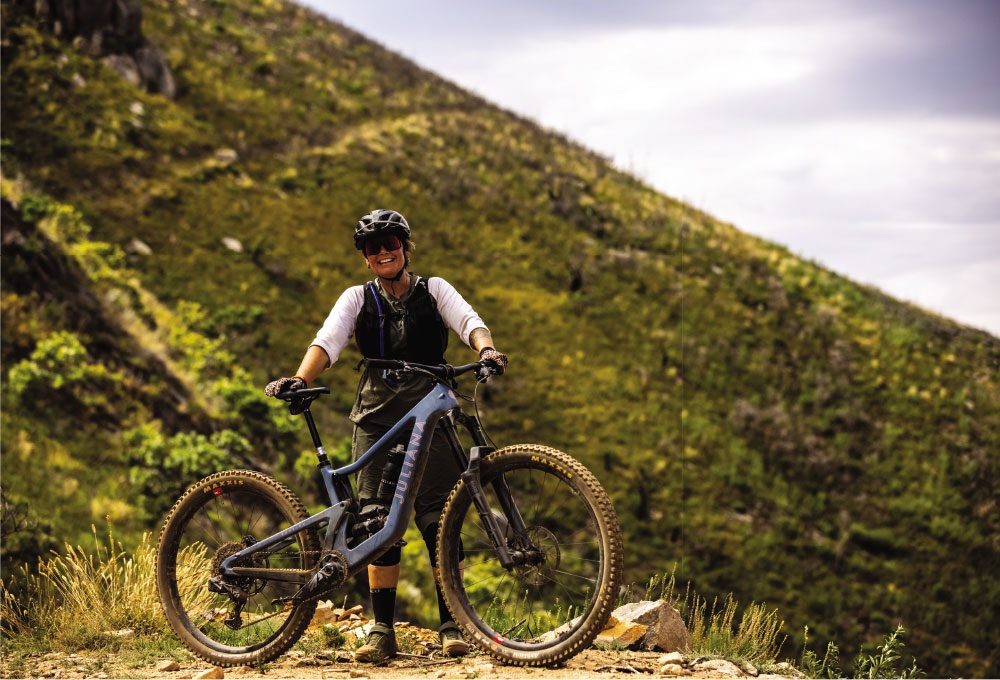
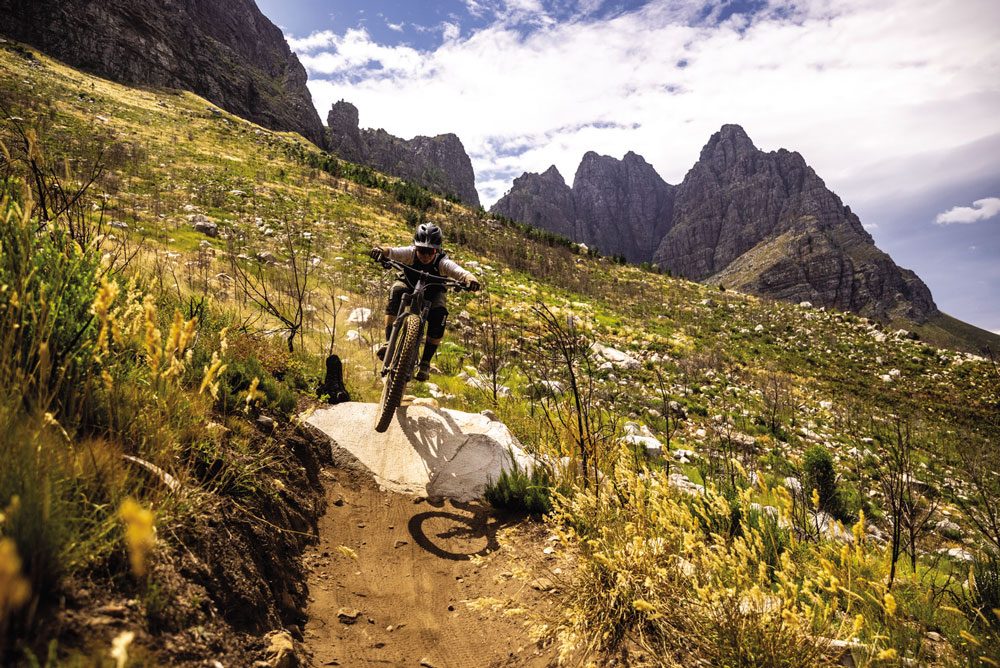
If I can wheelie, I’ll get so many followers who think I’m cool. If I land this backflip, people will love and respect me more, my followers will skyrocket and sponsors will value me! My life will change and I’ll be popular! This sort of thinking ultimately leads to additional pressure, self-doubt, fear of failure, and fear of what people might think of you — to the point where you can no longer just enjoy the simple act of riding your bicycle. My point is, that in today’s society where you’re constantly progressing and everything has to be bigger, better, faster, further, it’s ok if you choose not to do that. It’s ok if you just like to head out the door and go for a pedal in nature to get some fresh air, to notice the changes in seasons, to stop and watch how the light catches the water, to listen to the birds, to stop at the top of the climb, lie on your back and feel the wind sweeping over your sweaty body while watching the long grasses dance in the breeze. This is also a form of progression. This is the kind of progression we need in our busy lives, where the focus is always on achievement of some sort. We need this to find balance, to slow down and recharge our sympathetic nervous system, to calm our minds and find some peace amongst all the everyday chaos. Once we can achieve this, progression will follow — if that is your end goal. They go hand in hand and work together. Homeostasis. Yin and Yang. You cannot have one without the other.
A lot of athletes across all disciplines are facing burnout this season. They’re mentally struggling with their careers or having performance anxiety; not performing as they would like to or how people think they should be. There is this fear of not being able to progress and, because of social media, they feel like they are letting people down. The truth is that, for the most part, people don’t really care, it is only you that thinks everyone cares, or notices or will judge you for not winning races anymore. We tend to create these scenarios in our heads, but at the end of the day it is only you that matters and how you feel about your riding or your progression or your social media fans. It has become such an issue, that athletes lose their love for biking, the fire and passion no longer there because they’ve been pushing and pushing and pushing – possibly without seeing the end results they were hoping for.
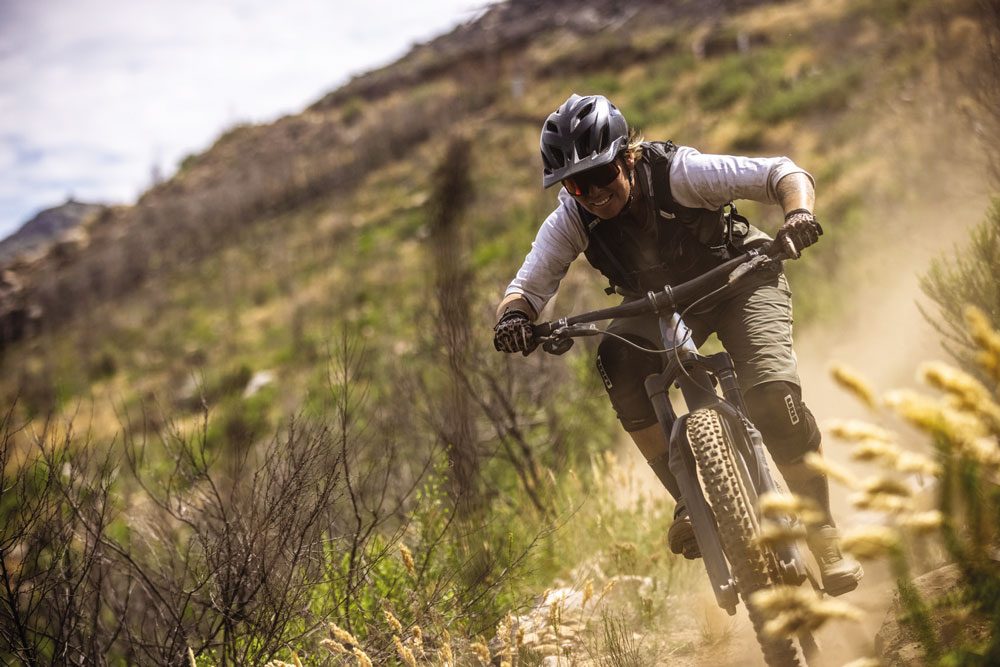
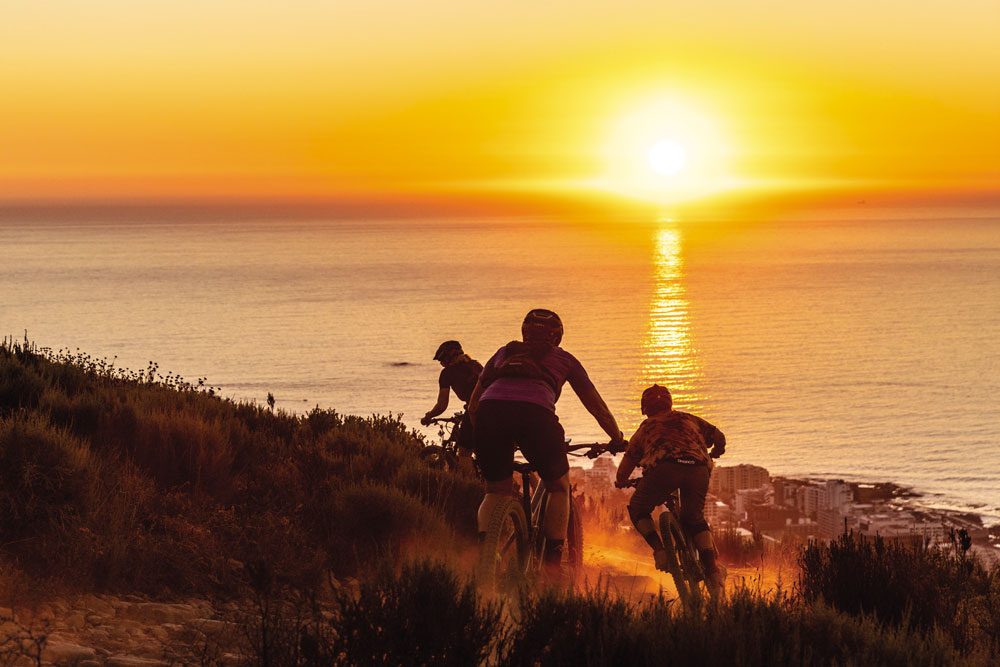
Once that happens, disappointment hits and spirals out of control into burnout and depression and, not knowing what to do with all of these emotions, they withdraw to figure out the next steps. Usually, this is when you have to go back to the very basics of riding a bike, like a kid. You have to just get back out there and start making circles with your legs. It’s that simple. Leave the devices at home, switch off the Garmin, leave the music, just get outside into nature and feel the wind in your face, listen to the sounds of the forest, feel the sense of freedom only a bike can instill, look around and be thankful that this is what it is all about. It doesn’t have to get more complicated than that. We make things complicated for ourselves. We push, we want constant progression and achievement, but it can also just be this simple act of exploring your backyard on a bicycle, without any pressure to perform or achieve.
I’ve reached a stage in my life where I can appreciate the unbelievable progression of women’s mountain biking. I admire those pushing the limits of the sport; the new generation of fearless girls and women are so amazing to see and I am their biggest cheerleader. But, I don’t want to do backflips, I can’t wheelie and I have no desire to hit massive jumps. Maybe, a few years ago, this would have bothered me but, for now, I’m happy to get outside and ride my bikes — all my bikes: mountain, road, gravel — because that is what makes me feel alive and happy. My riding is better than it has ever been so, to me, this is progression. I don’t have a crazy number of followers, because I’m not pushing the boundaries, I’m not making cool reels or doing sponsored posts or breaking any records. Instead, I’m outside riding my bike, appreciating the beauty of nature, exploring big mountains, finding solitude amongst the craziness of this world, and appreciating the amazing life and experiences bicycles have given me over the years. Does this mean I have no more value to my sponsors? I would hope not. I would hope that it would inspire other women to get out on their bikes and go on some adventures — explore their backyards, meet some interesting folks along the way, stop for coffee and cake, and find the pure happiness that riding a bike brings. Life is too short to focus only on progression, we have to enjoy the process and progression will follow in a natural way. So, get out there! Stop comparing yourself to what others are doing on social media and find your own progression. You’ll be amazed at what you’ll experience along the way.
Peace out,
Anka
x
Words: Anka Martin
Photography: Sven Martin


